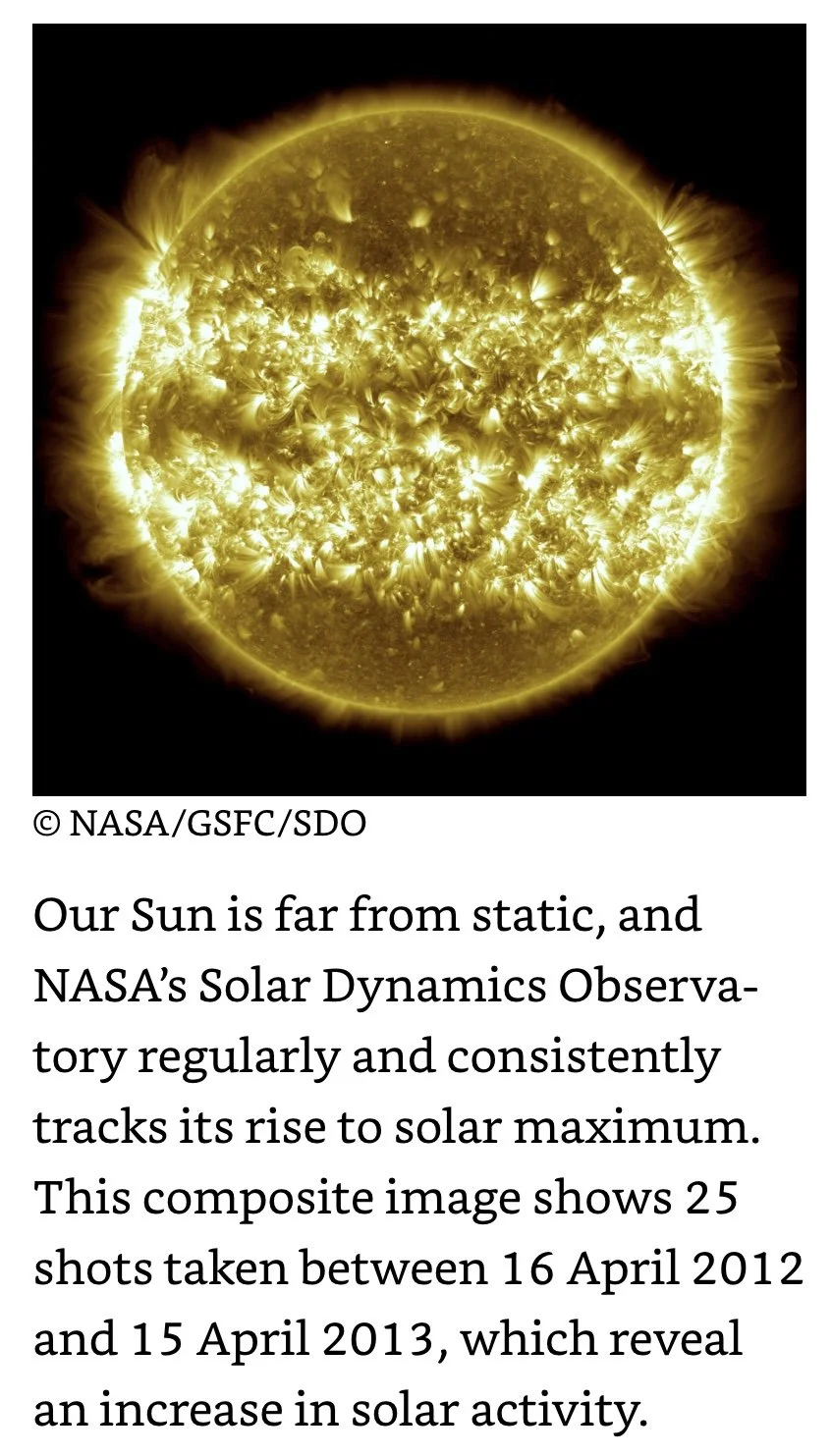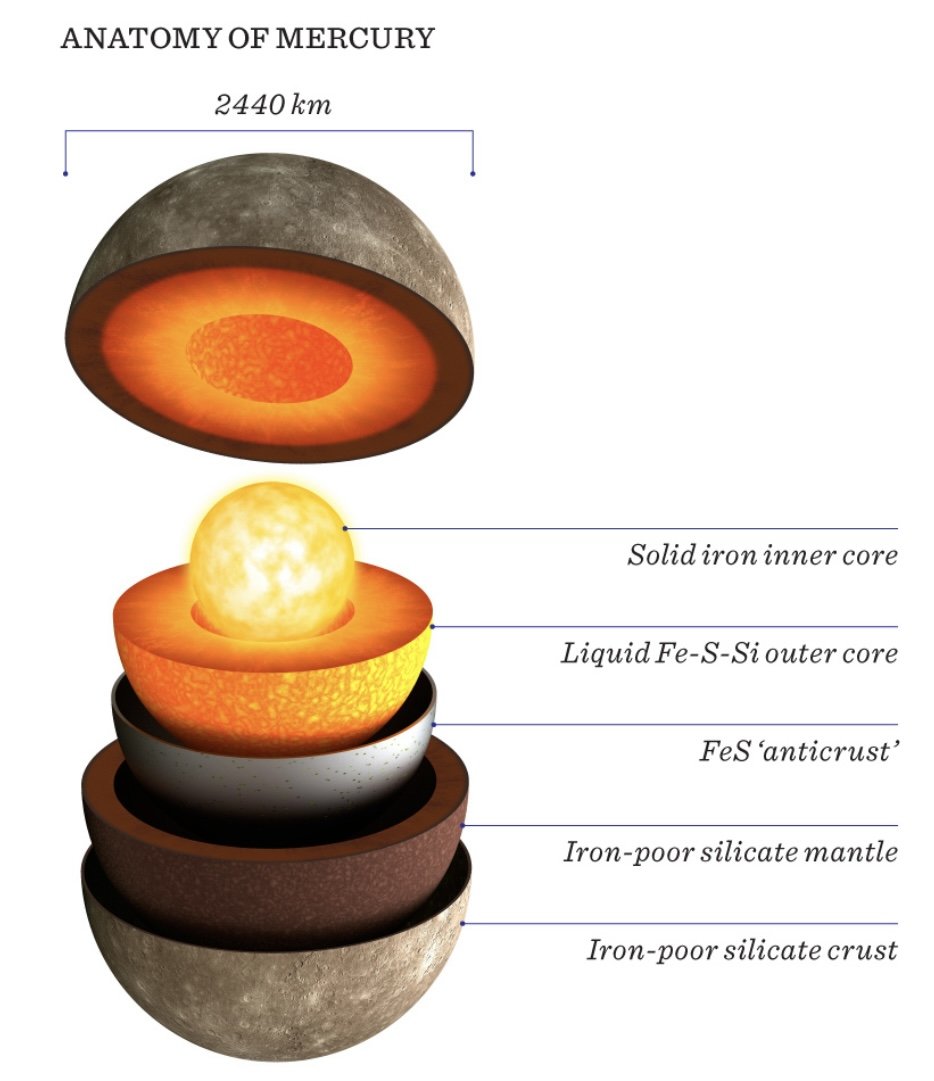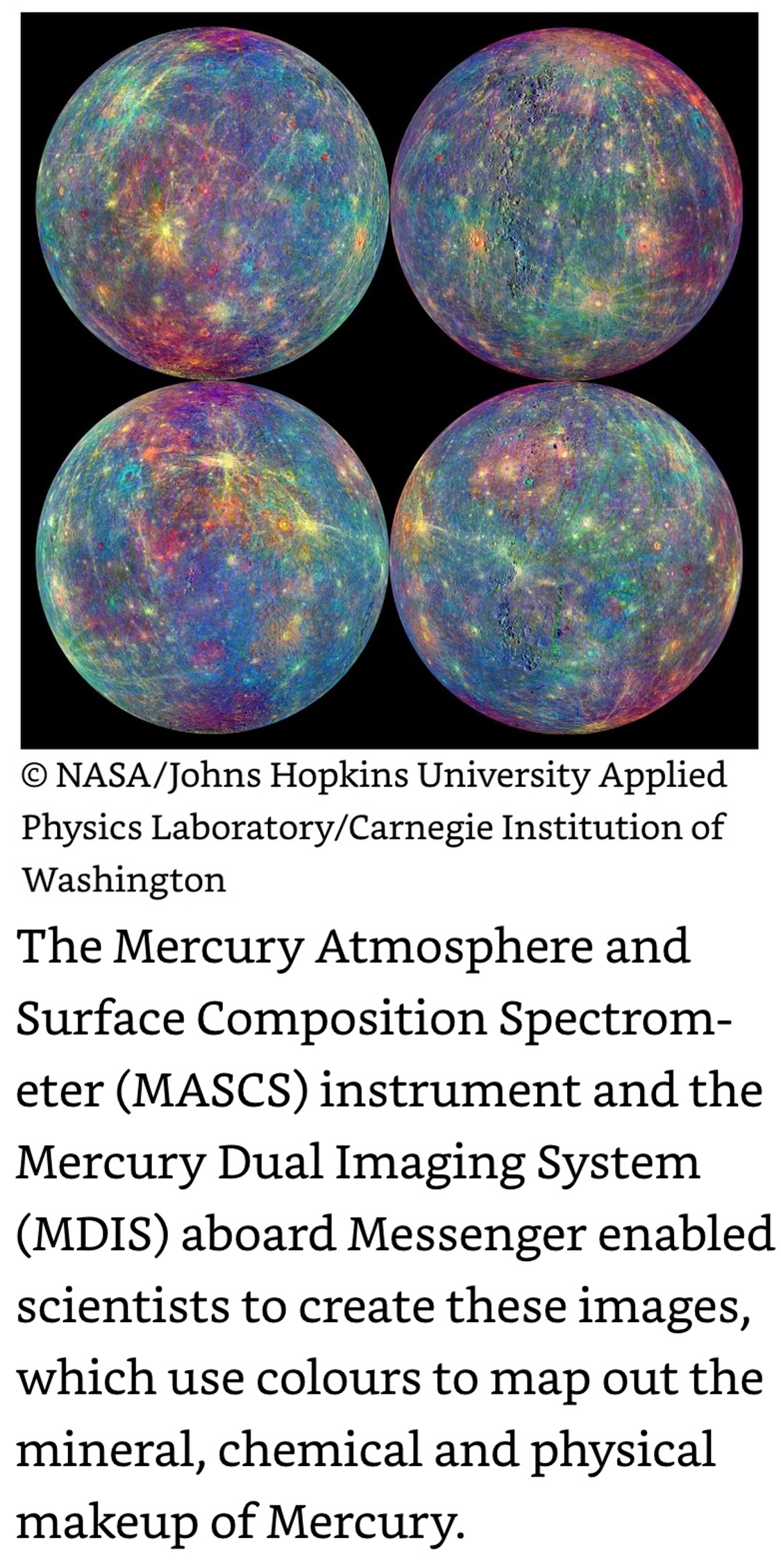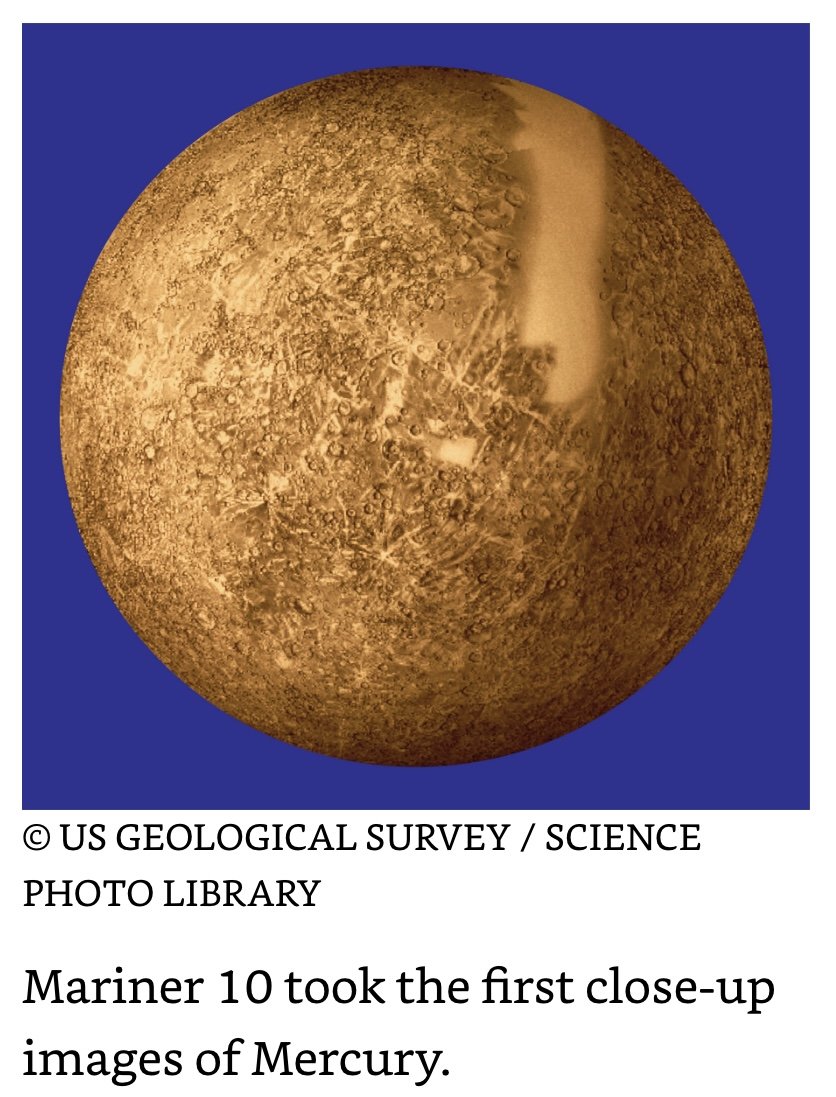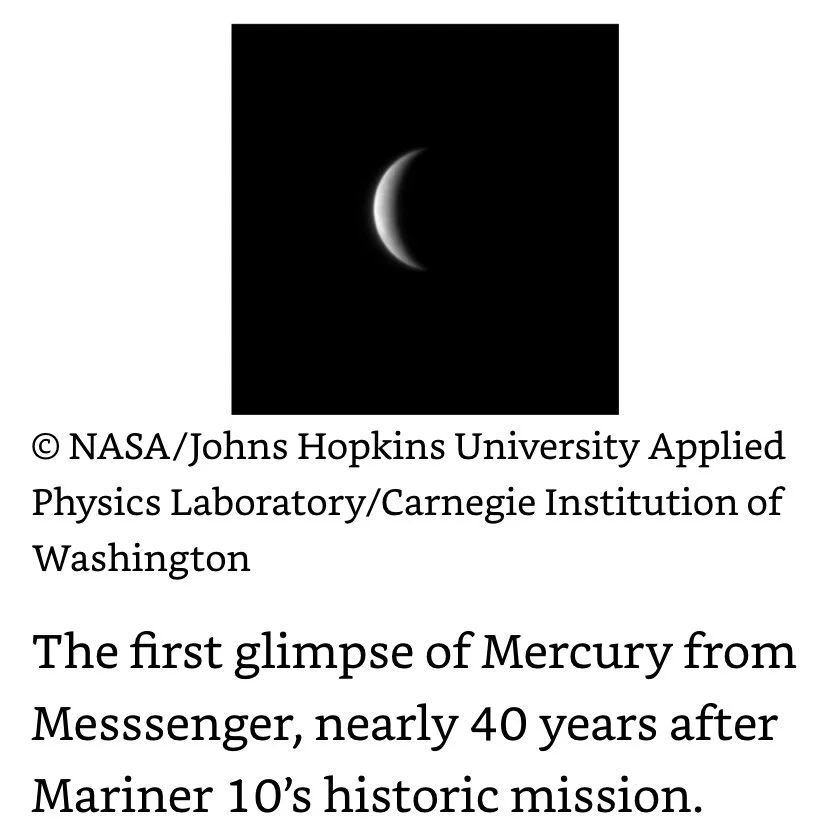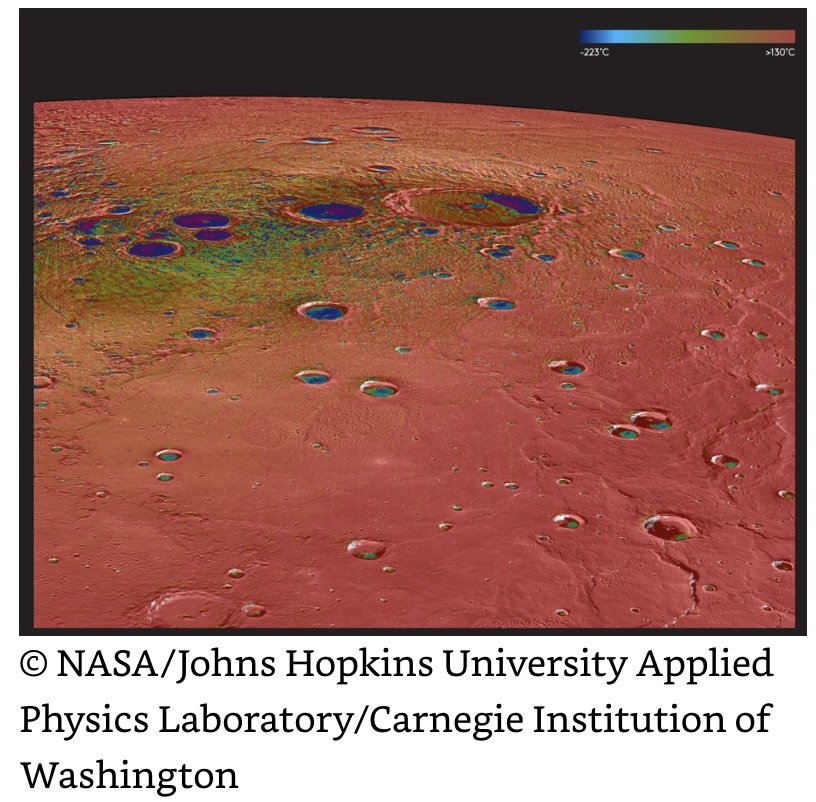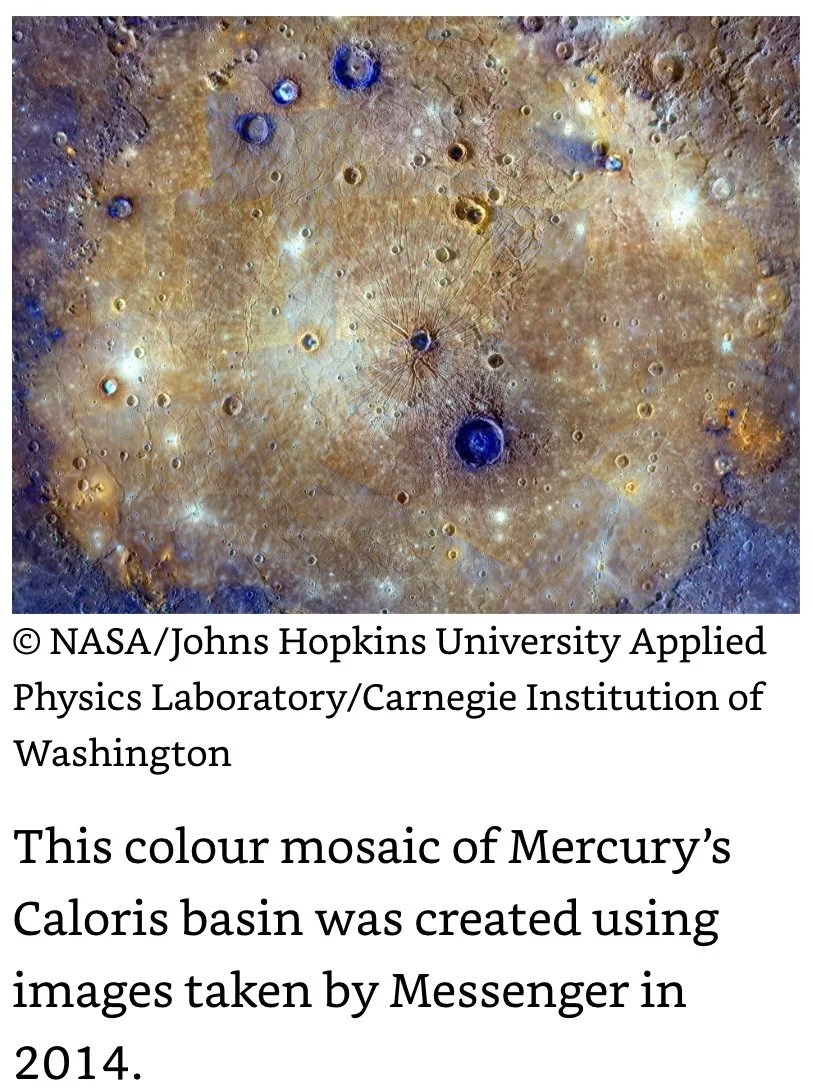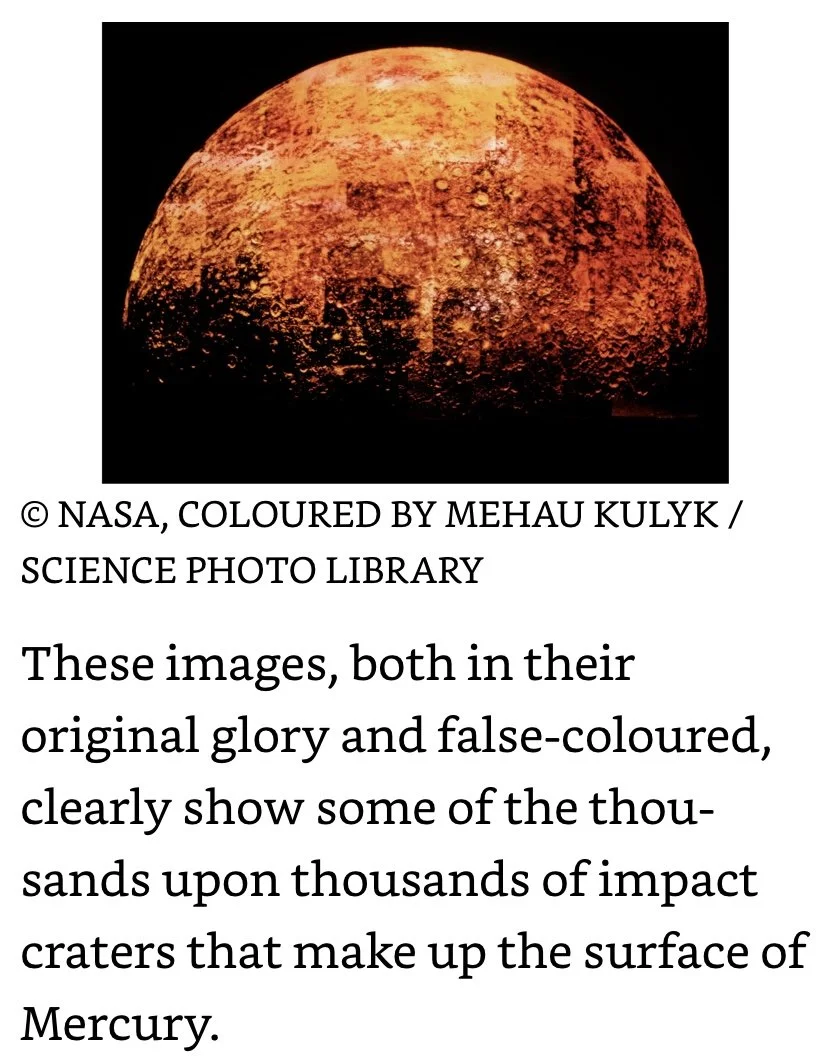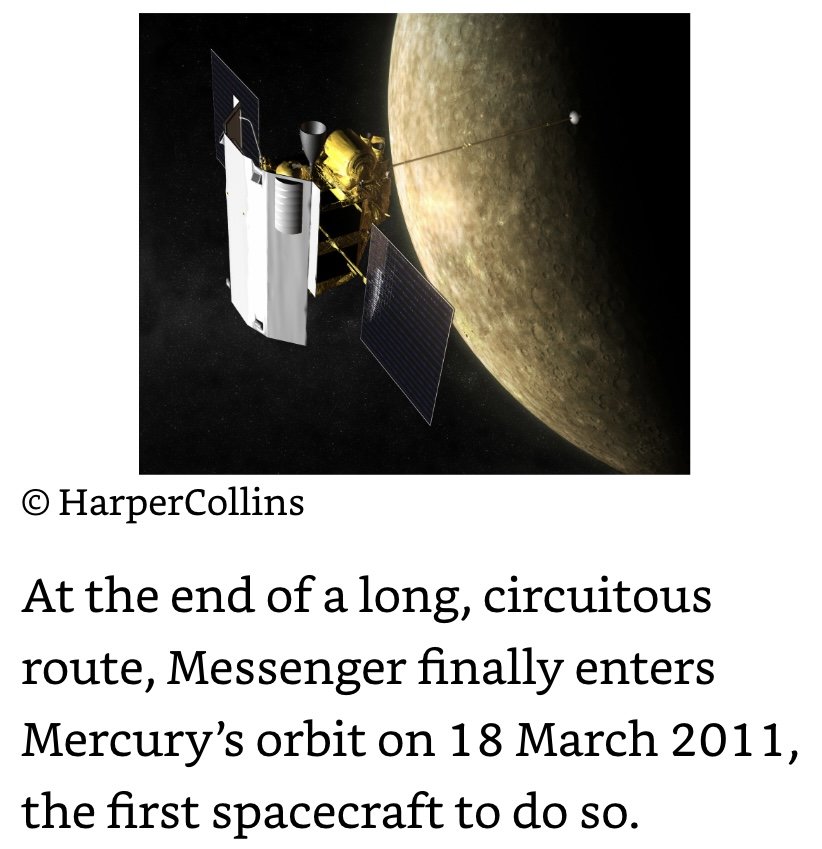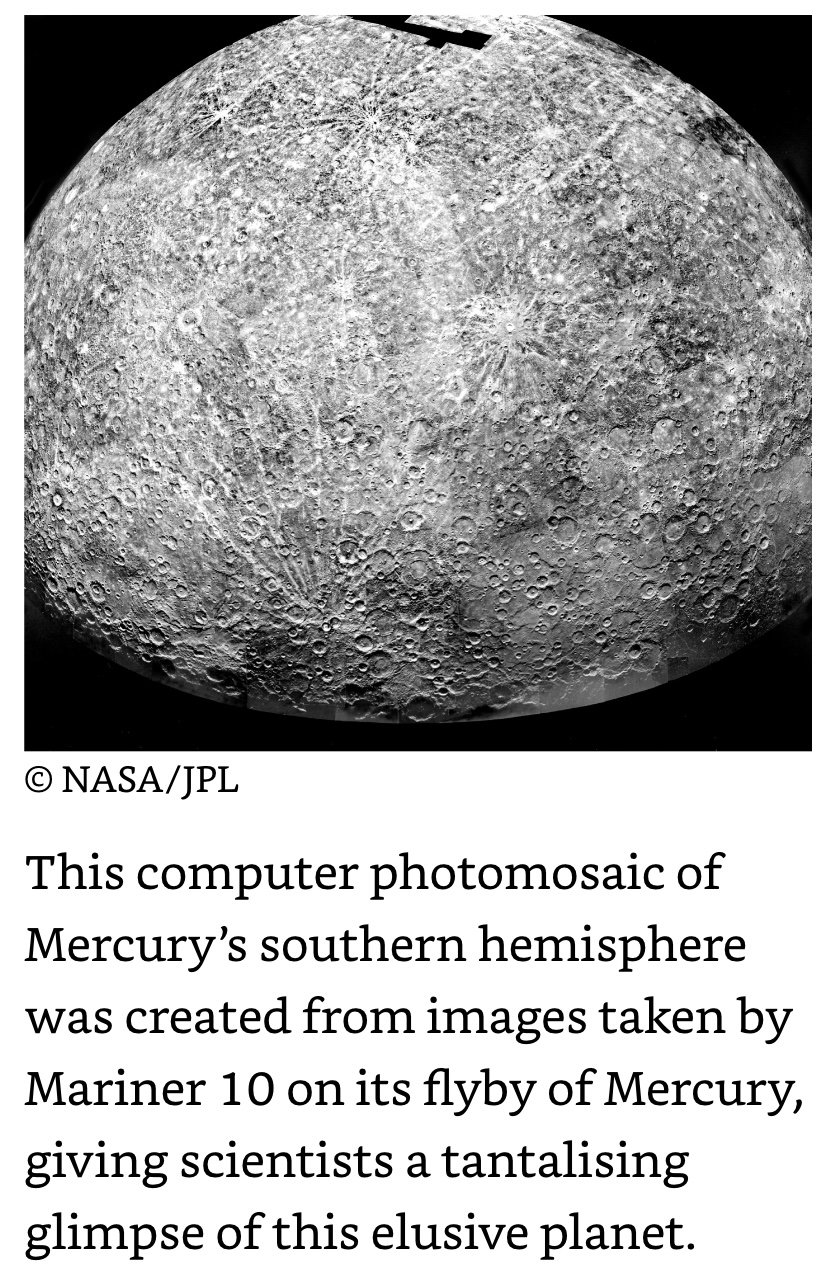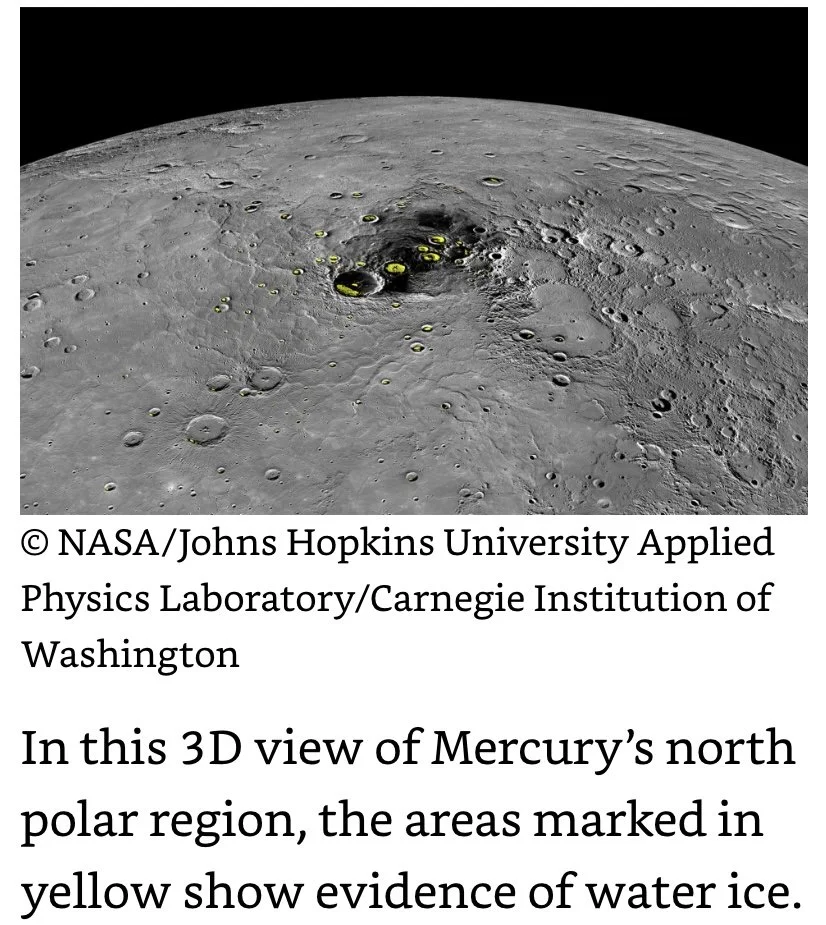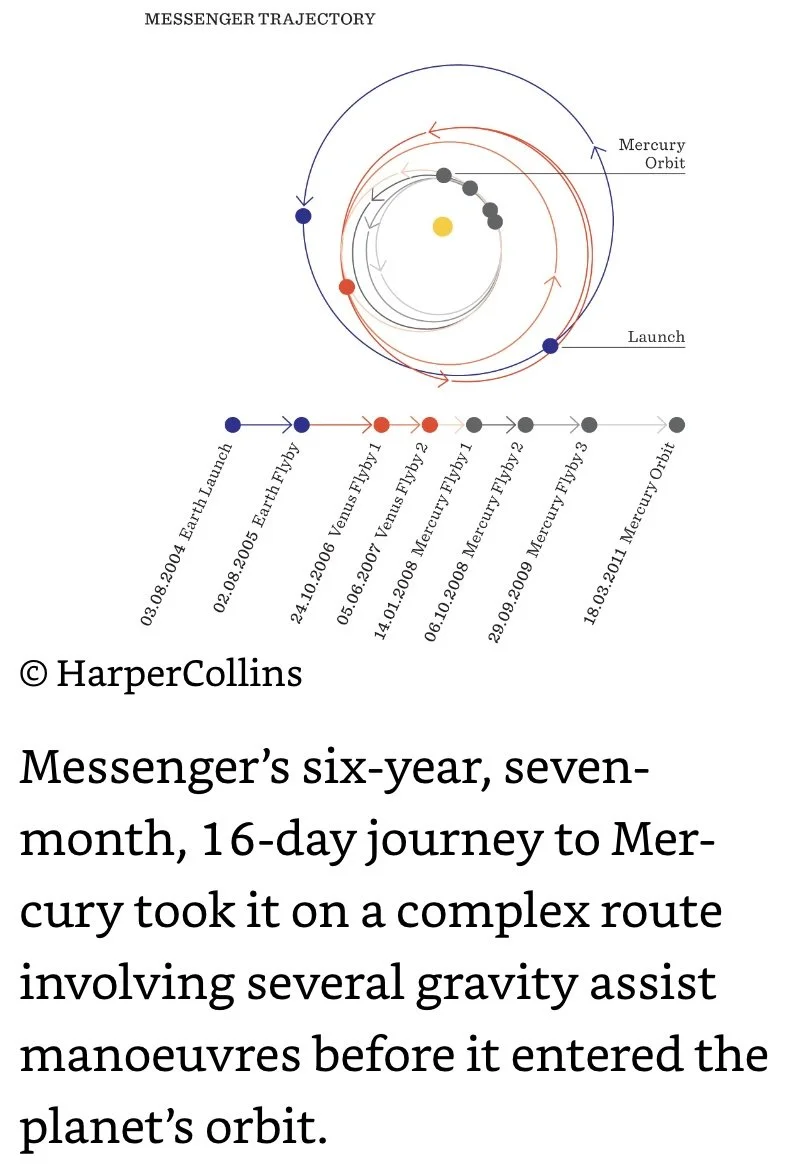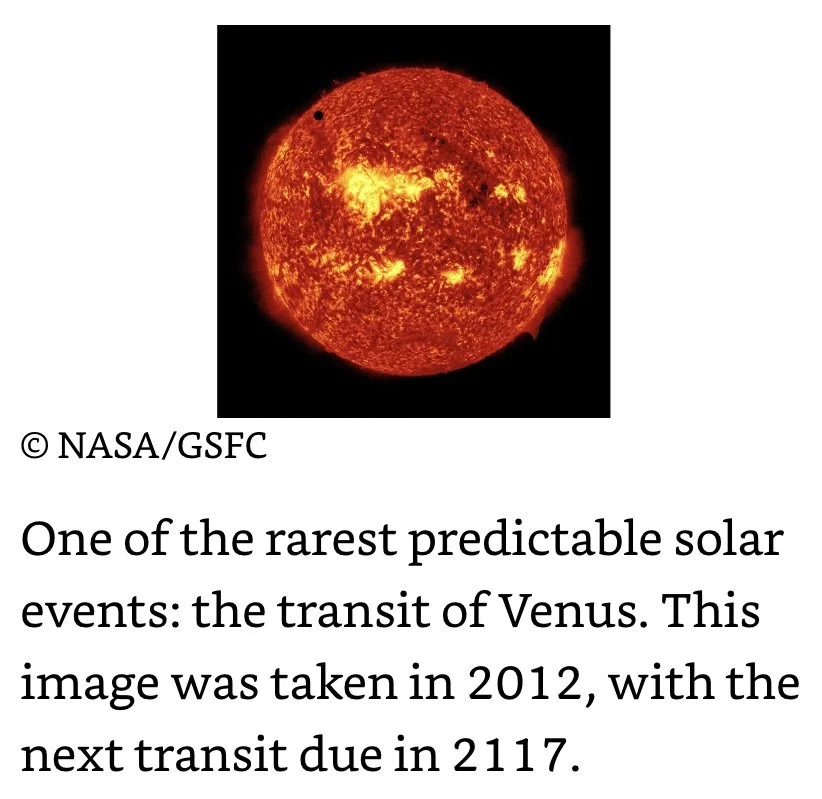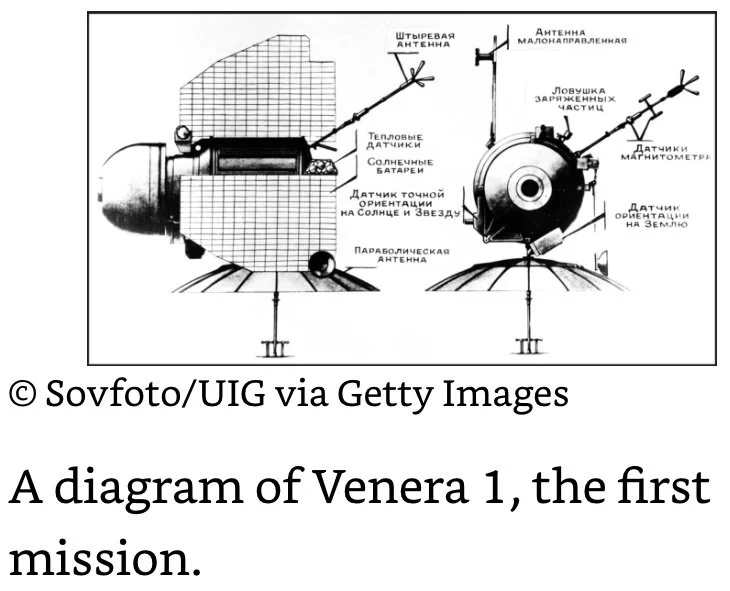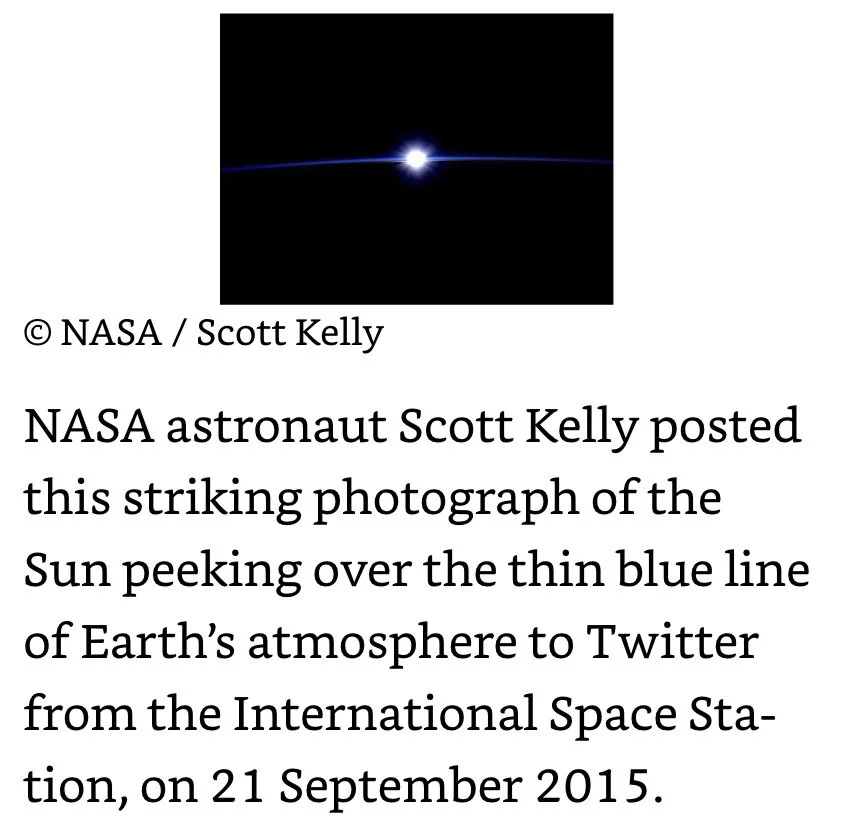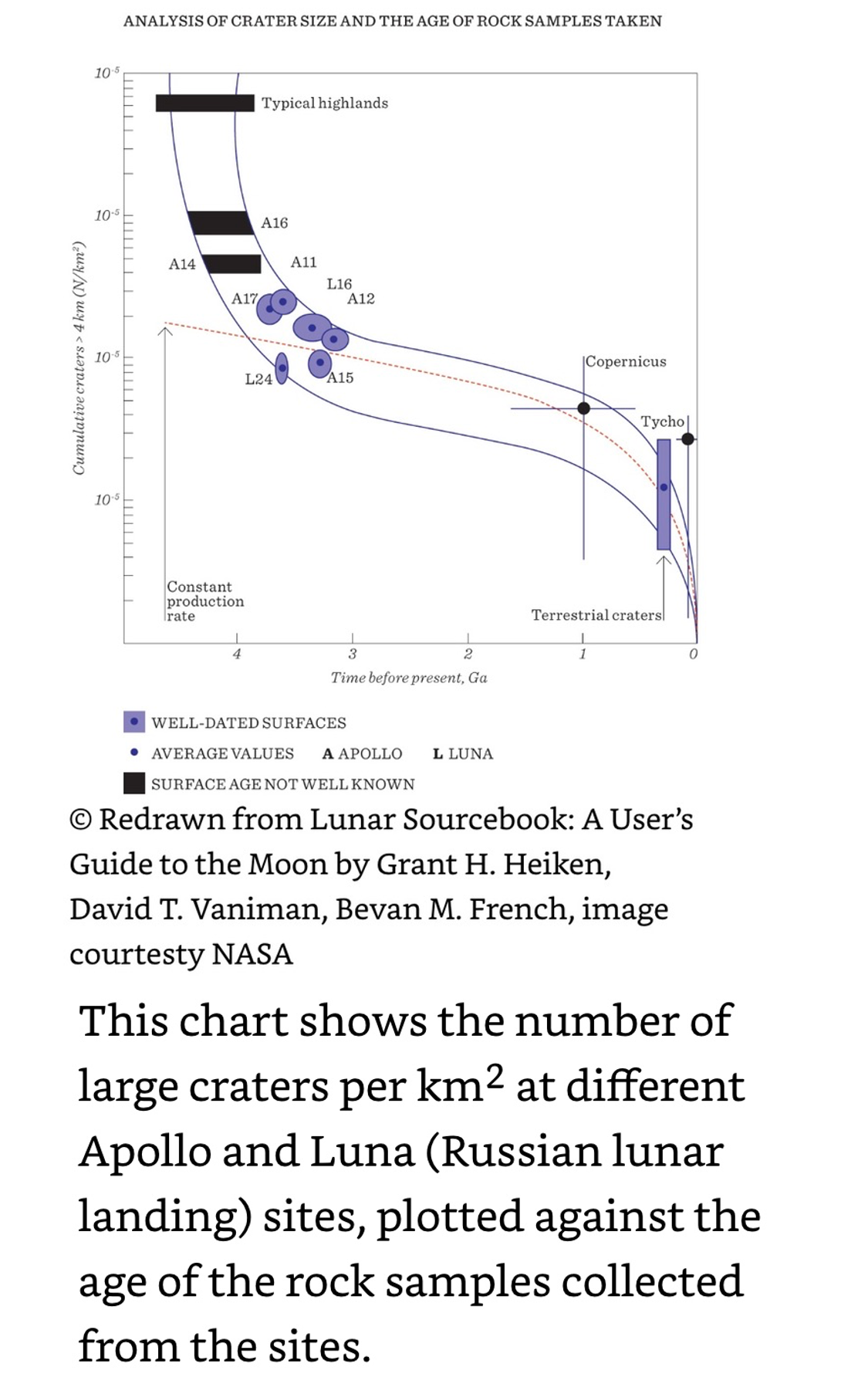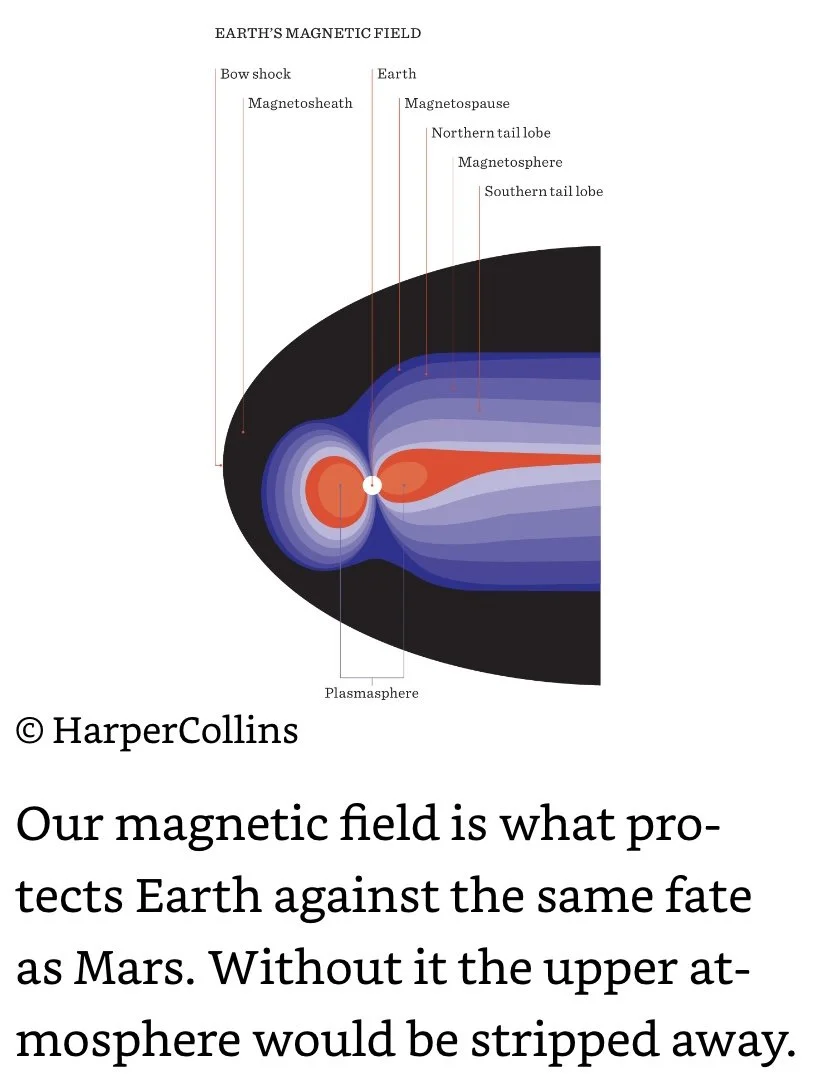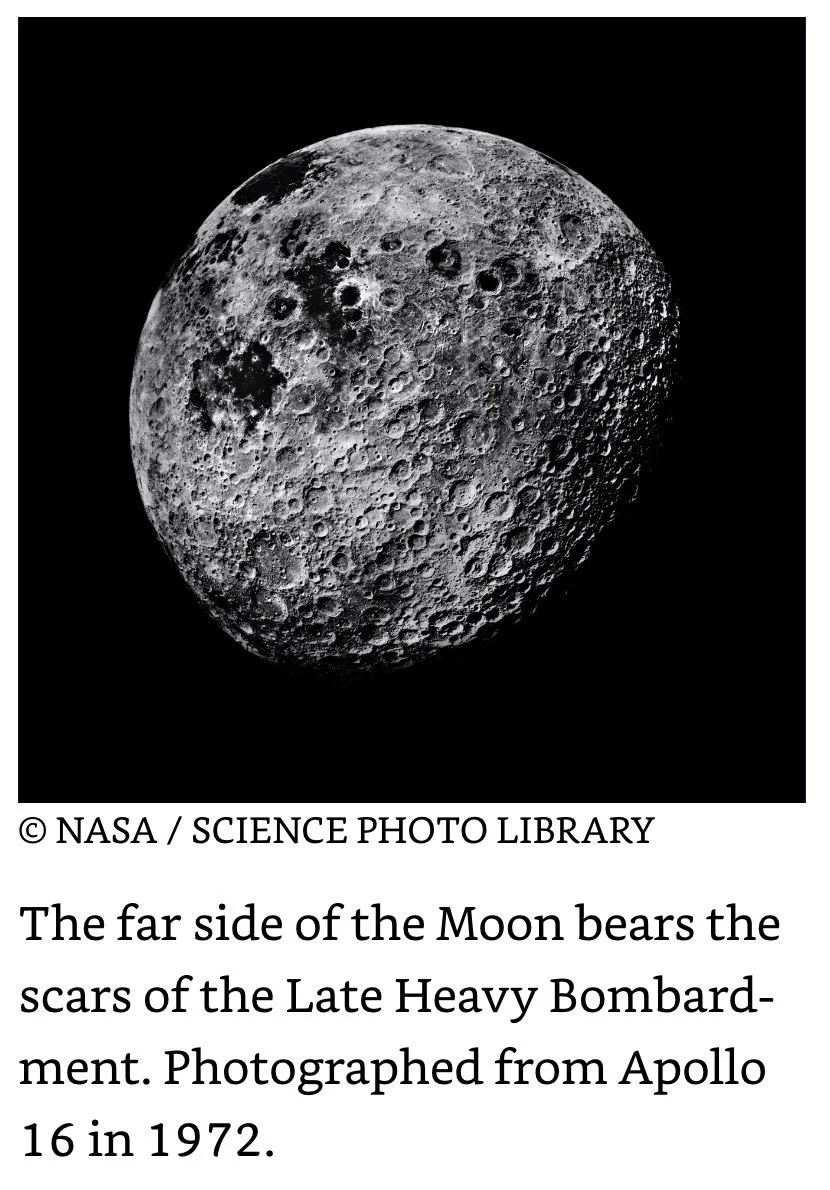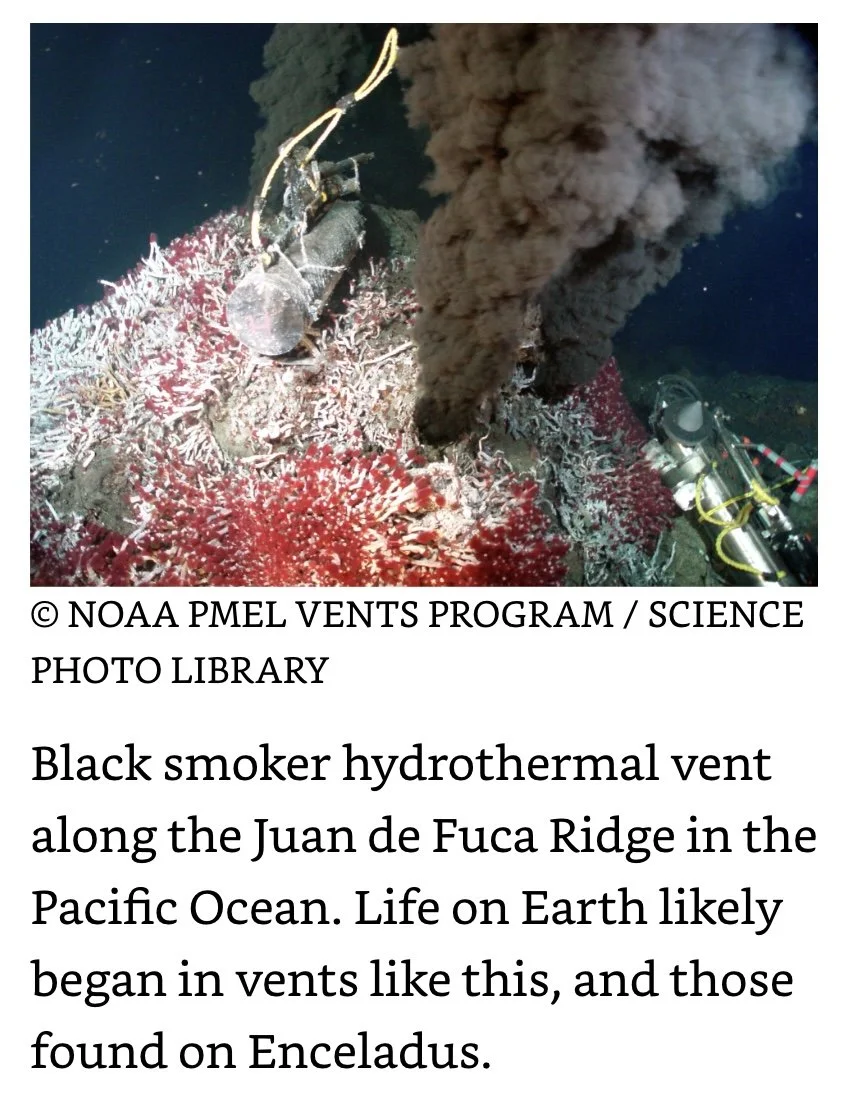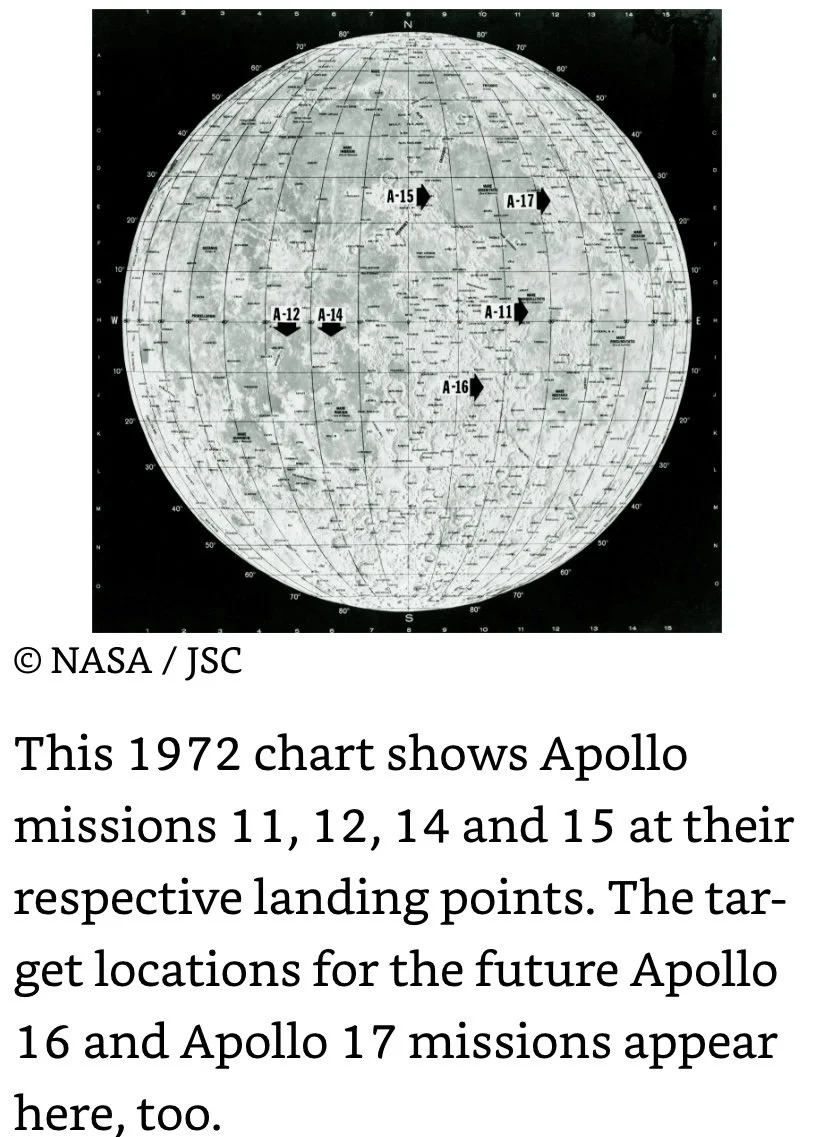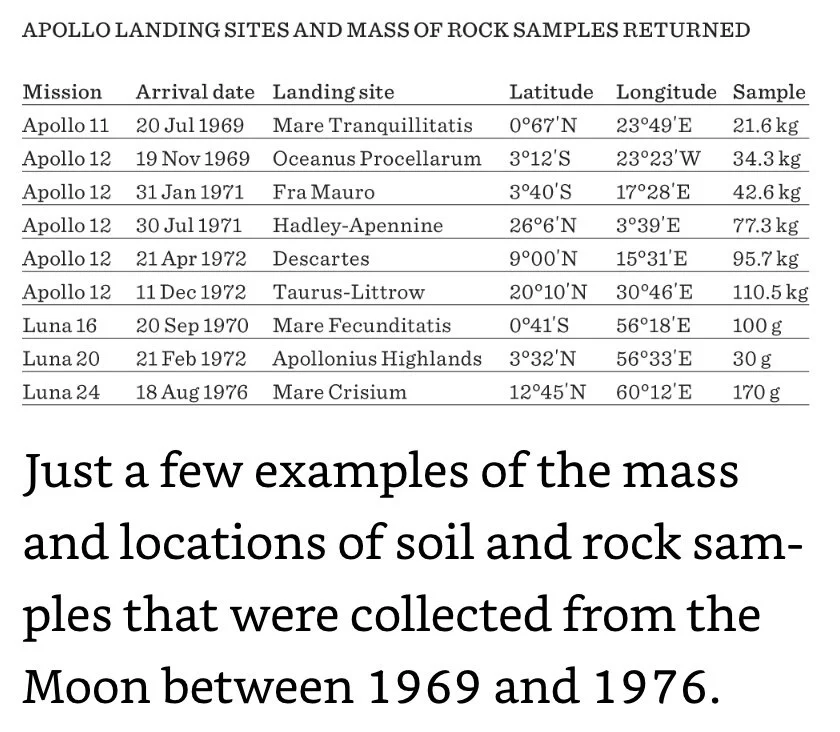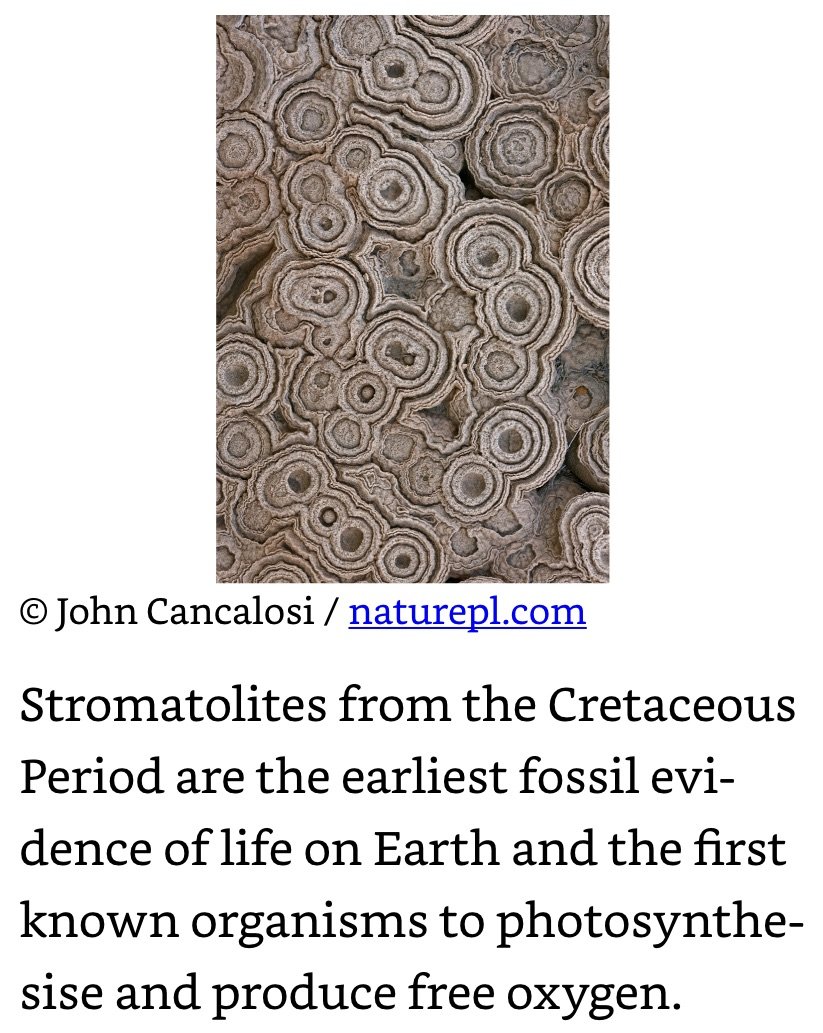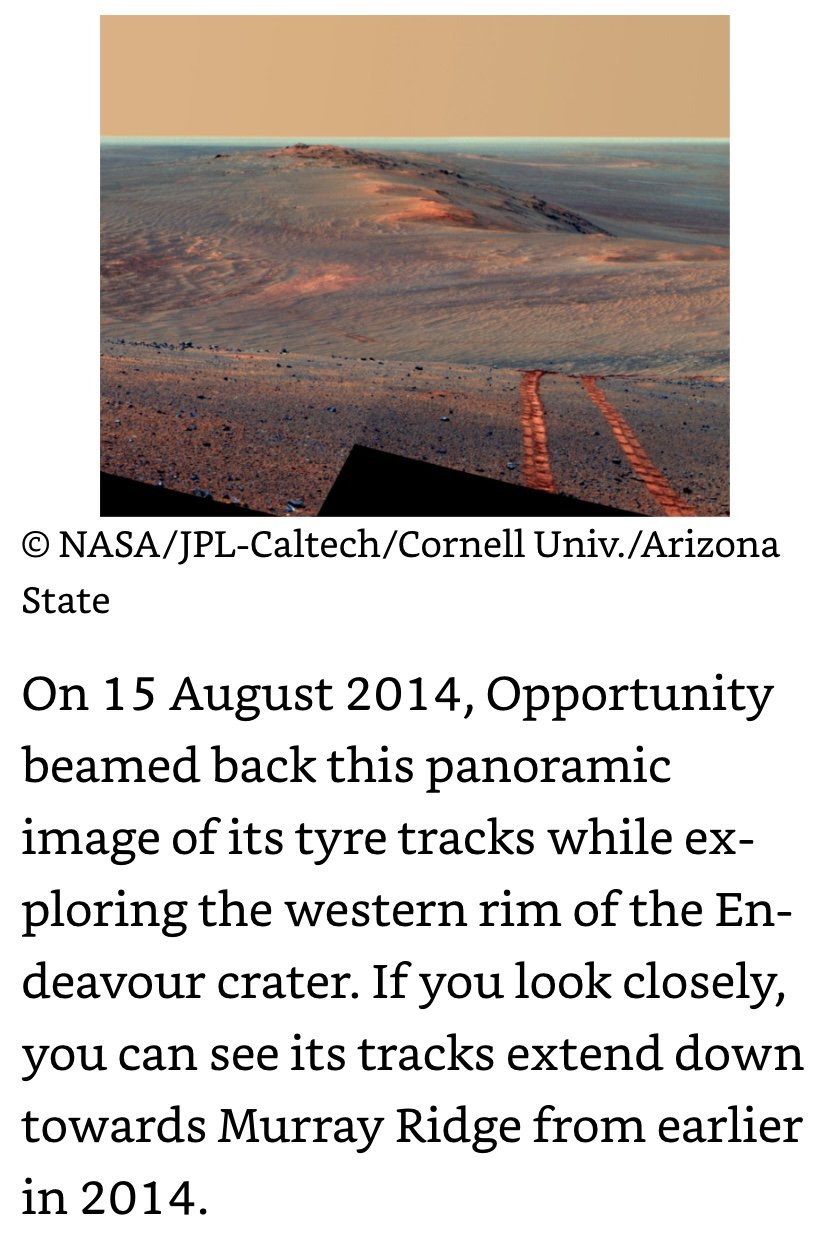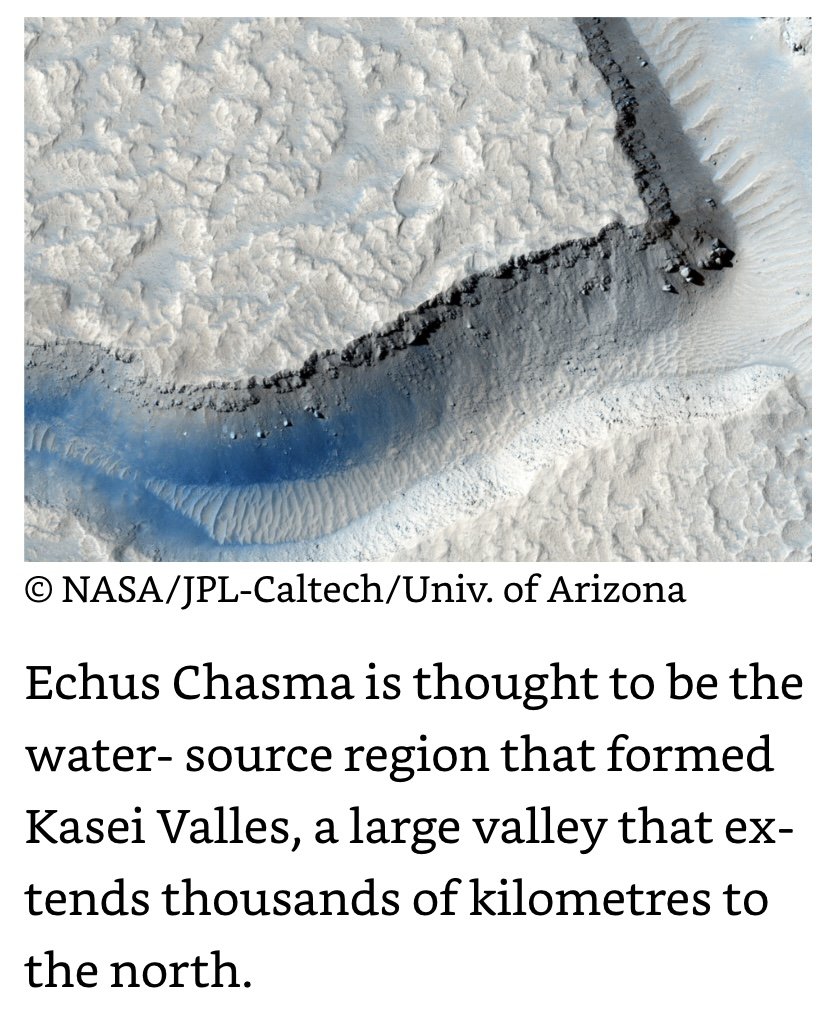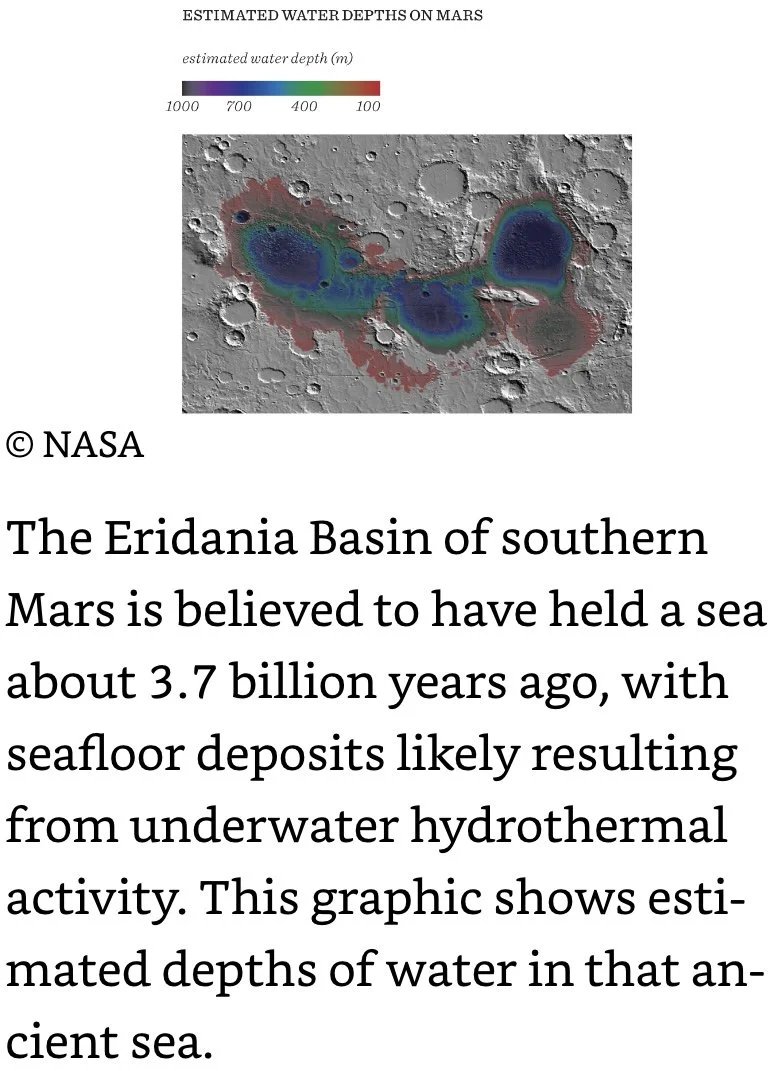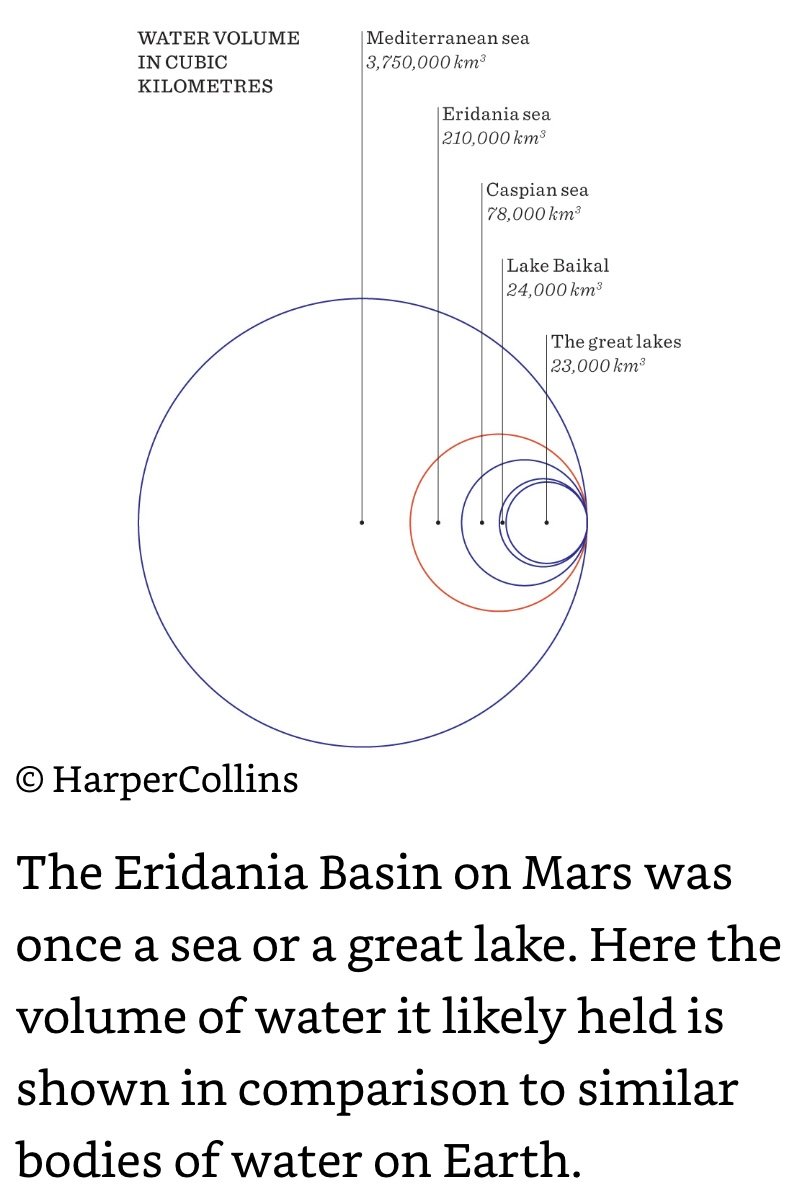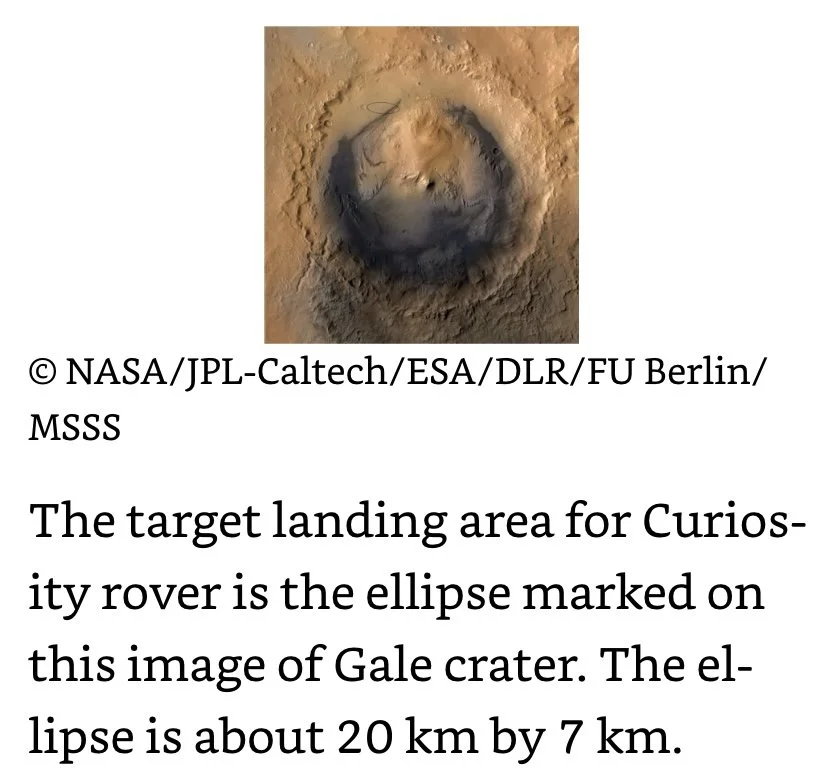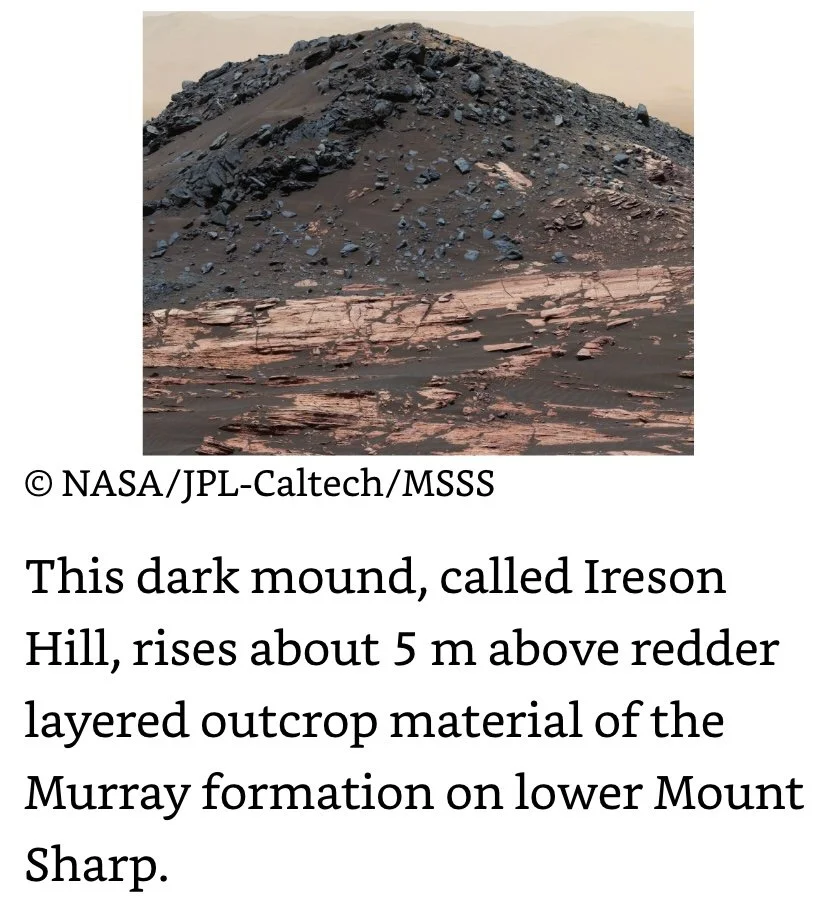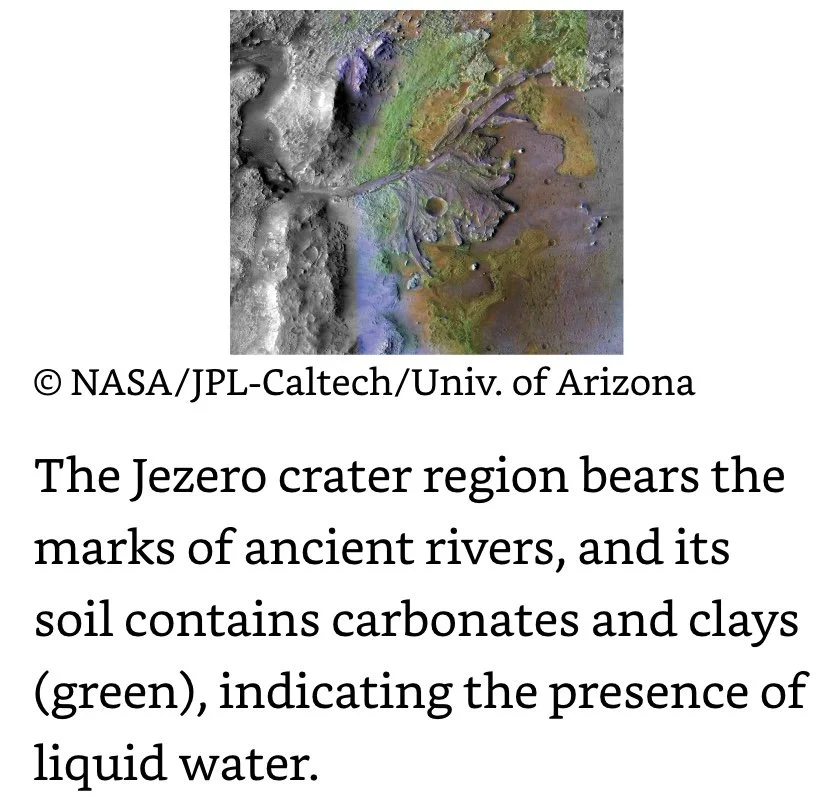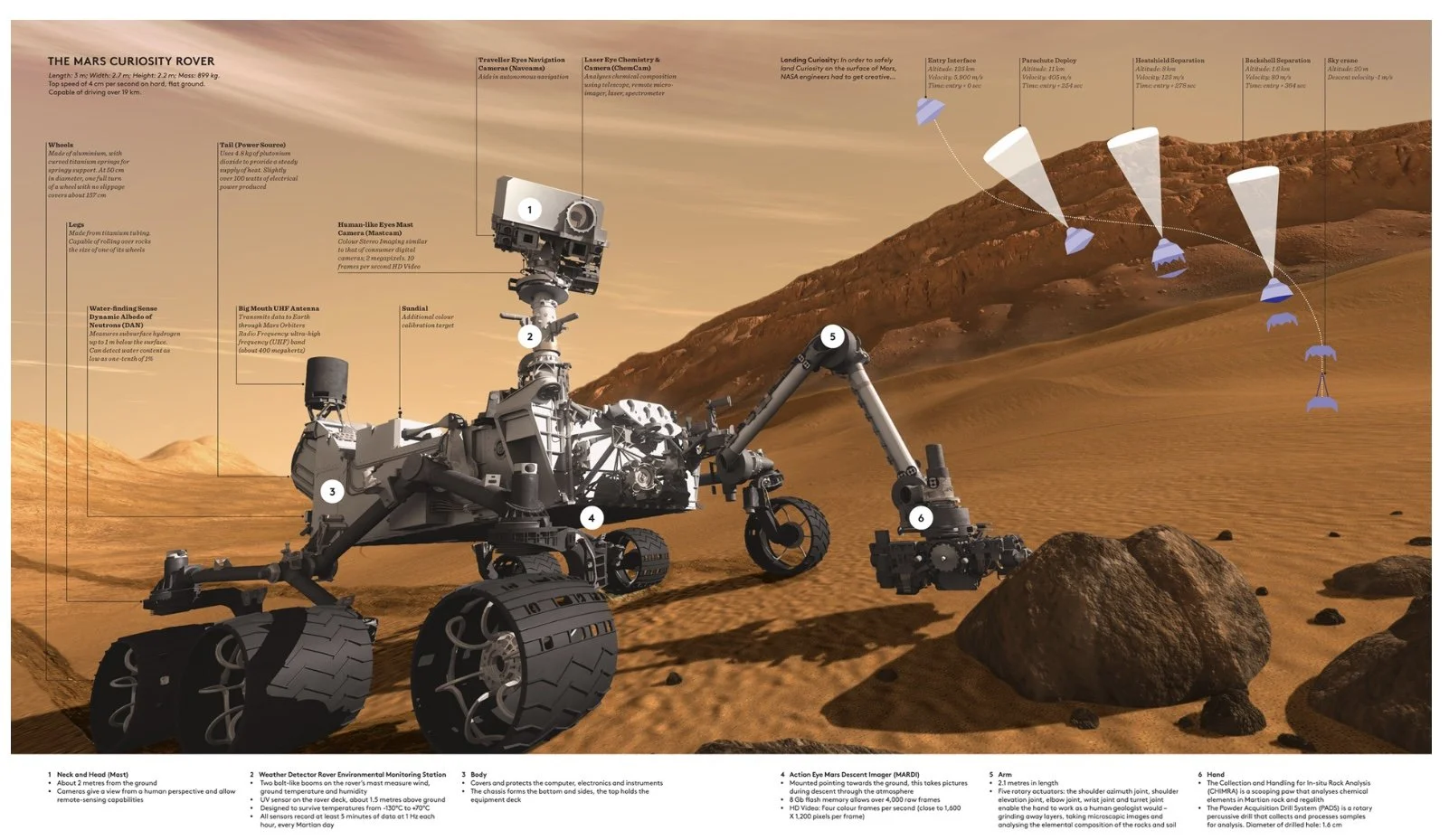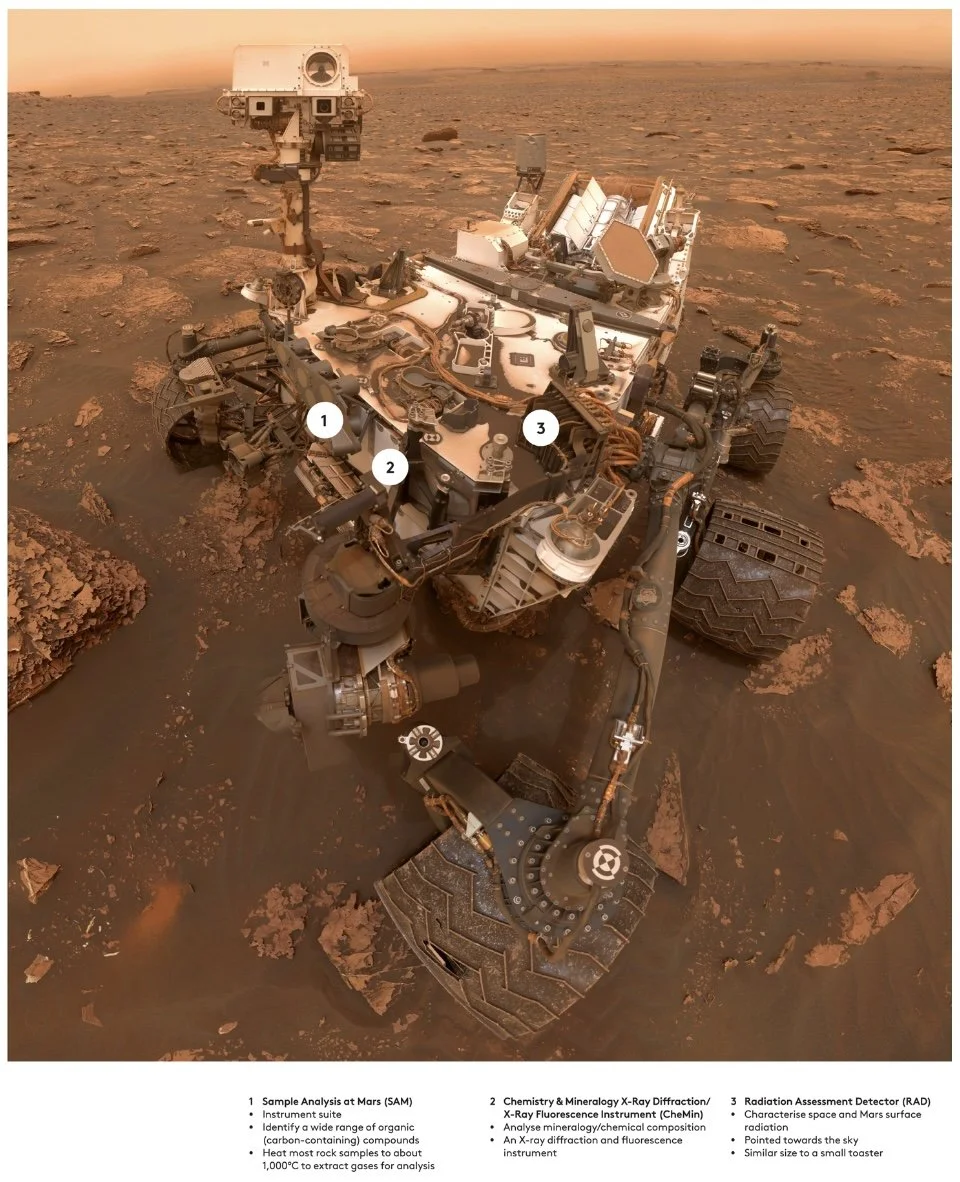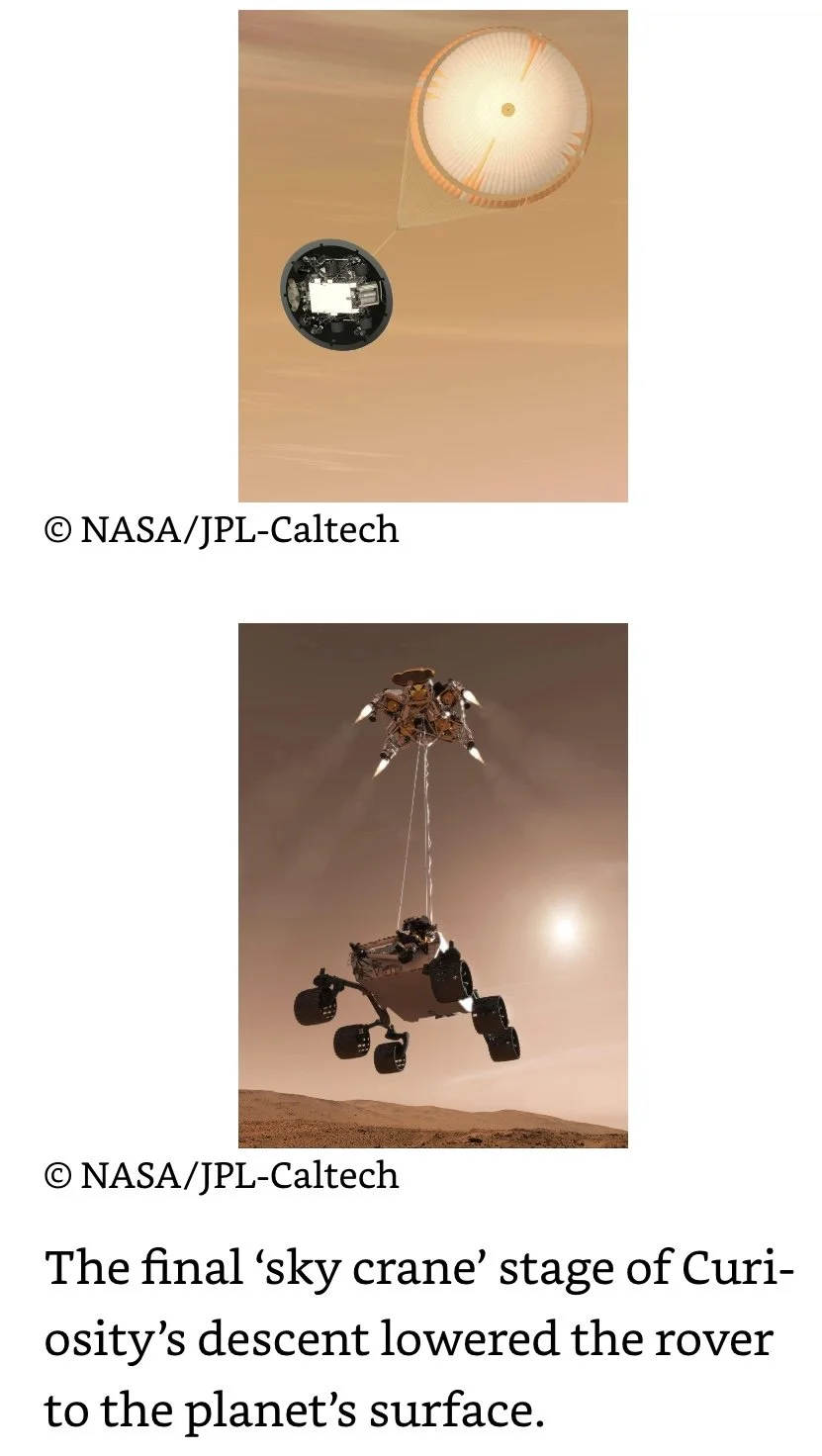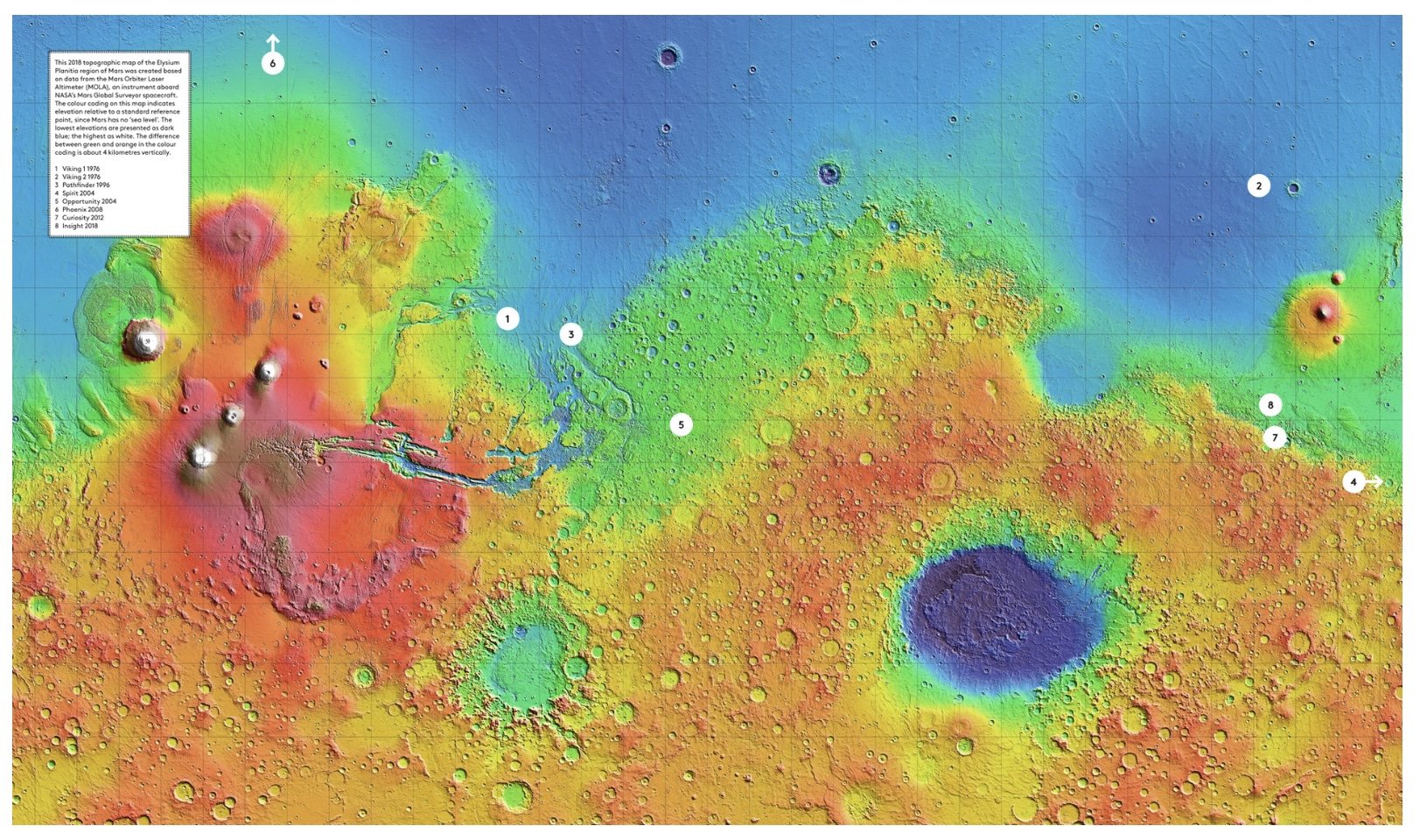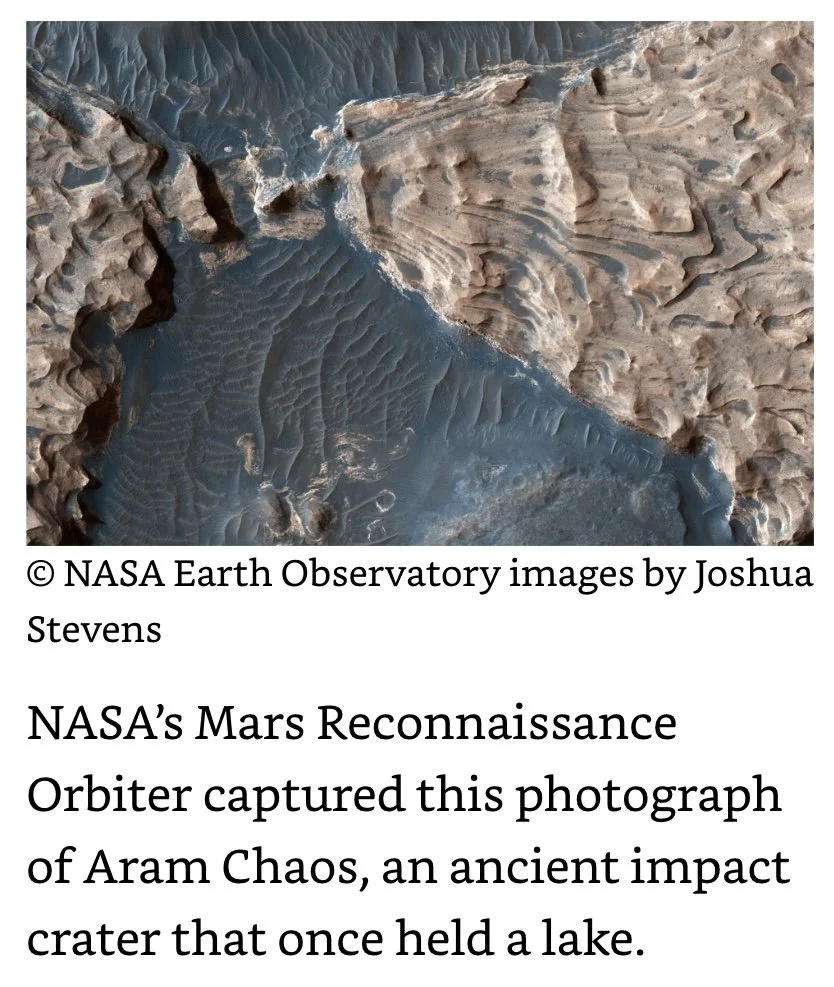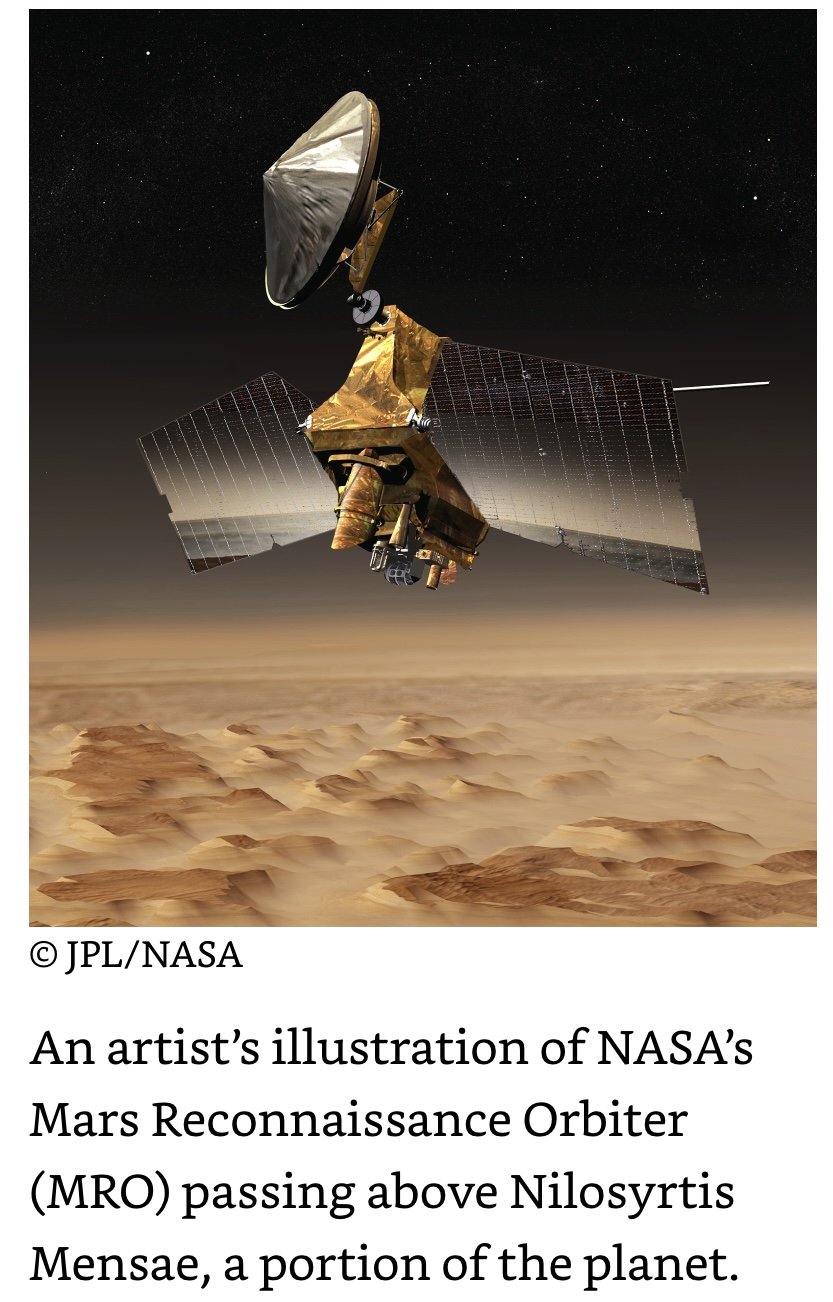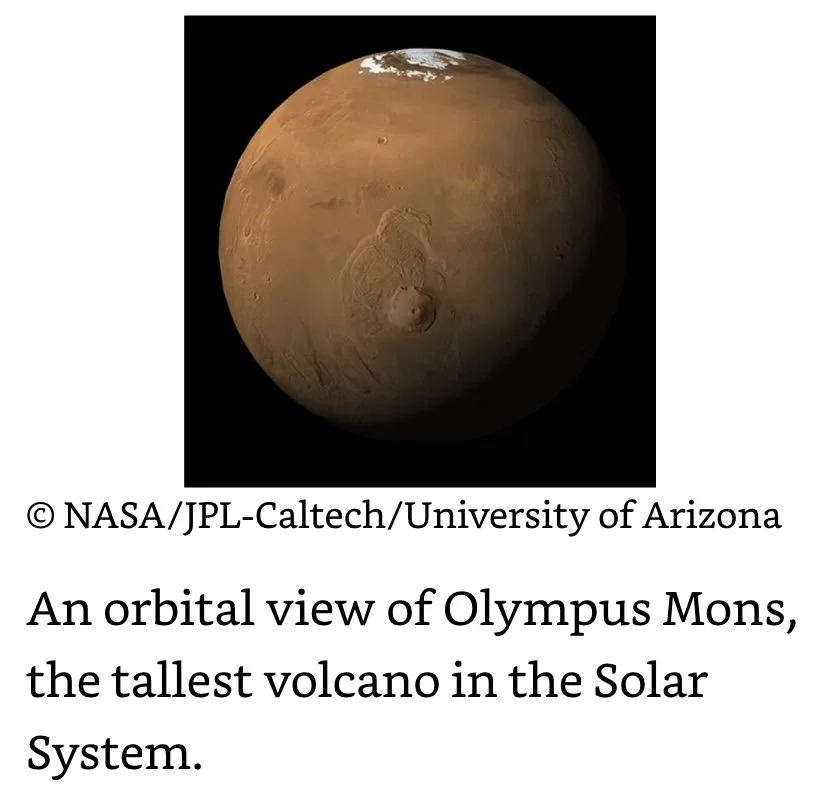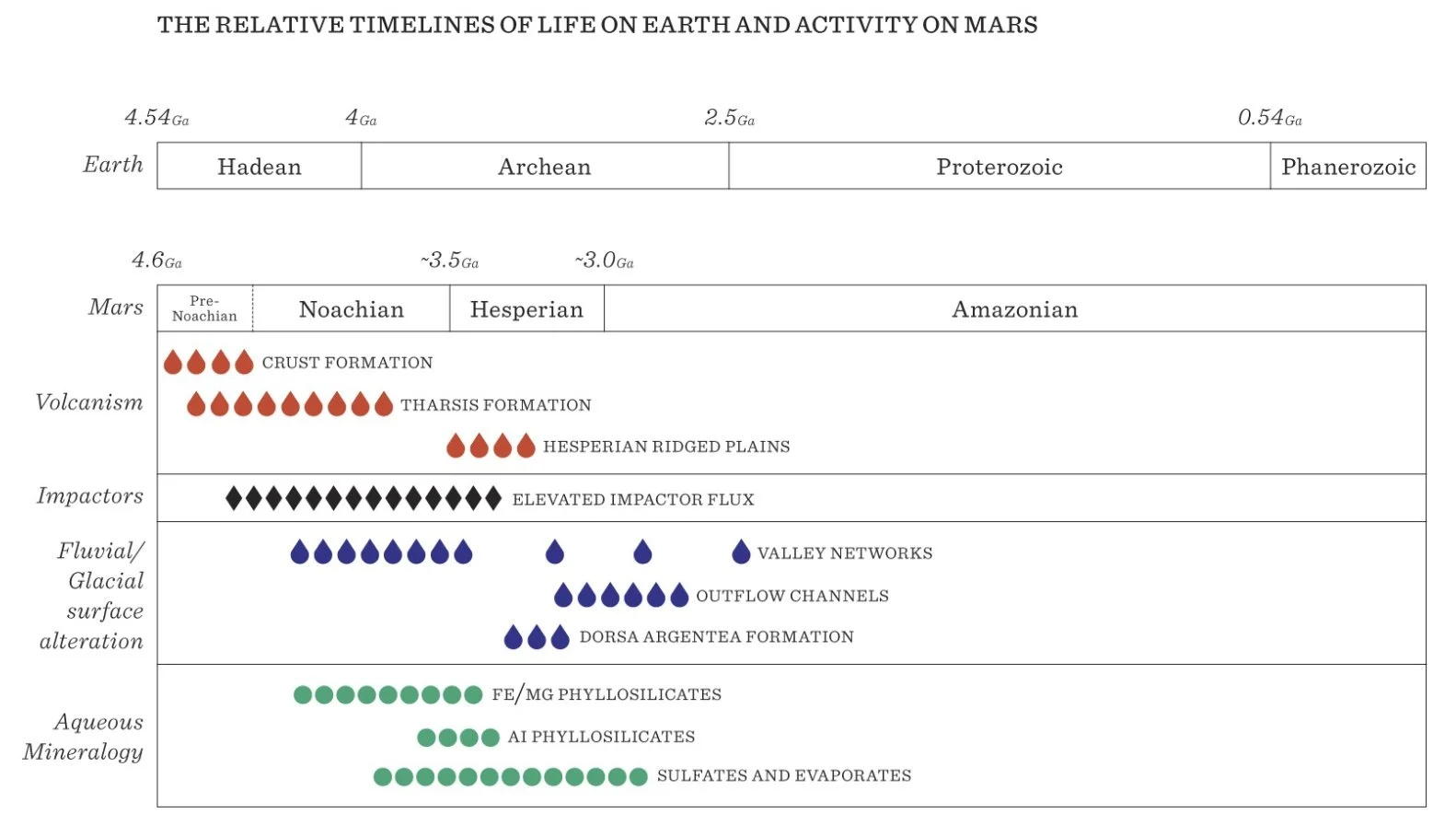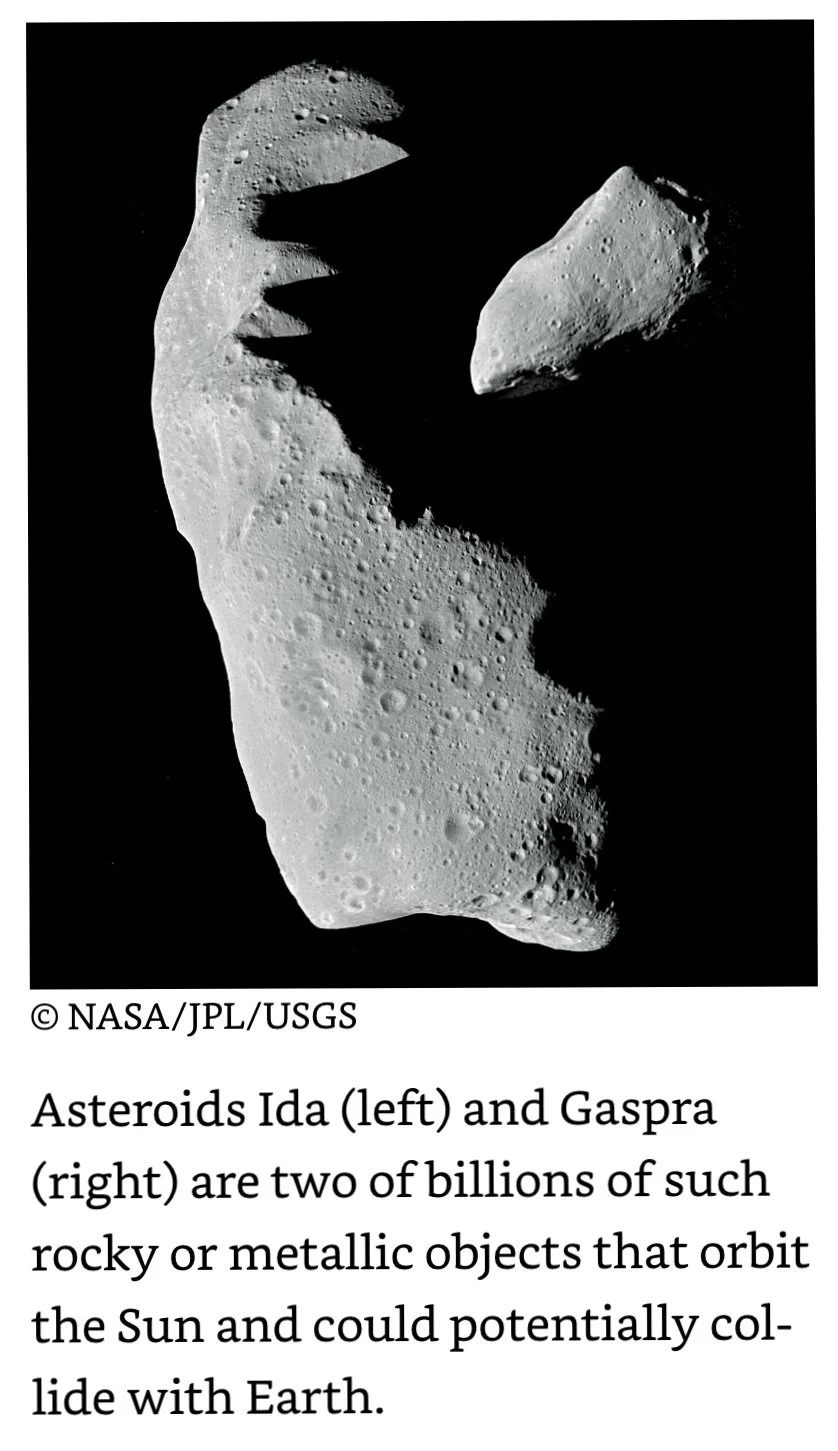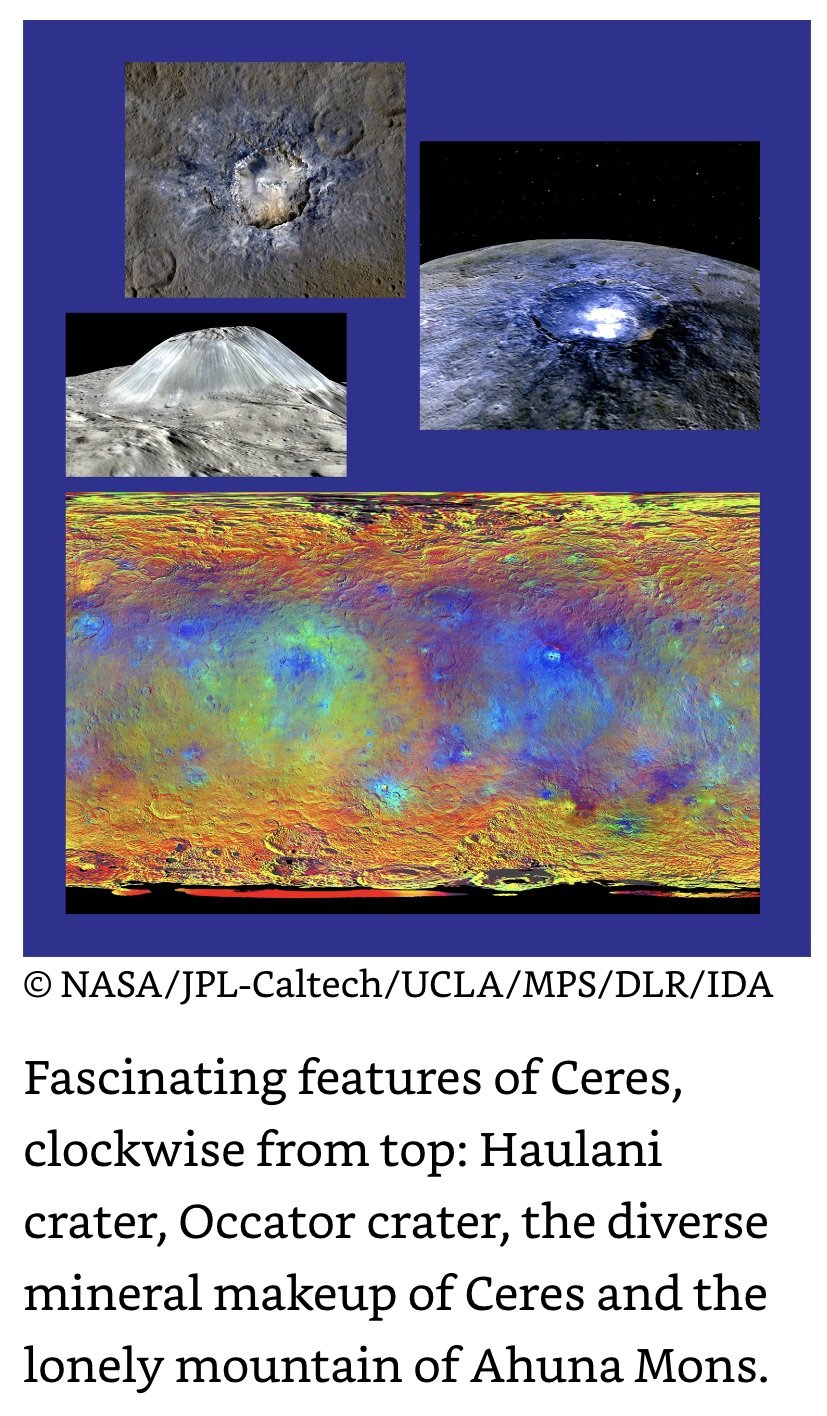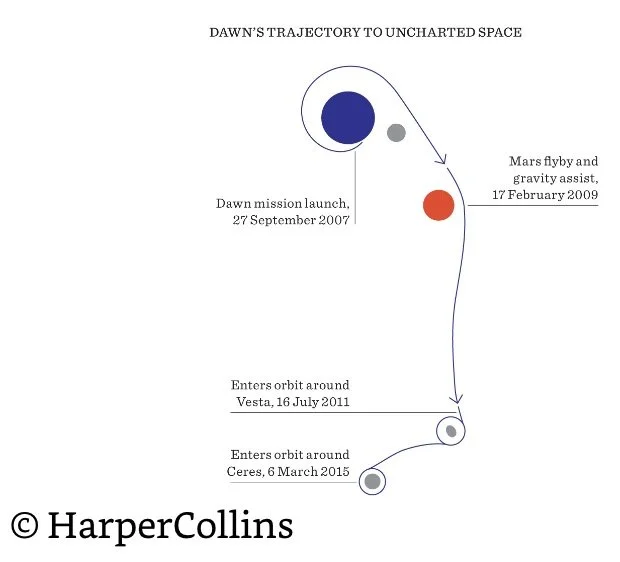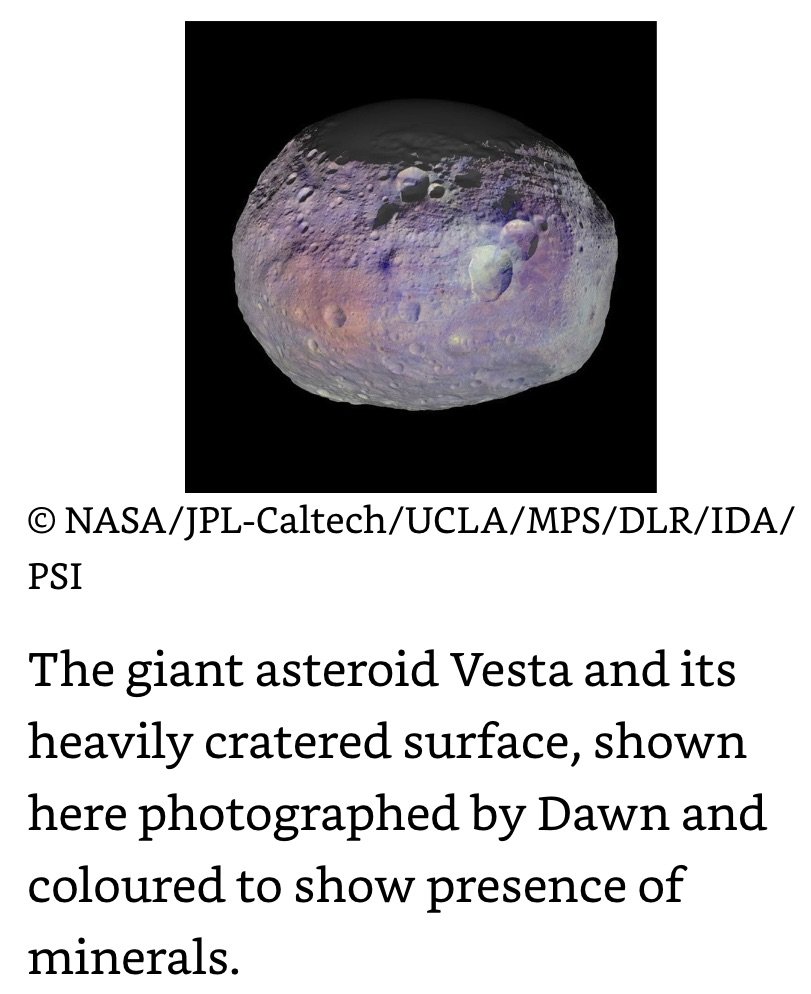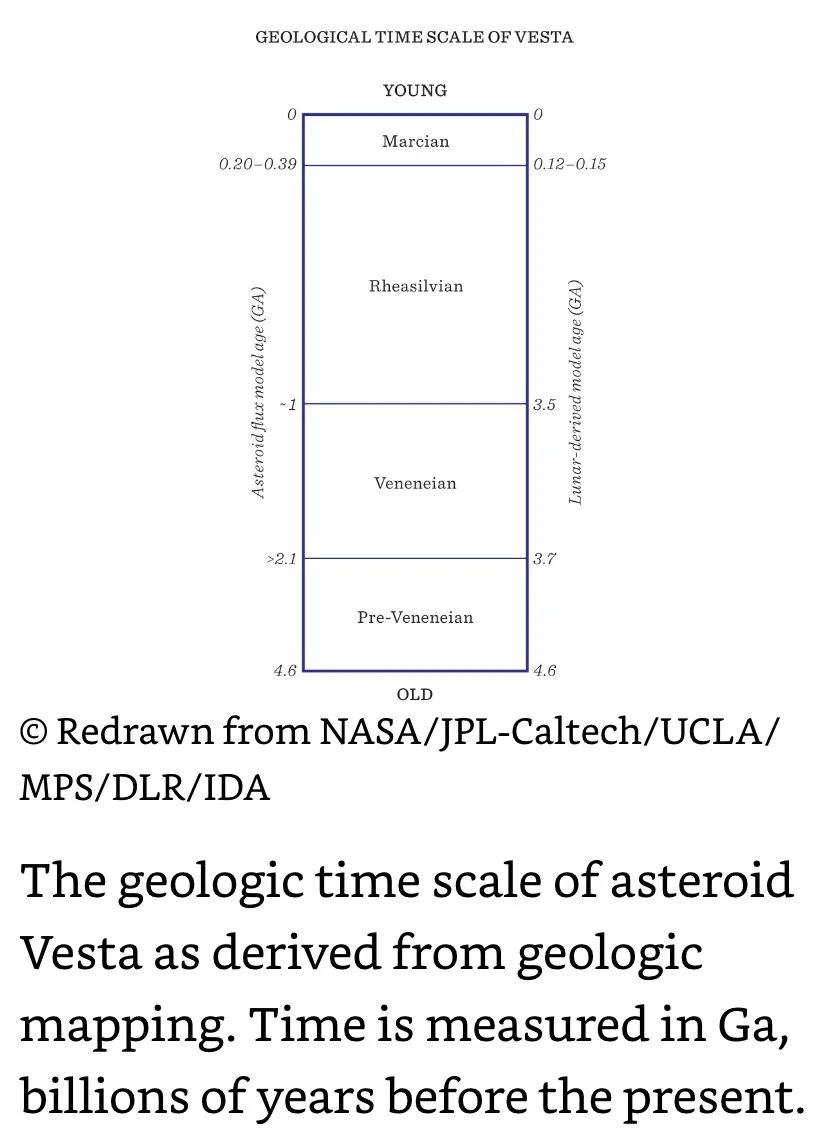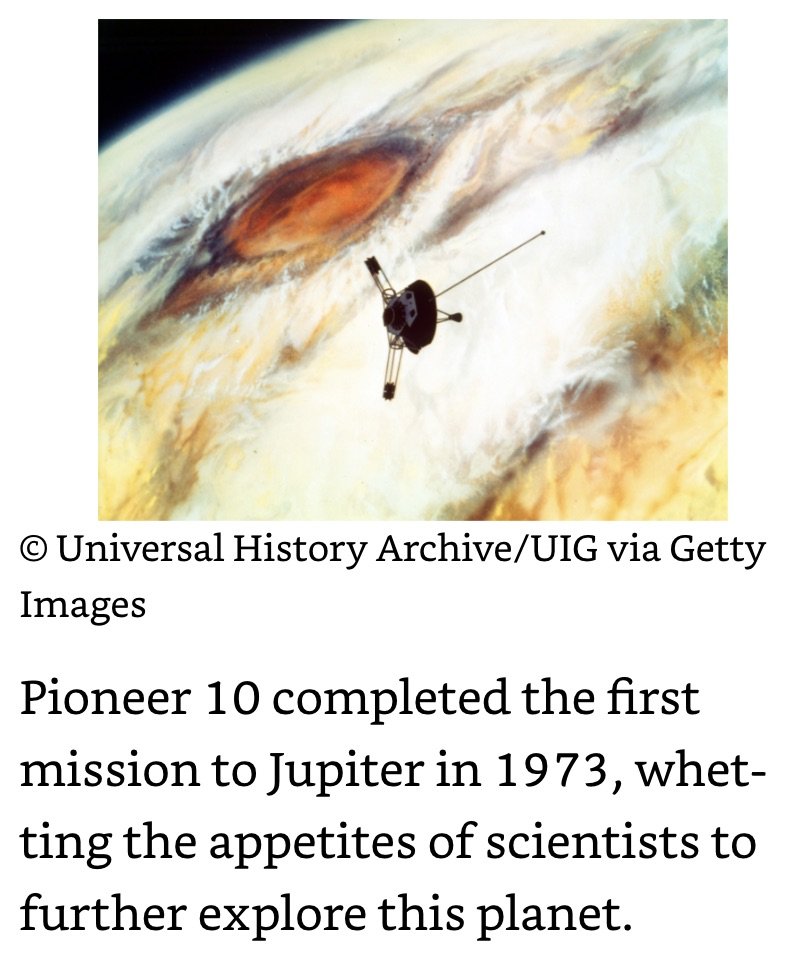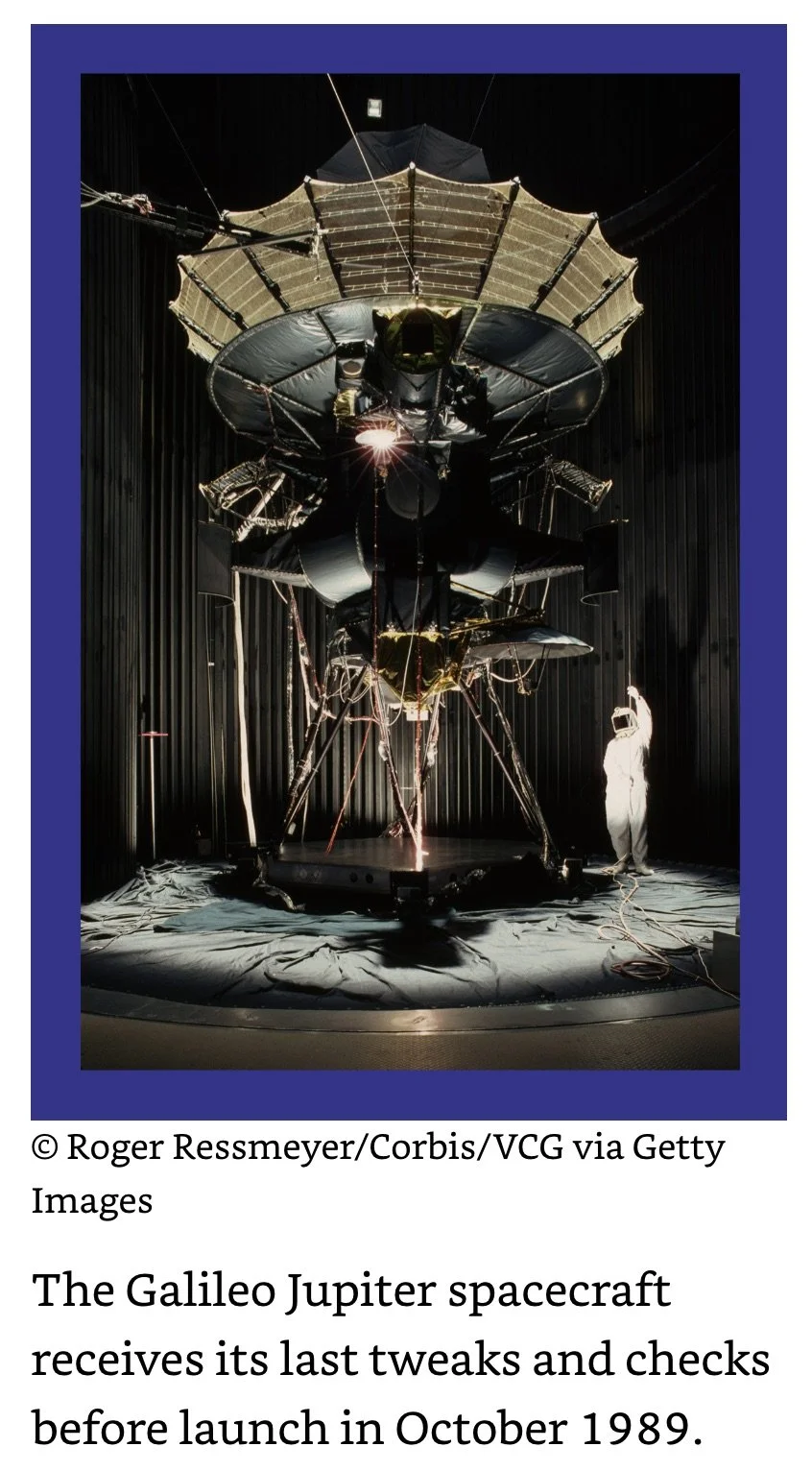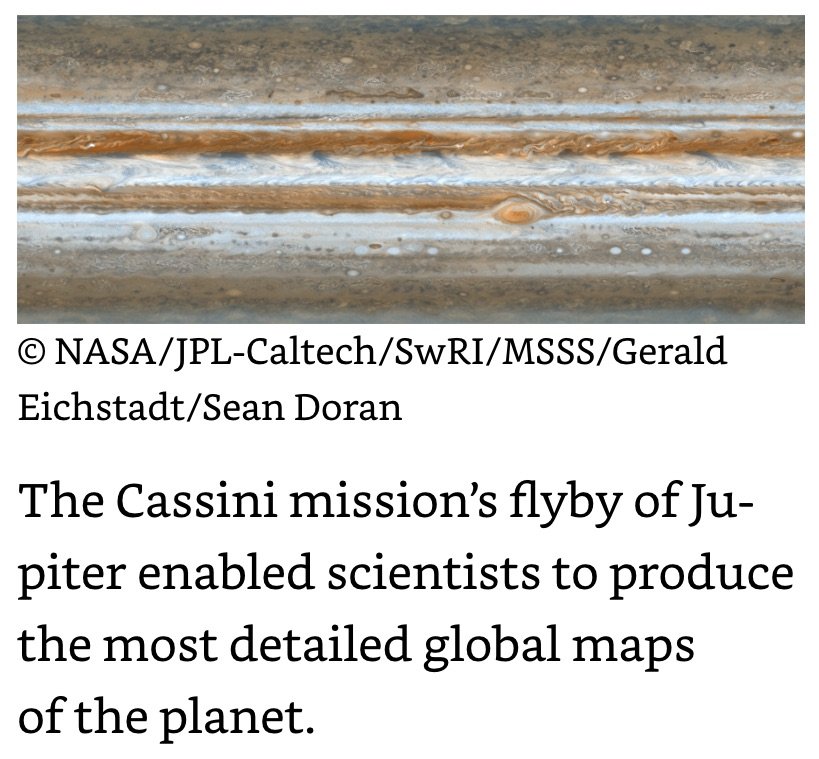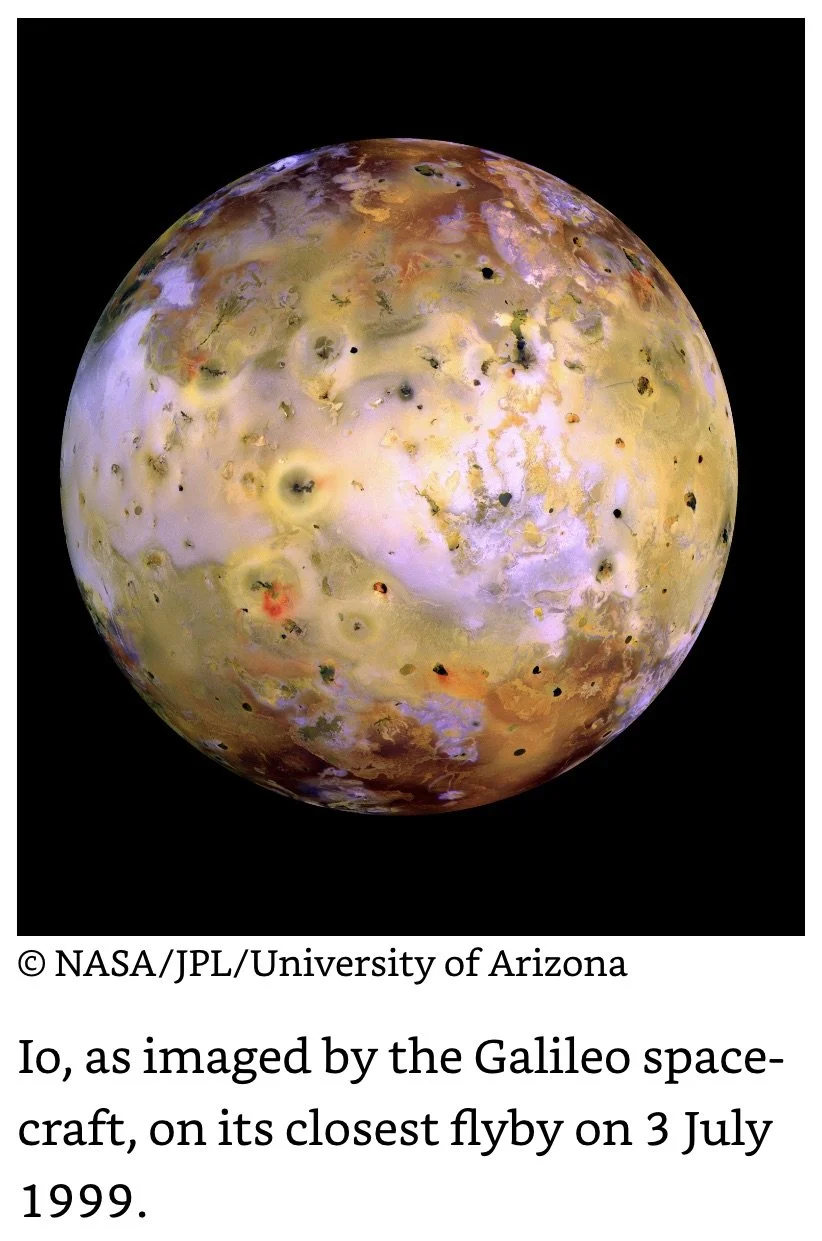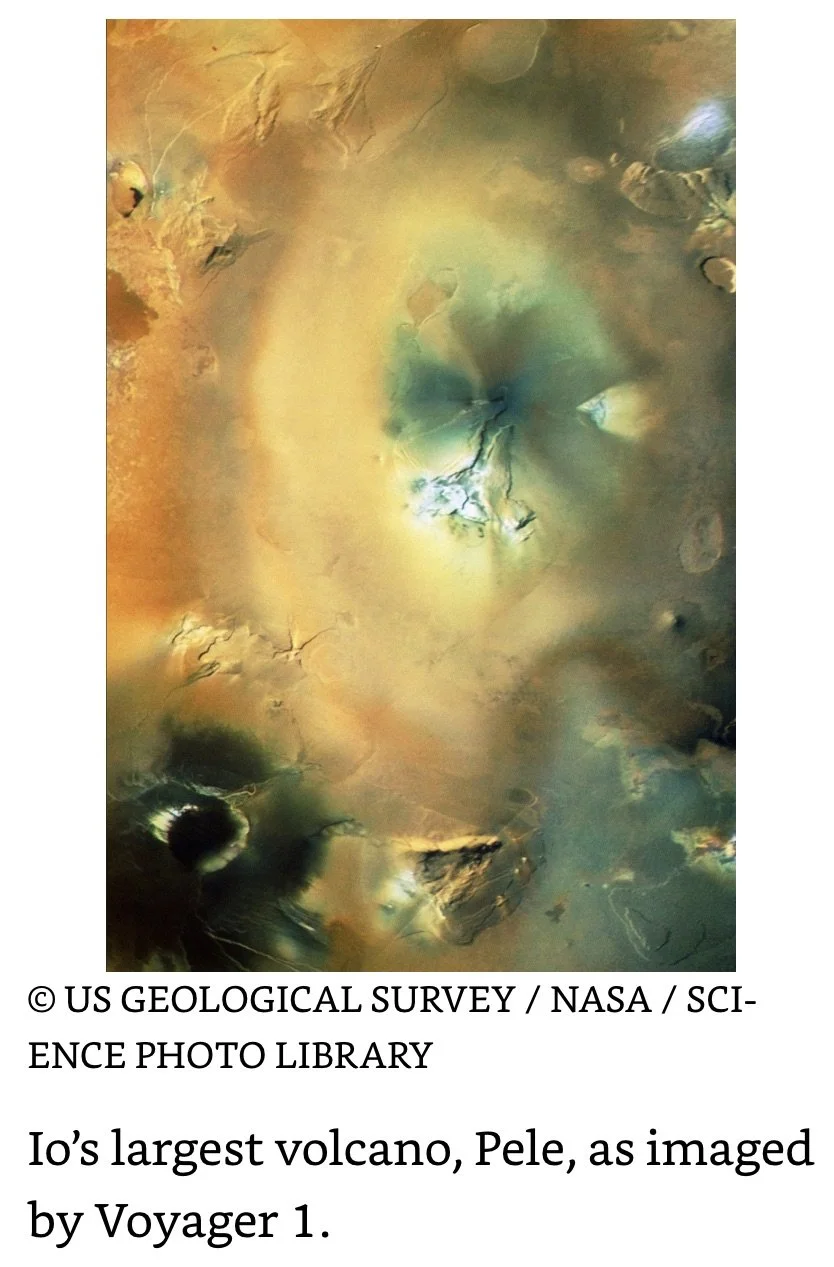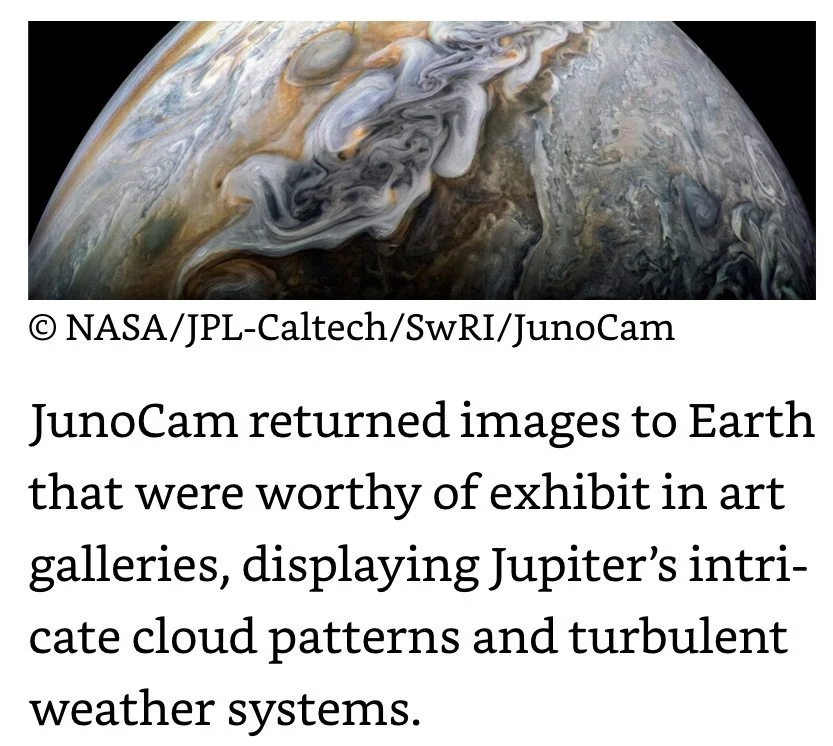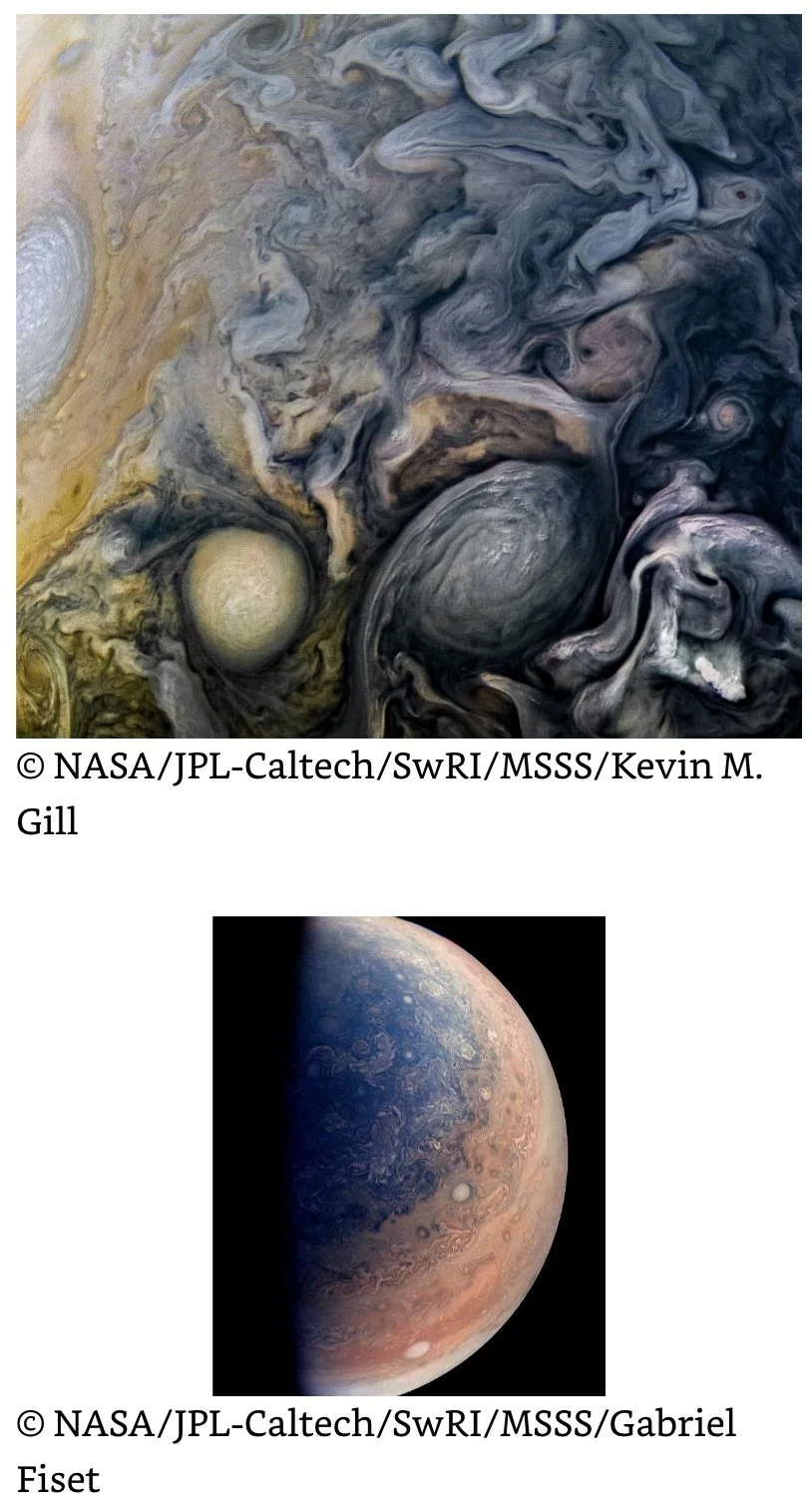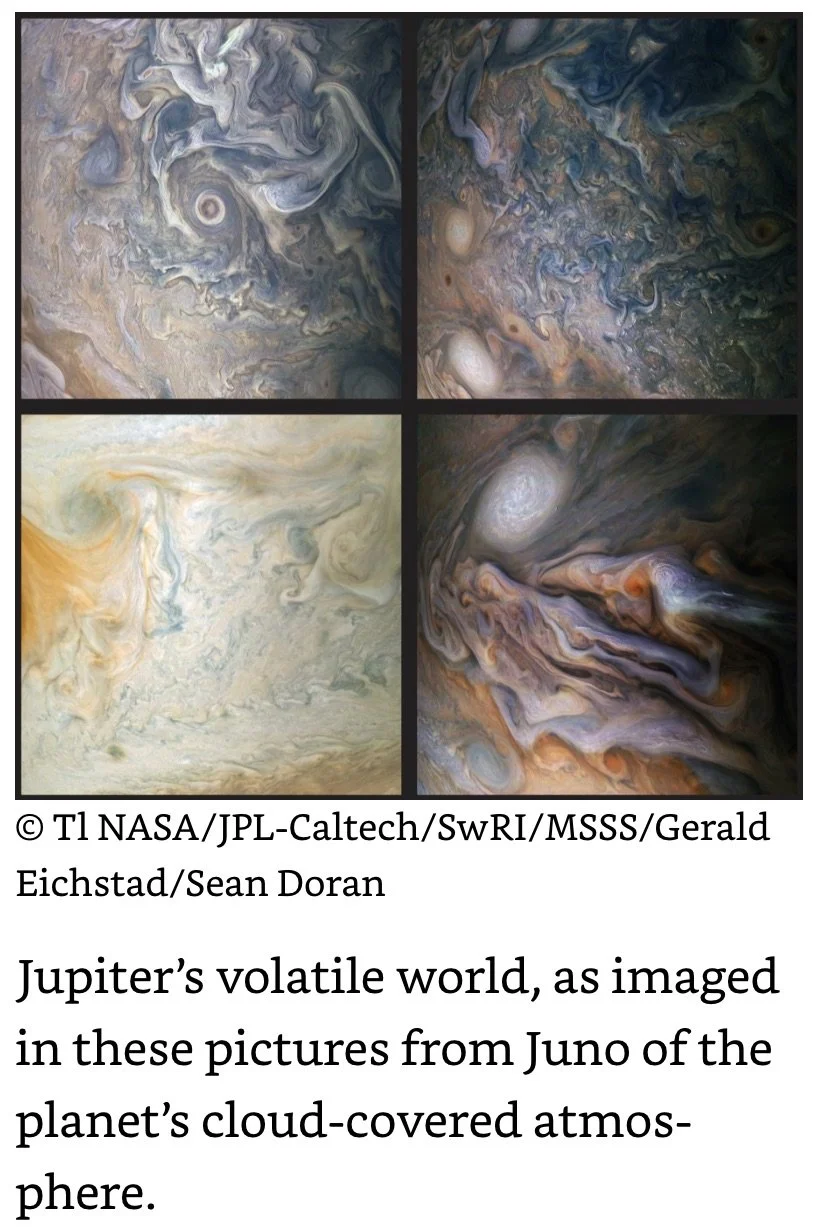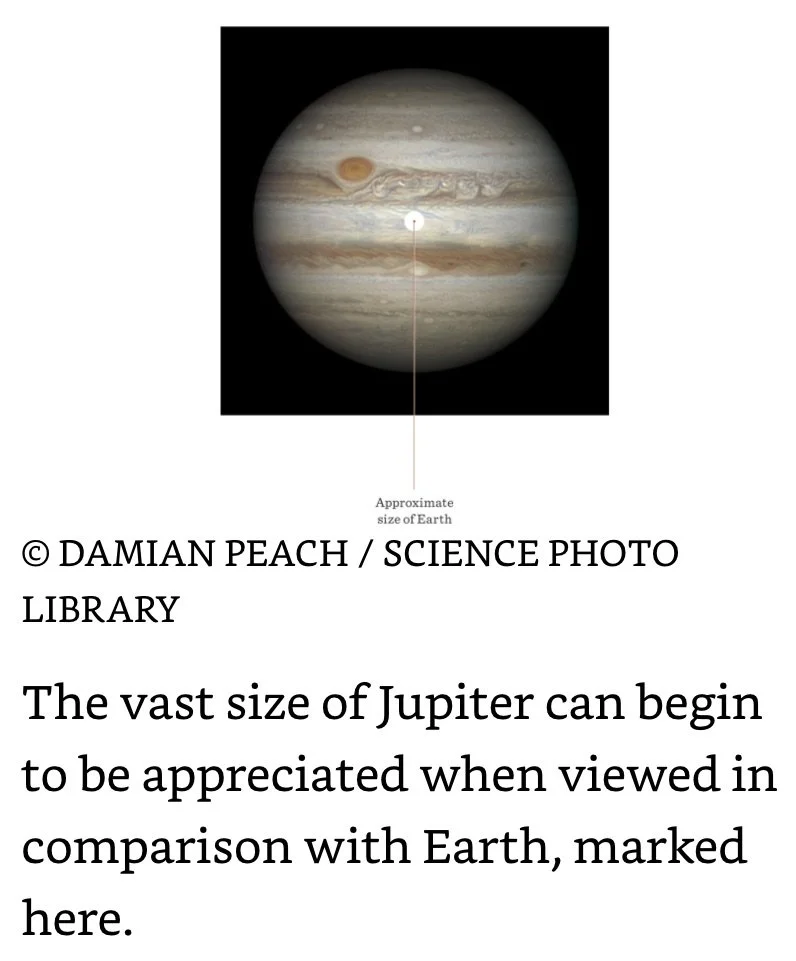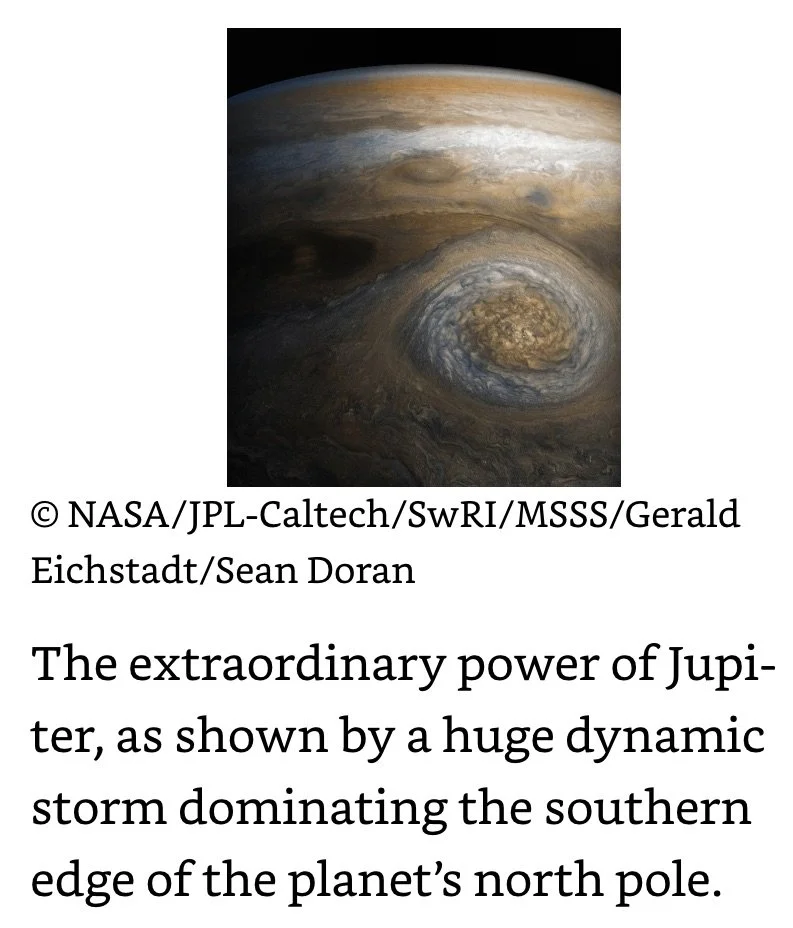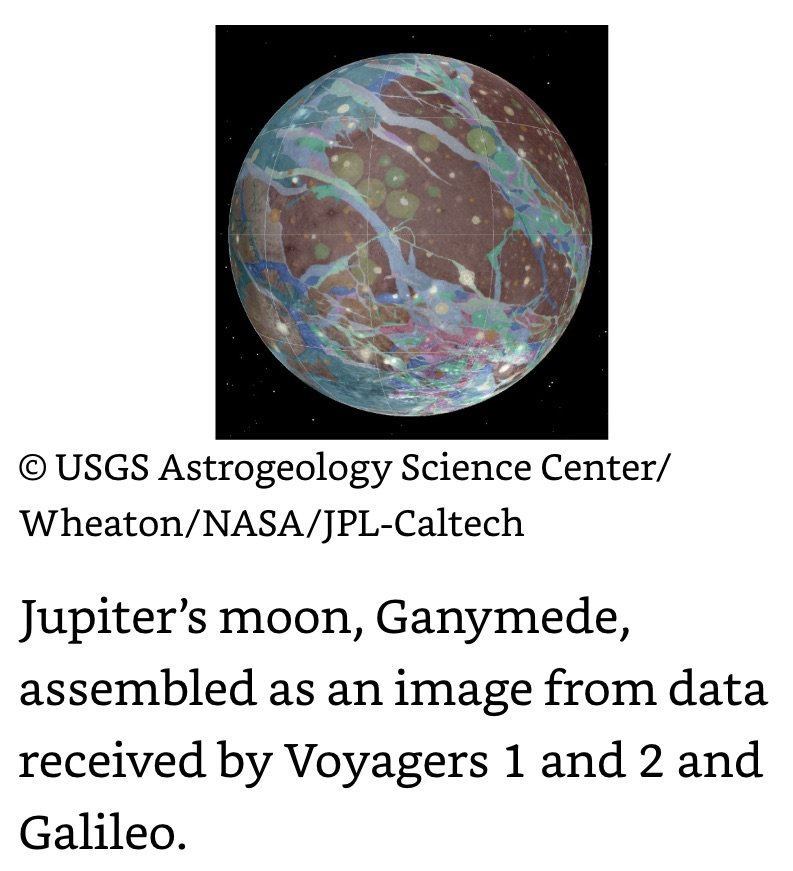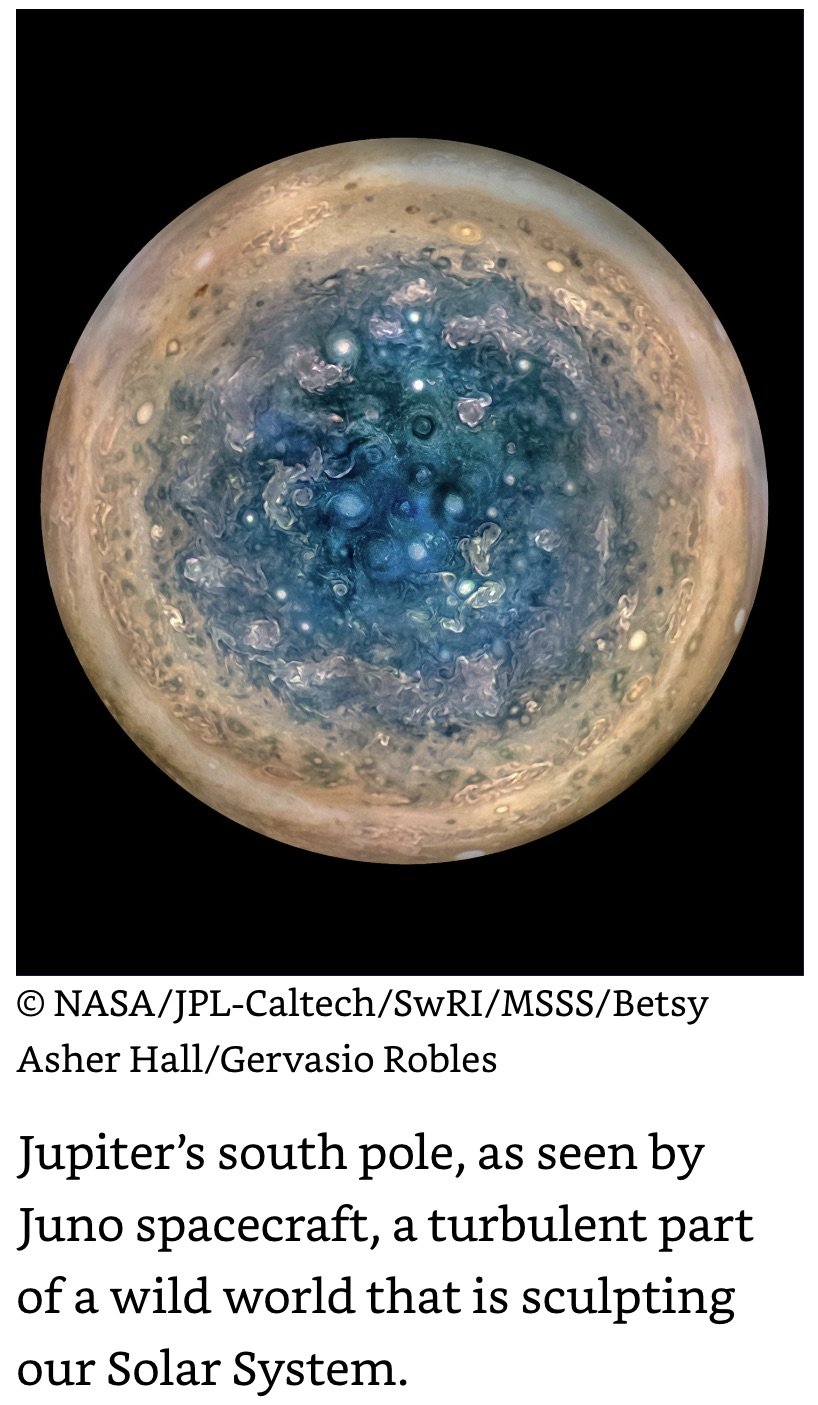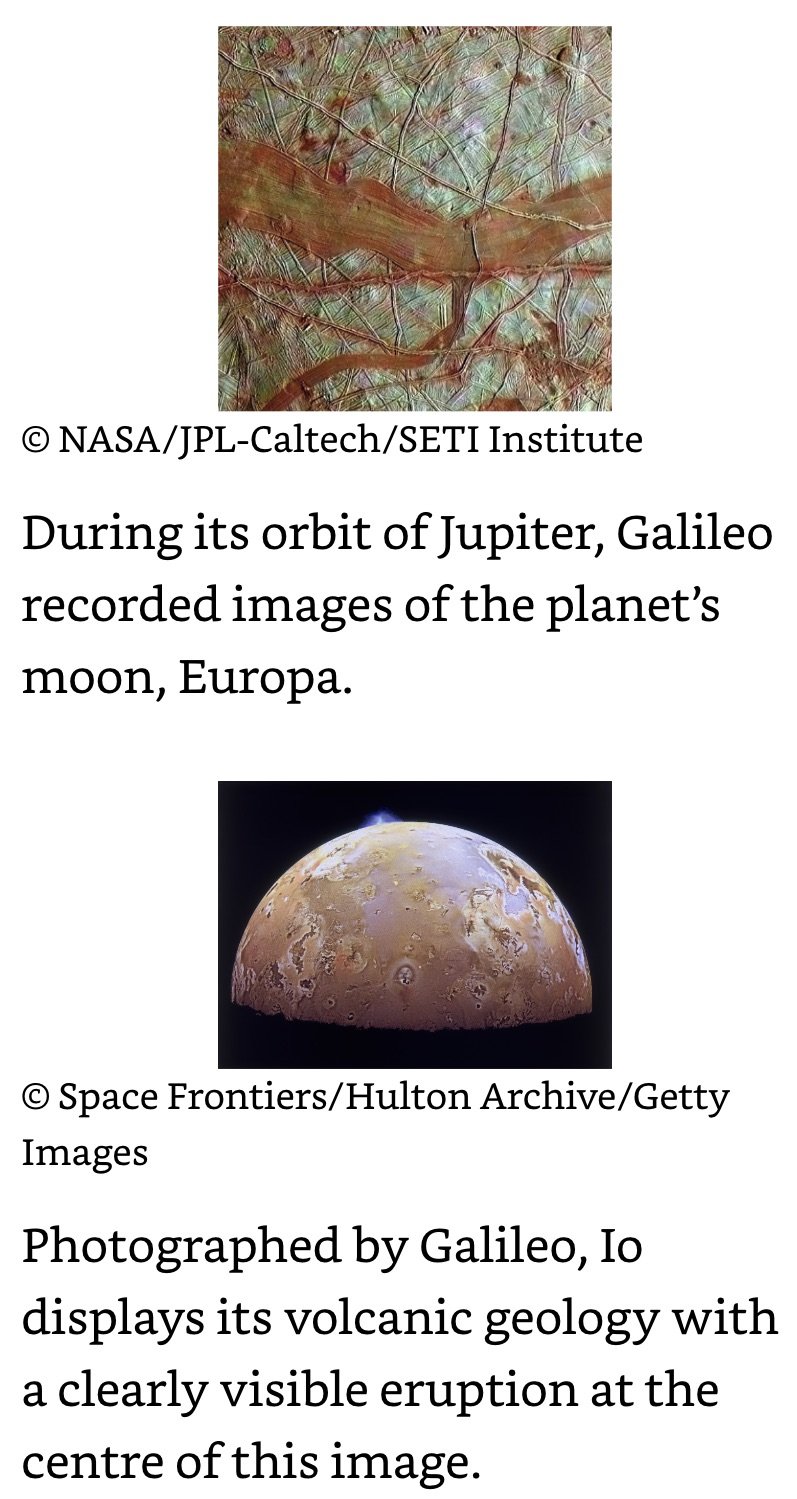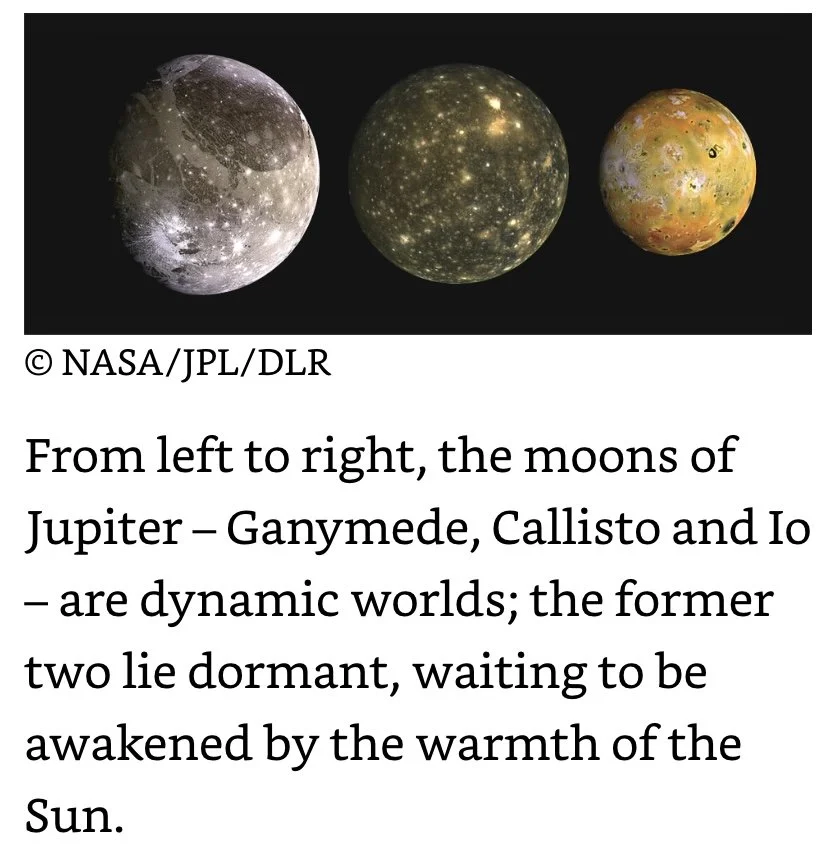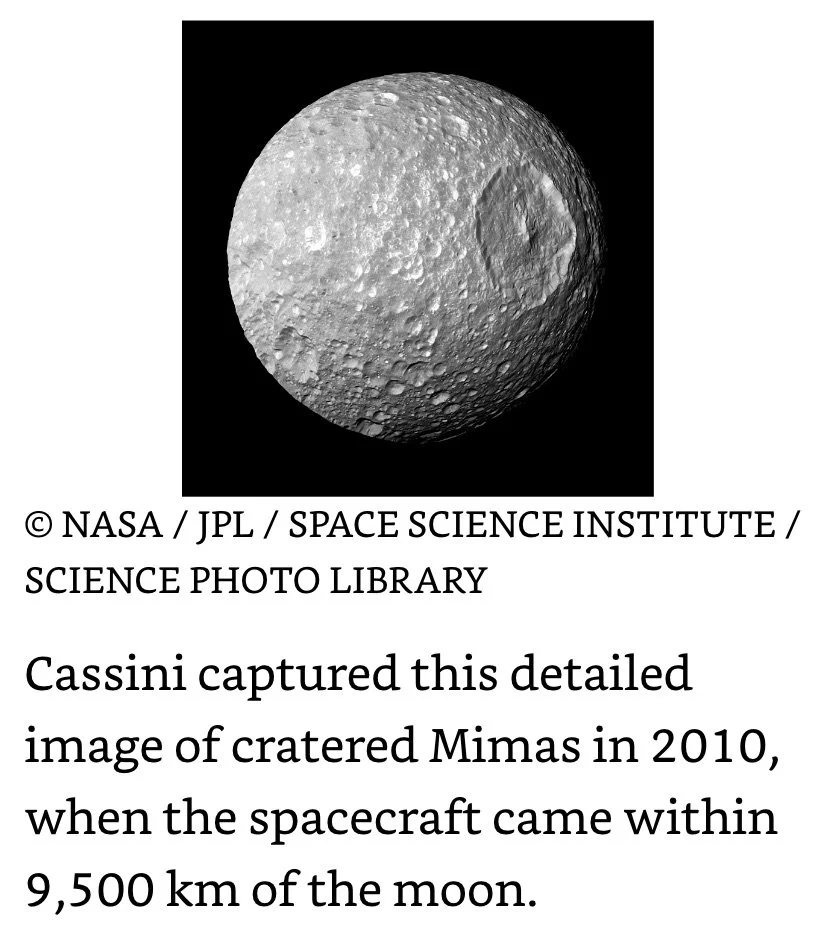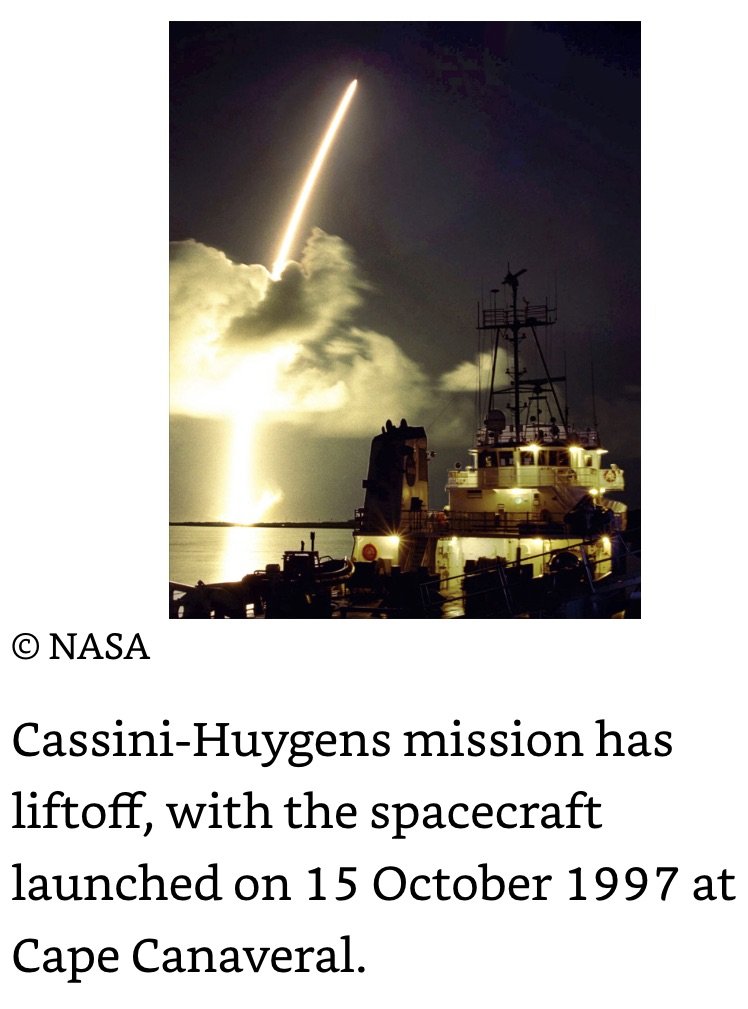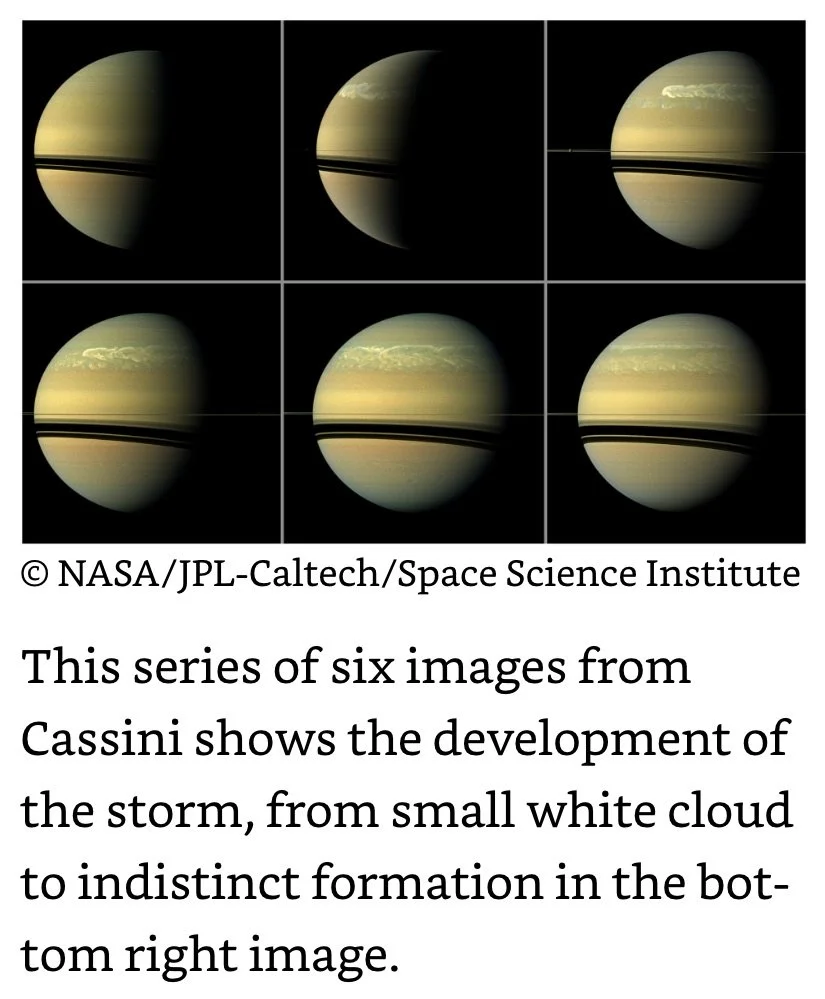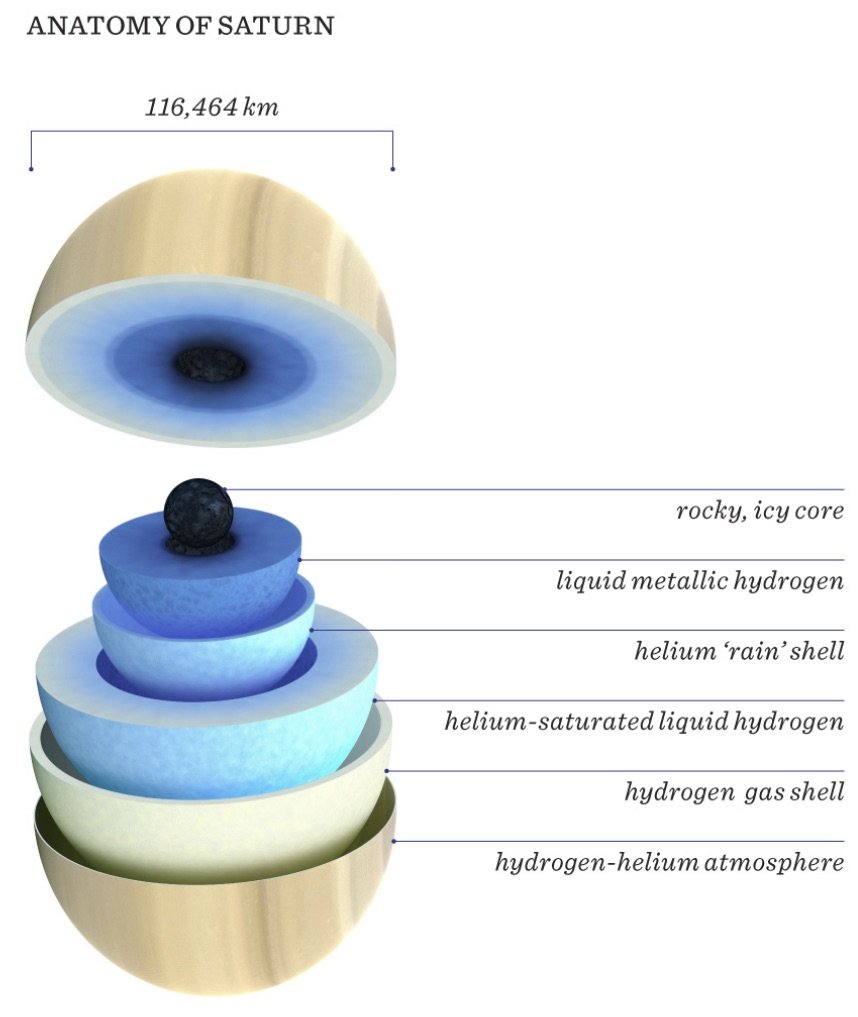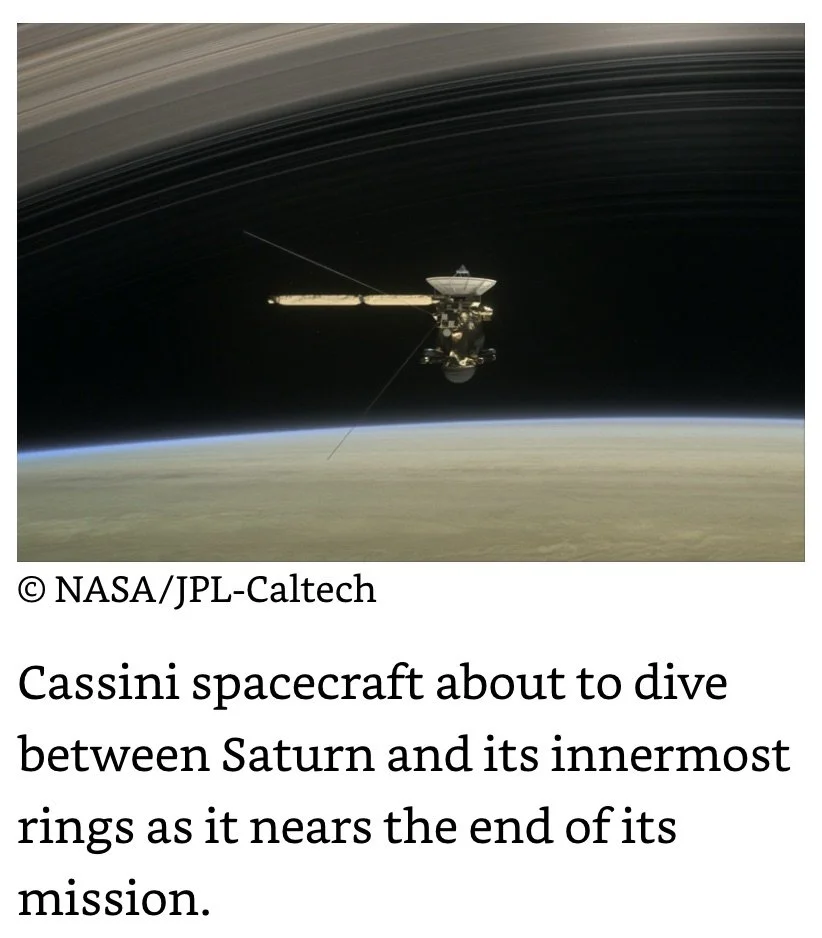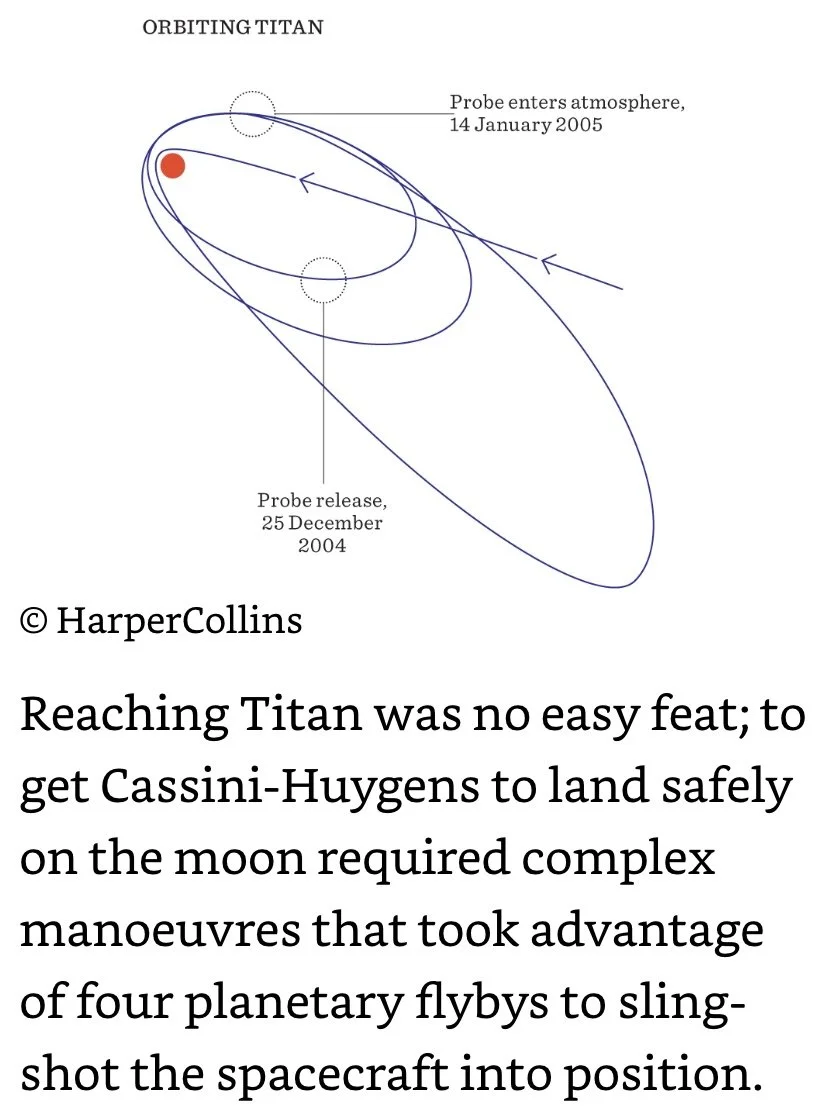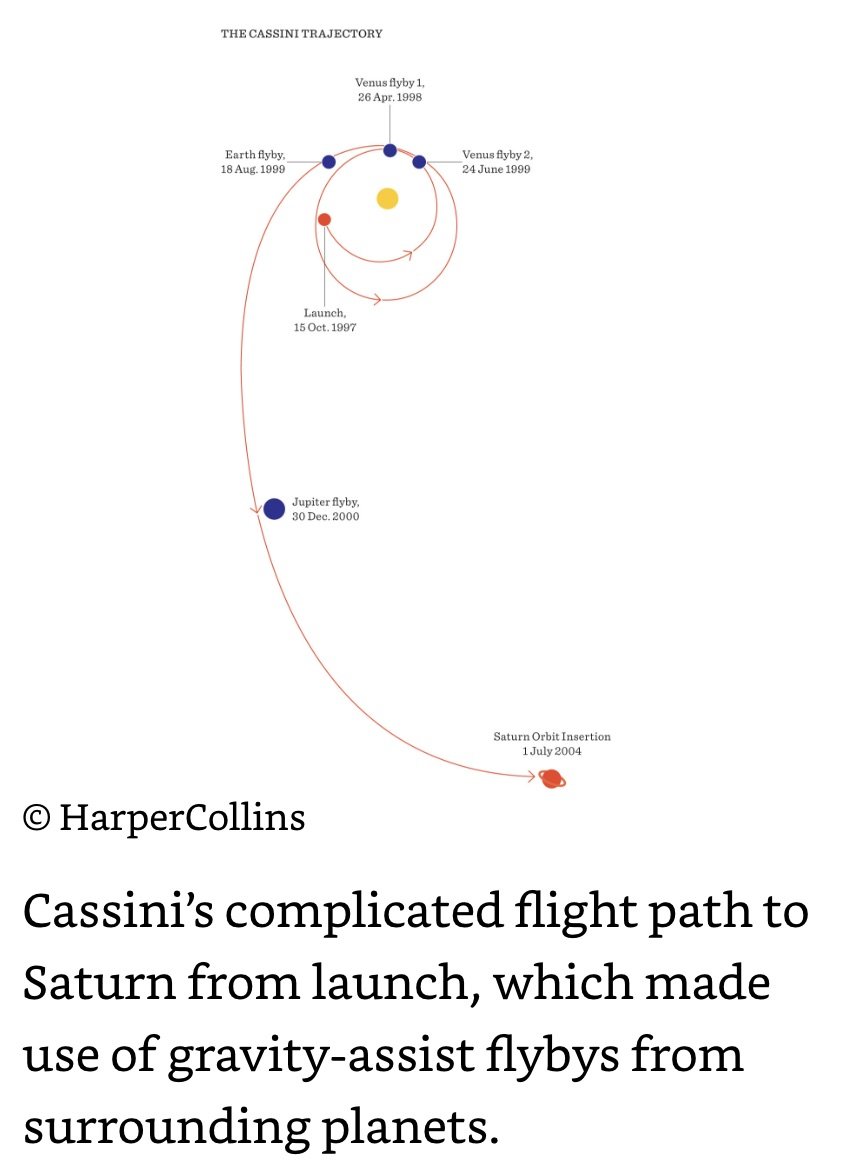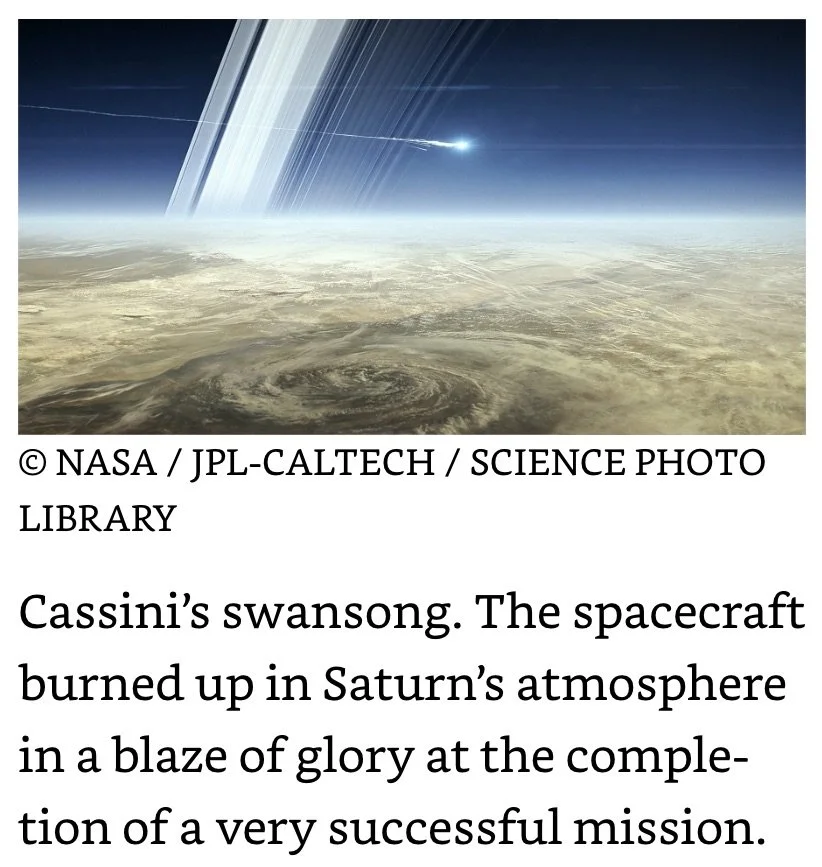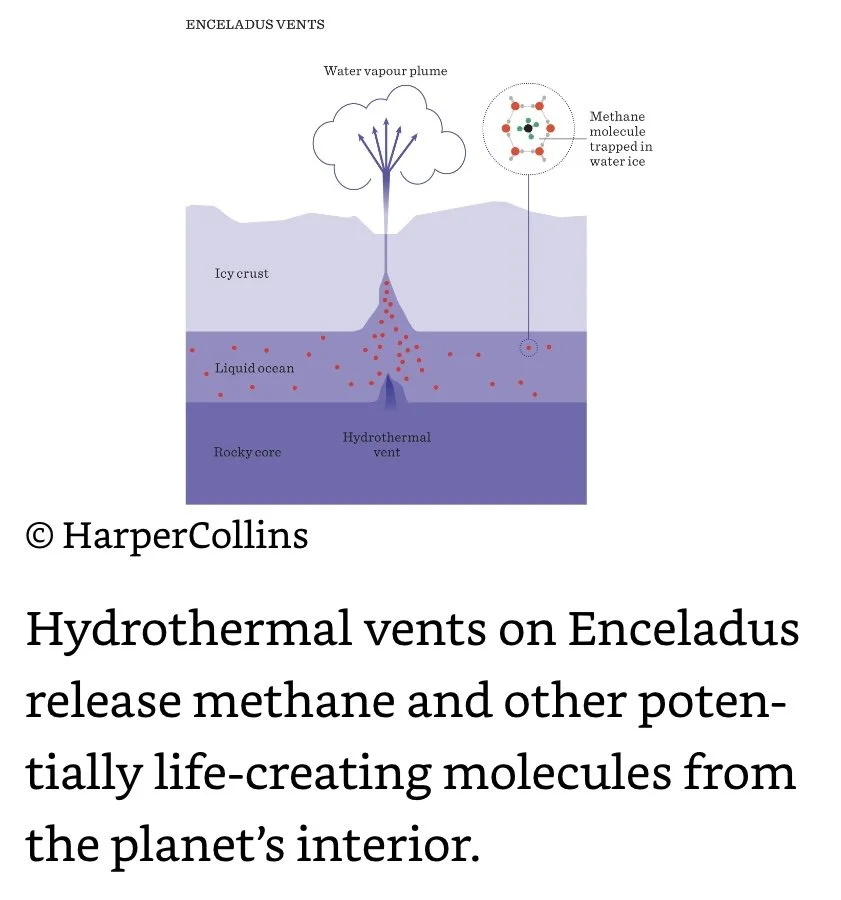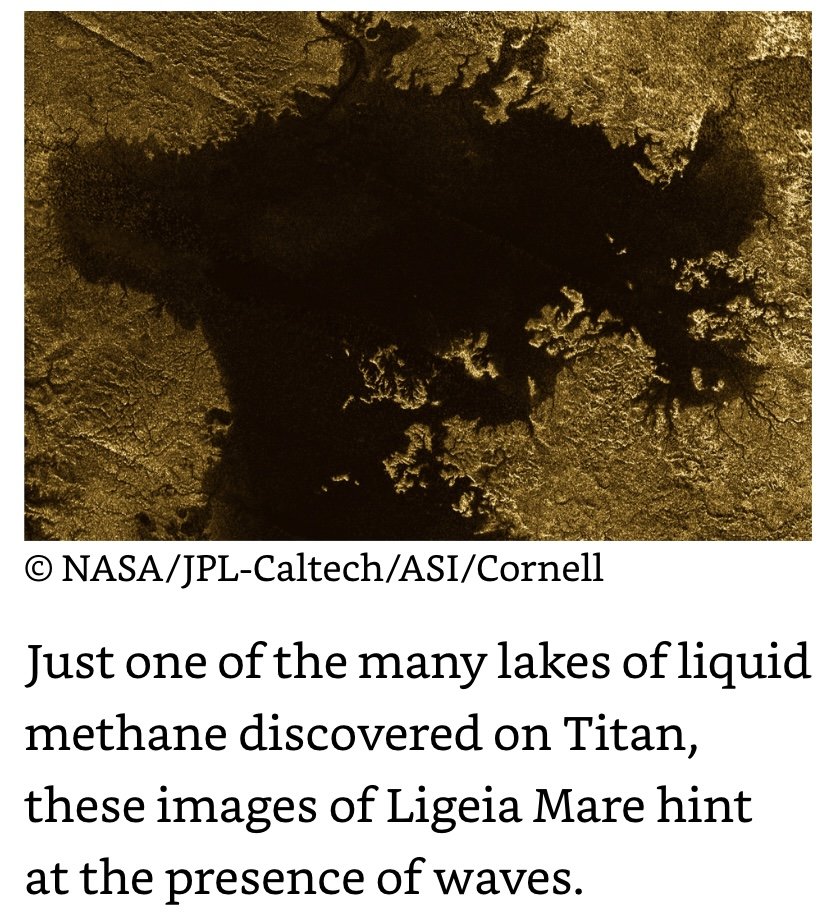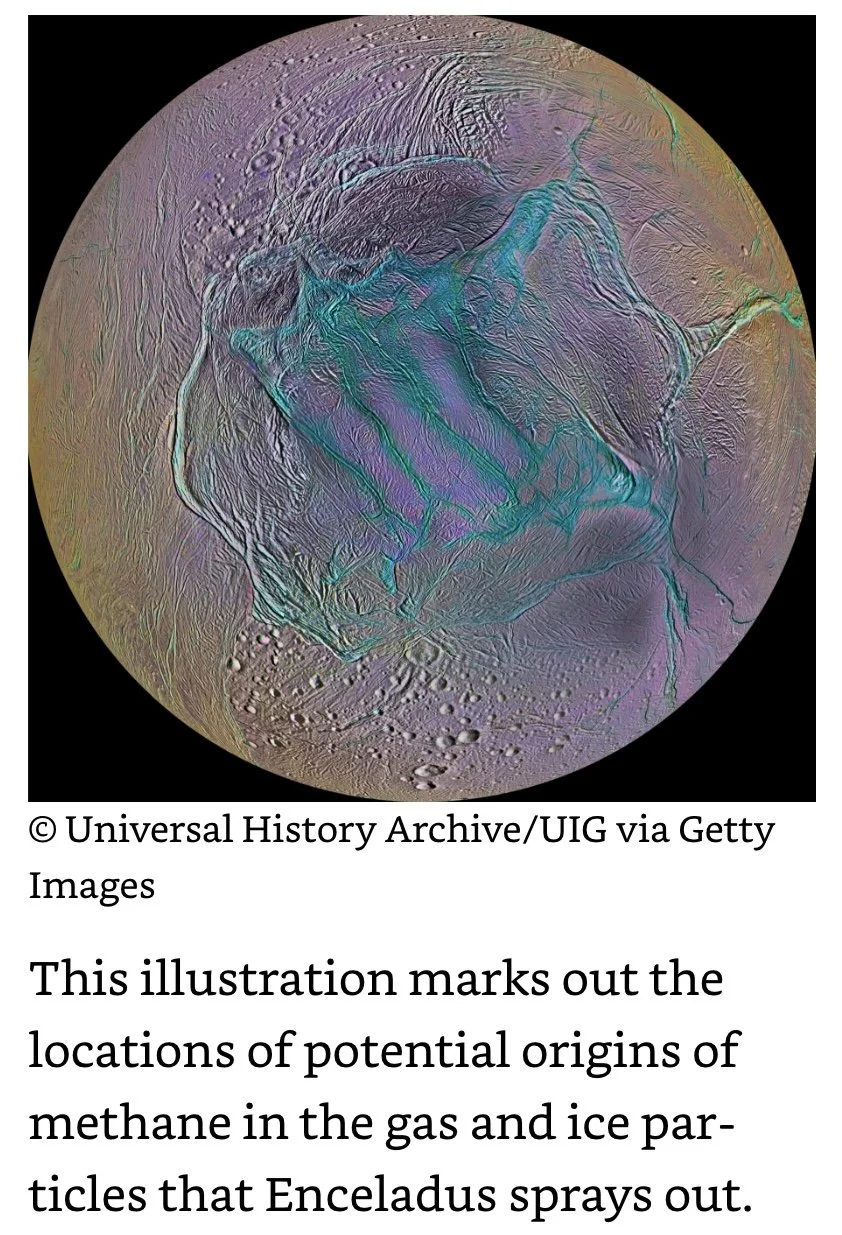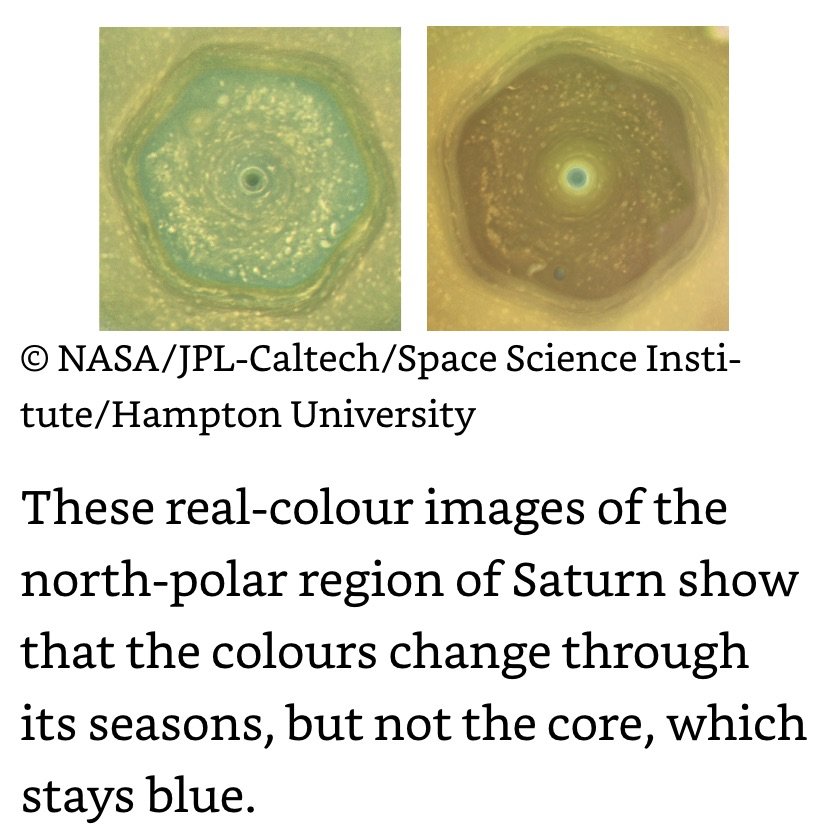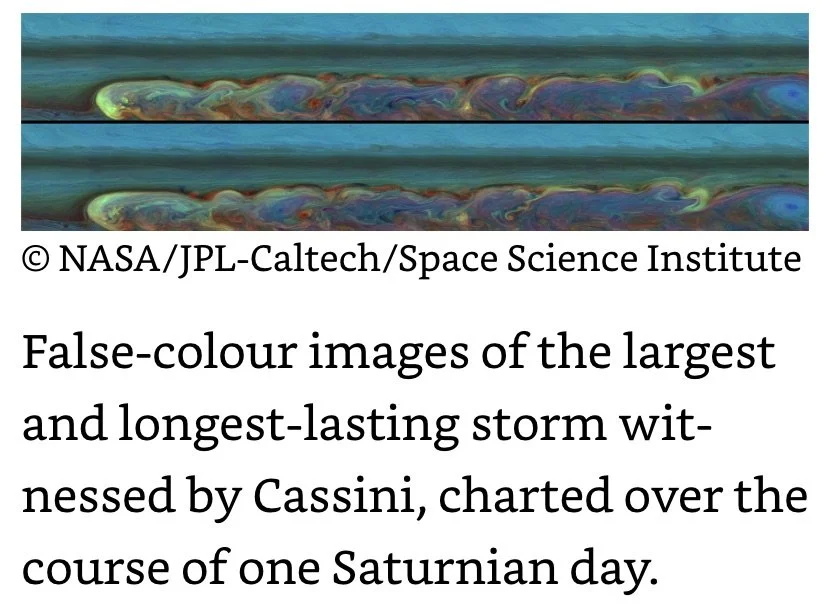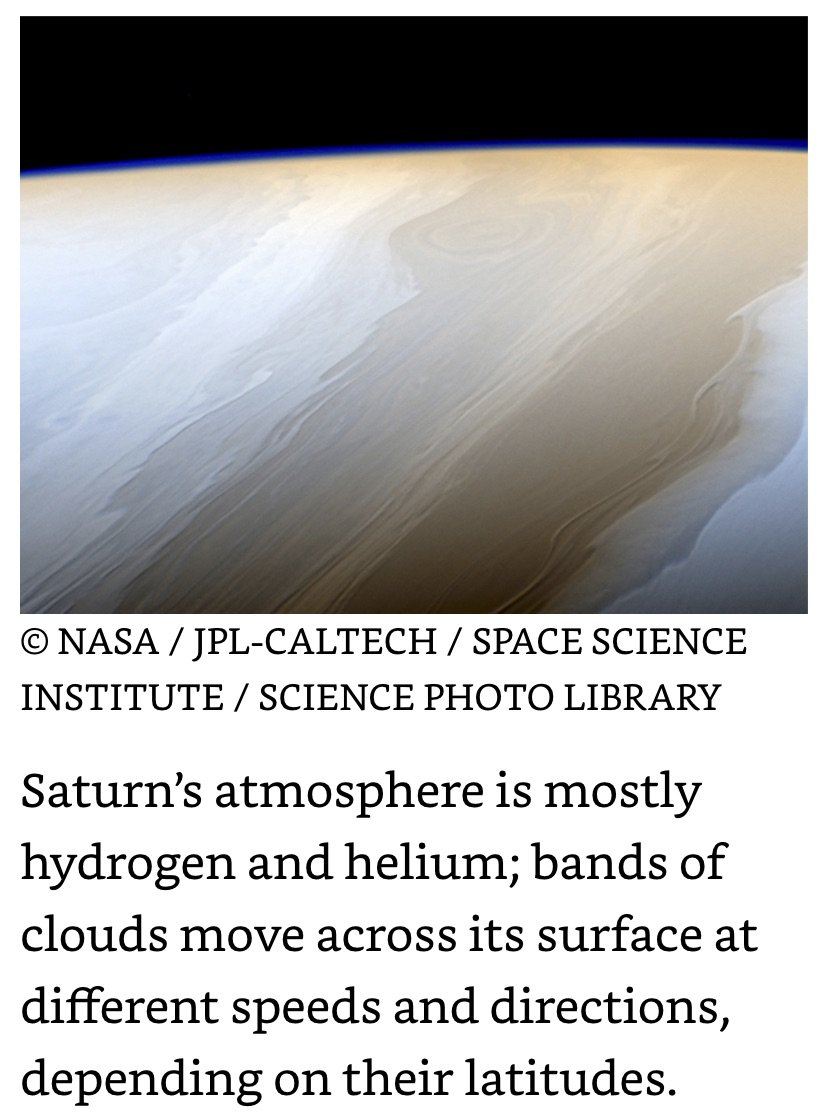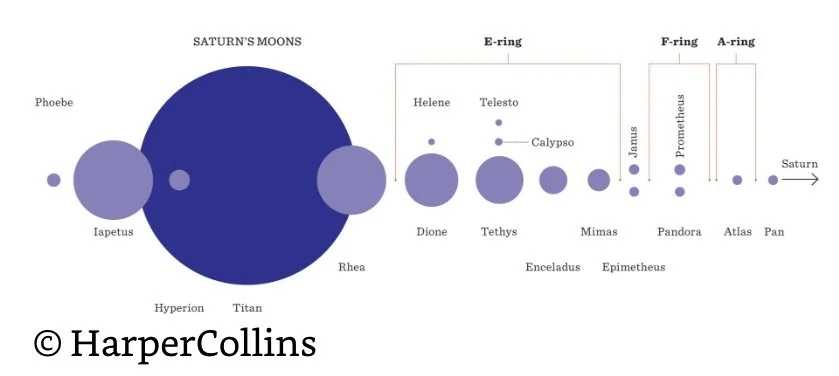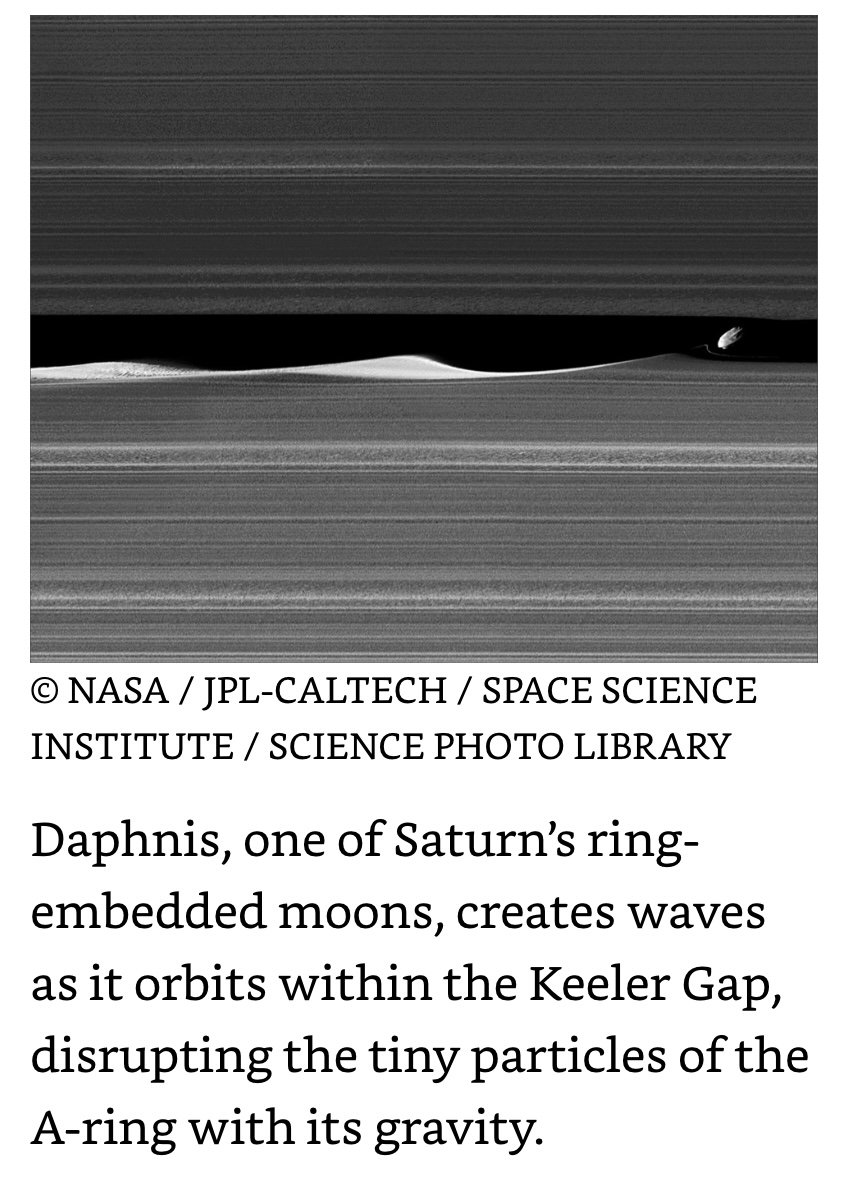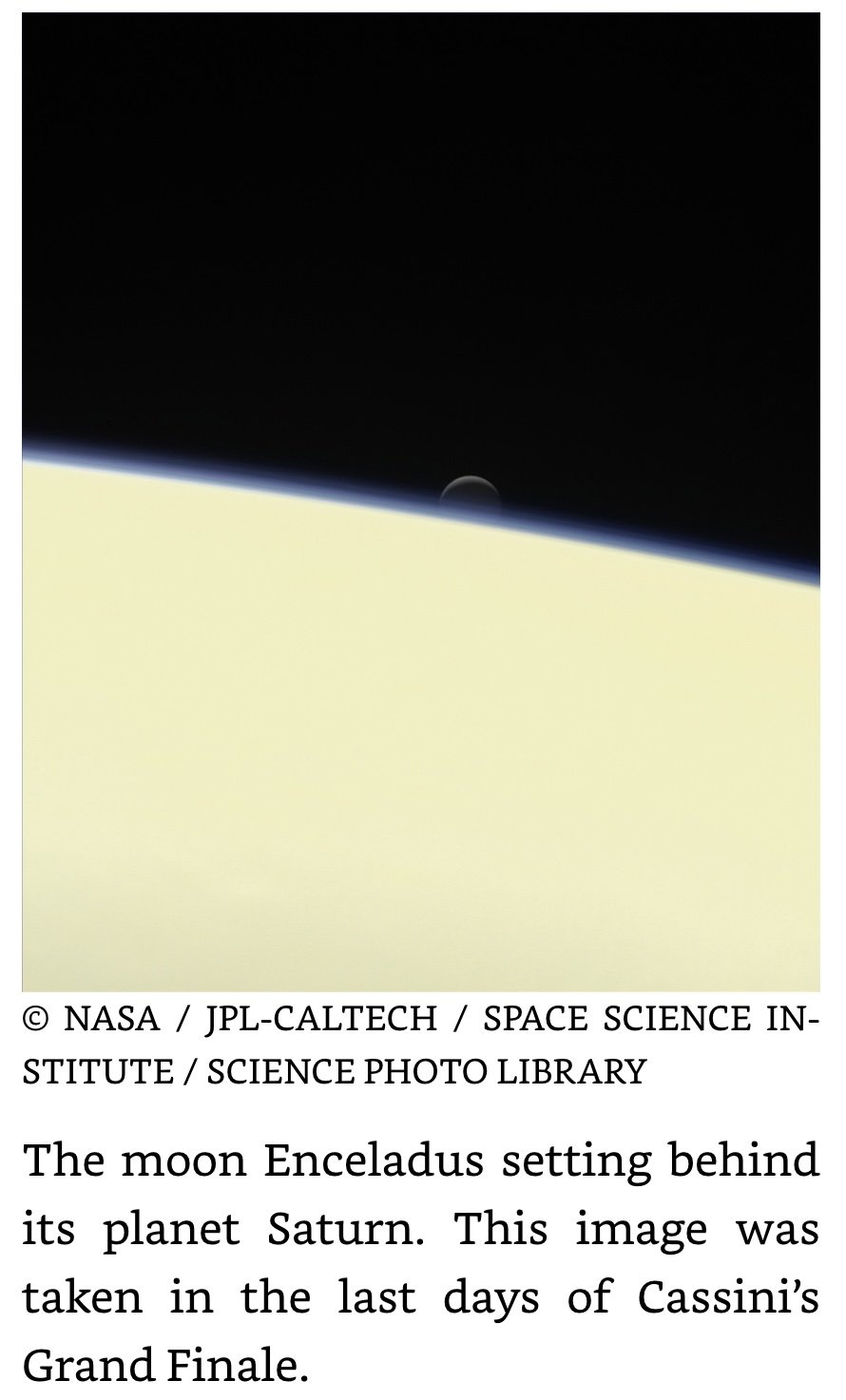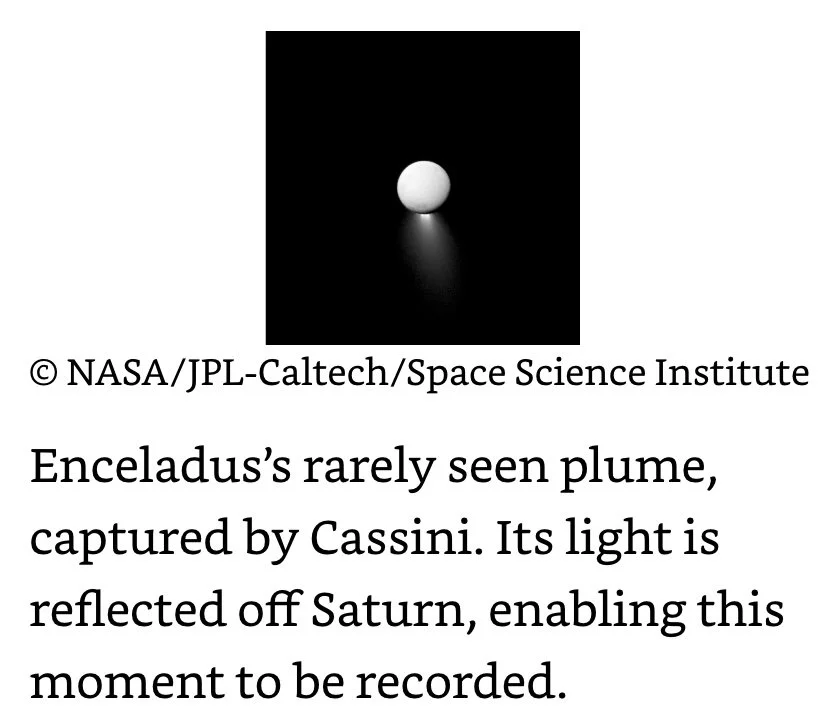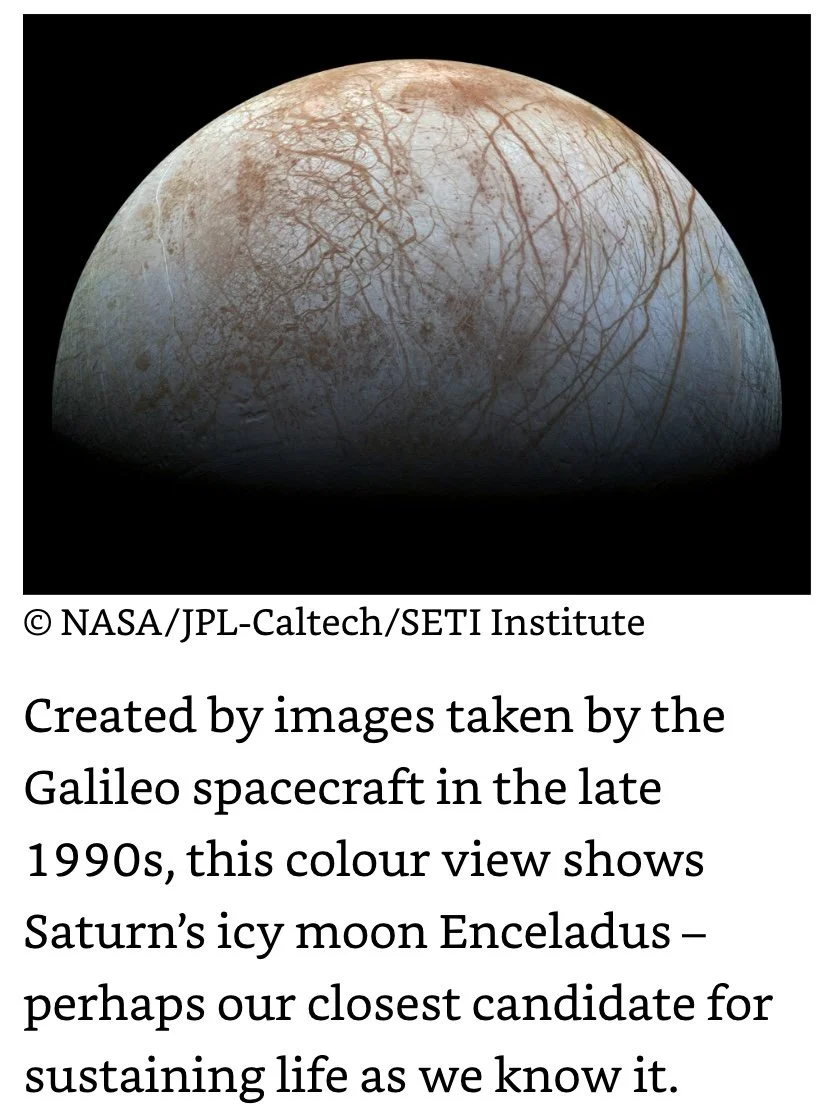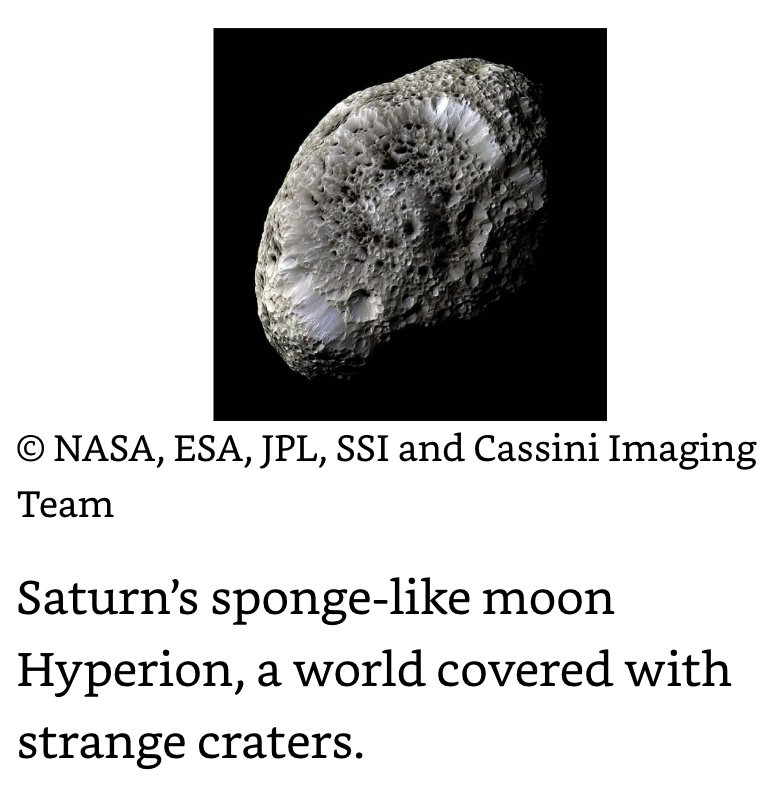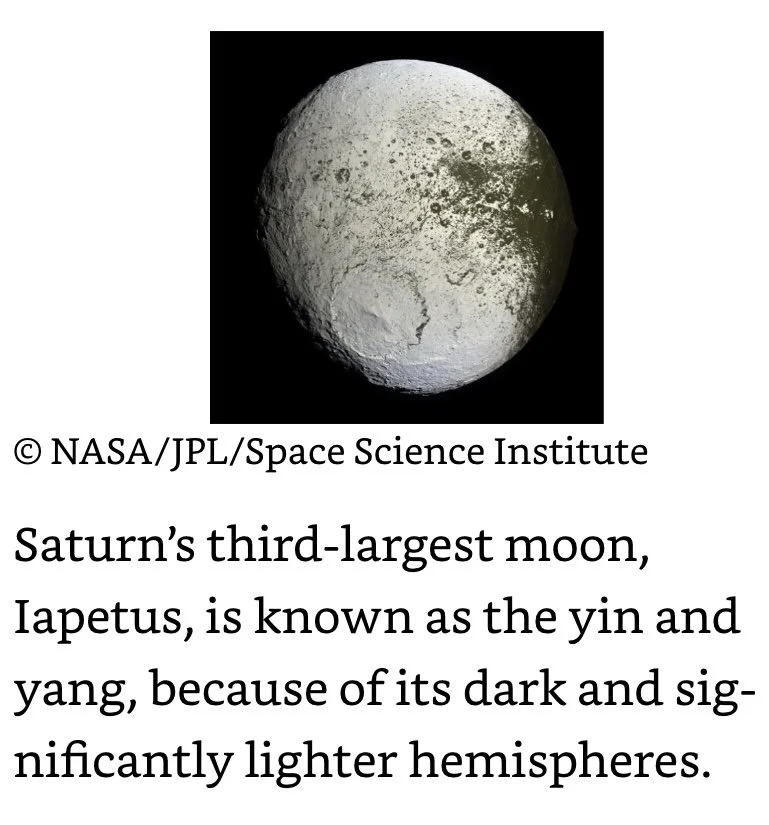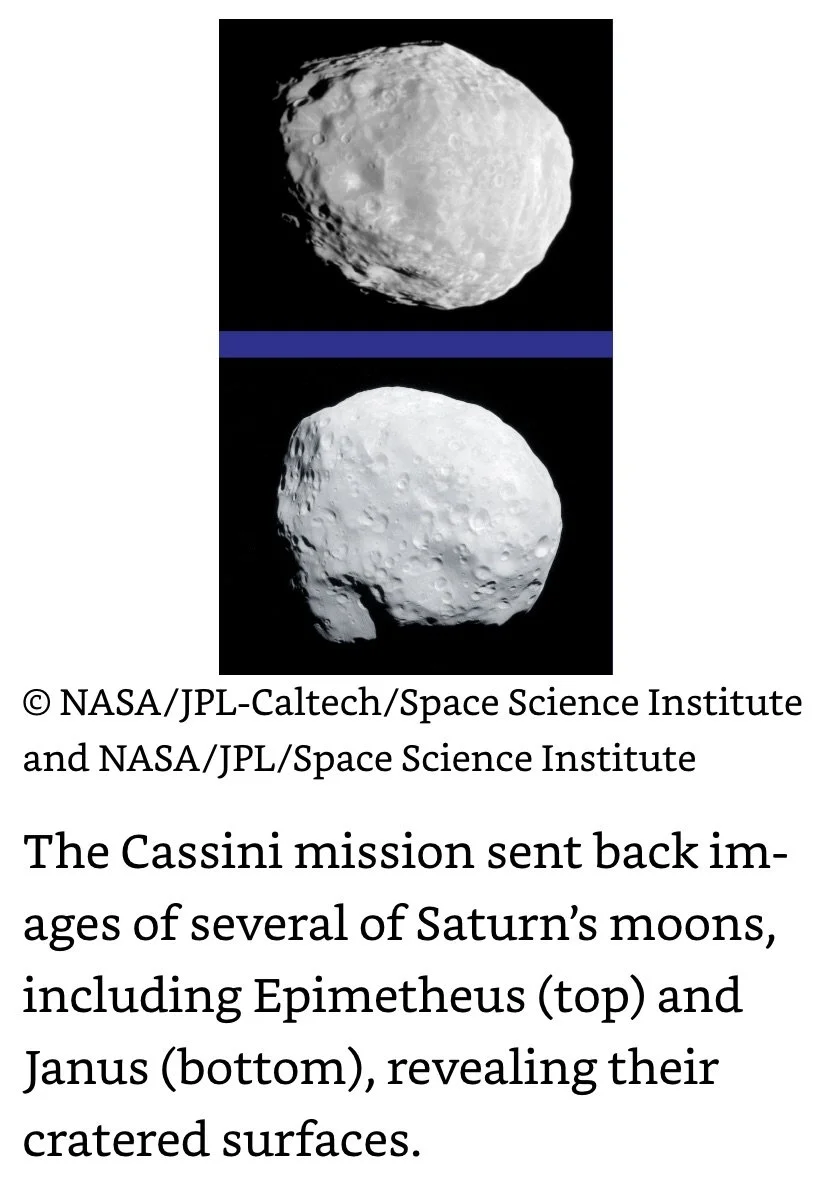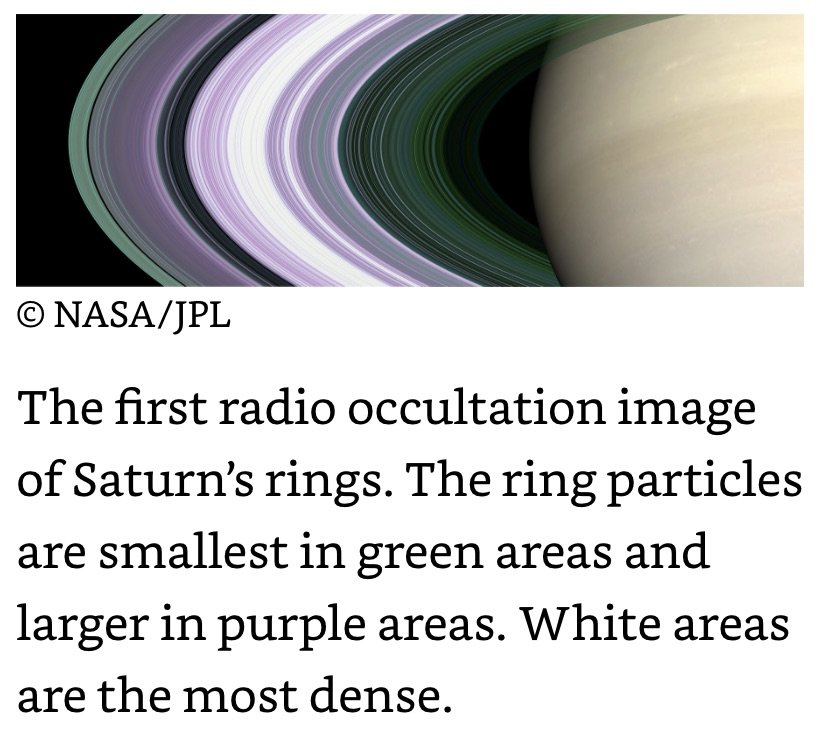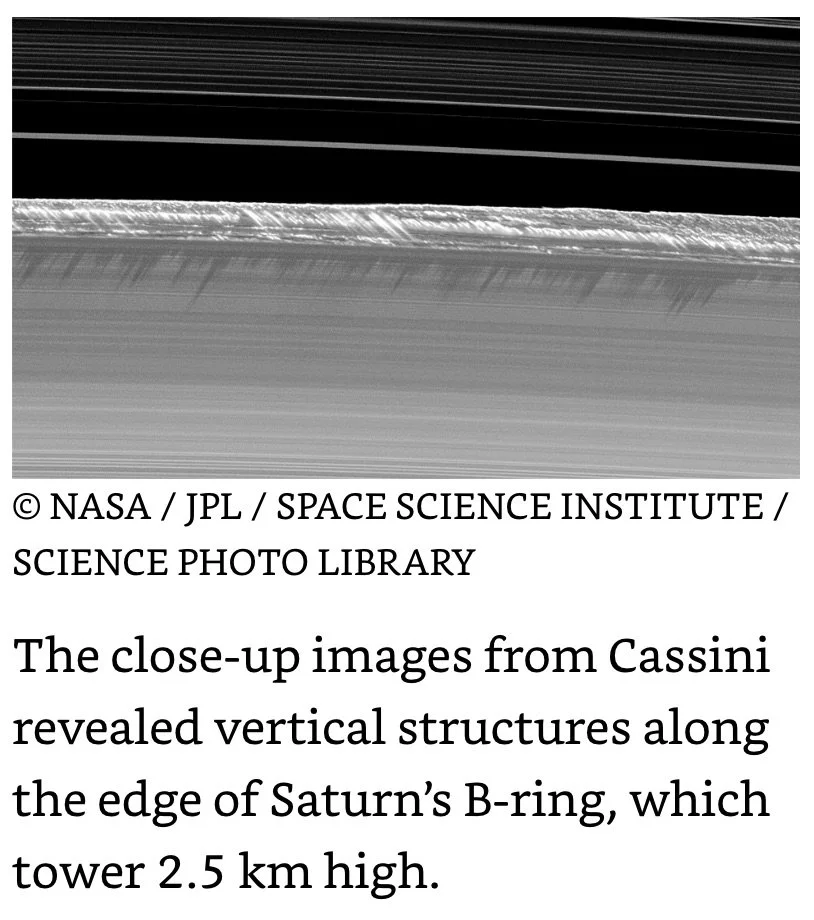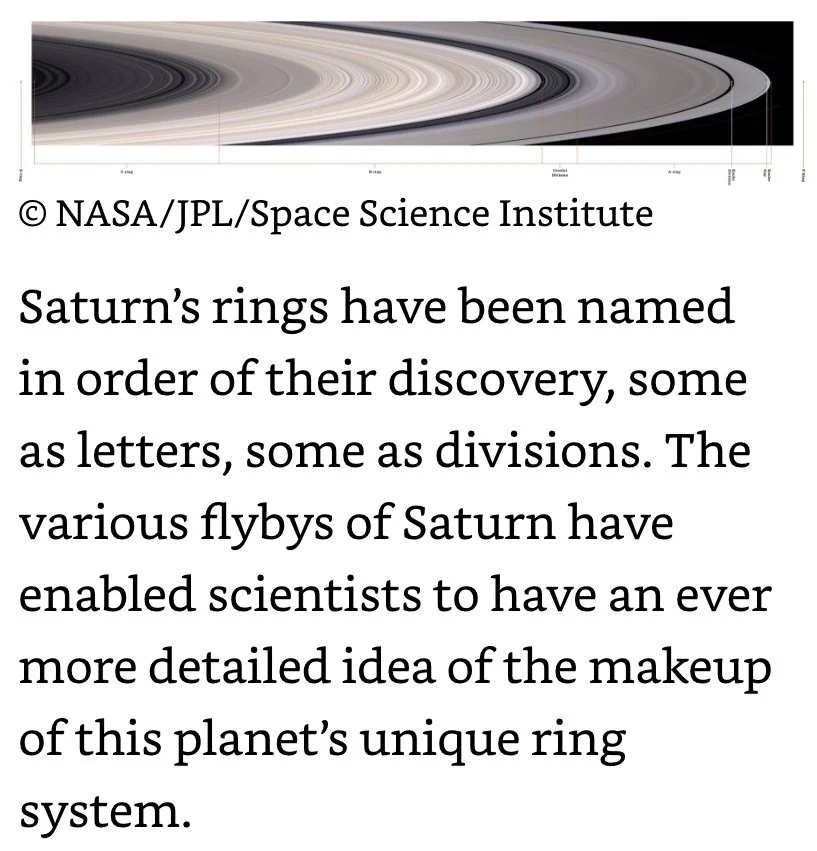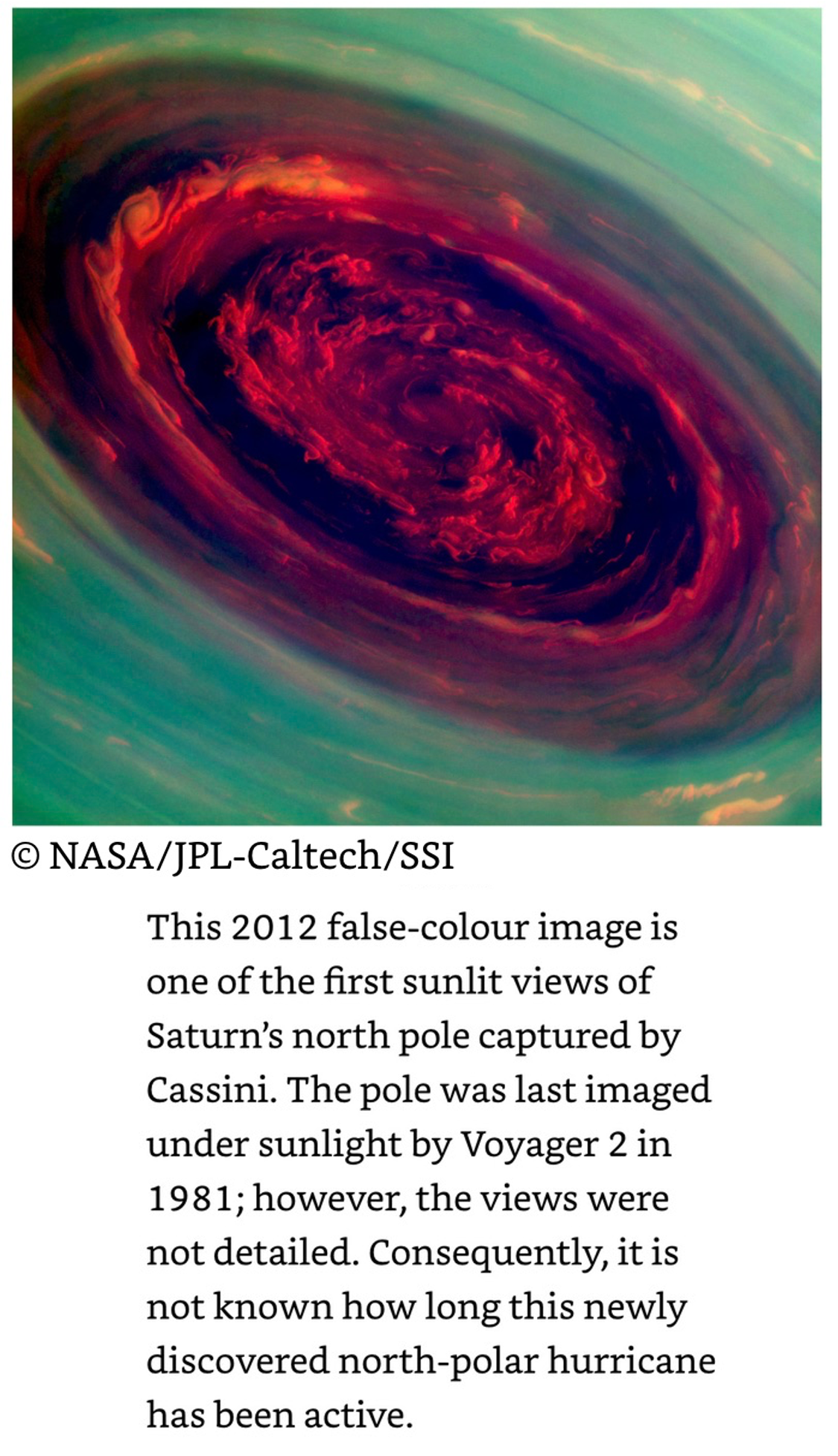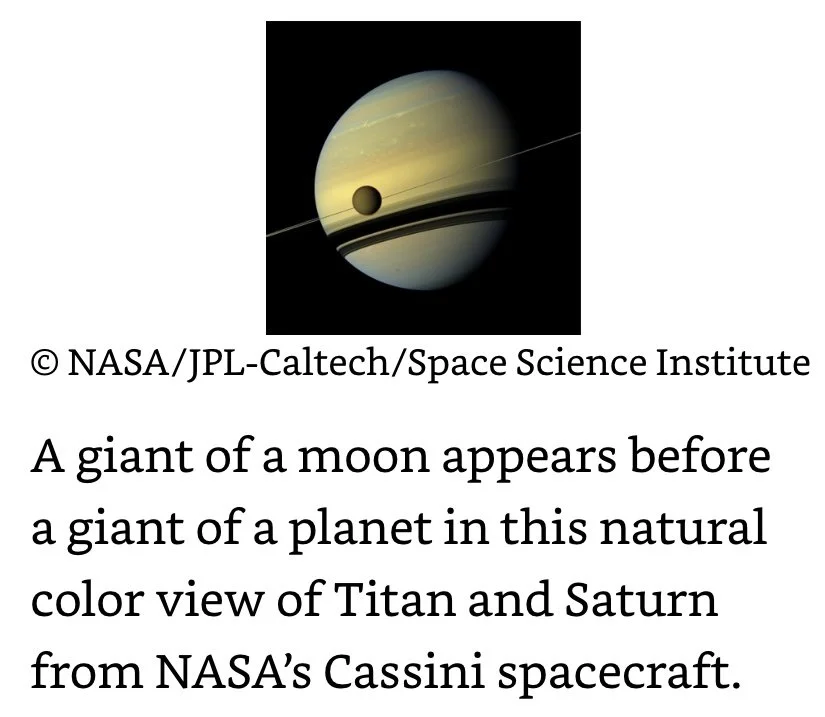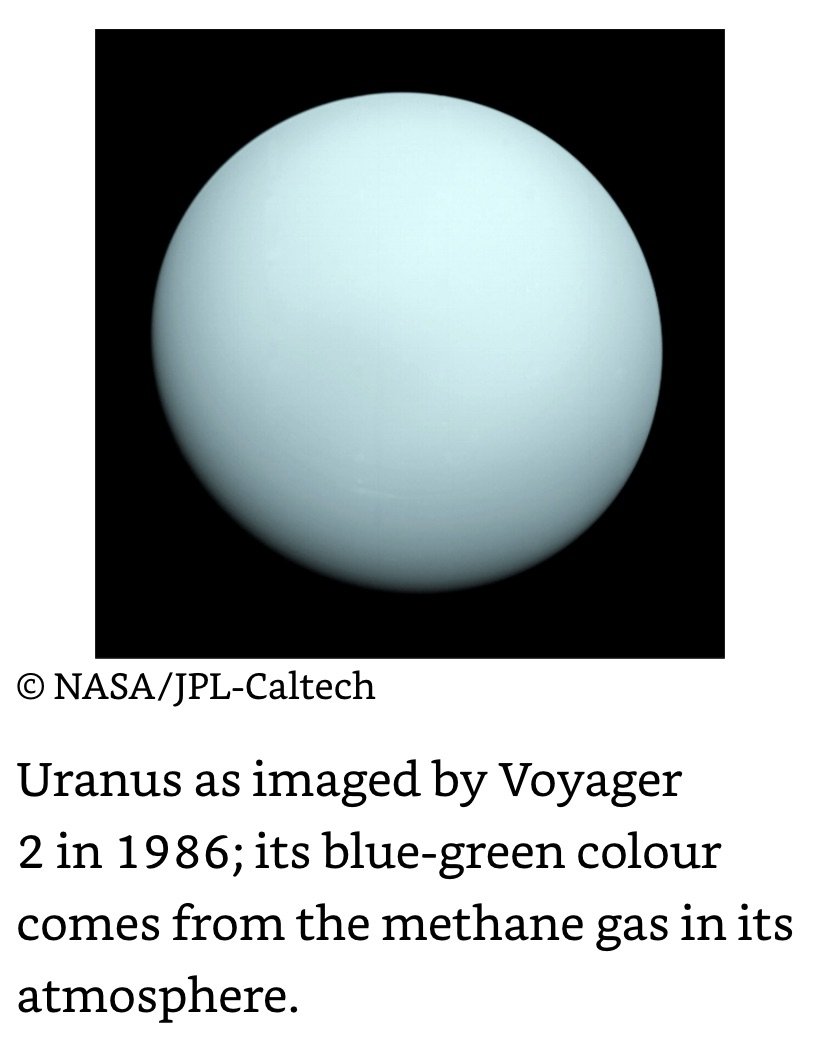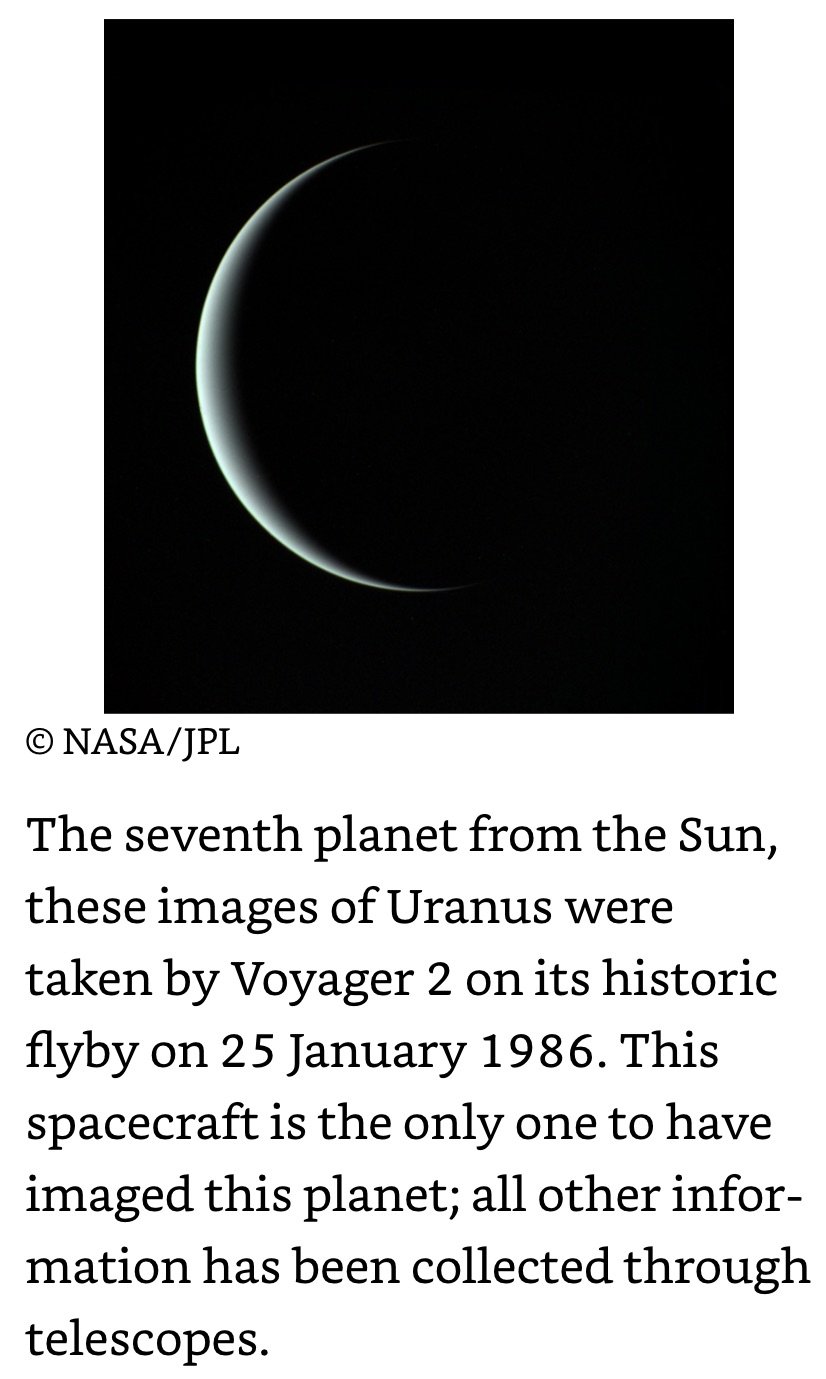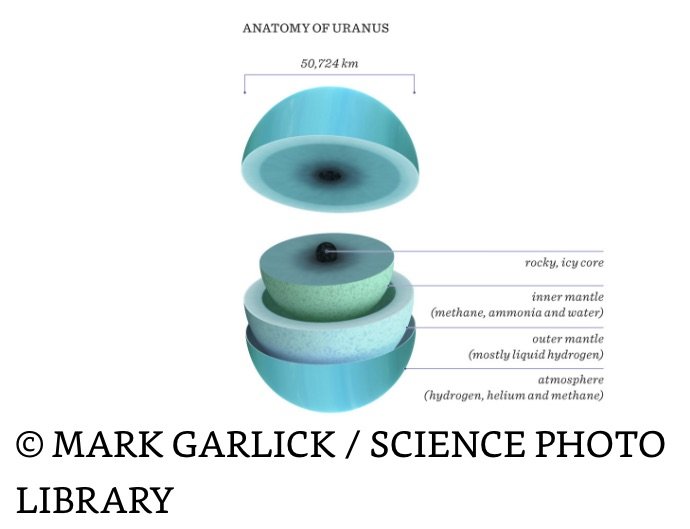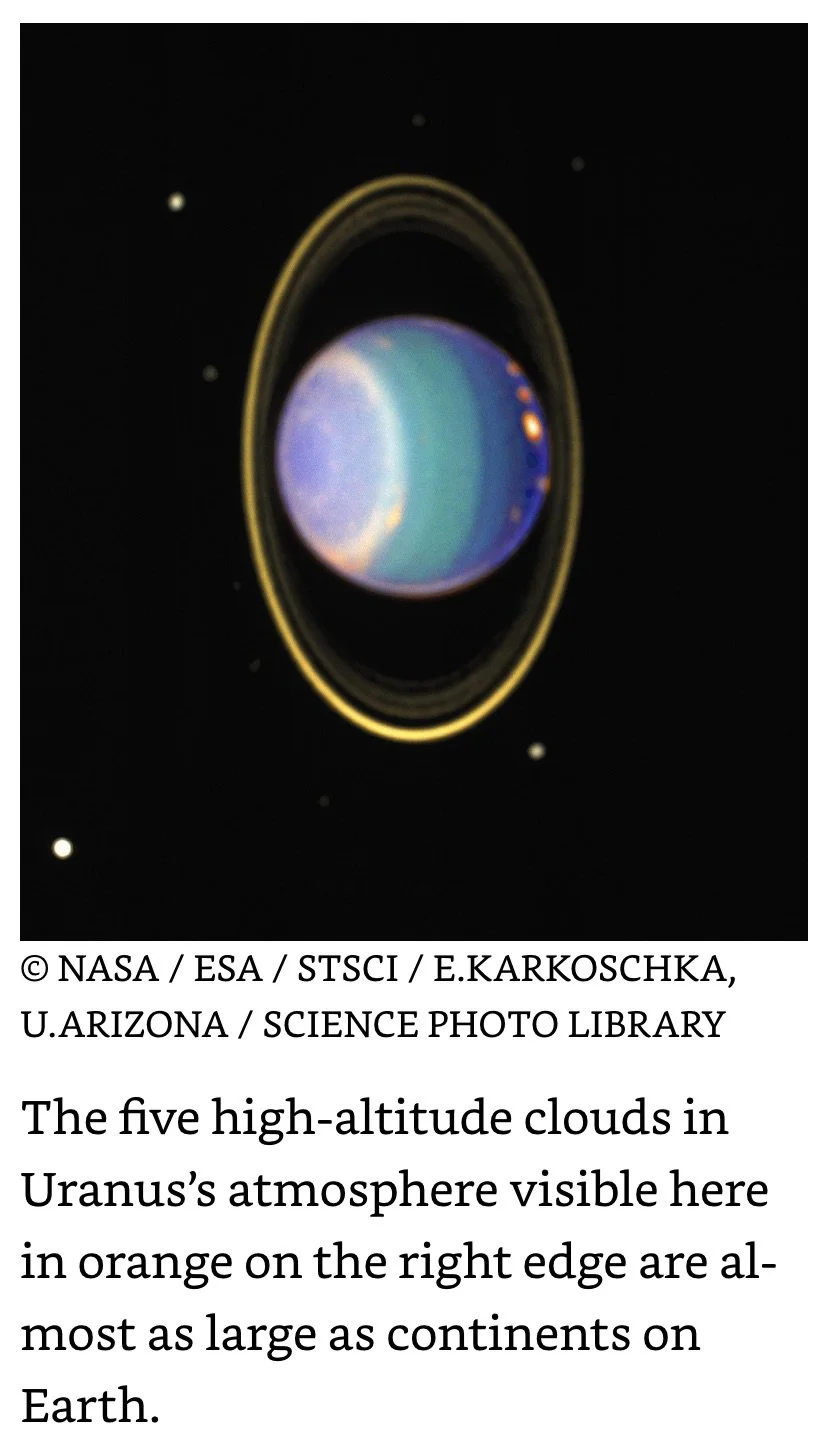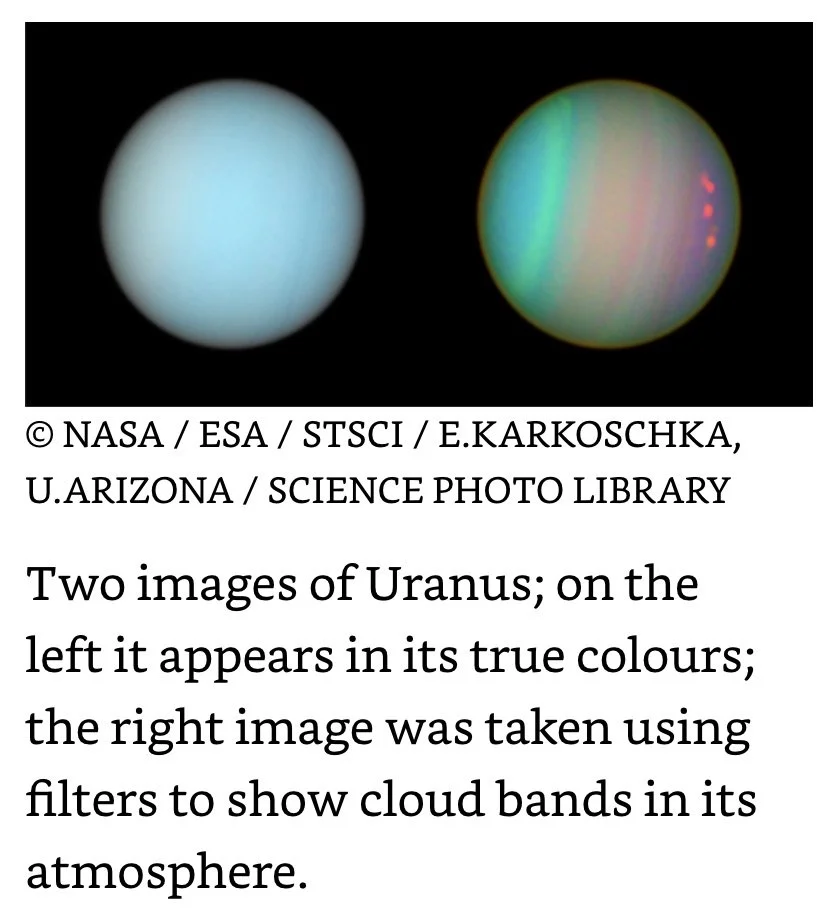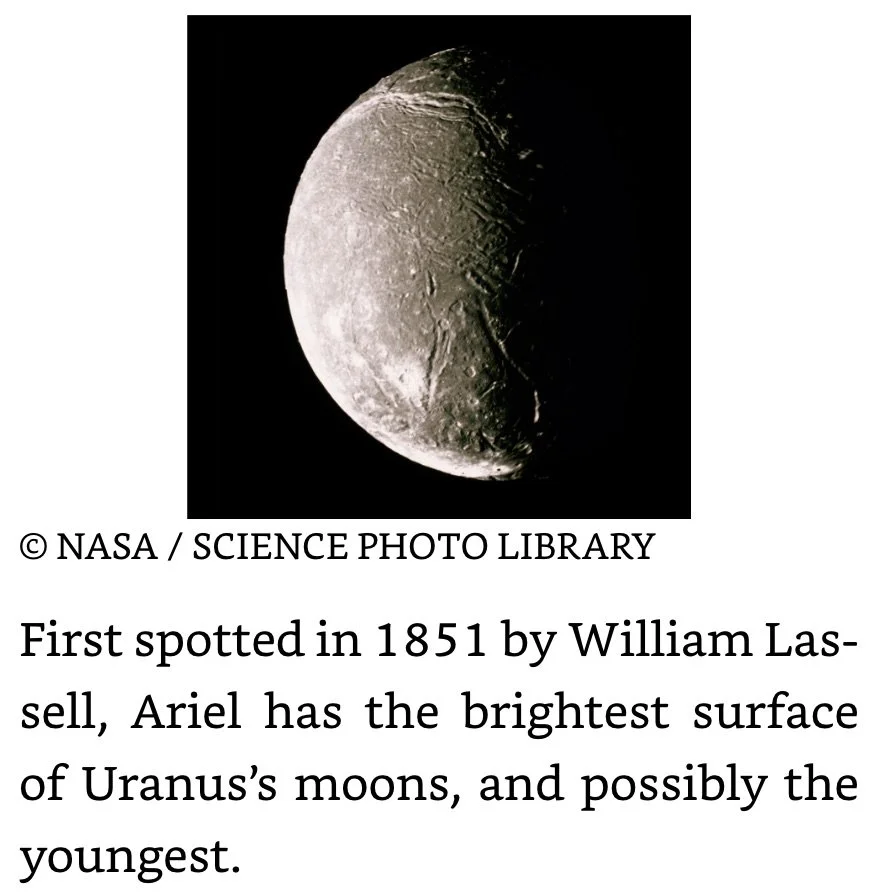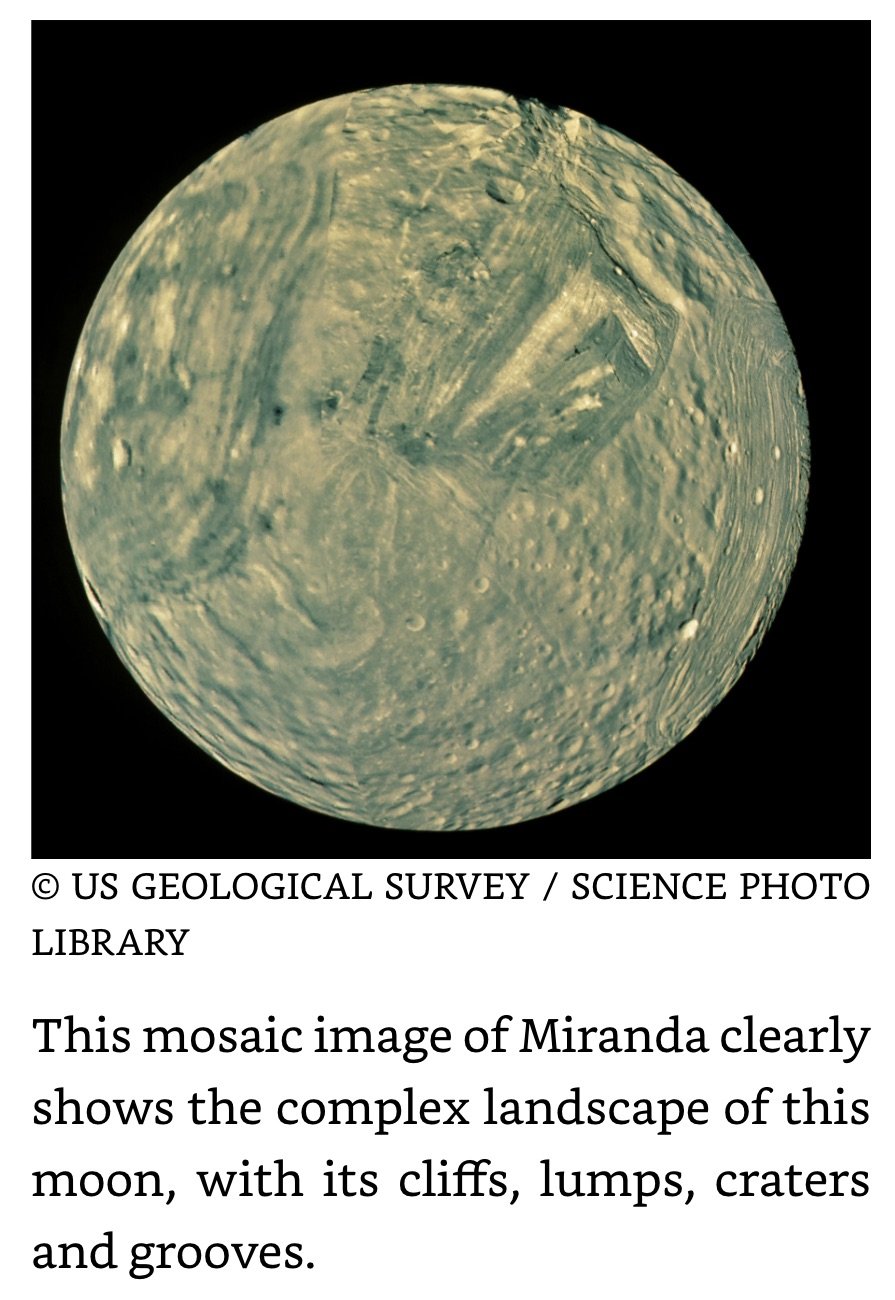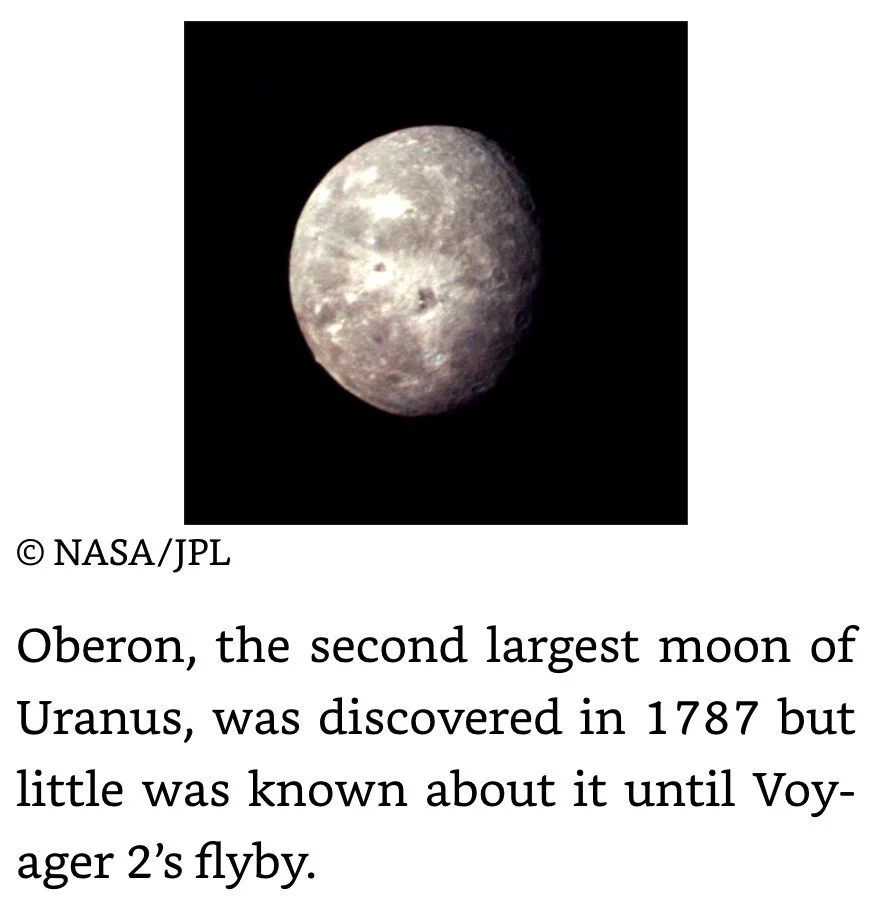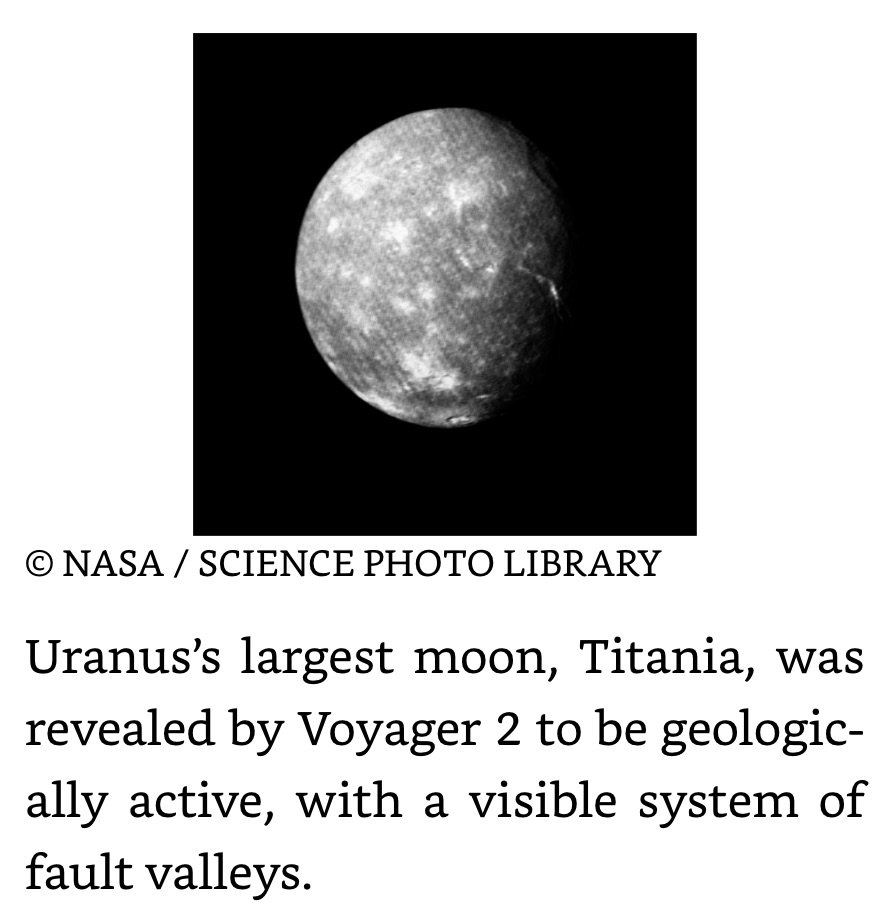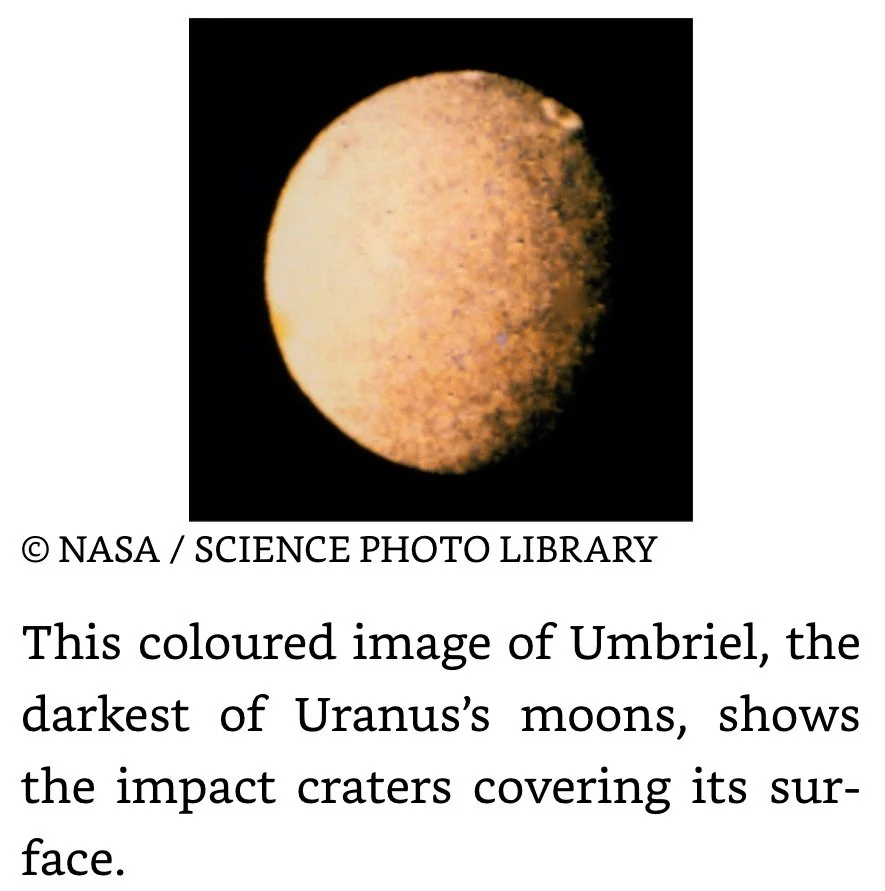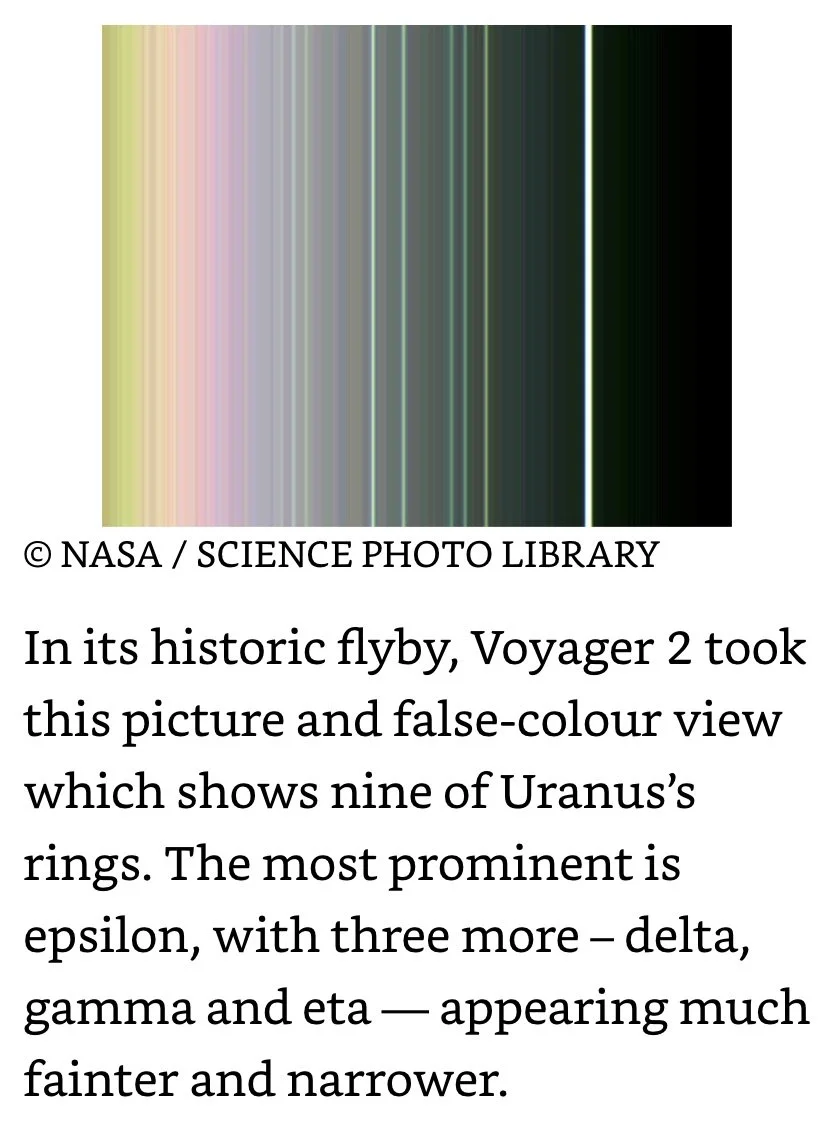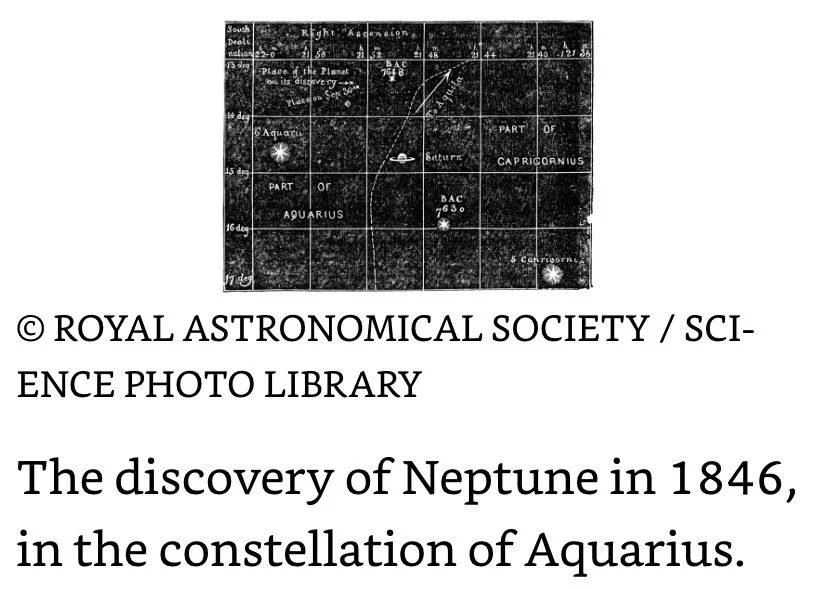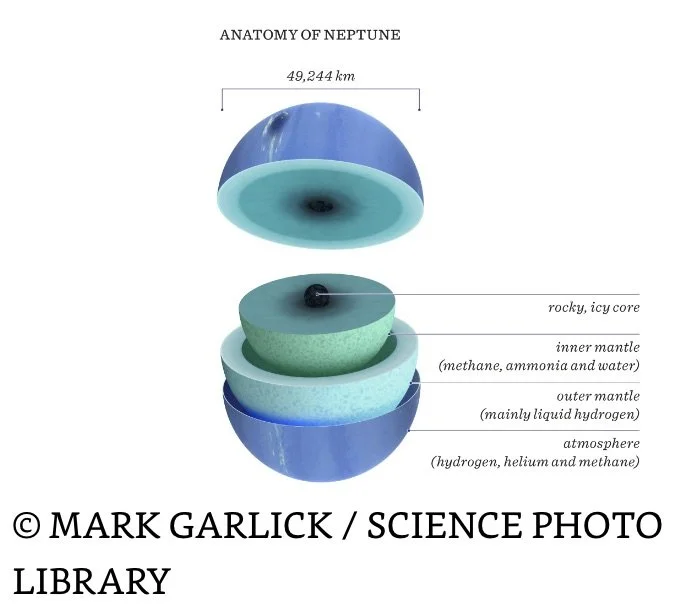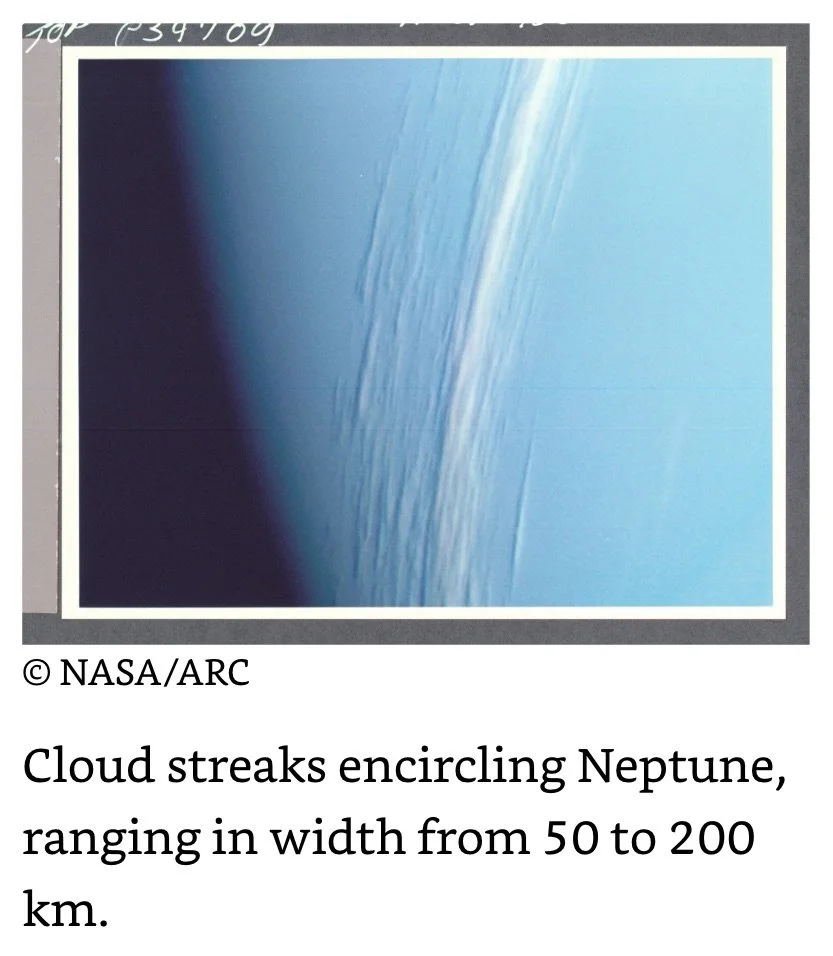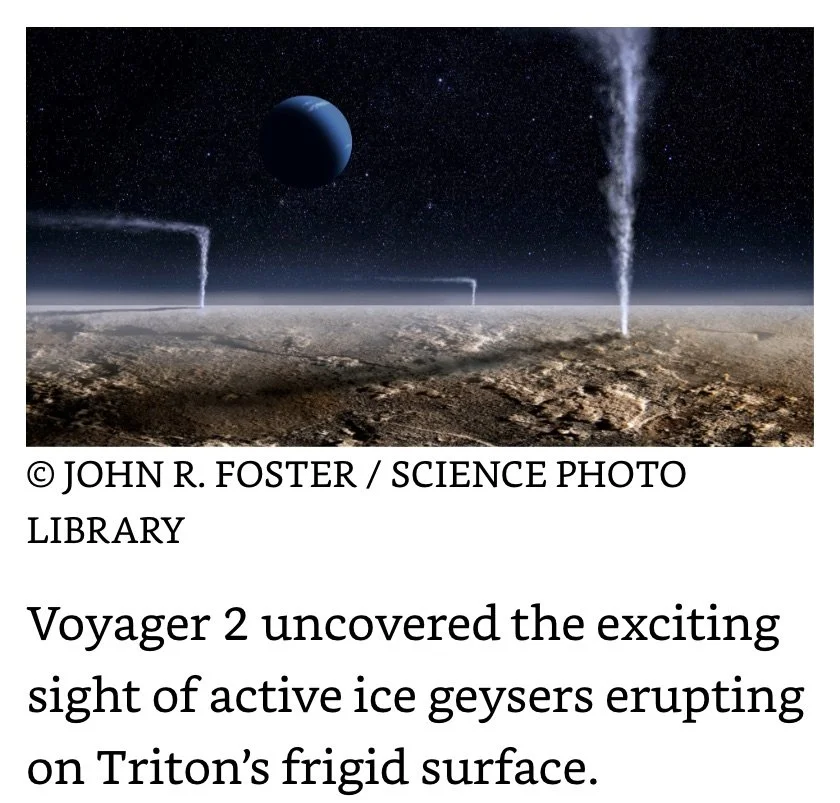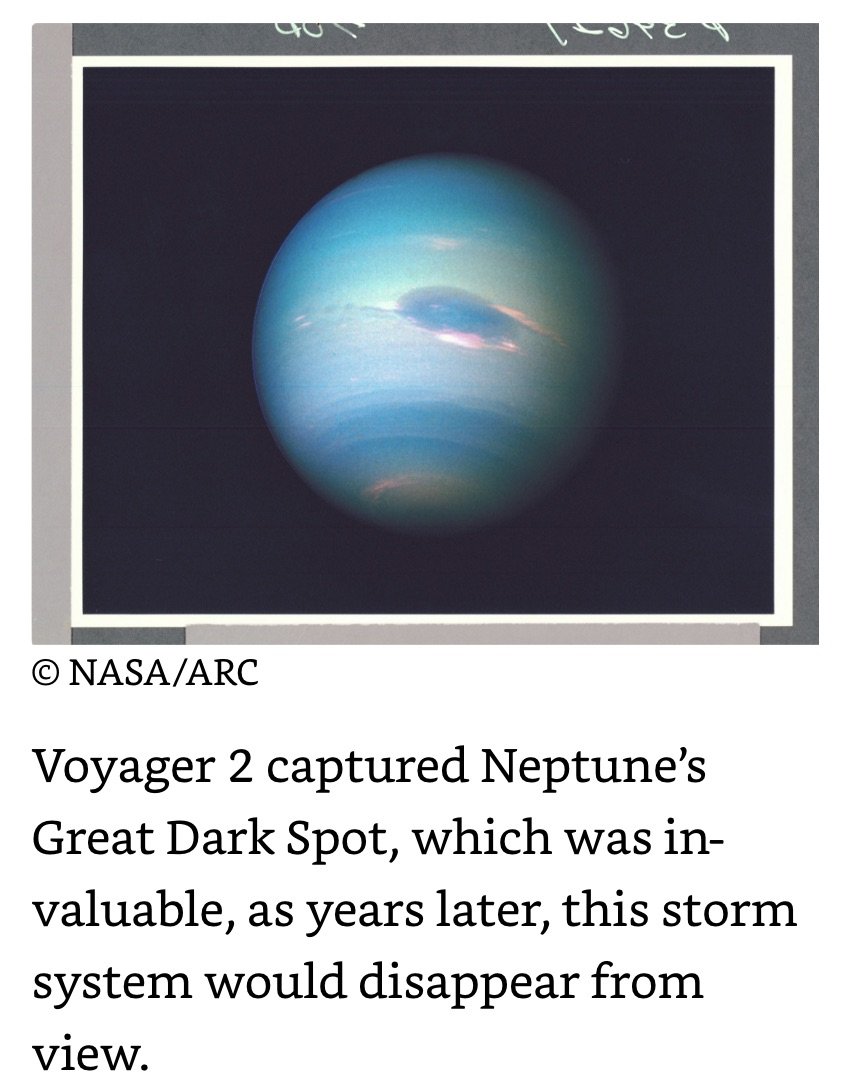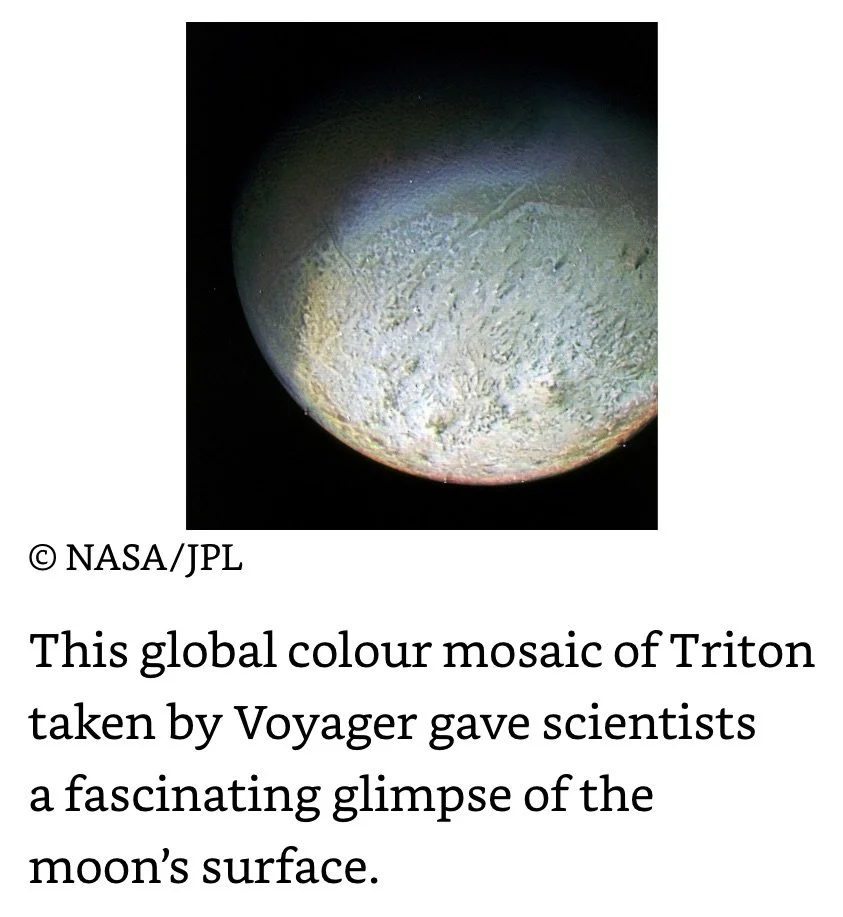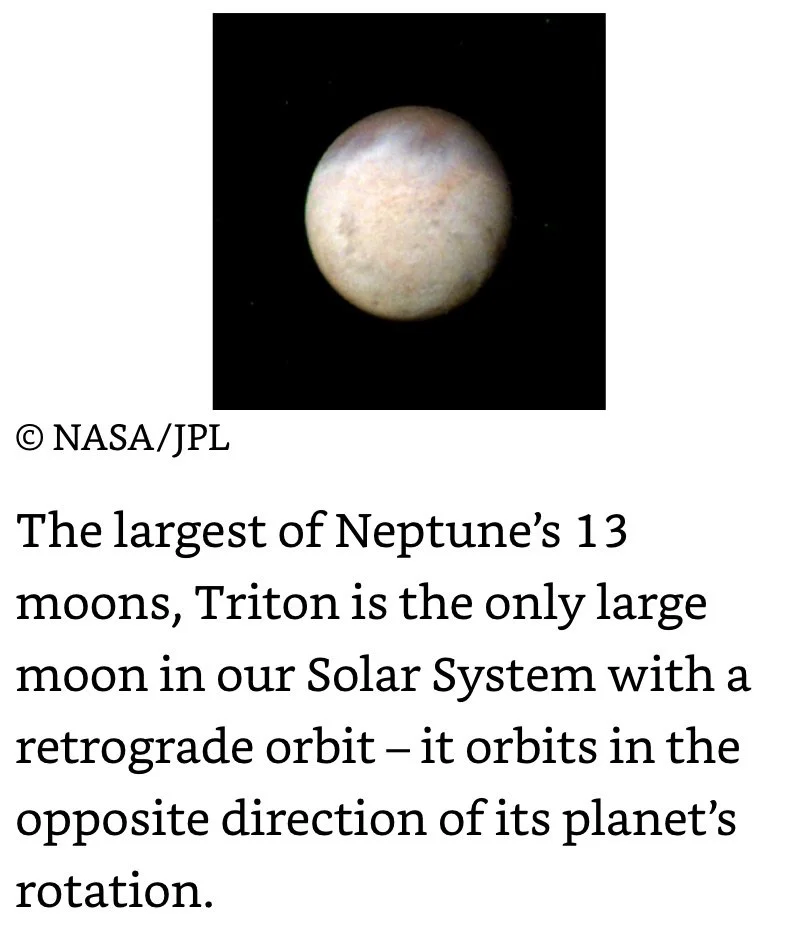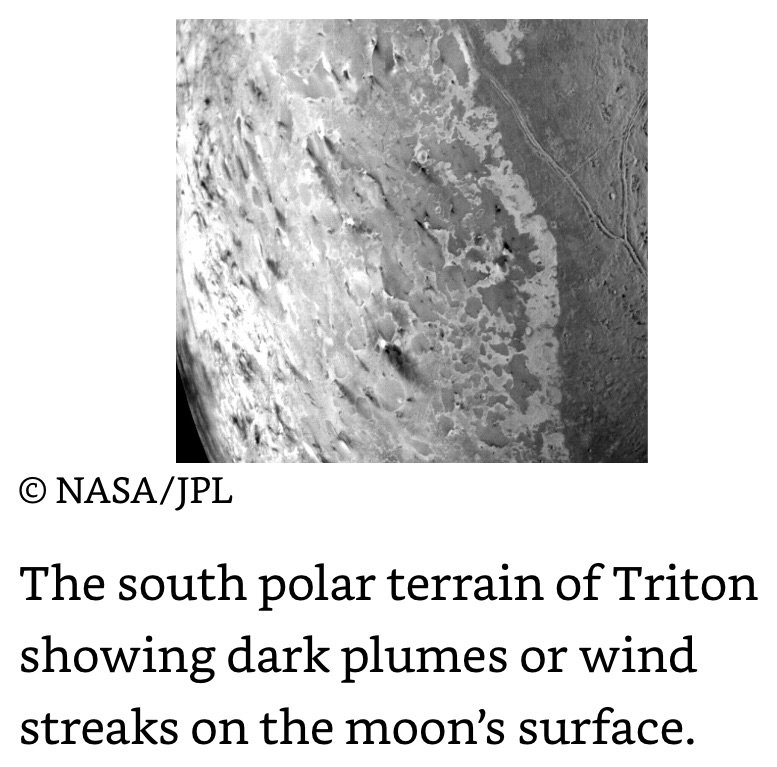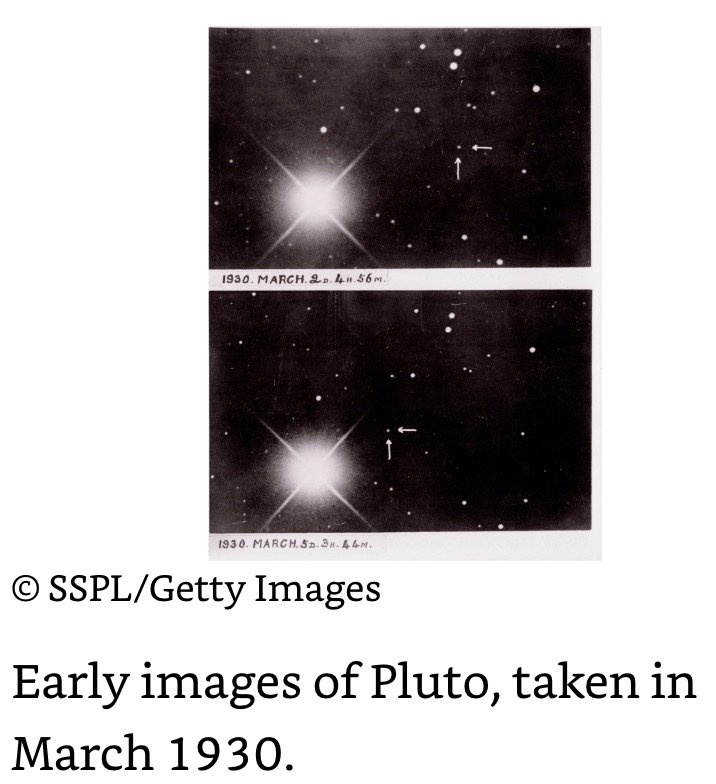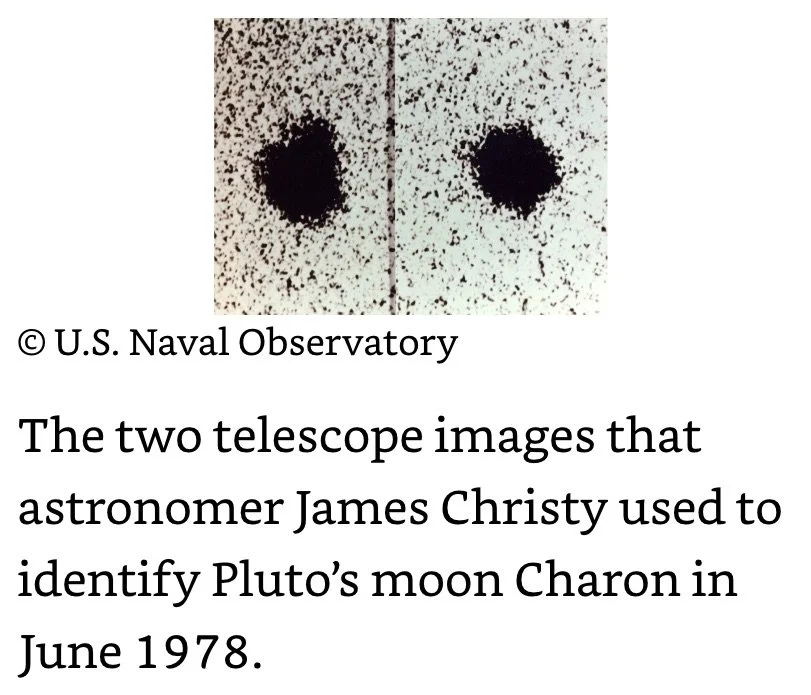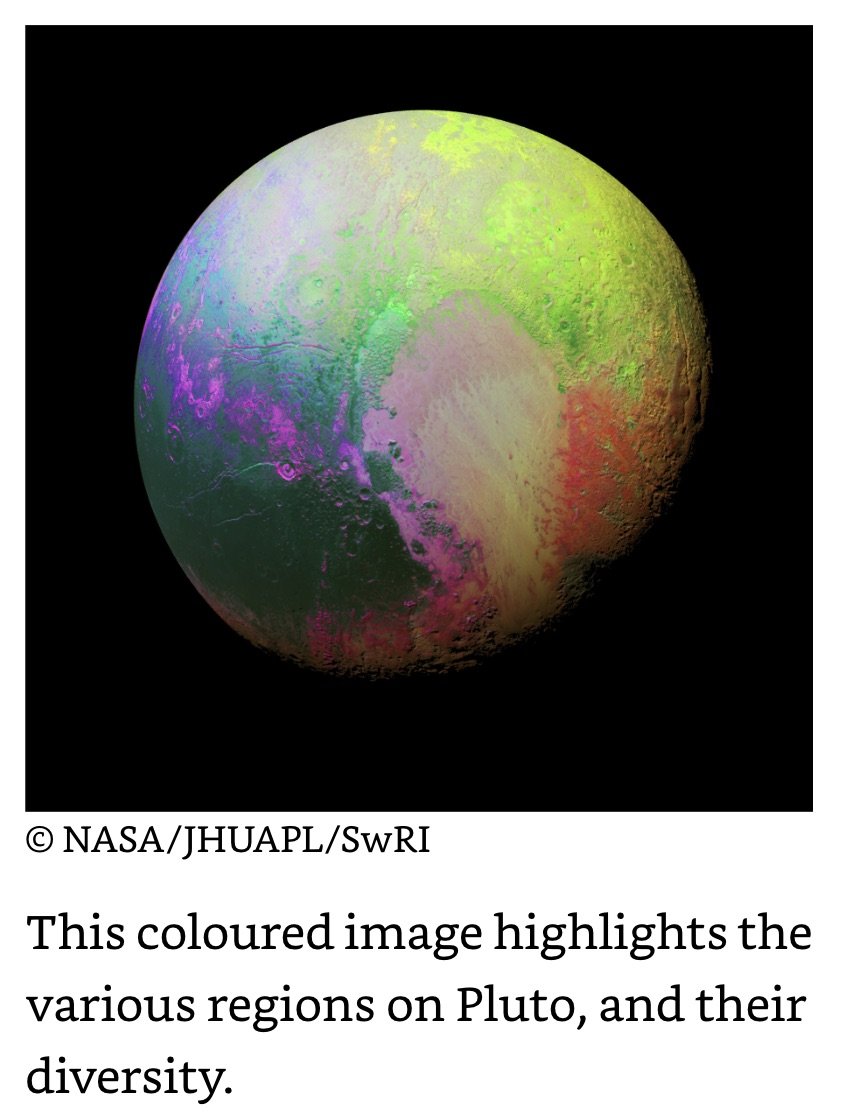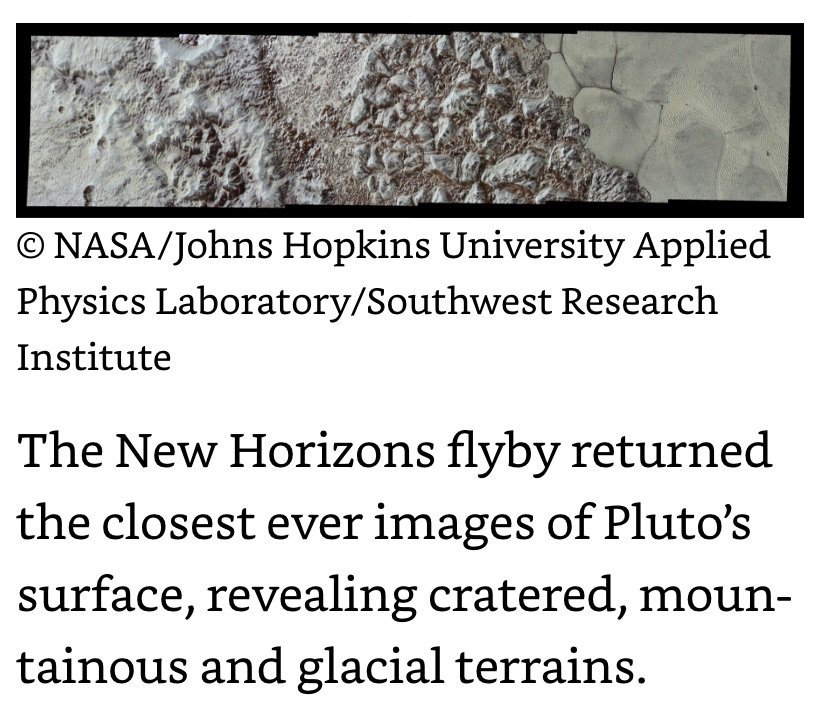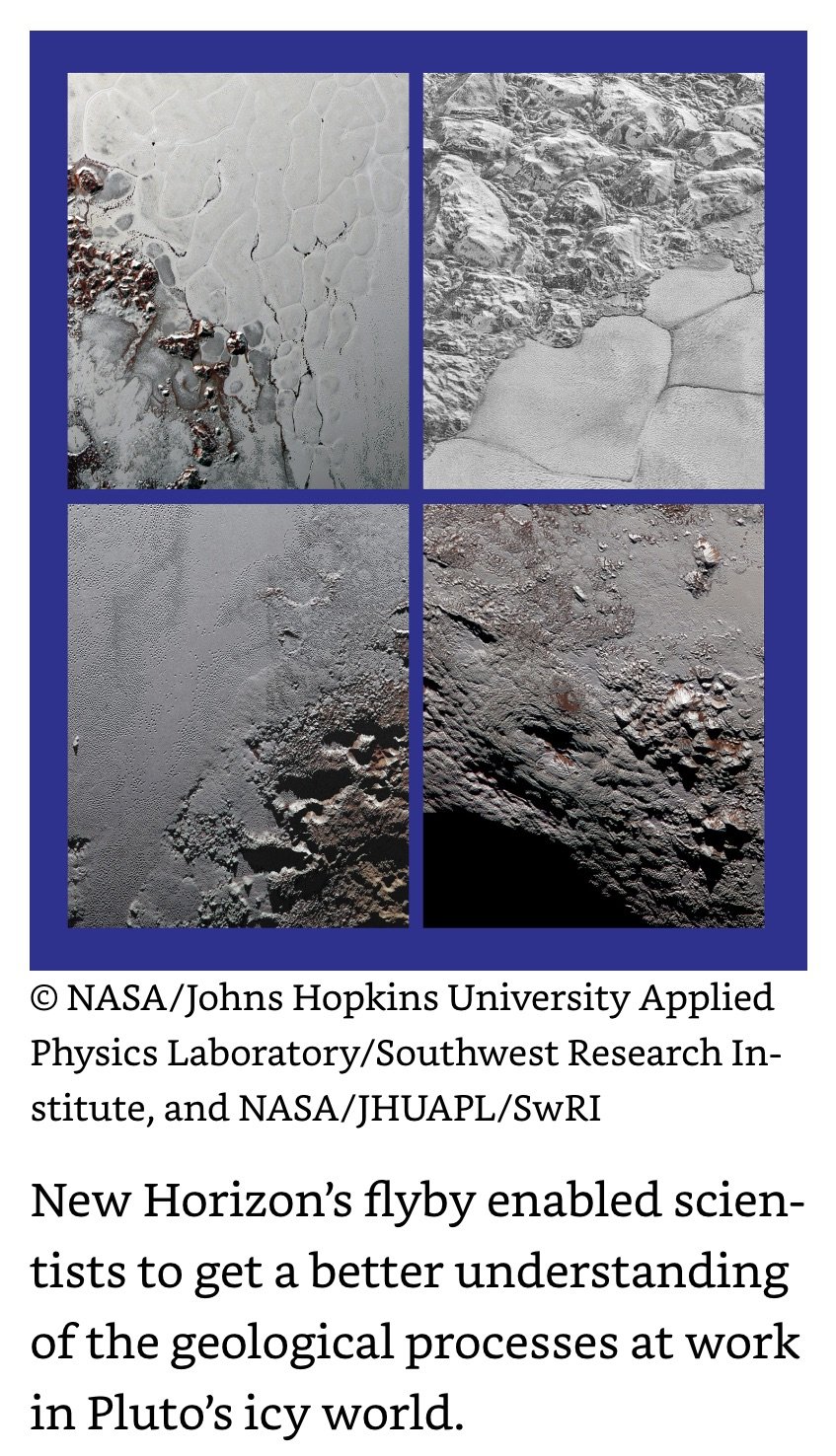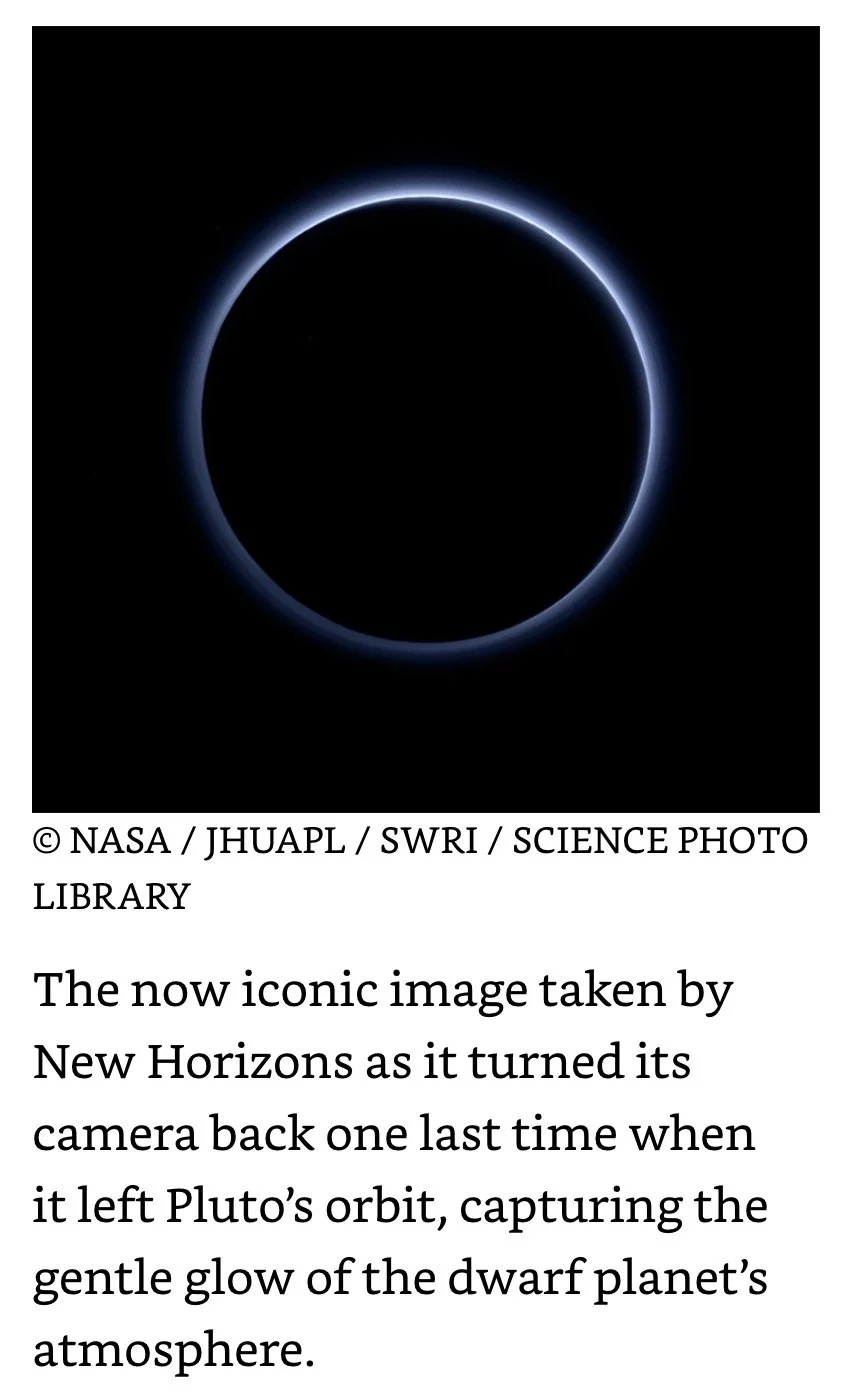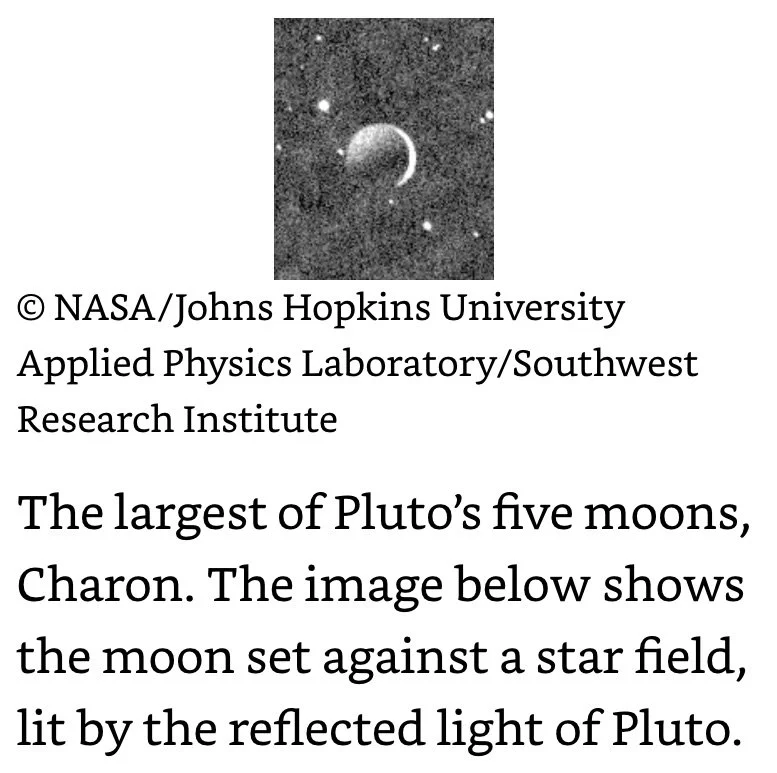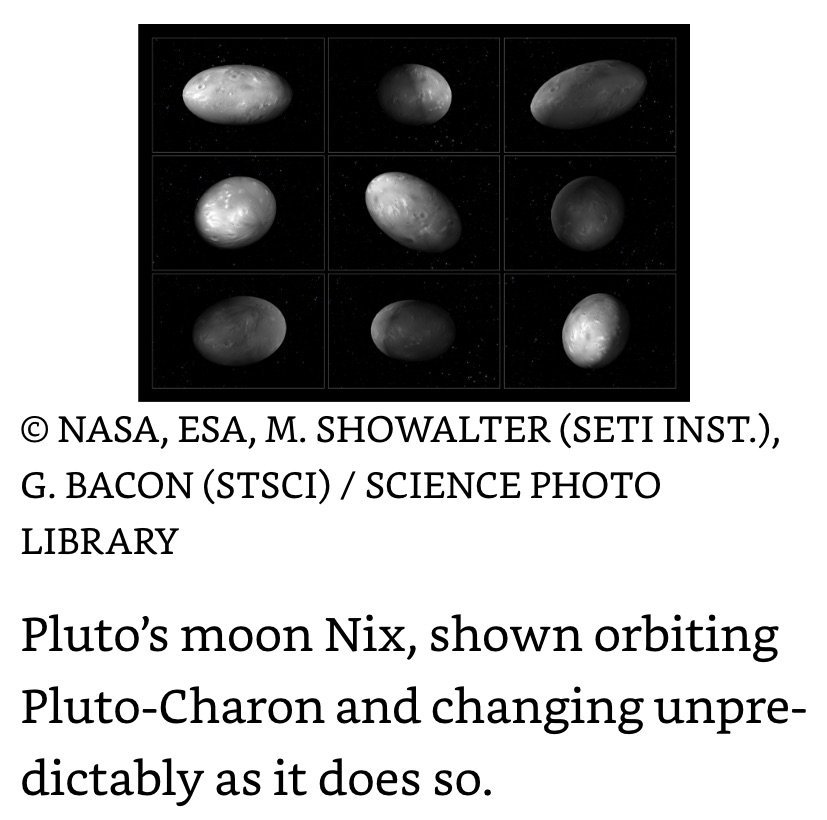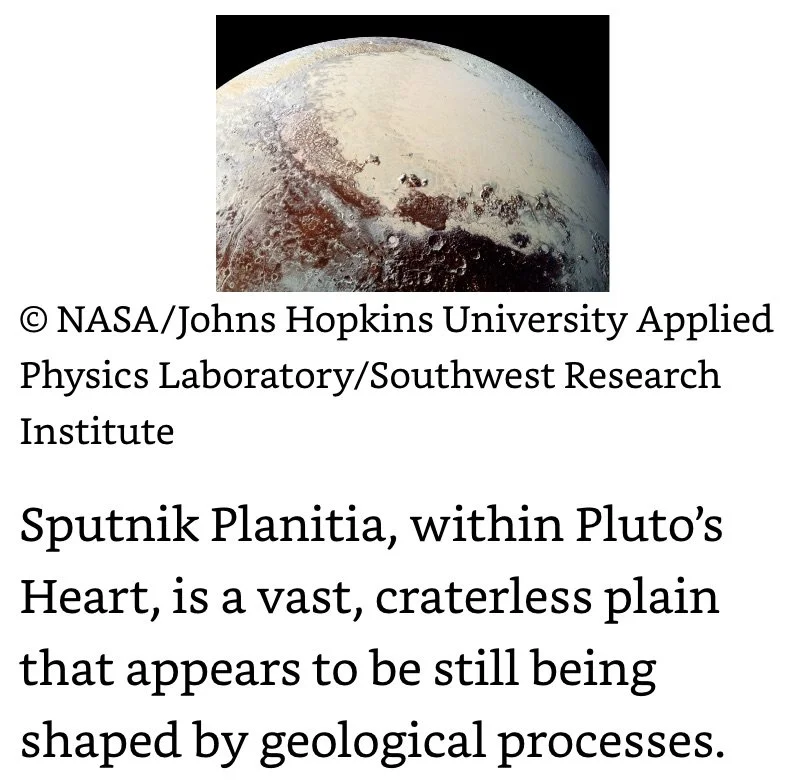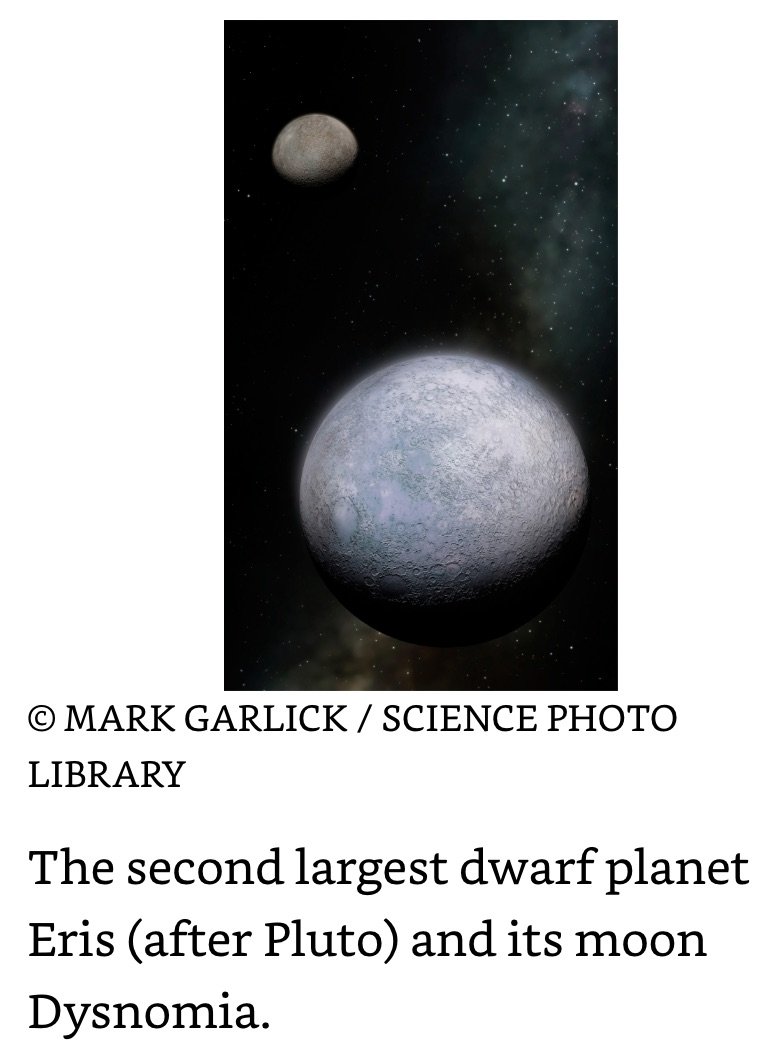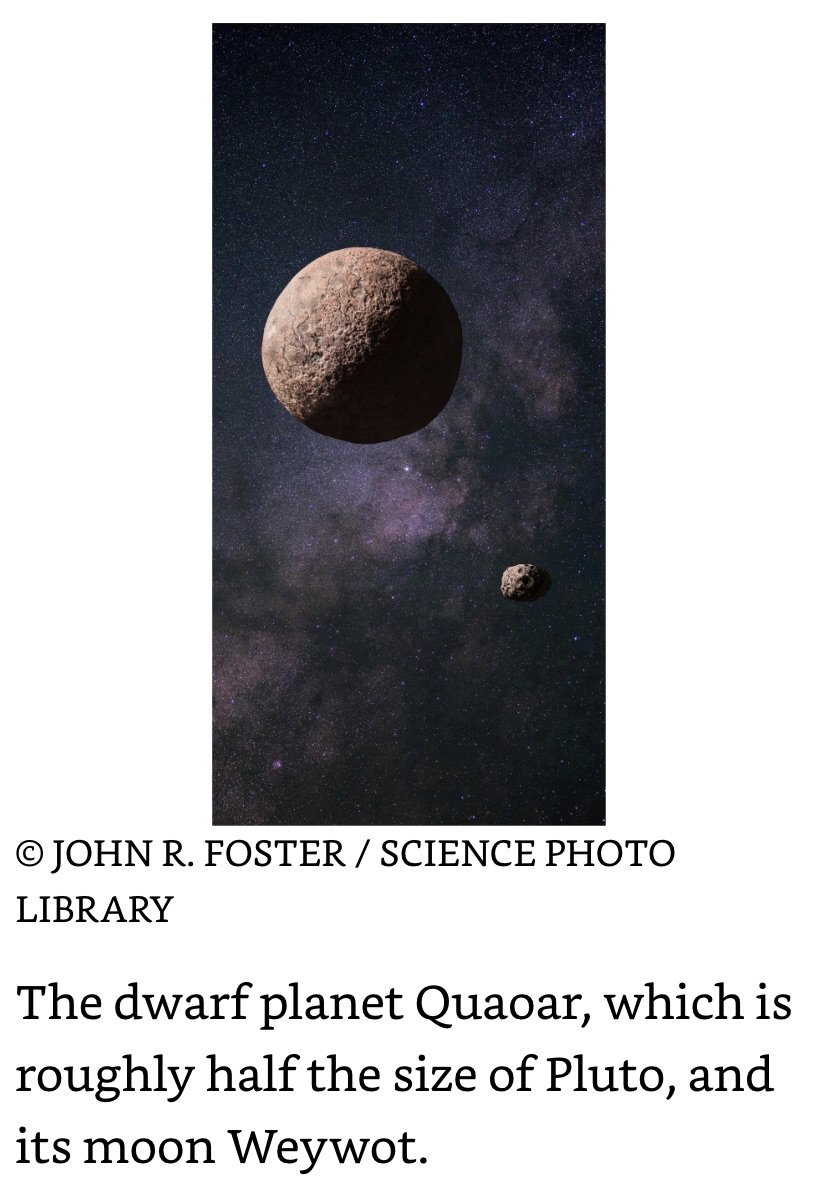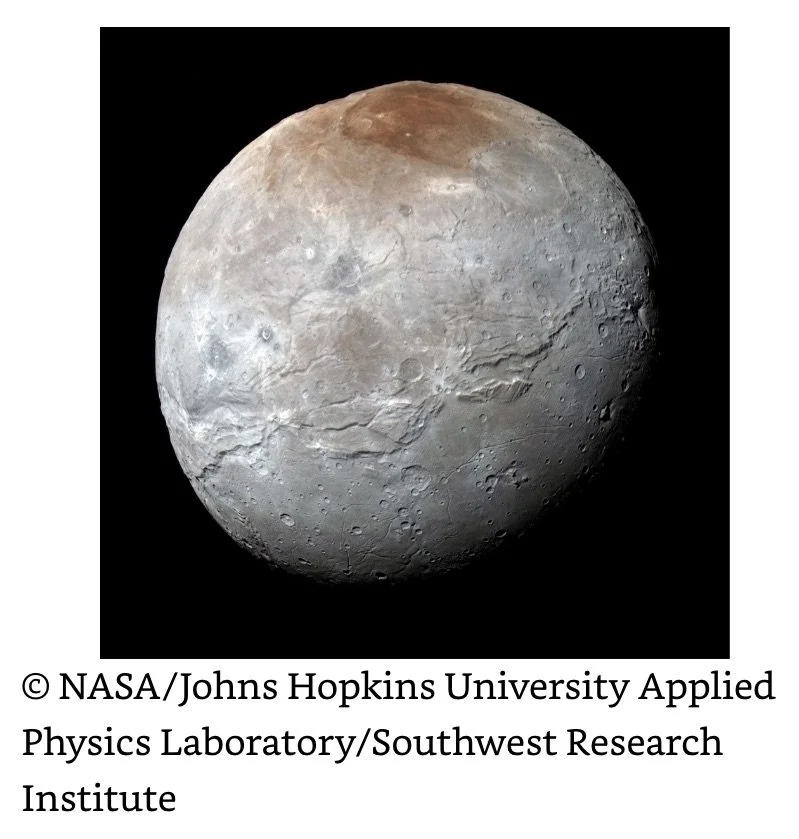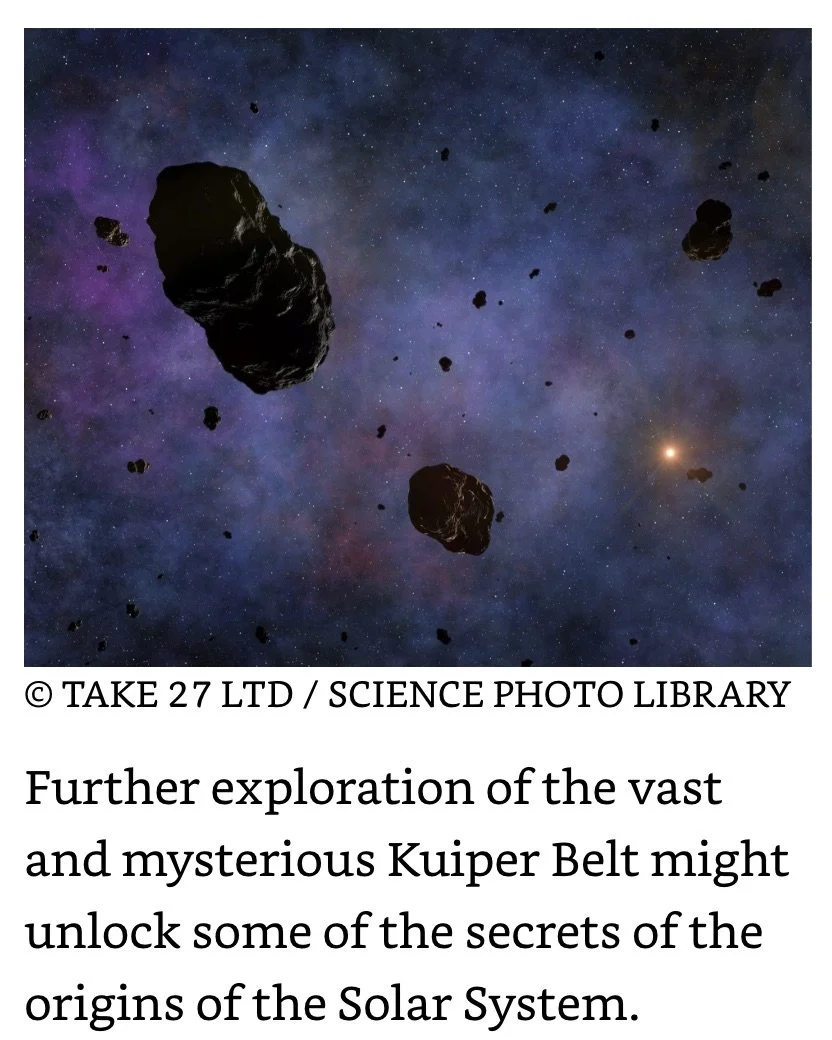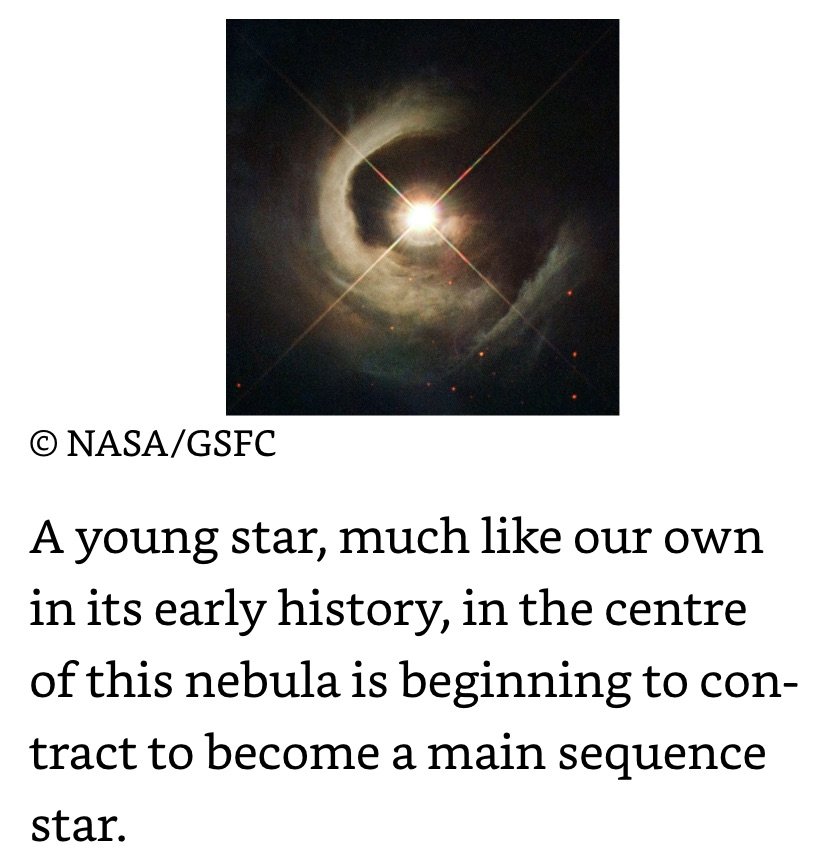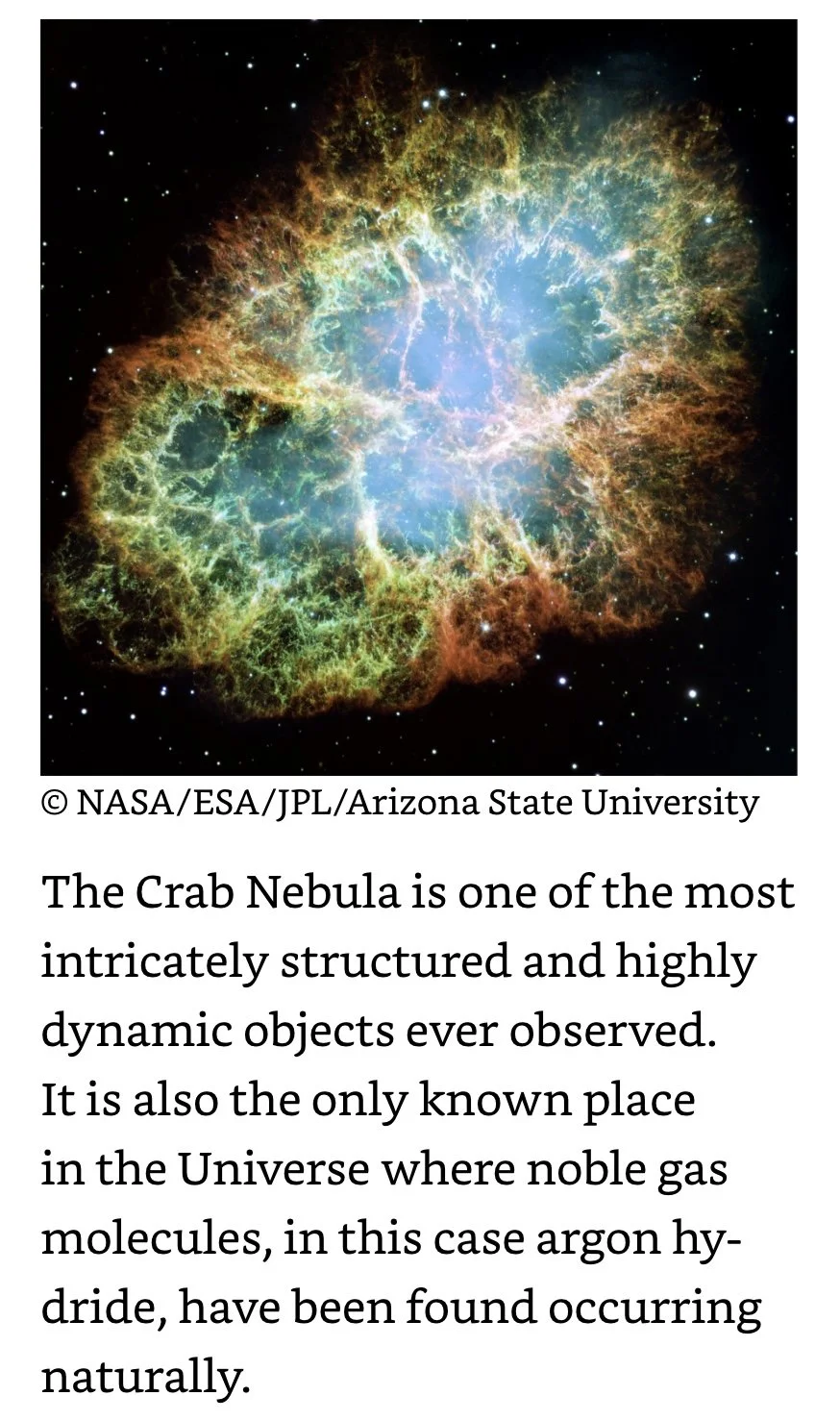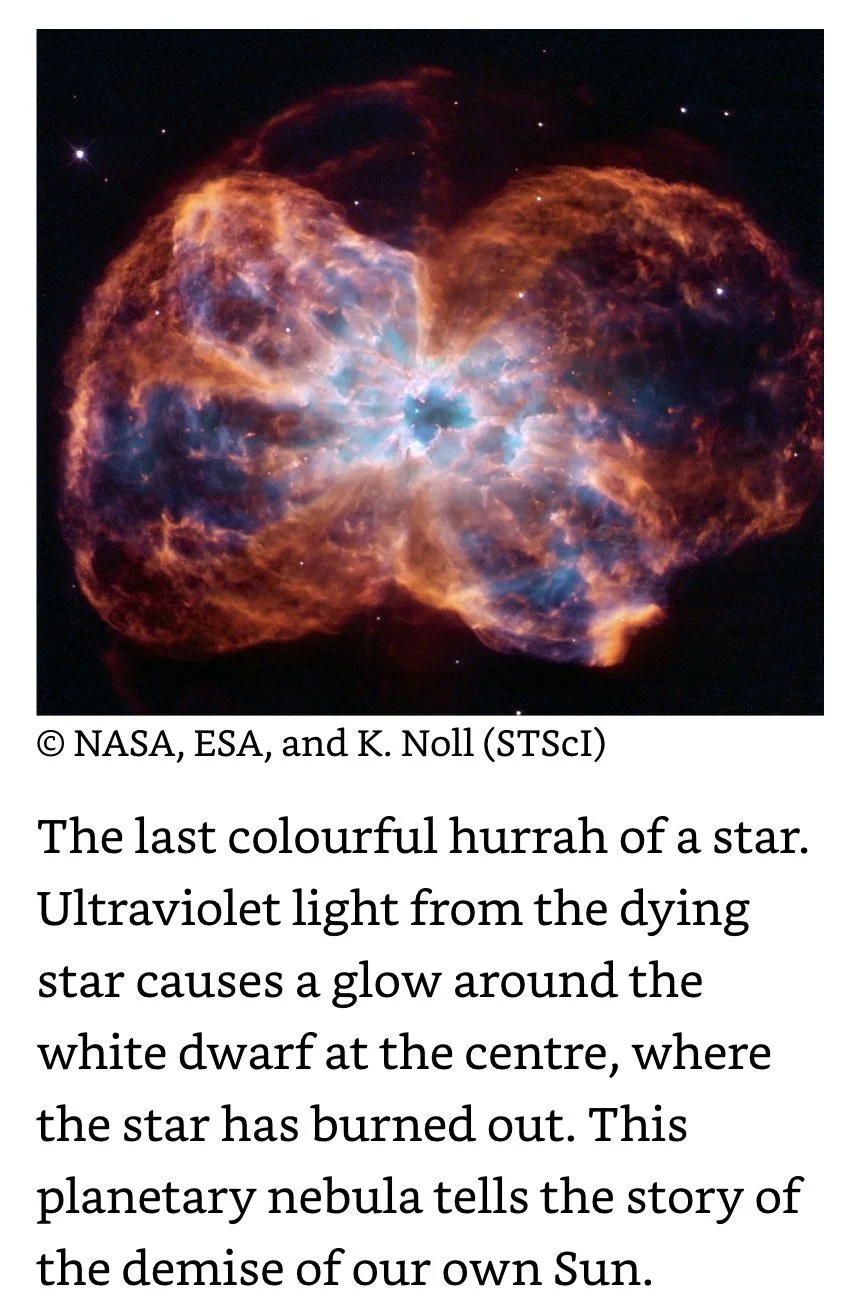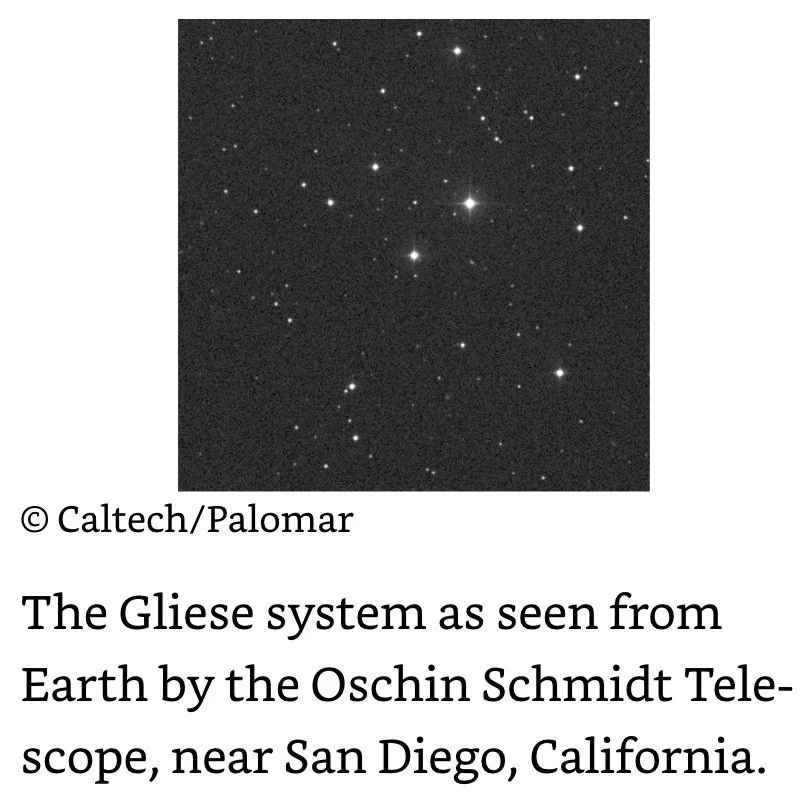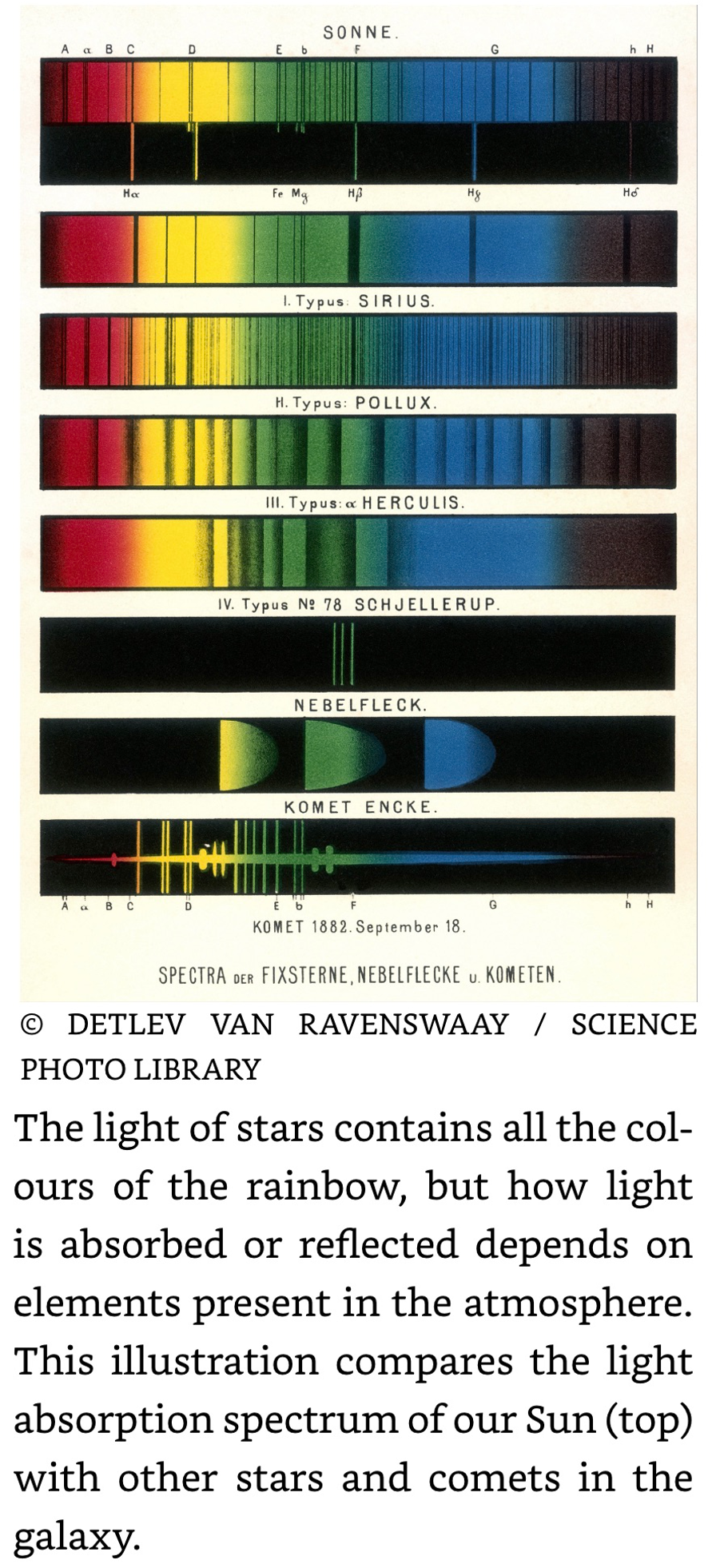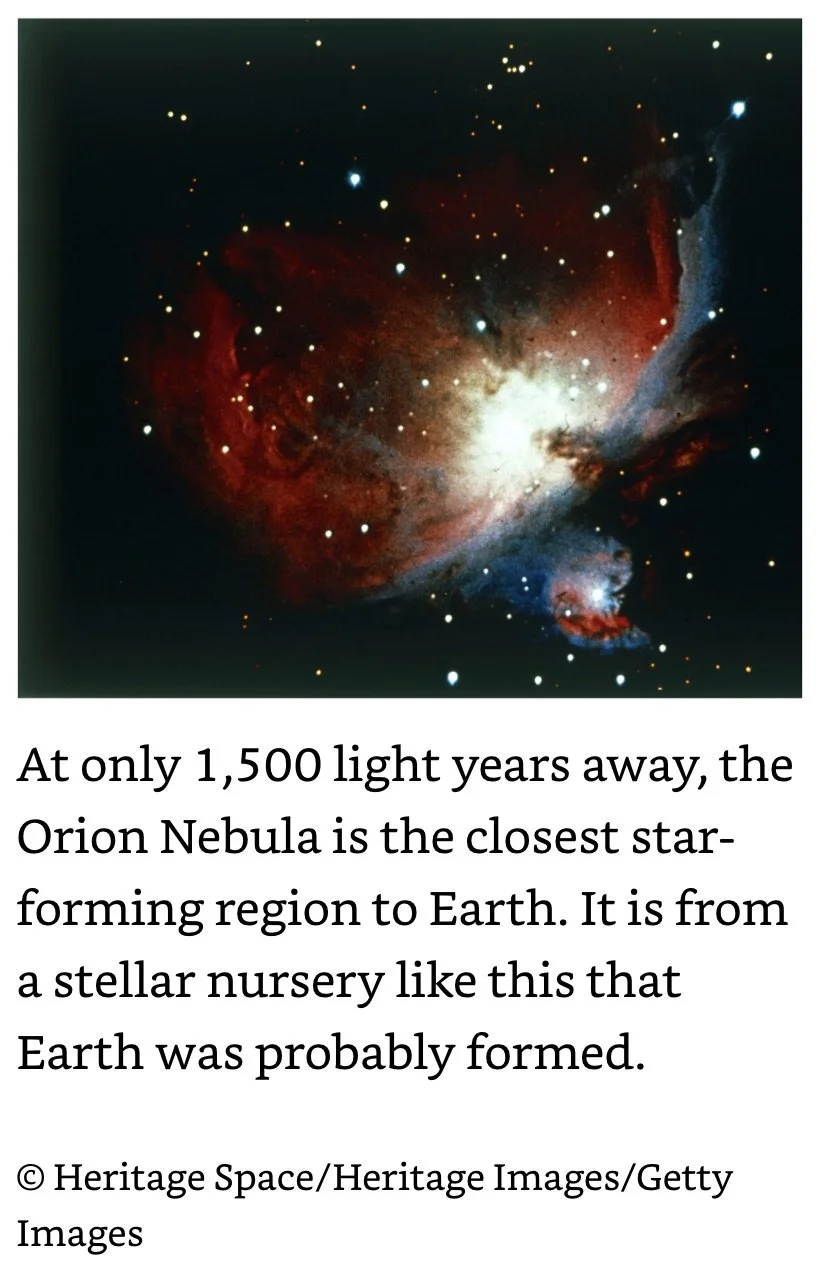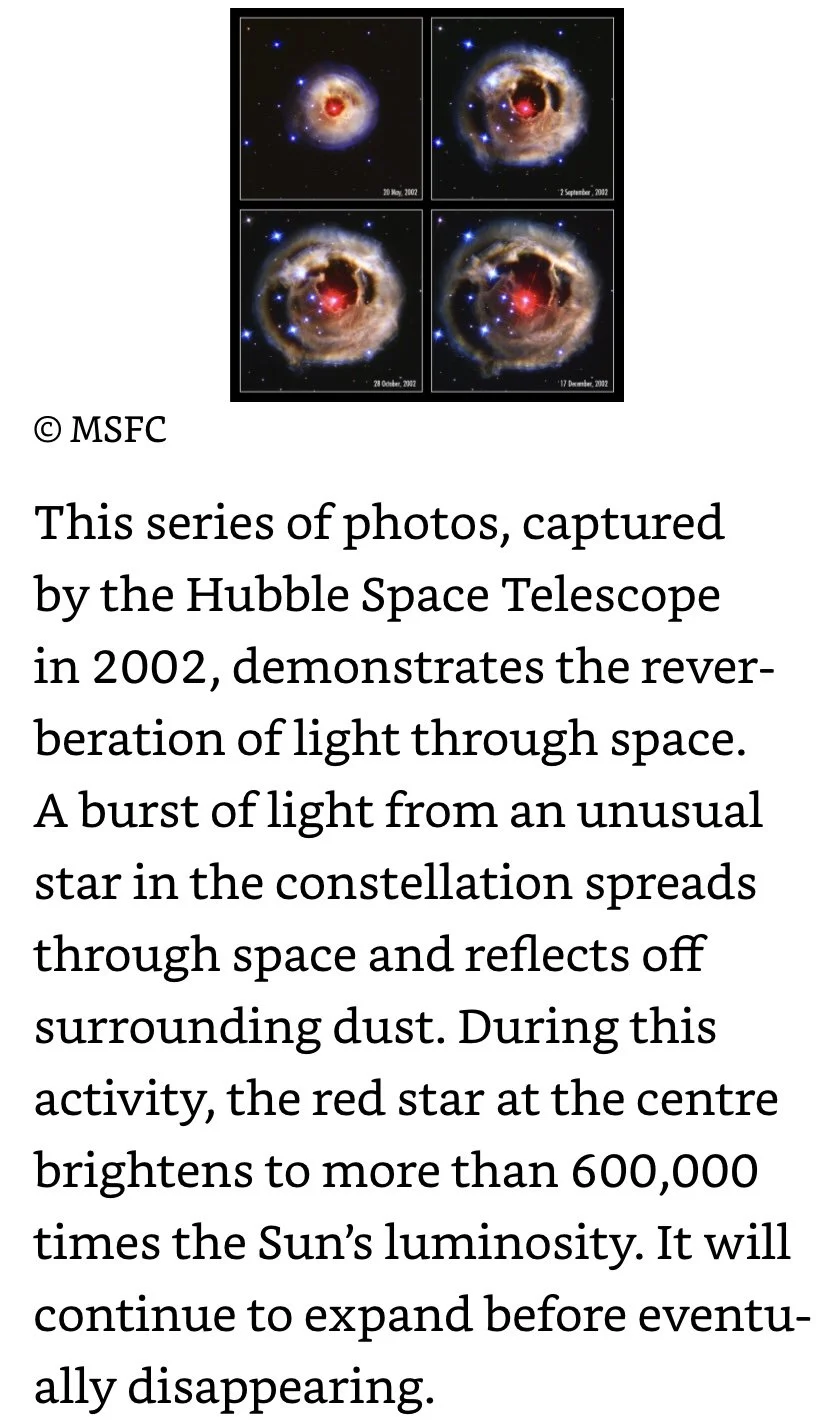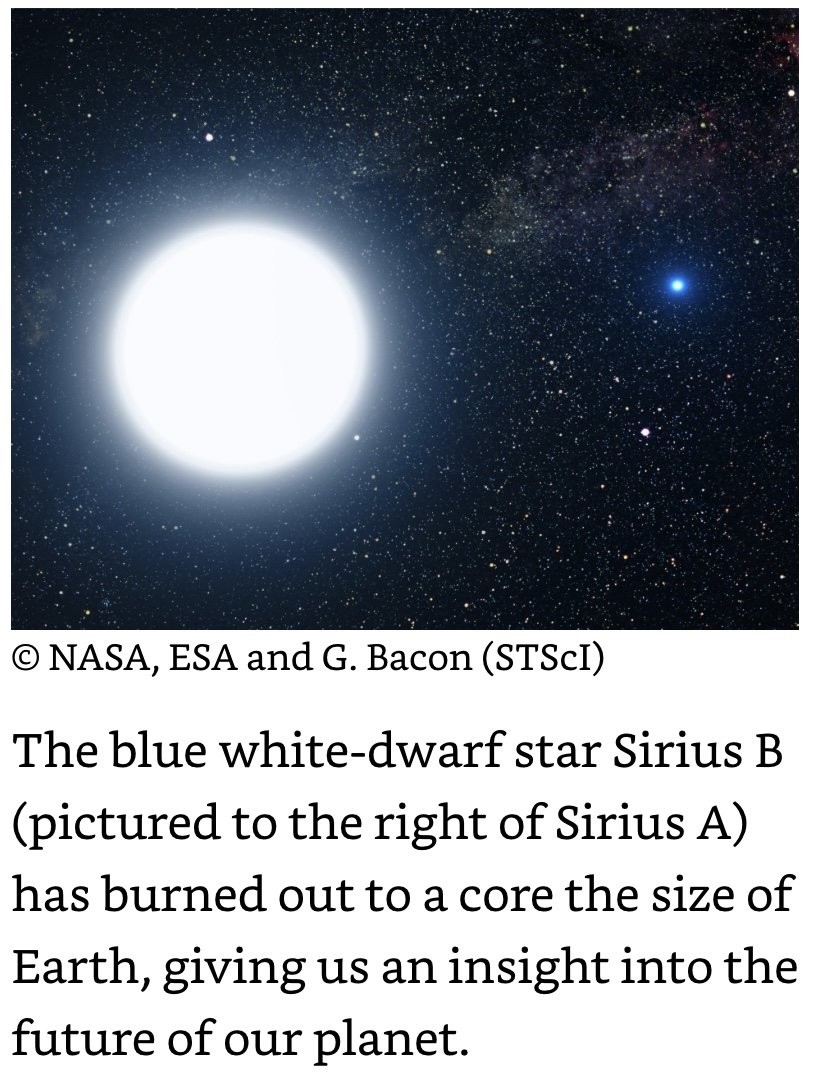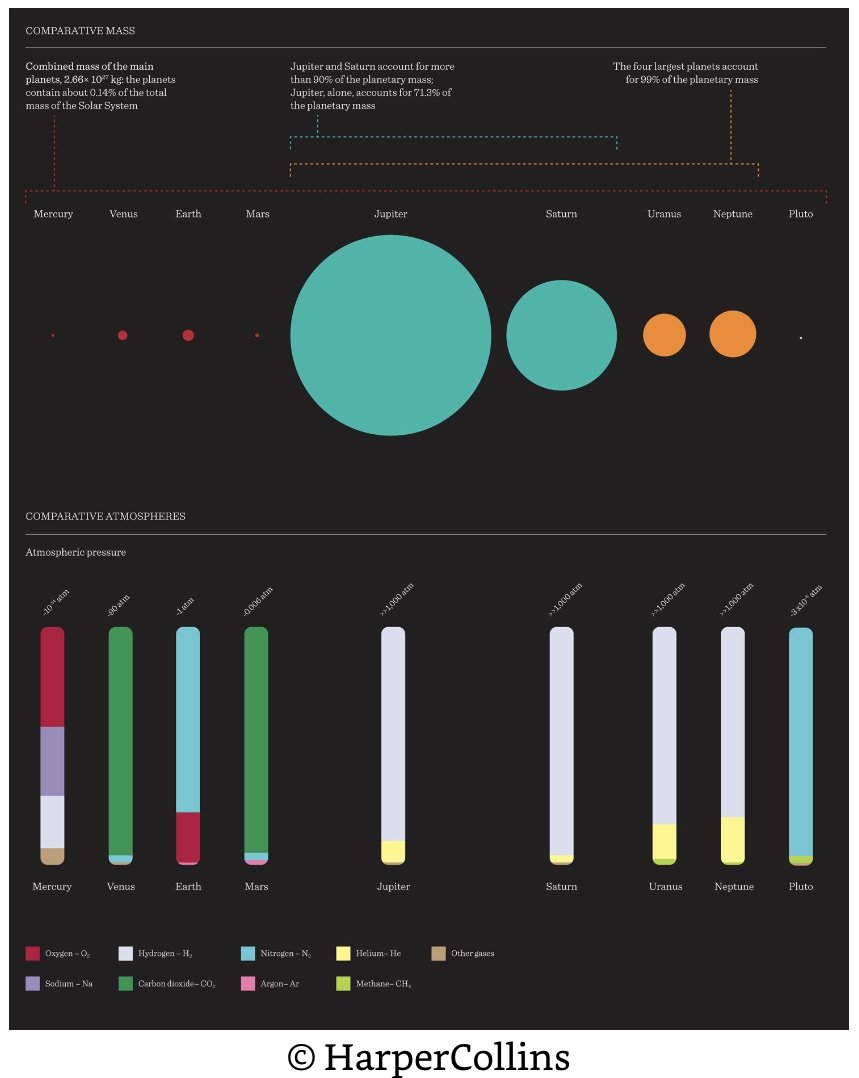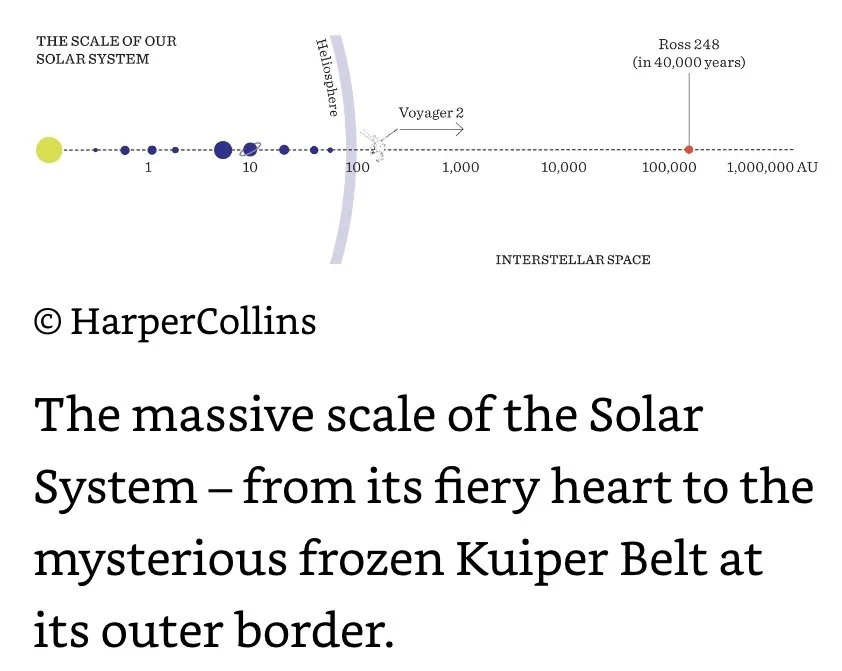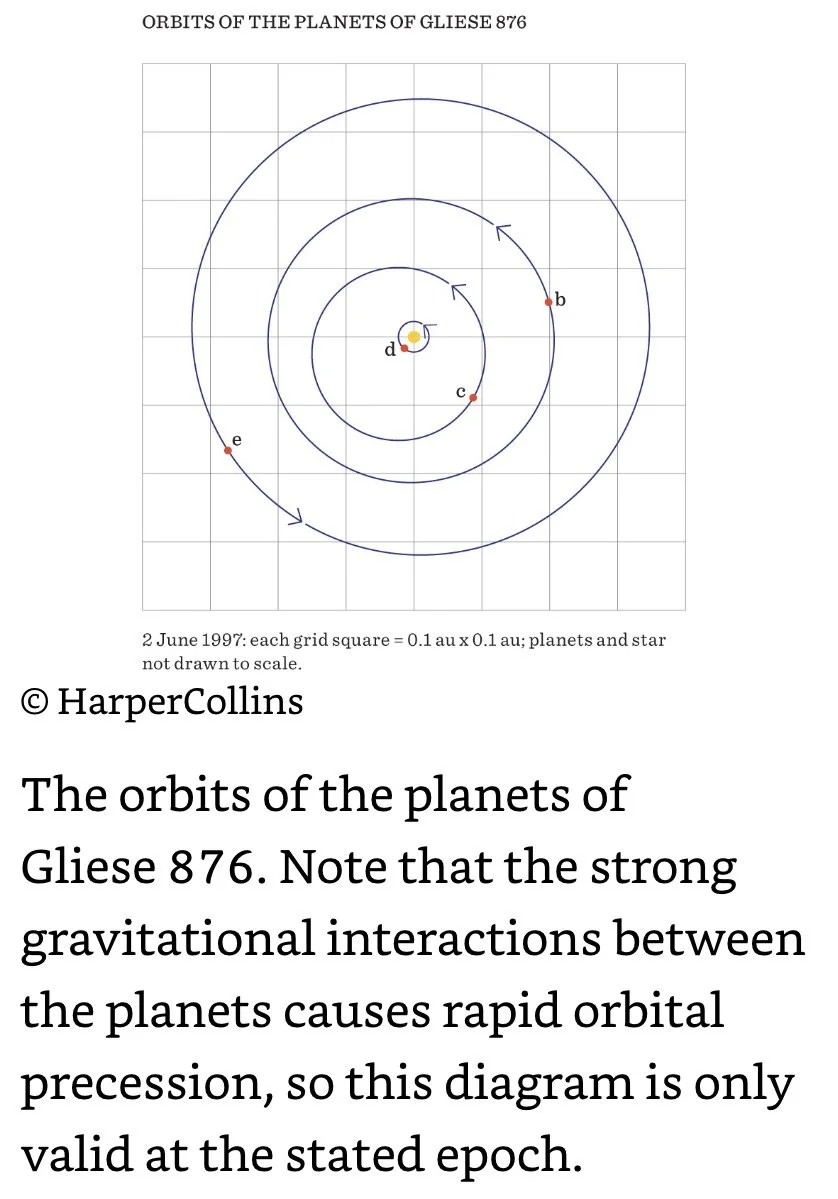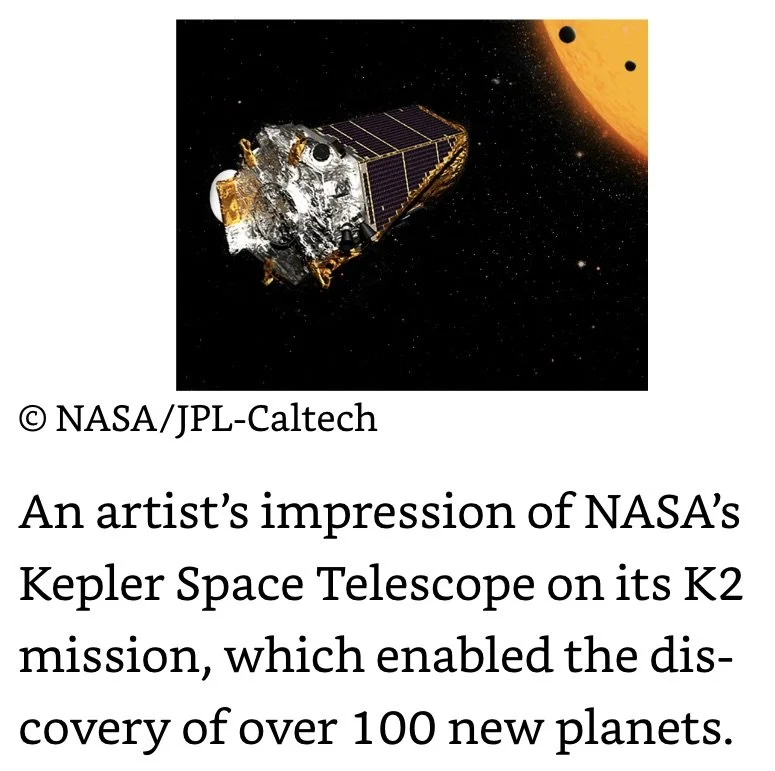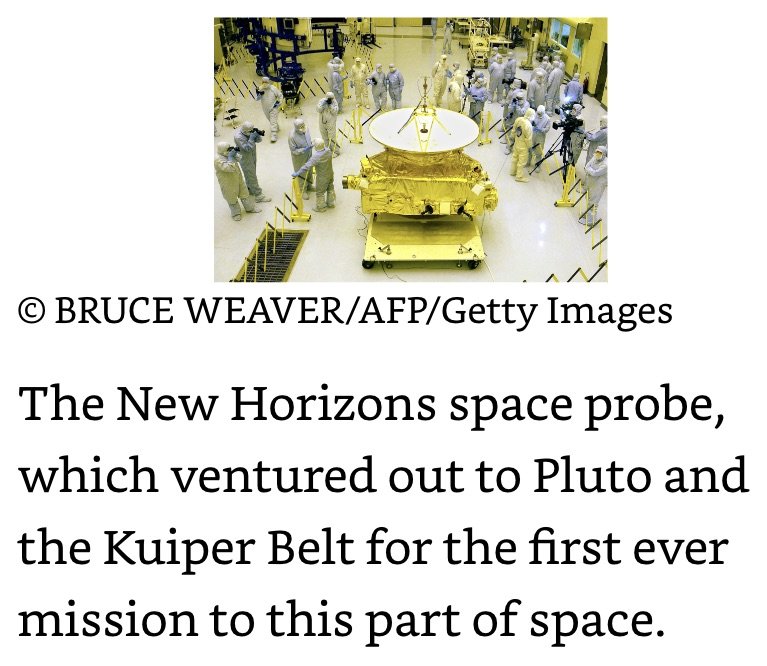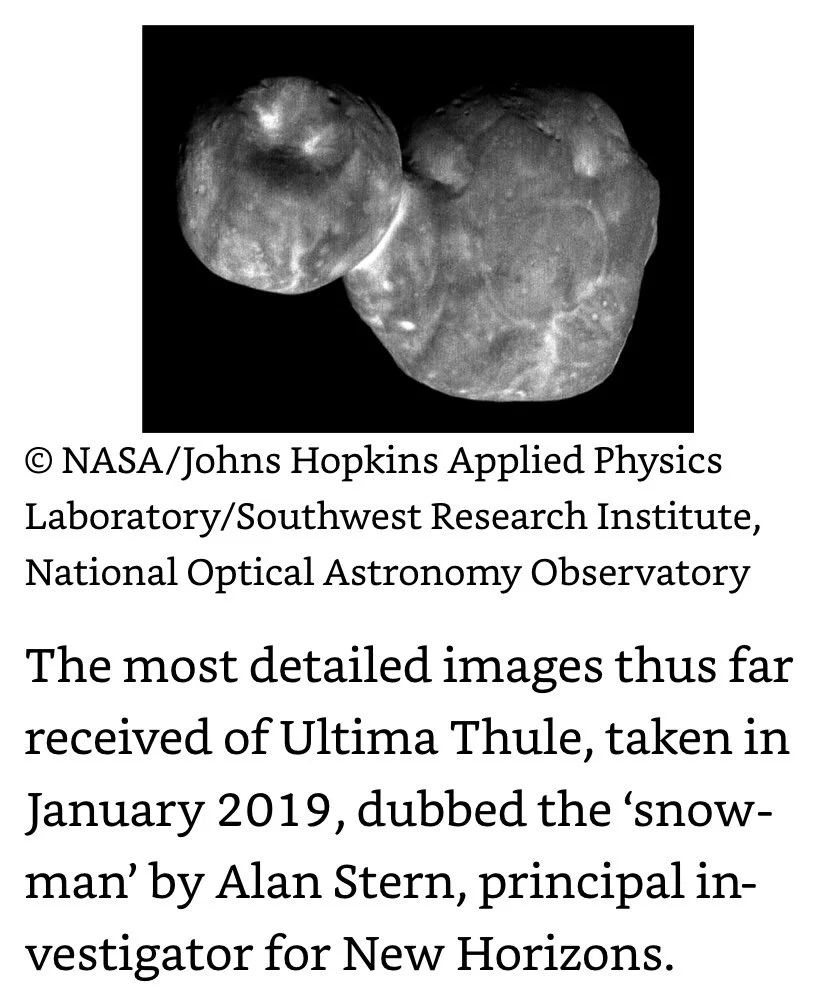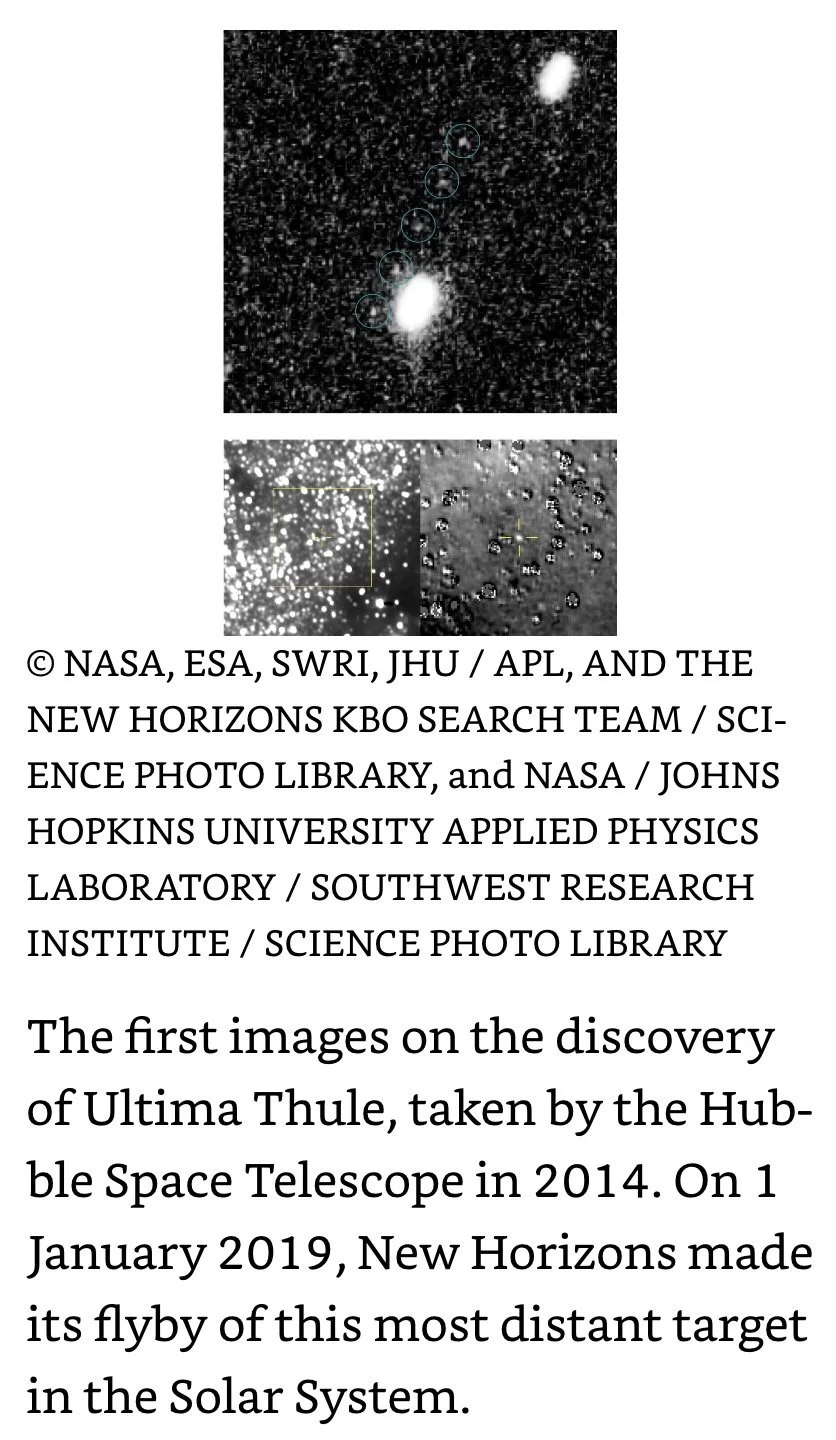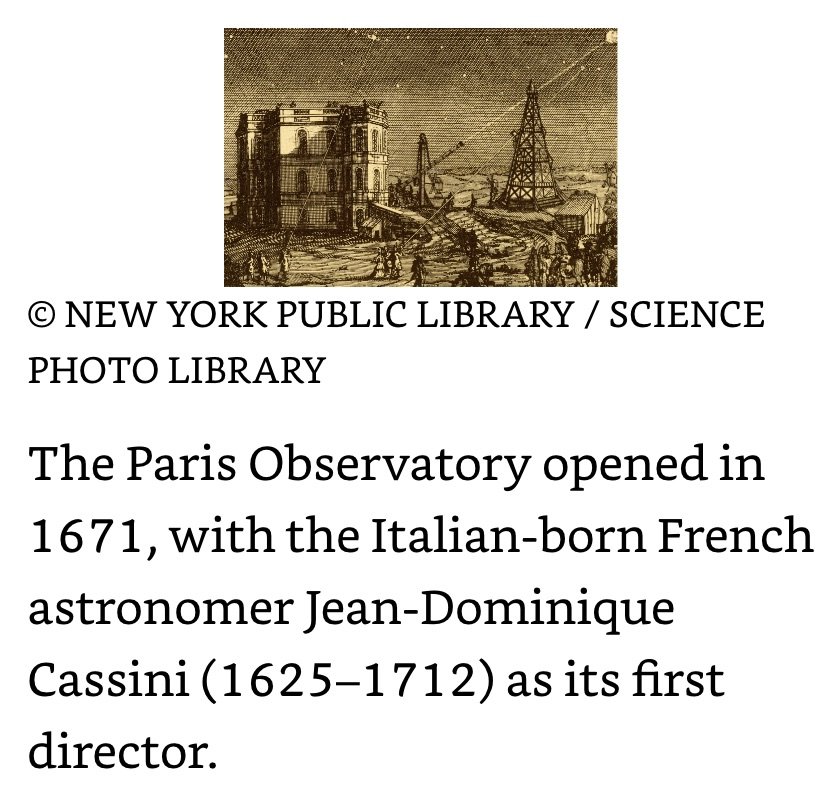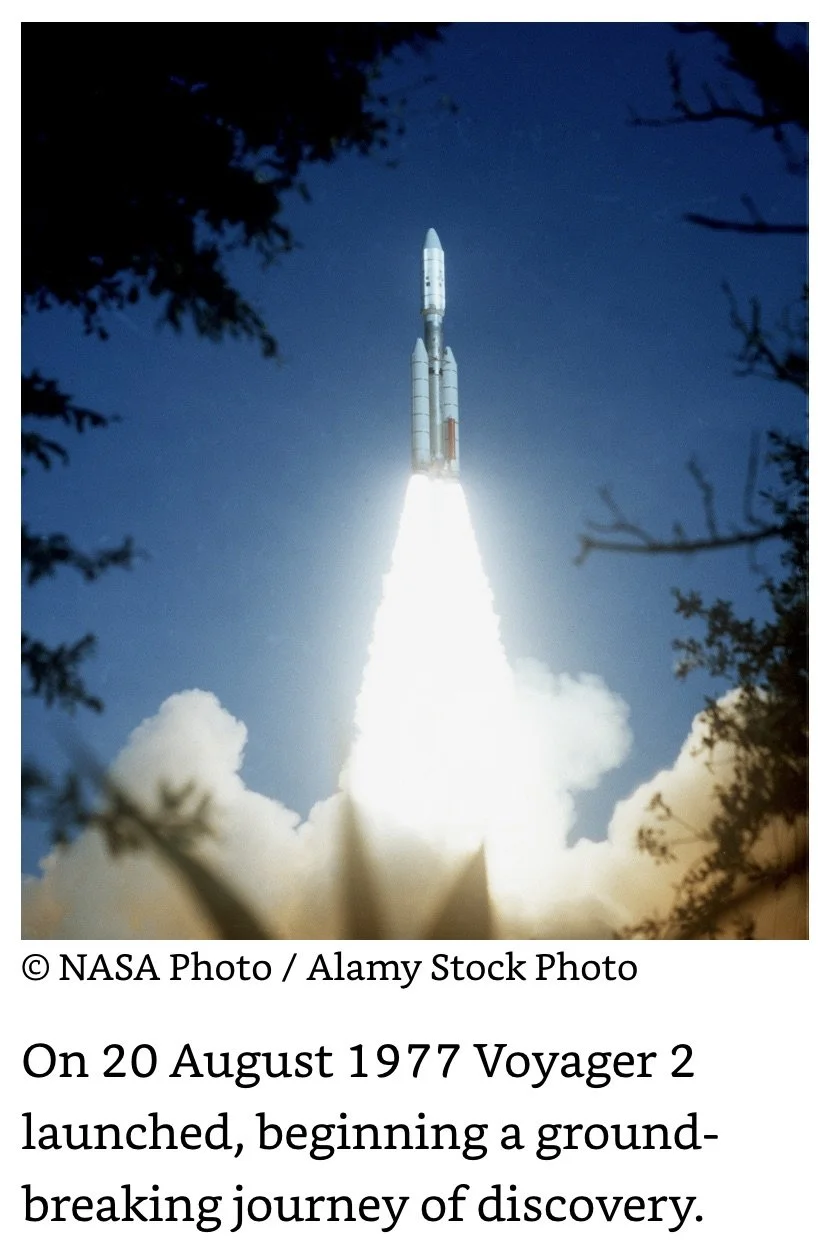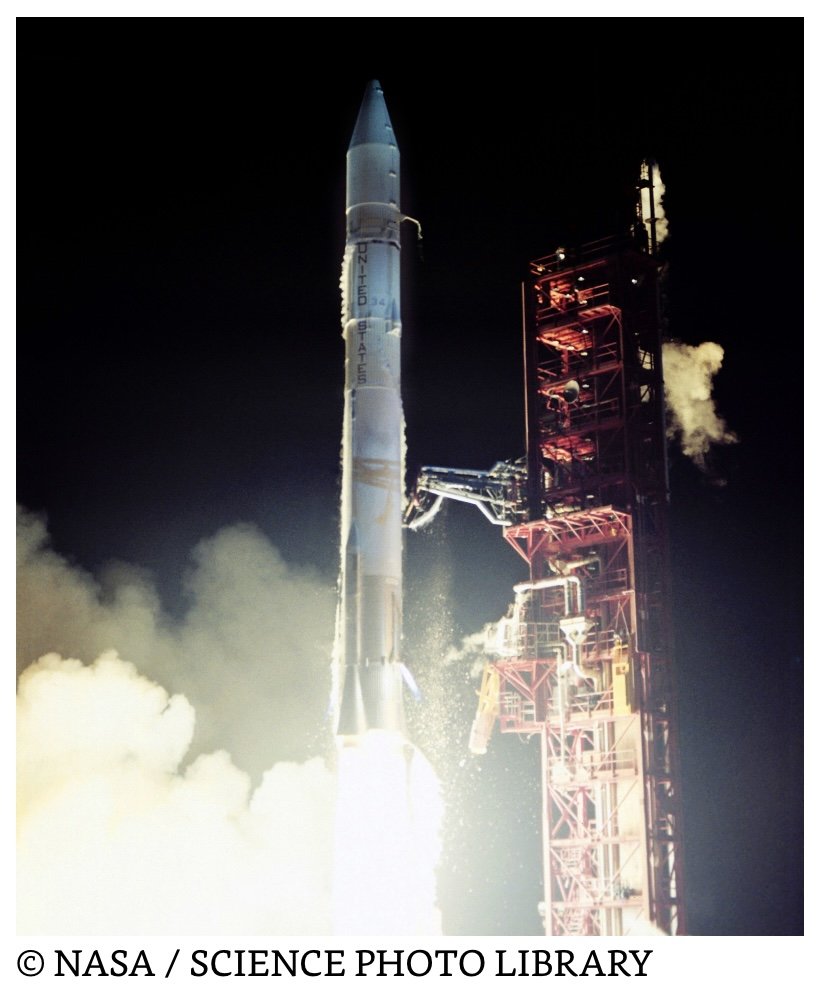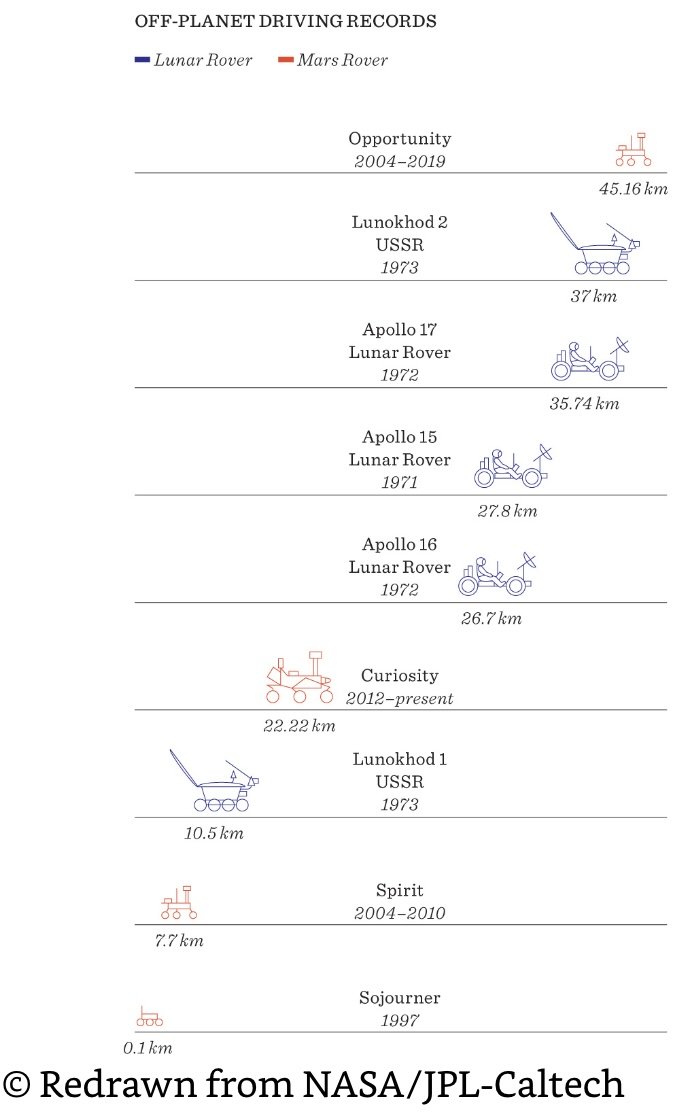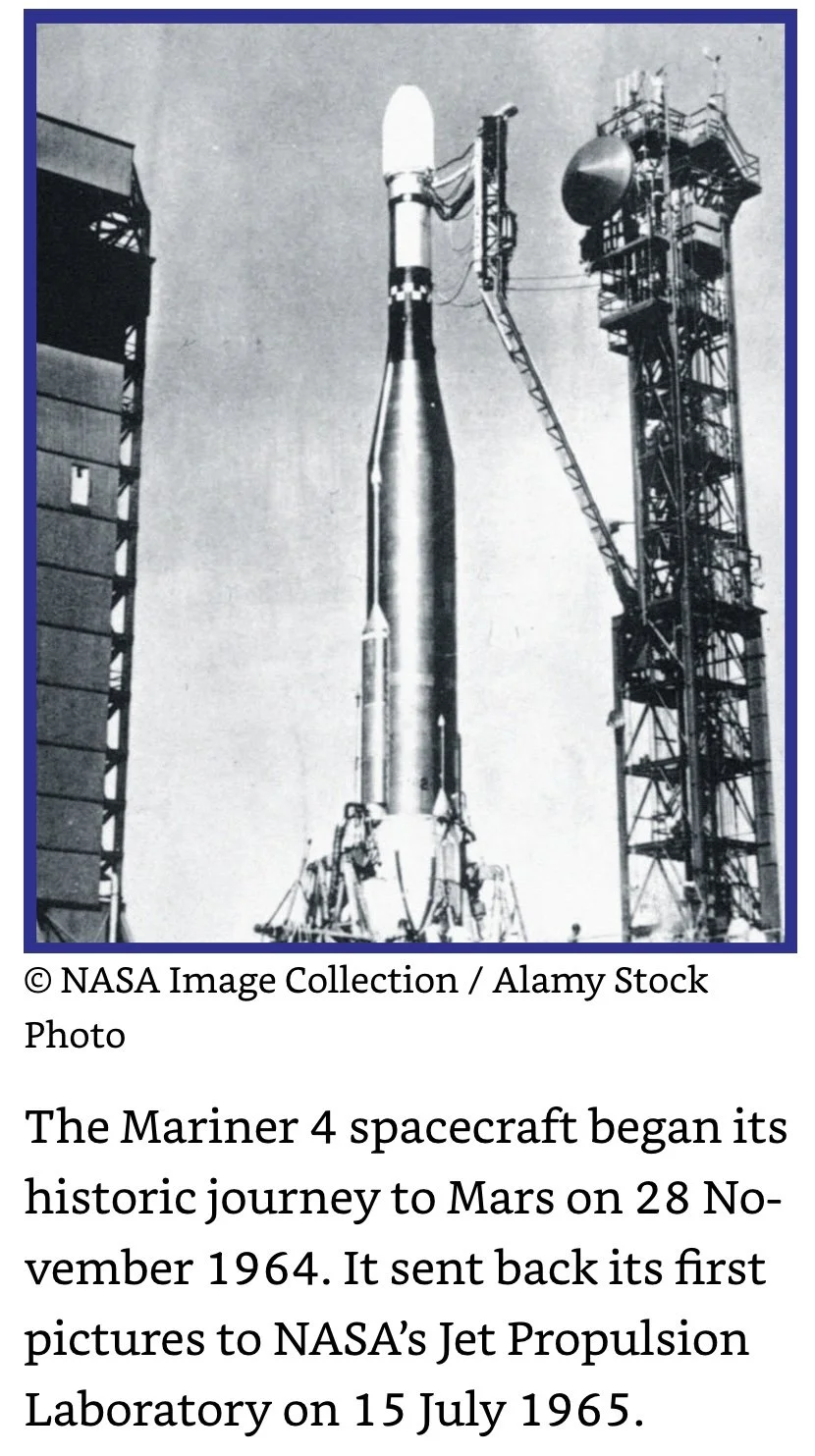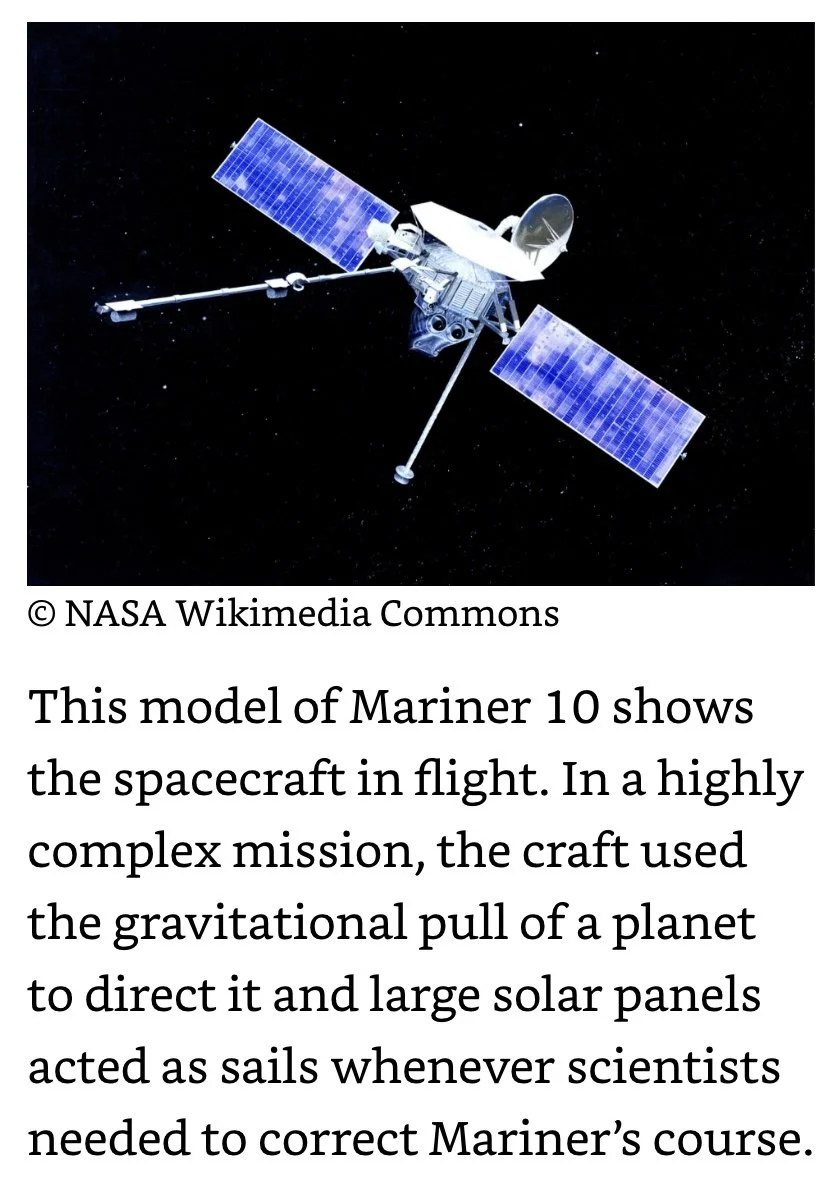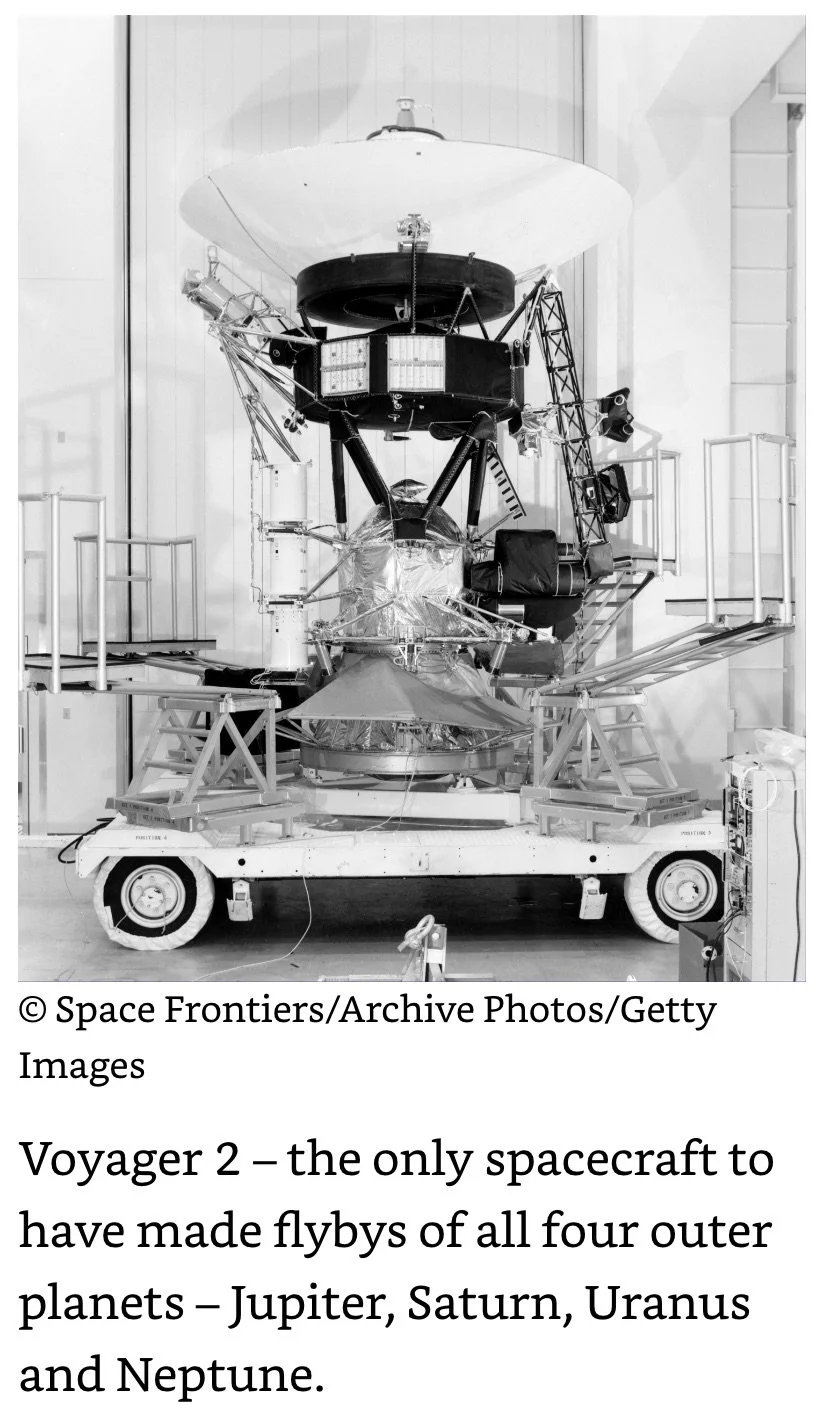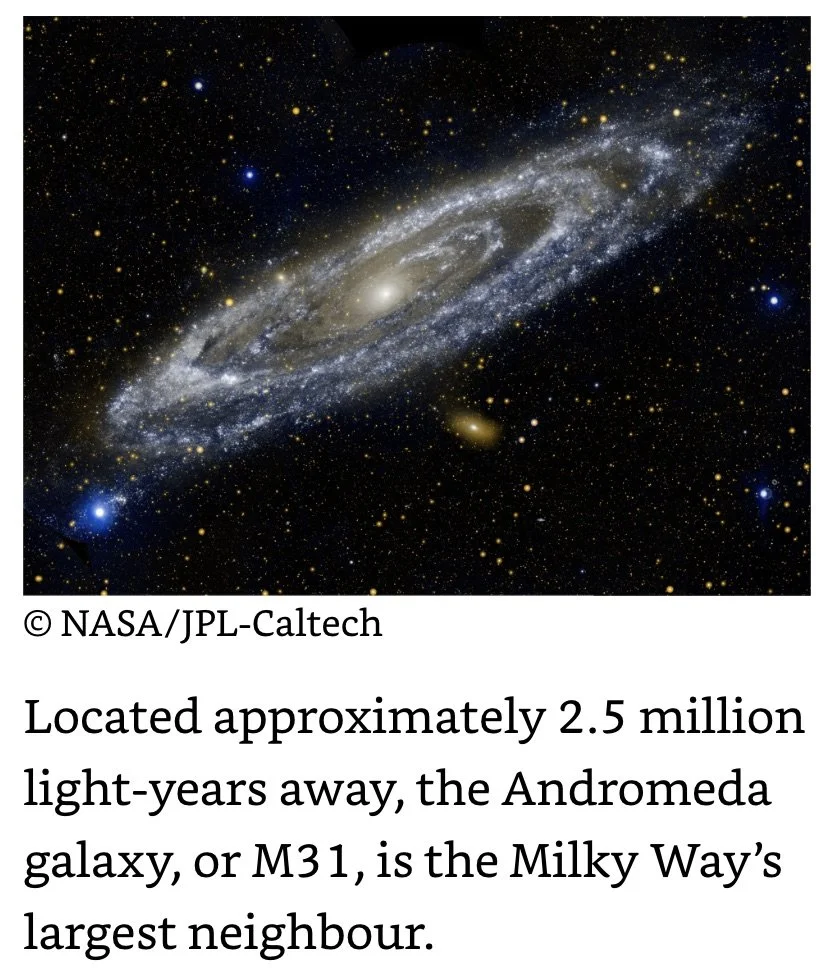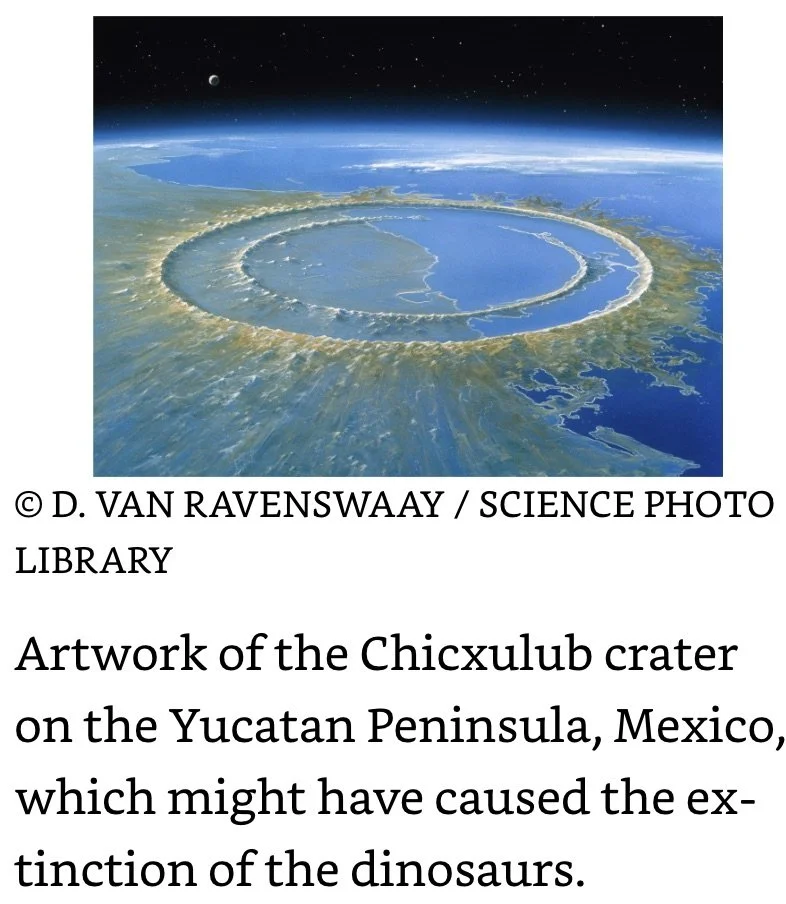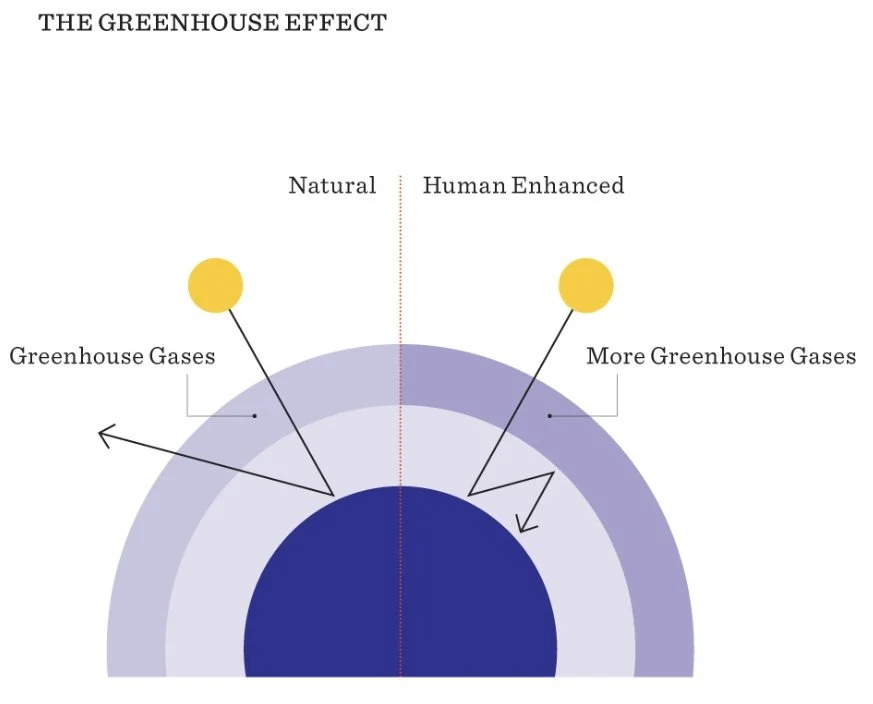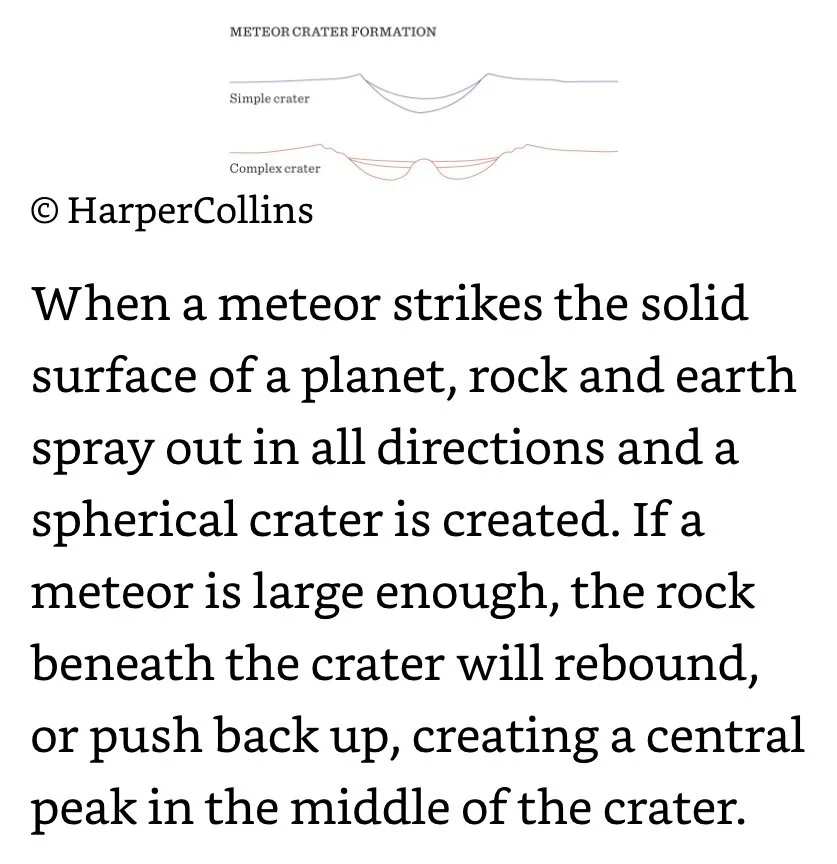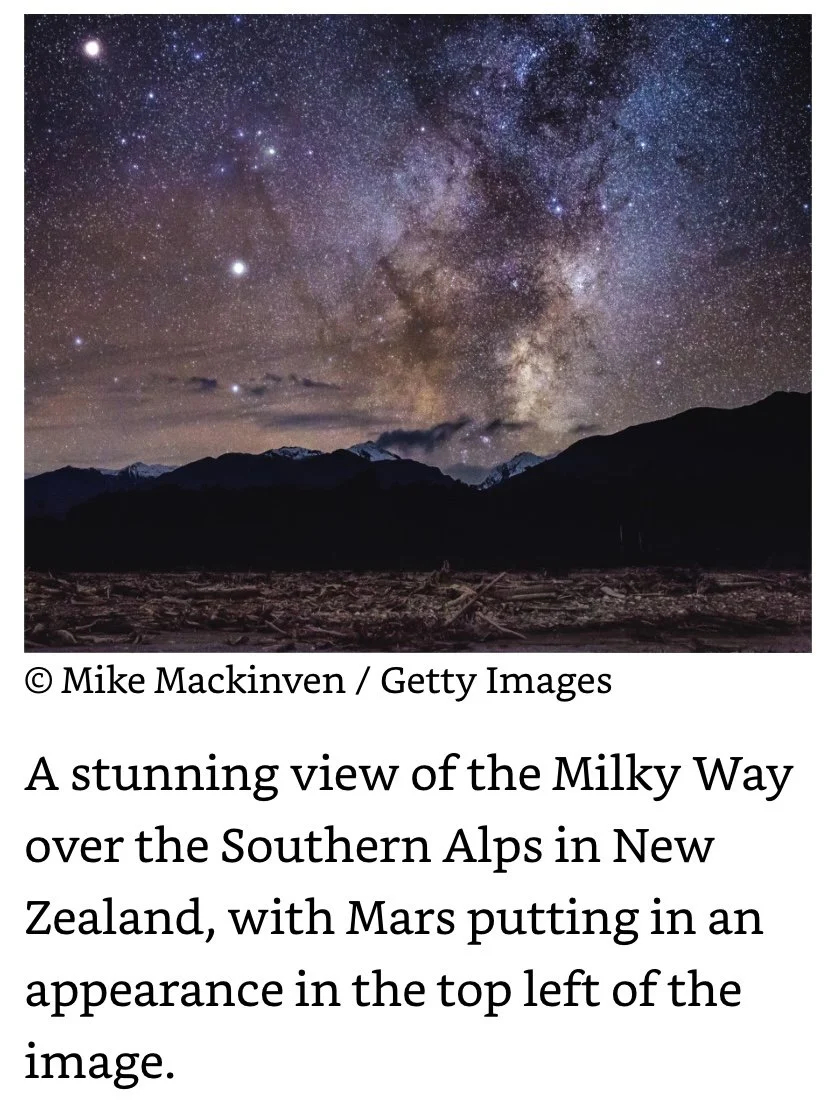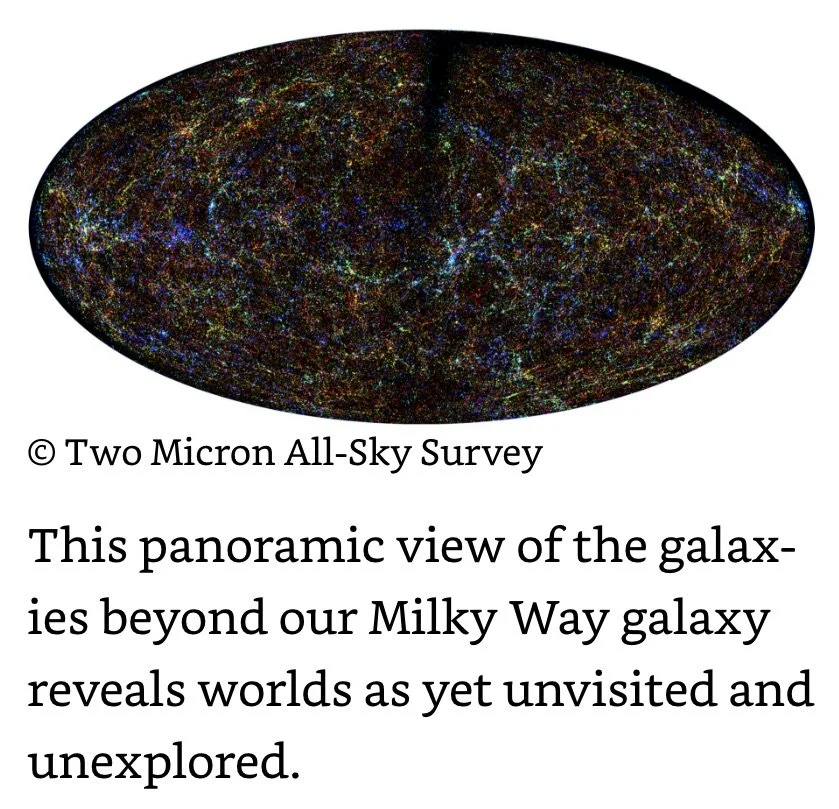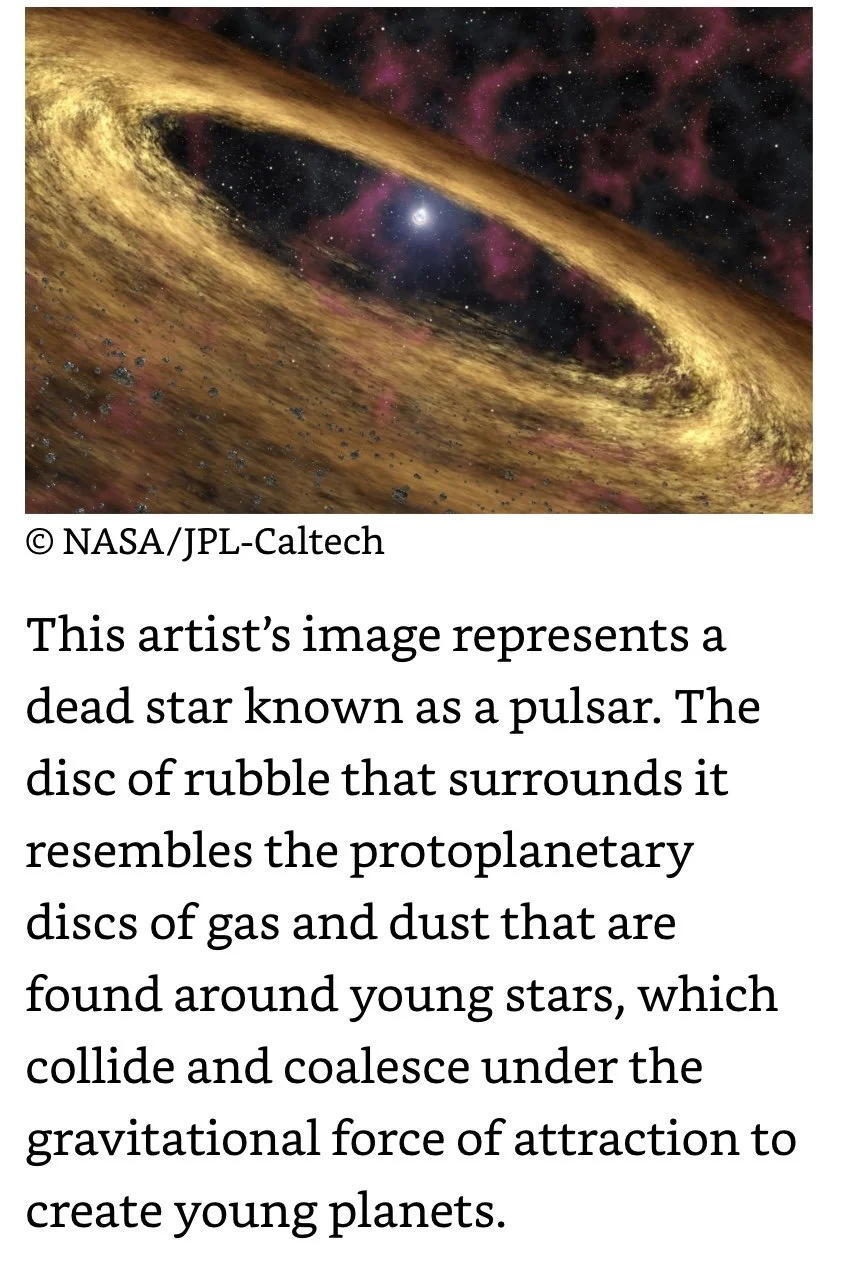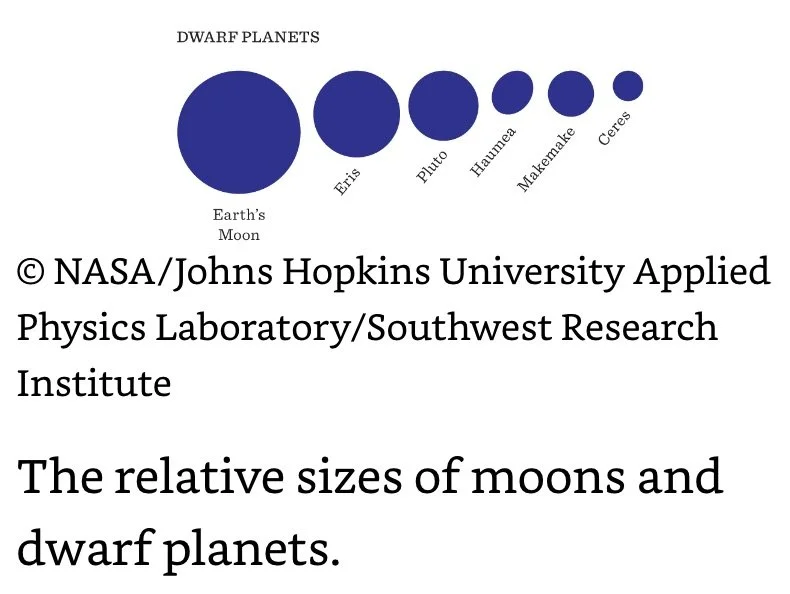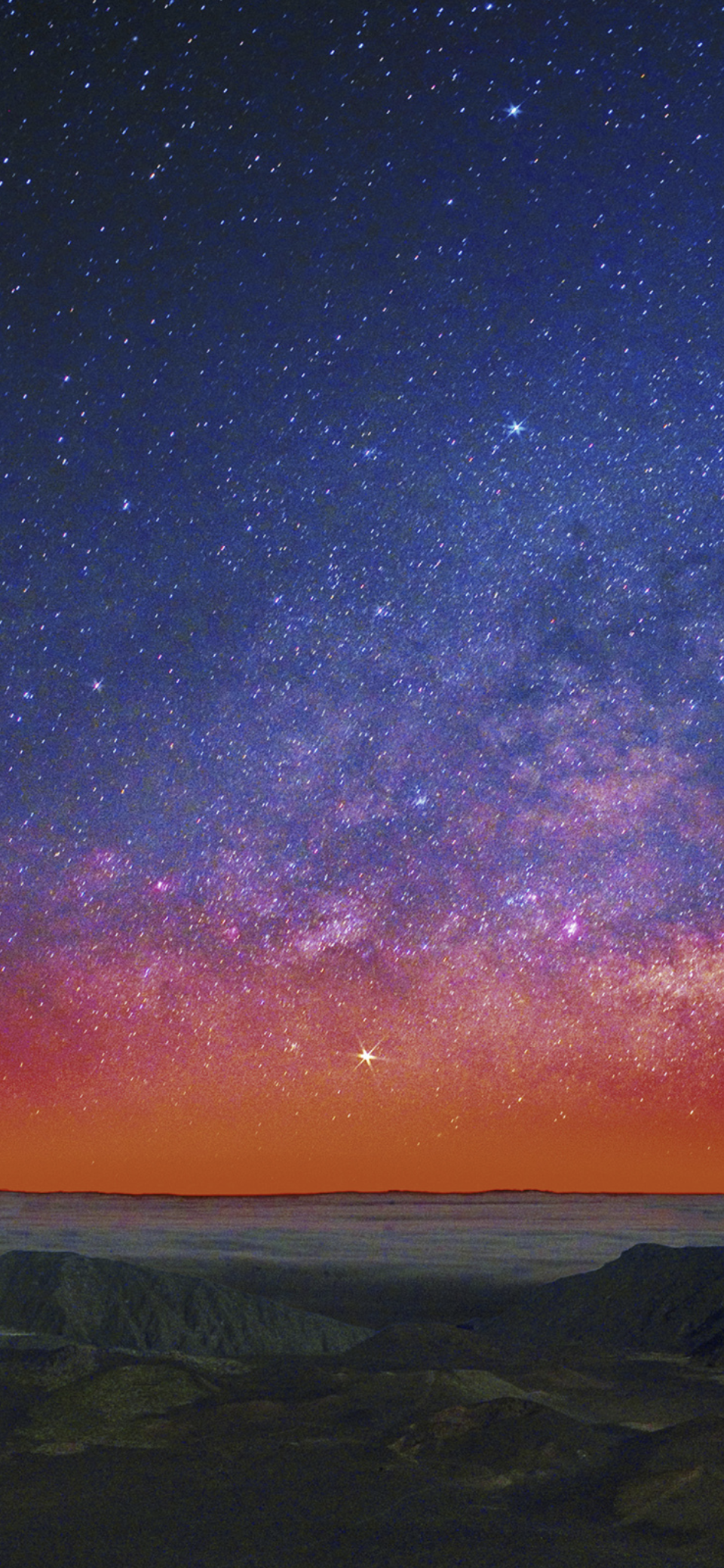The Planets by Cox & Cohen
Ref: Brian Cox & Andrew Cohen (2019). The Planets. William Collins Publishing.
__________________________________________________________________________________
Summary
A central idea in this book is that the Solar System is in fact a system; although we might feel isolated on a ball of rock in the dark, that is an illusion. No planet is an island. The system evolves as one. Draw a diagram of the food chain underpinning all complex life on Earth today, and at the base is a stream of photons generated 150 million kilometres away inside the Sun. Green plants are the interface between a star and civilization.
All the evidence is beginning to suggest that we may be living on a tiny oasis within a vast desert, devoid of life and stretching out across the Milky Way.
__________________________________________________________________________________
Sun
Surface Temperature: 6K Celsius.
Our Sun’s Lifecycle: Stellar Nebula ® Average Star ® Red Giant ® Planetary Nebula ® White Dwarf ® Brown Dwarf.
As the Sun gets older, it will gradually burn hotter and hotter. This is because as it ages the process of nuclear fusion- the fusion of H into (mainly) He- gradually leads to an increase in the amount of He in its core. This rise in He causes the Sun’s core to contract, which in turn allows the whole star to shrink in on itself, creating an increased pressure that results in a rise in the rate of fusion, and so the energy output of the Sun goes up.
As the Sun exhausts its H fuel, its outer edge will inflate and it will enter a red giant phase. Expanding millions of km out into space, it will engulf Mercury, then Venus. Some models predict that Earth may just escape the fiery end of its neighbors – heated to 1,000 Celsius but hanging on beyond the edge of the dying star as its orbit extends out due to the lessening mass of the Sun. Dead but not destroyed, Earth and Mars will orbit as burned-out relics of their former selves.
Corona: Produces the solar wind that emerges from the Sun’s atmosphere. The corona is heated by energy transferred from the surface of the sun by the powerful solar magnetic field twisted and coiled by the star’s rotation. The corona is ~1M Celsius. At such high temperatures, atoms cannot hold together. Electrons are ripped away from atomic nuclei and matter exists as plasma; a soup of negatively charged electrons and positive ions. Some of these particles are moving so fast that they escape the Sun’s embrace completely, streaming outwards across the Solar System at velocities in excess of 800 km/s.
Solar Wind: High energy, charged particles emitted from the Corona; when these high-energy charged particles reach Earth, most do not smash directly into atoms at the top of our atmosphere because we are protected by our magnetic field. They are deflected harmlessly by stretching and distorting the field out on the night side of the planet. The stretched field occasionally reconfigures, accelerating electrically charged particles back down the magnetic field lines to the Earth’s poles, where they collide with atoms and molecules in the upper atmosphere, exciting them and causing them to emit light (the aurora; the Northern and Southern lights).
Solar Fusion: The Sun’s energy is derived from nuclear fusion reactions inside its core; a factory a million times the volume of Earth, converting H into He at a rate of 600M tons per second.
The weak nuclear force acts slowly and grudgingly to convert protons into neutrons in the core – nuclear alchemy that results in the creation of neutrinos, which stream across 150M kilometres at close to the speed of light before passing, unhindered, through the entire planet on their journey to infinity. Thus 60B per sqcm stream through your head every second without even a nudge.
__________________________________________________________________________________
---Rocky (Terrestrial) Planets---
Mercury lost its fight early as it was flung inwards towards the Sun, Venus flourished at first, before slowly coming to the boil, and Mars, the runt of the litter, became a frozen wasteland long ago.
All the weather we see on the rocky planets, whether it’s a dust storm on Mars or a hurricane on Earth, are driven by the same simple process. It begins with the Sun beating down onto the planet’s surface, heating the ground, which in turn radiates back, heating up the air closest to the ground. That air expands, which means it becomes less dense and so the hot air closest to the ground rises. The result of all this rising air is that you get thermals – energetic movement of air from the ground into the upper atmosphere. Over the oceans exactly the same process occurs, with the heat of the Sun evaporating vast amounts of water and lifting it up into the atmosphere. So in the very simplest terms, all of the extraordinary weather we see on Earth, or any of the other terrestrial planets, is driven by the Sun heating the land and sea and causing the air to move around.
__________________________________________________________________________________
Mercury
Distance from Sun: 46M km at its closest point in orbit, 70M km at its furthest.
Size: 74.8M km3; 2440km radius.
Gravity: 3.7 m/s2.
Solar Orbital Period: 88d in a lopsided, elliptical orbit.
Orbital Speed: 48km/s.
Orbital Rotation: Mercury is gravitationally locked to the Sun in what is known as a 3:2 spin orbital resonance; the planet spins precisely 3x on its axis for every two orbits, which means that its day is twice as long as its year.
Solar Day: 59 Earth Days.
Atmosphere: None.
Surface Temperature: 430C at midday, -170C at night (due to lack of atmosphere).
Topography: The surface is made up of one continental plate covering the entire planet.
10 km between the lowest and highest regions.
Planetary Structure: Mercury is the densest planet, with a massive Fe core making up 75% of the planet’s radius.
Composition: Mercury has a silicate crust and mantle above a solid layer of Fe-Sulphide, which surrounds a deeper liquid core layer, possibly with a solid inner core at the center of the planet.
Magnetic Field: Mercury has a dynamic magnetic field driven by an internal force, indicating that the core is at least partially liquid.
History: Young Mercury was born at a much greater distance from the Sun, far beyond the orbit of Venus and Earth, perhaps even beyond Mars (based on evidence of the levels of volatiles like K and S). Evidence suggests that the juvenile Mercury was kicked by the gravitational force of Jupiter on an inward trajectory, finding itself flung in towards the Sun until it collided with another embryonic world and shattered. Today we see the evidence of this ferocious collision in the strange structure of this tiny planet. A giant core has been left behind, the exposed interior of a planet that had much of its outer layer, its crust mantle, stripped away and lost to space in the aftermath of the collision.
__________________________________________________________________________________
Venus
Distance from Sun: ~108M km.
Size: ~12,104 km radius.
Gravity: 8.87 m/s2.
Solar Orbital Period: 225 days.
Solar Day: 116.75 Earth Days
Sidereal Day: 243 Earth days for a single rotation on its axis (the slowest of any planet in the Solar System).
Atmosphere:
Atmospheric Pressure: ~90x that of Earth.
Climate: Isothermal; there is a constant temperature between the day and night sides and between the equator and the poles. This is because the thick atmosphere literally acts like a blanket, dissipating the heat of the Sun so that the only real variation in temperature is due to altitude.
At 50 km above the surface, you reach a zone that may be habitable on Venus; in the clouds the pressure and temperature is roughly what it is here on the surface of Earth. There are energy sources in terms of radiation and chemical energy, there are nutrients, there is even a liquid water medium – although it’s concentrated Sulphuric acid in the clouds (we know of organisms on Earth that love concentrated Sulphuric acid).
Surface Temperature: -41 to 462 Celsius.
History: As its newly formed crust settled and cooled from the violent heat of its birth, an atmosphere began to grow around the young planet, fed by gases bubbling up from the molten rock below its surface, as well as captured from the clouds of gas and dust it swept through on its orbit around the Sun. H2O(v) eventually cooled enough to change state from vapor to liquid. Because H is far more easily lost from an atmosphere than deuterium, this smaller ratio suggests that Venus has lost a lot more H2O than the Earth over its lifetime – the signature of a long-lost primordial ocean. Slowly the young Sun grew brighter, its increased energy output causing temperatures to gradually rise, which in turn began to lift more and more H2O(v) into the air, thickening the atmosphere and sealing the planet’s fate. At some point in Venus’s past, the levels of H2O(v) lifted into the atmosphere by the warming sun pushed the GHG effect to become more intense. With less and less of the Sun’s energy escaping, the ambient temperatures began to rise exponentially until the day came when the last raindrops fell onto the surface of the planet, the heat evaporating the rains long before they could reach the ground. Venus had reached a tipping point: with the increasing temperatures feeding more and more H2O(v) into the atmosphere, a runaway GHG effect took hold, driving away the oceans. This led to the surface of the planet getting so hot that C trapped in rocks was released into the atmosphere, mixing with O to form increasing amounts of another GHG- CO2. With no H2O left on the surface and no other means to remove it, CO2 built up in the atmosphere, setting the planet on a course that would result in the scorched body that we see today.
__________________________________________________________________________________
Earth
Distance from Sun:
Aphelion: The furthest distance between a planet and its star; ~152M km for Earth.
Perihelion: The closest distance between a planet and its star; ~147M km for Earth.
Size: ~12,756 km radius.
Gravity: 9.8m/s2.
Solar Orbital Period: 365 days.
Orbital Rotation: Earth’s axis drifts between 22.1 and 24.5 degrees in a 41K year cycle; the stability of Earth’s spin axis is maintained by the damping effect of the Moon.
Orbital Speed: 29.78km/s.
Solar Day: ~24h.
Sidereal Day: 23h, 56m, 4.1s.
Atmosphere: Comprised of ~5.5 quadrillion tons of N, O, CO2 and other trace gases.
The Earth’s atmosphere gradually recedes with increasing altitude, becoming progressively thinner until, by the time you get 100 km up, you’ll have 99.999997% of the atmosphere below you.
Earth’s Primary Atmosphere: H-based.
Earth’s Secondary Atmosphere: N & CO2 based; the slow shift to the secondary atmosphere was at first triggered by the giant impact of the planetesimal Theia on the early Earth, and then driven by a combination of gases produced during the Late Heavy Bombardment, while asteroids rained down on our planet for millions of years and the geological activity within the Earth sent vast quantities of gas upwards through all-encompassing periods of volcanism.
On Earth, as solar radiation hits our atmosphere some of it is reflected straight back out into space, some is absorbed by the atmosphere and clouds, but most of the sunlight (~48%) passes straight through the atmosphere and is absorbed by the Earth’s surface, where it is heated up. The reason so much solar radiation makes it to the surface is because the gases in our atmosphere, like H2O(v) and CO2, are transparent to light in the visible spectrum. When that sunlight heats the surface of the Earth and re-radiates back out not as visible light but as the longer-wave infrared light – thermal radiation. We can’t see this light, but as it radiates back out from the Earth’s surface, CO2 and H2O vapor absorb the infrared, trapping that energy, and so the planet maintains a higher temperature
Escape Velocity: ~11.186 km/s.
Surface Temperature: ~14.9 Celsius average; without the GHG effect, the Earths average T would be -18 Celsius.
History
On Earth, some of the oldest crustal rocks are found off the SW coast of Greenland at a place called Isua. Using Ru-St dating, we know these rocks were formed 3.66 Ga, with an uncertainty of 0.06B years. The oldest-known rock on Earth was found in Jack Hills, Western Australia. It formed 4.404 Ga, with an uncertainty of 0.008B years. All known samples from Earth’s crust are younger than 4 Ga, because the seething surface of the Hadean Earth meant that rocks were constantly being melted and reformed, resetting the radiometric clocks.
The majority (over a thousand known) of meteorites that have fallen to Earth formed between 4.4 and 4.6 Ga, which is consistent with independent estimates for the age of the Solar System, using, for example, helioseismology measurements of the amount of helium in the Sun’s core.
Magnetic field: Generated by a dynamo; Earth’s core is composed largely of molten Fe, which is an electrically conducting fluid. Plumes of molten liquid rise and cool as they approach the mantle, and the Earth’s rotation swings these columns around into circulating rising and falling flows. This circulating flow acts as a dynamo and generates a magnetic field. The Magnetic field deflects the solar wind harmlessly past our planet and allows it to return in a much-subdued form to the poles.
Aurora: Produced by the interaction of a magnetic field with the electrically charged particles that comprise the solar wind.
Red Color: Produced by High-altitude oxygen.
Green Color: Produced at lower altitudes by a different reconfiguration inside O atoms.
Red or Pink Color: Produced by excited nitrogen molecules.
Future: With a 10% rise in the sun’s luminosity, the Earths average T will rise to 47 Celsius. The increased temperatures will raise great storms across the planet. The rains will remove CO2 from the atmosphere and it will be locked away as newly formed sedimentary rock. Trees and plants will struggle as they are robbed of the gas that sustains them, until eventually photosynthesis will cease. The lungs of our planet will fail and the precious O that green plants and algae produce will dwindle. With the primary food source gone, the food chain will collapse and the age of complex life on Earth will draw to a close.
__________________________________________________________________________________
Moon
~4 Ga: Formation of Earth’s moon following a glancing collision with Mars-sized Theia that fragments into a ring of debris that, given time, coalesces with the ejected rubble of Earth to form the Moon.
The youngest of the Moon rocks returned by the Apollo astronauts were 3.2 billion years old, and the oldest were 4.5 billion years old.
We count the number of craters per sqkm– let’s say we get an average of 0.0002 craters above a diameter of 4 km per sqkm. This allows us to say that the surface formed somewhere between around 3.2 and 4 billion years ago.
__________________________________________________________________________________
Mars
Distance from Sun: ~250M km.
Size: ~1/10th the mass of Earth; too small to hang on to its internal heat, its protective magnetic field, and its atmosphere for much more than a billion years after formation; 3,389.5 km radius.
Gravity: 3.721 m/s2.
Solar Orbital Period: 687 days.
Orbital Speed: ~24.08 km/s.
Solar Day: 24h 37min.
Atmosphere: A thin atmosphere composed primarily of CO2. The atmosphere used to be thicker, however CO2 on Mars has been lost to space through the interaction with the solar wind, with a smaller fraction being locked away in subsurface carbonate deposits and an even smaller fraction stored as frozen CO2 in the polar ice caps.
Surface Temperature: -153 to 20 Celsius.
Topography:
Tharsis Rise: A volcanic plateau on Mars, home to Olympus Mons, the highest volcano in the Solar System.
Echus Chasma: The largest known waterfall in the history of the solay system at ~4km high. During eruptions on Mars Tharsis Rise, vast quantities of water, ~350K cubic km (a cube of 70 x 70 x 70 km) would cascade through the Chasma in <2 weeks.
Valles Marineris: A deep canyon that dwarfs anything on Earth. It cuts a deep scar across Tharsis to the SE of Olympus Mons; named after the Mariner spacecraft that discovered it.
Hellas Impact Basin: The largest clearly visible impact crater in the Solar System. From the highest points on the crater rim to the floor, Hellas is over 9 km deep; it could contain Mount Everest.
Eridania Basin: Once a giant lake, possibly the largest ever to exist on Mars- 1.5 km deep in places and containing 3x more water by volume than the Caspian Sea on Earth. We know the terrain is late-Noachian ~3.7 Ga– from crater counting. The geochemistry of the low-lying regions is indicative of a deep-sea, volcanically active, hydrothermal environment, with the salt-rich deposits at higher elevations suggestive of slow evaporation in shallower waters. The basin contained an Fe- and mineral-rich ocean, energized by active volcanism deep below the waves.
Planetary Structure:
The Northern Hemisphere is on average 5.5 km lower in altitude than the Southern.
History: Nobody disputes that rivers once flowed on Mars, or that many impact craters were once home to lakes. The key question is one of longevity. Was Mars warm and wet for long periods of time, or was it for the most part a frozen planet on which water occasionally melted, perhaps triggered by sporadic volcanic activity or shifts in the planet’s orbit? The latest state-of-the-art Martian climate simulations ‘… suggest a water-limited early Mars with episodic melting episodes may be a suitable paradigm for much of the late Noachian and early Hesperian climate.’
Why Mars died. The red planet is simply too small. It lost its heat more quickly than Earth from its smaller core and through its thinner mantle and crust, geological activity fell markedly after reaching a peak during the Hesperian, and the planet faded. The atmosphere, held more tenuously than Earth’s because of the planet’s lower mass and gravitational pull and unprotected by a magnetic shield, was stripped away by the solar wind, and the surface approached temperatures more in tune with an orbit far from the Sun. Mars’s fate was sealed during its formation 4.5 Ga; it is too small and too far away from the Sun to have remained a vibrant, active world.
__________________________________________________________________________________
Asteroid Belt
Asteroid Belt: A large accumulation of objects at ~500M km from the sun, rocky mostly, between the orbits of Mars and Jupiter. They’re not able to form and agglomerate into a complete planet because of the constant tug of war between the gravitational forces of the Sun and of Jupiter. It’s natural to think of the asteroid belt as a single, homogeneous structure, a ring of rocks orbiting in an orderly fashion around the Sun, but it’s nothing like that at all. In reality, each of the millions and millions of pieces of rock is following its own individual orbit, distorted and eccentric orbits that create what appears to be a chaotic cavalcade around the Sun.
The asteroid belt is unimaginably vast, spread out across 13 trillion, trillion mi3 of space, making the average distance between any two large asteroids approximately 2M miles (8x the distance from the Earth to the Moon).
There are at least a couple of hundred asteroids larger than 100 km in size, then come a million or so stretching to at least 1 km or more, and a countless spread of smaller objects number in the millions and billions depending on how small you want to go.
Asteroid: One of the millions of rocks that circle the Sun between the orbits of Mars and Jupiter. Occasionally one of these huge rocks is propelled towards the inner Solar System, and more often than not we think the nudge that causes it comes from Jupiter.
Mass: ~3x1021 kg (~4% the mass of our moon, with a third of that mass found just in the largest object, Ceres).
Ceres: A minor planet found in the Asteroid Belt.
Distance from Sun: ~413M km.
Size: ~1000 km in Diameter; the largest object in the asteroid belt and the only object amongst the millions of asteroids that was large enough to have been rounded by its own gravity.
Topography
Occator: A Massive impact crater on Ceres measuring 92km wide and 2km deep.
Spot 5: Located in the middle of Occator; contains the highest concentration of CO3 minerals ever found outside the Earth; this type of Salt can only be formed in the presence of liquid water.
Vesta: A spheroid-shaped rock, 530 km in diameter and pockmarked with impact craters found in the Asteroid Belt.
Vesta has a metal-rich core, just like all of the terrestrial planets.
__________________________________________________________________________________
Ice Line
Ice Line (Snow Line): The frontier that marks the divide between the terrestrial planets and the gas giants; inside the ice line the strength of a star is strong enough to keep things pretty warm, but step onto the other side of the line and it becomes cold enough for volatile compounds like H2O, CH4, NH3, and CO2 to condense and freeze solid.
Today the ice line is thought to be around 5 au (~750M km) from the sun- well beyond the asteroid belt, at a distance just before the orbit of Jupiter.
Beyond the ice line the lower temperatures meant that all of those frozen volatile compounds were swirling around in the cloud of gas as solid grains, building blocks that provided vast amounts of additional material to feed into the process of planetary accretion, and the impact of this simple physical difference was profound. On our side of the line we find only rocky planets like Earth, Venus and Mars, while on the other side of the line there is not a single planet that we recognize as terrestrial, just the gas giants of Saturn and Jupiter and the ice giants of Uranus and Neptune beyond.
__________________________________________________________________________________
---Gas Giants---
Gas Giants: Jupiter & Saturn; comprised primarily of H and He, the two lightest gases (what stars are made of). Basically, Jupiter and Saturn are failed stars. If they had just grown about 10x bigger, they might have exploded into stars and we’d have a double star system in our Solar System.
__________________________________________________________________________________
Jupiter
Distance from Sun: ~778M km.
Mass: 1,321x Earth.
Gravity: 24.79 m/s2.
Solar Orbital Period: 12y.
Orbital Speed: 13.1 km/s.
Solar Day: 9h, 56min.
Atmosphere: Jupiter has an extremely dense and relatively dry atmosphere composed primarily of H, He, and much smaller amounts of CH4 and NH3.
Surface Temperature: ~-150 Celsius on average.
History: Jupiter is the oldest of all planets.
Moons of Jupiter: ~79; The vast majority of Jupiter’s moons (63) are not much more than fragments of rock, none bigger than 10 km in diameter, captured asteroids that now orbit the planet rather than the Sun.
Io: A Galilean Moon, closest to Jupiter, orbiting at ~350K km from the cloud tops making it a gravitationally tortured world. Io is the most geologically active object in the solar system. It is fiercely volcanic with >400 active volcanoes, its surface littered with lakes of lava and vast clouds of pyroclastic material that blows hundreds of km up into space. Io’s volcanism is created not by ancient internal heat, as we see on our planet Earth, but by the power and the influence of Jupiter’s gravitational pull. The gravitational pull of Jupiter creates a bulge of rock tides up to 100m between low and high tide.
Every second orbit, Europa and Io line up, and that rhythmic orbit has consequences. This is what’s known as an orbital resonance, and the result is that it gives Io an additional gravitational kick that moves the moon’s orbit out of a circle and into an ellipse. Ganymede is also in a resonant orbit with Io in a 1:4 orbital period ratio, and the outcome of this is that as Io orbits the gravitational forces are constantly shifting and changing, and that stretches and squashes the moon, creating vast amounts of friction that causes its interior to heat up. It’s a process called tidal heating and it’s this generation of heat that produces Io’s volcanoes, raising the temperature in its interior to over 1,200 Celsius and creating the violent world of lava lakes and volcanic plumes.
Europa: A Galilean Moon; the ice moon; shows tantalizing evidence on its surface pointing to a sub-surface ocean sitting below its icy crust.
Ganymede: A Galilean Moon; Jupiter’s largest; a rocky world with an abundance of water ice on its surface and perhaps an ocean lurking beneath; the only moon we know that has its own magnetic field.
Callisto: A Galilean Moon; a rocky world with an abundance of water ice on its surface and perhaps an ocean lurking beneath.
Titan: The only known moon with a dense atmosphere and liquid lakes on its surface (primarily CH4).
Enceladus: A frozen ice moon just like Europa with a liquid ocean deep beneath its ice; our best current candidate as a second life-sustaining world in our Solar System.
__________________________________________________________________________________
Saturn
Distance from Sun: ~1.4B km.
Size: Saturn has an equatorial diameter of 120,536 km (its volume would hold 800 Earth’s).
Solar Orbital Period: 29y.
Orbital Speed: 9.7 km/s.
Solar Day: 10h, 34min.
Atmosphere: Beneath the cloud tops, the pressure rapidly increases under the huge weight of Saturn’s dense atmosphere. The H gas of the upper layers turns at first into liquid, and then, hundreds of km further below the planet’s cloud tops, into slushy metallic oceans of H.
The atmospheric systems on Saturn is powered by energy from below; from an internal source on Saturn. They’re not powered by sunlight, like we have on Earth.
The clouds are made of frozen NH3 (which gives Saturn its characteristic pale-yellow color). Beyond this upper layer of cloud, as the pressures begin to increase and the temperature rises, huge clouds of water ice form a thick layer.
We now think that around 100 kilometres below the visible atmosphere, with temperatures inside Saturn’s lightning reaching almost 30,000 Celsius, this lightning transforms CH4 gas in the atmosphere into huge clouds of C soot. Carried higher into the atmosphere on great convection currents, we think that it’s these specks of C-producing lightning that can explain the mysterious dark clouds that Cassini was able to observe and image over many years. This particulate matter rains down from the upper cloud layers until, at a depth of 1,500 km, we think the enormous pressures begin compressing this soot into graphite, which then falls further into the depths of the planet. We then think that at around 6,000 km down, this graphite is compressed into solid diamond that rains down for at least 250,000 km. Estimates suggest at any one-time 10M tons of diamond ‘hail’ is raining down within the planet, from specks of diamond dust just a mm across to chunks as big as 10 cm.
Temperature: -203 Celsius at the uppermost level of the atmosphere; -170 to -110 Celsius at the cloud tops; -130 Celsius at the deepest levels (around 120 kilopascals); Saturn emanates more heat than it receives from the sun.
Topography: On the surface the pressures are so intense that the H that makes up over 96% of Saturn’s mass is compressed into a vast ocean of liquid H that is saturated with He gas. Under these enormous temperatures and pressures, the He precipitates out and falls like rain through the ocean, depleting the levels of He in Saturn’s outer layers (which explains the lower-than-expected amount of He first measured by Voyager 1 in 1980). It’s a process that through the simple action of friction as the molten He rain falls creates an incredible amount of heat and we think this is the engine, the energy source that helps power Saturn’s ferocious weather and drives its entire atmosphere for tens of thousands of miles in every direction.
Planetary Structure: Composed of 96% H and 3% He; Saturn is the only planet less dense than water.
History: Young Saturn grew to become one of the largest rocky bodies in the Solar System. As Saturn continued to grow it drew not just solid material but also gas towards it from the vast clouds swirling around the embryonic Solar System. Huge amounts of the H and He left over from the formation of the Sun clung to the vast planet, creating a first atmosphere that may well have been very similar to the earliest one on Earth. H, He, NH3, CH4 and many other gases that were too light for the smaller worlds of the inner Solar System to hold on to were able to accumulate out here, with Saturn’s vast mass and the freezing temperatures being enough to draw them in. Trillions upon trillions of tons of gas began to envelop the planet, reaching depths first of hundreds of km and then thousands, and as this new atmosphere grew, it transformed the surfaces below. As its atmosphere deepened, the thousands upon thousands of km of gas weighing down on its surface began to generate incredible pressure, heating the rock and ice so much they began to glow. As Saturn matured, the pressure at its core grew to 10M x the level we experience on Earth. As Saturn took on its new form, the enormous pressures generated crushed and melted its solid core, destroying the rocky world it had been and replacing it with a new world, utterly alien in its characteristics. Saturn had transformed from a world of rock and ice into a wholly different class of planet, a gas giant, a ball of gas.
Saturn formed from a cloud of gas and dust consisting almost entirely of H and simple H-based molecules such as water (H2O), methane (CH4) and ammonia (NH3).
Saturn’s Rings: Saturn’s 500K mile ring of almost pure frozen water, broken into millions of individual pieces; most of them are no bigger than snowflakes but some are as large as houses. They orbit the planet at 1,800 km/h. This debris forms a disc wider than Jupiter yet on average just 10 m thick.
The rings are just a fleeting shadow, an echo of Saturn’s past (~10-100M years old) and an ephemeral structure that has adorned the planet for a brief moment in its history and will soon disappear again.
The A-ring is Saturn’s outermost ring; and then goes into B-ring, where ~80% of the mass is. And there’s a faint C-ring, and an even fainter D-ring inside that. Then the E-ring (discovered around 1980, when the rings as viewed from the Earth were edge on) is associated with Enceladus. Then Pioneer 11 discovered the F-ring, and then Voyager discovered the G-ring. And the G-ring, we know, is associated with a moon called Aegaeon, which is the source material for the ring.
Cassini Division: The 4800km gap between the A and B rings.
Ring Rain: An endless downpouring of material falling from the rings into Saturn’s upper atmosphere; occurs in the space between the closest ring (the D-Ring).
Using the Ion and Neutron mass spectrometer, it measured the rate at which the rain was falling from the rings – a staggering 10K kg of material every second. It was also able to reveal that the ring rain is comprised of a mix of H, water ice and a surprising quantity of complex organic compounds like butane and propane.
Moons of Saturn: ~62
Titan: Saturn’s largest moon (bigger than Mercury); the only moon in the Solar System to have its own substantial atmosphere, which is composed almost entirely of N (like Earth), with a surface pressure of 1.6x that of Earth.
NASAs Huygens space probe landed on Titan, taking pictures of a world shaped by liquid, covered in drainage channels crossing the landscape into what looks like a lake bed or sea. Huygens images look exactly like a floodplain or riverbed here on Earth and was able to confirm that what look like boulders of rock are, in fact, boulders of frozen water ice.
Huygens studied the planet for a 70min period and detecting significant amounts of CH4 in the air, confirming a surface temperature of -180 Celsius combined with an atmospheric pressure equivalent to 1.4x Earth ATMs, and abundant CH4 in liquid form.
NASAs Cassini space probe has discovered more than 40 lakes of liquid CH4 on Titan.
Ligeia Mare: A vast body of liquid hydrocarbons on Titan with a shoreline over 200 km in length. Mysterious bubbles have been imaged rising from its depth.
Kraken Mare: A 400K sqkm lake of CH4 on Titan with a depth of possibly 160 m; the largest known body of liquid on the moon. Images show waves and islands and currents, endlessly being filled by the flash floods of CH4 rain that falls on the highlands surrounding the sea and feeding the rivers and streams that flow into it.
Ontario Lacus: A 15K sqkm lake on Titan comprised of hydrocarbons, whipped by winds that are clearly eroding the shoreline.
Titan has a complex chemistry. We have found molecules like hydrogen cyanide, which are the building blocks of amino acids, molecules like vinyl cyanide, which chemists and biologists speculate could form some sort of cell membrane. In fact, all of the ingredients for life are present on the surface of Titan today.
Enceladus: A small ice moon of Saturn, about the size of Iceland, with an ocean of liquid water inside that seems to contain all the building blocks of life. Enceladus is the most reflective object in the Solar System- >90% of the light that hits it bounces back, because the surface is covered by crevasses that stretch for hundreds of km.
Giant plumes of H2O (v) and ice are erupting from its surface; over 200 kg of material is being released every second, feeding one of Saturn’s outer rings and helping to replenish it. The plumes were spewing out of fissures, known as ‘tiger stripes’, being projected from deep within this ice world, rising up from an ocean of salty liquid water beneath the ice.
Enceladus orbits Saturn and the planet’s vast gravitational force pulls at the moon, holding it in orbit, but every couple of rotations a larger moon called Dione aligns with Enceladus, drawing it back. This repeated tug of opposing tidal forces stretches and squeezes the moon, warming its core and melting its icy interior.
Mimas: An ice moon ~396 km across; its Herschel crater covers 130 km of the surface- a deep scar that tells us that once, long ago, there was a giant impact that almost destroyed the moon.
Iapetus: Saturn’s third largest moon at 1500 km across; running around three-quarters of the moon’s diameter is a massive equatorial ridge- one of the highest mountain ranges in the Solar System, 20 km from the peaks to the ground below.
Hyperion: A strange sponge-like ice moon that tumbles around in Saturn’s orbit.
Veritas: A hypothetically destroyed moon and the origin of Saturn’s rings; we now think that 10 to 100 million years ago, just beyond the outer reaches of Saturn’s vast atmosphere, an icy moon orbited, gradually edging closer and closer to that tipping point, the Roche limit. As Saturn’s immense gravitational force pulled at it, this great moon began to rupture, and in a moment undoubtedly worthy of even the greatest of mythological stories, up to 30 million trillion tons of ice, more than 30,000 times the weight of Mount Everest, broke apart in orbit and spread out around Saturn.
Shepherding Moons: Satellites that exist within the narrowest ring of Saturn, and play an essential role in keeping the delicate structures in place by their gravitational interactions with the billions of particles within the rings.
Prometheus: A shepherding moon of Saturn to its F-ring.
Atlas: A shepherding moon of Saturn to its A-ring.
__________________________________________________________________________________
---Ice Giants---
__________________________________________________________________________________
Uranus
Distance from Sun: ~2.9B km.
Size: The 4th largest planet in the Solar System and the third largest by mass; ~14.5x the mass of the Earth.
Gravity: 8.87 m/s2.
Solar Orbital Period: 84y to complete a highly elliptical orbit.
Orbital Speed: 6.8 km/s.
Solar Day: 17h 14min.
Atmosphere: Comprised of 83% H, 15% He (lower than predicted), 2.5% CH4 (relatively high in the upper atmosphere) which gives the planet its blue glow.
Surface Temperature: -213 Celsius.
Planetary Structure: Comprised mostly of H20, NH3, and CH4 in the form of ices that are believed to wrap around a rocky core. Uranus spins on its side with an axial tilt of 97.77 degrees, so that the N. pole of Uranus sometimes points right at the sun. The rings and moons are all oriented along this plane, too. We don’t know for certain why Uranus is tipped over on its side, but it seems likely that at some point in the distant past it was hit by another planet, at least as large as the Earth, which quite literally knocked the planet over.
History: As each of the planets was forming around 4.5 Ga, Uranus found itself in a region where there was an abundance of H2O, CH4 and NH3 at temperatures where these volatile compounds (each with freezing points > -173 Celsius) were cold enough to form the ‘ices’ from which most of the planet would be built.
Rings of Uranus: The rings are maintained by two tiny moons, Cordelia and Ophelia. With a radius of just 21 km, Ophelia sits on the outside of the ring, while the slightly smaller Cordelia, the innermost known moon of Uranus, sits on the inside of the epsilon ring.
Moons of Uranus: ~27; all of which are named after characters from the works of Shakespeare or Alexander Pope.
Cordelia: The innermost moon Uranus, sitting on the inside of the epsilon ring.
Ophelia: Discovered by Voyager 2; Ophelia sits on the outside of Uranus’ rings and has a radius of 21 km.
Oberon (‘Uranus IV’): The outermost major moon of Uranus. It is the 2nd largest, with a surface area comparable to the area of Australia.
Ariel: The 4th largest known moon of Uranus.
Miranda: A strange-looking, jagged world, with a diameter of 470 km, it’s one of the smallest objects we have studied in the Solar System that has reached hydrostatic equilibrium, or in other words is rounded by its own gravity. To look at Miranda is to see one of the most rugged landscapes in the Solar System, a world of extreme geological features carved into its icy surface.
Verona Rupes: An ~20km cliff face, the highest in the solar system, found on Uranus’ moon Miranda.
__________________________________________________________________________________
Neptune
Distance from Sun: ~4.495B km.
Size: ~24,622 km radius.
Gravity: 11.15 m/s2.
Solar Orbital Period: 164.8y.
Orbital Speed: 5.4 km/s.
Solar Day: 16.11h, rotating anti-clockwise.
Atmosphere: Comprised of 80% H, 18.5% He, and 1.5% CH4; Voyager revealed banks of CH4 clouds that were being whipped around by high-altitude winds at speeds of over 2,000 km/h. >5x stronger than the most powerful winds ever measured on Earth; the highest wind speeds witnessed anywhere in the Solar System.
Surface Temperature: ~-200 Celsius average.
Planetary Structure: Composed of a rocky core and a mantle made up of H2O, NH3 and CH4 ices, surrounded by a cold gaseous atmosphere. With no solid surface on the planet there are no mountains or continents to break up the flow of the atmospheric gases, so this means the winds can whip around the planet, picking up speed until they are quite literally supersonic.
Moons of Neptune
Triton: An ice world with a surface covered in a frozen mixture of N, water ice, and CO2; Triton travels around Neptune in a tidally locked orbit and was recorded by Voyager’s instruments as one of the coldest places in the Solar System at -235 Celsius. Triton has active volcanoes in the form of cryovolcanoes.
Cryovolcano: Erupt water, NH3, and CH4 from below the surface. Cryomagma immediately solidifies in the extreme low temperature at the surface. As the sunlight pierces through the N ice it starts to heat up a layer of CH4 particles a meter below the surface. The CH4 acts as a subsurface GHG, trapping the heat below the surface and radiating the heat back up through the frozen N. Even though this mechanism creates a temperature difference of just 4 Celsius, between the ambient surface temperature and that of the warmer interior this difference is enough to melt the frozen N and create pockets of gas. Sitting beneath the N ice, that gas is kept under pressure, building up until ultimately it punches through the N ice, creating the geysers of Triton and carrying the dark ice particles up to 8 km into the sky. At least four geysers were active at the time of Voyager’s fly-by, belching clouds of ice and dust 8 km up into the thin Neptunian atmosphere.
Triton may have grown up in the Kuiper Belt, amongst the millions of other frozen lumps of water, NH3 and CH4 circling the Sun, before something such as a collision disturbed its orbit and flung it inwards. Plucked from the Kuiper Belt, Triton would be captured by the gravitational pull of Neptune and forever trapped in its strange orbit around the blue planet. Glancing past the planet, it would have started along a wide elliptical path around Neptune, bringing it from far out to close in on every revolution. This would have meant that as Triton orbited Neptune the gravitational pull would be constantly changing, stretching and squashing the moon, just as Jupiter does to Io today, with the result that the friction of these tidal forces would have heated up the interior of Triton, creating far more activity than the erupting geysers we see today. Through this process of tidal heating the ancient interior of ice would have become molten and volatile, exploding up through cracks and faults in the moon’s crust, creating the ragged surface we see today. Over time, as the orbit adjusted into a more regular, circular path, the friction reduced, the heating diminished, and so what we are left with is an icy, frozen moon, circling the wrong way around its planet, the subtle scars of its early life written across its surface.
Nereid: The third largest moon of Neptune; it has the most eccentric orbit of all known moons in the Solar System.
__________________________________________________________________________________
---Dwarf (Minor) Planets---
__________________________________________________________________________________
Pluto
Distance from Sun: 4.8B km.
Size: Nearly spherical; ~1,188.3 km radius.
Solar Orbital Period: 248y.
Solar Day: ~153h.
Atmosphere: A hazy atmosphere comprised mostly of N.
Surface Temperature: ~-240 to -226 Celsius average.
Topography:
Sputnik Planitia: A high-albedo ice covered basin on Pluto, ~1050x800 km in size. The geometric patterns see in the basin are characteristic of convection, which occurs when a heat source causes material to rise up and fall back down again as it cools. It’s possible that underneath the surface of this basin, there is a heat source which is creating a circulating convection current, melting the N ice and causing it to rise, cool, and then fall again, constantly resurfacing the area, removing any scars from impacts and leaving the characteristic cells of convection behind.
Scientists now believe that below the surface of the glacier there was once a liquid body of water, a flowing ocean that might even still be there. It is this ocean that could possibly explain the strange patterns on the surface, because it needs only a small difference in temperature between the underground ocean and the frozen N above to create the convection currents needed to produce the crater-free, patterned plain we see today.
__________________________________________________________________________________
---Kuiper Belt---
Kuiper Belt: A disc of millions of objects that stretches out from the orbit of Neptune to at least 50 au from the Sun. Similar to the asteroid belt in structure, but far larger in scale.
The number of identified objects in the Kuiper Belt region is ~2,400, however researchers believe there are ~100K objects bigger than 100km wide in the Kuiper Belt.
__________________________________________________________________________________
Stars
Eventually, the H fuel that powers the nuclear reactions within a star will begin to run out and the star will enter the final phases of its lifetime. It will expand, cool and change colour to become a red giant. Small stars, like our sun, will undergo a relatively peaceful and beautiful death, which will see it pass through a planetary nebula phase to become a white dwarf, which will cool down over time to leave a brown dwarf.
Arcturus: A star born ~6-8 Ga. Today, it is no longer a main-sequence star and is in its red giant phase. Its fuel exhausted, it has swollen up to 25x its original diameter and is around 170x as luminous, despite the fact that as its core slowly burns out it is cooling.
Sirius: The Dog Star; the brightest star in the northern sky.
Sirius B: A star that has burnt through its fuel, swollen into a red giant and the outer layers have drifted off into space, leaving the fading core of the star about the size of the Earth, known as a white dwarf.
Gravity assembles stars by forcing the collapse of primordial interstellar clouds, causing them to heat up in their centers and triggering the nuclear reactions that release the energy to halt their collapse for a few billion years.
__________________________________________________________________________________
Solar System
A tiny fraction of the material left over from the Sun’s formation, this swirling cloud would one day coalesce to form the various planets of the Solar System, and many other smaller bodies, but at this time, 4.7 Ga, there was nothing but tiny specks of dust reflecting back the light of our slowly growing star.
The whole Solar System is a 2nd or 3rd generation conglomeration of materials that were originally in other stars, and those stars exploded and this is like a reprocessing of the stuff that came out of those stars.
Mars, the furthest out of the four rocky planets, sits at 1.5 au, half as far away from the Sun again as we are. At 2.2 au the asteroid belt begins; a swirling carousel of rocks and failed worlds, it stretches out for another 150M km before coming to an end. Here, at the snow line of our Solar System, 3.2 au away from the Sun, we leave the rocky worlds behind and continue across another 300M km of space before we reach the first of the giants – Jupiter. And yet here at 5.2 au, 780M km from the Sun, our journey has only just begun. It is almost double the distance again before we reach the next planet, the ringed jewel that is Saturn, sitting 9.6 au or 1,434M km from the center. Uranus, the first of the ice giants, sits over twice as far away from the Sun as Saturn, orbiting at an average distance of 19.2 au or 2.871B km. Then Neptune, the farthest of the planets, lies another 11 au further out, and orbits nearly 4.5B km away from the Sun. After it comes Pluto, on the highly elliptical orbit that takes it inside and outside the line of Neptune but on average sits 5.9B km away from the Sun.
__________________________________________________________________________________
Atmosphere
The ability of a planet to retain an atmosphere is dependent on a multitude of factors, including the composition of the atmosphere, its temperature, proximity to the Sun, geological activity, the ability of the planet to protect itself from the ravages of the solar wind, and finally the impact of life itself, which has seen our atmosphere gradually pumped full of O.
The thin envelope of atmospheric gases around a planet can be affected dramatically by volcanic and tectonic activity and impacts from space, and on longer timescales by shifts in orbit and tilt and changes in solar output.
__________________________________________________________________________________
Life
Acidilobus aceticus: An archaea that can be found in a hot springs on Earth where the water is so acidic it reaches a pH of 2, and where temperatures rise to 92 Celsius.
Desulfurella acetivorans: A bacteria on Earth which thrives in pools approaching 60 Celsius.
Around the black smoker hydrothermal vents blurting out of the ocean floor, we’ve found strains of archaea that can survive temperatures of 122 Celsius, and perhaps even higher.
The theory that life on Earth began in hydrothermal vent systems is mainstream (although not universally accepted). The idea is partly based on the observation that all living organisms on Earth today share a chemistry associated with the establishment of gradients in the concentration of protons across membranes (known as chemiosmosis). Proton gradients are also characteristic of the geochemistry of alkaline hydrothermal vent systems in acid oceans which were common on the young Earth.
__________________________________________________________________________________
Exoplanets
In most of the planetary systems we’ve observed, the set-up is remarkably different to our own. As we have explored more and more planetary systems, we’ve discovered this combination of Super Earths and close-orbiting gas giants is the nearest to a normal layout we observe.
__________________________________________________________________________________
Misc Quotes
“There’s a lot we can’t know; the search for certainty is a fool’s errand, and the lesson is to find delight in not knowing while simultaneously committing to extending the domain of the known. That’s the key to science, the key to happiness and the only reasonable response to the existential challenge of existence.”
“We shall not cease from exploration, And the end of all our exploring Will be to arrive where we started And know the place for the first time.”-T.S. Eliot.
“Mars has a pivotal role to play in our future. If we don’t go there, we’ll never go anywhere, and if we go nowhere, we’ll die here.”
__________________________________________________________________________________
Space Exploration
Maven Mission (NASA): https://solarsystem.nasa.gov/missions/maven/in-depth/#:~:text=%E2%80%8BThe%20Mars%20Atmosphere%20and,the%20Sun%20and%20solar%20wind.
The MAVEN team conducted geological dating by comparing the ratio of Ar-38 to Ar-36, which is sensitive to the rate at which the atmosphere is being lost to space through sputtering. High-speed electrically charged particles from the solar wind hit atoms in the upper atmosphere and literally knock them out into space. Because Ar-36 is lighter than Ar-38, the relative abundance of Ar-36 in the upper atmosphere is enhanced – in technical terminology, Ar-36 has a larger scale-height than Ar-38. This means that Ar-36 is preferentially lost to space through sputtering, and the ratio of Ar-38 to Ar-36 increases. Since there is no other way that argon can be removed from the atmosphere– the Ar measurements provide a very clean indication of the way the Martian atmosphere is affected by the solar wind.
Mariner Missions (NASA): https://nssdc.gsfc.nasa.gov/planetary/mars/mariner.html; Between 1962 and 1973, NASA's Jet Propulsion Laboratory designed and built 10 spacecraft named Mariner to explore the inner solar system -- visiting the planets Venus, Mars and Mercury for the first time, and returning to Venus and Mars for additional close observations.
Pioneer Missions (NASA): https://solarsystem.nasa.gov/missions/pioneer-10/in-depth/#:~:text=Pioneer%2010%20was%20NASA's%20first,lasted%20more%20than%2030%20years; The Pioneer mission set the stage for US space exploration. Pioneer 1 was the first manmade object to escape the Earth's gravitational field. Later Pioneer 4 was the first spacecraft to fly to the moon, Pioneer 10 was the first to Jupiter, Pioneer 11 was the first to Saturn and Pioneer 12 was the first US spacecraft to orbit another planet, Venus.
Kepler Mission (NASA): https://exoplanets.nasa.gov/resources/1013/overview-of-kepler-mission/; Kepler is a space telescope designed to survey a portion of the Milky Way galaxy in search of exoplanets, which are planets outside our solar system.
Cassini Mission (NASA): https://solarsystem.nasa.gov/missions/cassini/overview/; a mission to study the Saturnian system including the planets, its rings, and its moons.
New Horizons Mission (NASA): https://solarsystem.nasa.gov/missions/new-horizons/in-depth/#:~:text=New%20Horizons%20is%20a%20NASA,50%20AU%20from%20the%20Sun.; a NASA mission to study the dwarf planet Pluto, its moons, and other objects in the Kuiper Belt, a region of the solar system that extends from about 30 AU, near the orbit of Neptune, to about 50 AU from the Sun.
Voyager Mission (NASA): https://voyager.jpl.nasa.gov/; The twin Voyager 1 and 2 missions were launched to study Jupiter and Saturn. After making a string of discoveries there- such as active volcanoes on Jupiter's moon Io and intricacies of Saturn's rings- the mission was extended. Voyager 2 went on to explore Uranus and Neptune, and is still the only spacecraft to have visited those outer planets. Both spacecraft are in interstellar space as they continue on their more-than-40-year journey since their 1977 launches and are still sending scientific information about their surroundings through the Deep Space Network, or DSN.
Venera Mission (USSR): https://www.esa.int/About_Us/ESA_Permanent_Mission_in_Russia/Venera-D; A USSR Mission to explore and study Venus from 1961 to 1984 which included landing a spacecraft on the planet.
Messenger Mission (NASA): https://www.nasa.gov/mission_pages/messenger/main/index.html; NASA's MESSENGER spacecraft orbited Mercury for more than 4y. The mission determined Mercury's surface composition, revealed its geological history, discovered details about its internal magnetic field, and verified its polar deposits are dominantly water-ice.
Hubble Space Telescope (NASA): https://hubblesite.org/mission-and-telescope; Launched in 1990, Hubble is a space telescope low Earth orbit.
Viking Mission (NASA): https://mars.nasa.gov/mars-exploration/missions/viking-1-2/; launched in 1975 with orbiters and landers to study Mars from its surface and from space.
__________________________________________________________________________________
Terminology
Aphelion: The furthest distance between a planet and its star.
Astronomical Unit (AU): The mean distance between the Earth and Sun; 149,598,000 km (rounded to 150M km).
Chaos Theory: Used to predict the development of large-scale events from a given starting point.
Dry Ice: Solid CO2.
Entry, Descent and Landing procedure (EDL).
Galilean Moons: The four moons of Jupiter discovered by Galileo; include Io, Europa, Ganymede, and Callisto.
Greenhouse (GHG) Effect: The name given to the physical process by which planets heat up through the interaction of their atmospheres and solar radiation. Solar radiation comes in what we call the visible wave lengths, and most atmospheric gases are very transparent to visible radiation. So, light from the Sun comes through pretty much unimpeded by an atmosphere and reaches the surface of a planet. Then the surface of the planet reradiates that radiation in IR, a much longer wavelength. That IR radiation doesn’t make it through an atmosphere so easily. Some of the atmospheric gases, the ones we call GHGs, block IR and so therefore the more of those GHGs that are in a planet’s atmosphere the harder it is for that surface radiation to make it back out into space and the more that planet will heat up.
Heliosphere: The boundary of our solar system, defined by the extent of the suns solar wind.
Infrared (IR): A light spectrum that allows for the identification of different minerals on a planet’s surface.
Karman Line: The altitude at which the air becomes simply too thin to support aeronautical flight. ‘Aerodynamics stops and astronautics begin. Named by Hungarian-American engineer and physicist Theodore von Kármán.
Obliquity: The tilt of a bodies spin axis.
Perihelion: The closest distance between a planet and its star.
Roche Limit: The threshold where the force of gravity is so strong, a moon will be ripped apart as the tidal forces exerted on a moon exceed the gravitational attraction that holds the moon together in a sphere; dependent on mass, radius, and physical characteristics.
Rubidium Dating: Rubidium occurs naturally and commonly in a form known as rubidium-87, which is found in many K-rich minerals. It is unstable, with a half-life of 48B years; over a period of 48 billion years, half of the rubidium-87 atoms that were present in a rock when it formed will have decayed away, transmuting into another sort of atom; strontium-87. An older rock will have fewer rubidium-87 atoms and more strontium-87 atoms.
Isochron Method: Determination of geological age by comparing the amount of naturally occurring Strontium-86 (present in a rock when it formed) to the unstable Rubidium-87 and Strontium-87.
Sidereal Day: The time it takes to complete one rotation on an axis.
Solar Day: The time it takes for the Sun to return to the same point in the sky.
Sputtering: The loss of a planet’s atmosphere to space.
__________________________________________________________________________________
Chronology
14 Sep, 2099: The Sun, Moon and Earth will be in precise alignment, creating the final total solar eclipse of the 21c across North America.-Planets by Cox.
2025: Radio Signals from Voyager 2 will cease, as the space probe continues on towards a small star called Ross 248 in the N. constellation of Andromeda.-Planets by Cox.
Jul, 2016: NASAs Juno spacecraft reaches Jupiter and enters into its orbit.
Sep, 2014: NASA’s Mars Atmosphere and Volatile EvolutioN mission (MAVEN) arrives in Mars’ orbit with a mission to measure the composition of the Martian atmosphere. MAVEN’s measurements show that Mars is losing atmospheric gases today at a rate of ~2kg/s and determined that 66% of the Ar in the Martian atmosphere has been last over the planets 4.5-billion-year lifetime.-Planets by Cox.
2014: The Hubble Space Telescope takes the first images of the dwarf planet Ultima Thule.-Planets by Cox.
Feb, 2013: The Chelyabinsk impact; a 12K ton asteroid traveling at 60x the speed of sound breaks up in Earth’s atmosphere, injuring 1500 people.-Planets by Cox.
Aug, 2011: Launch of NASAs Juno spacecraft with a mission to probe Jupiter’s origin and evolution.-Planets by Cox.
27 Sep, 2007-2018: NASAs Dawn space probe conducts a mission studying Vesta and Ceres in the Asteroid Belt (space.com)
Mar, 2015: The Dawn space probe arrives at the dwarf planet Ceres.-Planets by Cox.
16 Jul, 2011: The Dawn space probe enters into the gravitational hold of Ceres.-Planets by Cox.
27 Sep, 2007: Launch of the Dawn space probe from Cape Canaveral on a mission to explore the two largest objects in the asteroid belt – Vesta and the dwarf planet Ceres.-Planets by Cox.
Oct, 2006: The International Astronomical Union, the ruling body on Earth for all things astronomical, publishes a set of three criteria than any object in our Solar System must have to be a planet; 1) it has to orbit the sun, 2) it has to be massive enough for it form a sphere under its own gravity, and 3) it has to be massive enough to clear its own orbit of any other objects, dust or debris. The last of these criteria, ‘massive enough to clear its own orbit’ disqualifies Pluto from Planethood.-Planets by Cox.
Sep, 2006: Pluto is officially designated a dwarf or minor planet.-Planets by Cox.
Jan, 2006- ~2040: NASA’s New Horizons space probe mission to study Pluto.-Planets by Cox.
Jul, 2015: NASAs New Horizons space probe begins transmitting images of Pluto, revealing it not as a frigid, featureless, frozen rock but something far more beguiling, with mountain ranges and gorges and glaciers, and an atmosphere glowing up to half a million feet in the sky, and polar caps, evidence for a liquid ocean on the inside, five spectacular moons and a landscape built from frozen N, with soaring mountains and complex ridged terrain.-Planets by Cox.
Jan, 2006: Launch of NASA’s New Horizons space probe on the back of an Atlas V Rocket from Cape Canaveral. New Horizon leaves earth with an escape velocity of 16.26km/s (the fastest probe ever launched, it reaches Jupiter within a year), beginning its journey towards Pluto.-Planets by Cox.
2005: Discovery of Gliese 876d, the first discovery of a super Earth around a main sequence star like our own is made by a team led by Eugenio Rivera, using data from the Keck Observatory in Hawaii. Gliese 876d is an exoplanet almost 7x the size of the Earth which is orbiting just 3M km away from its red dwarf star, Gliese 876.-Planets by Cox.
Jan, 2005: Discovery of the Dwarf planet 136199 Eris in the Kuiper Belt, nearly the size of Pluto.-Planets by Cox.
2005: Discovery of the Dwarf planet 136472 Makemake in the Kuiper Belt, ~2/3 as big as Pluto.-Planets by Cox.
Dec, 2004: Discovery of huge pebble-shaped world 136198 Haumea, with two tiny moons in orbit, in the Kuiper Belt.-Planets by Cox.
3 Aug, 2004- 30 Apr, 2015: NASA’s Messenger Mission to study Mercury.-Planets by Cox.
1526 EDT, 30 Apr, 2015: Planned end of the Messenger mission to Mercury; NASA crashes the spacecraft on Mercury’s surface.-Planets by Cox.
18 Mar, 2011: NASAs Messenger spacecraft becomes the first spacecraft to enter Mercury’s orbit. Over the next four years it succeeds in photographing the entirety of the planet’s surface.-Planets by Cox.
3 Aug, 2004: Launch of the Messenger Spacecraft from Cape Canaveral, beginning a 6y 7m 16d journey to Mercury; a 7.9B km trajectory to enter Mercury’s orbit.-Planets by Cox.
25 Jan, 2004: NASA’s Opportunity rover lands on the Meridiani Planum close to the Martian equator with a planned lifetime of 90 Earth days. In a spectacular testament to the JPLs engineering excellence, Opportunity remained operational until a planet-wide dust storm covered its solar panels in June 2018, after over 14 years and a journey of 45 kilometres on the surface of Mars, exploring the Endurance, Victoria and Endeavour craters. On 13 February 2019, Opportunity was finally declared ‘dead’.-Planets by Cox.
Nov, 2003: Discovery of the minor planet 90377 Sedna in the Kuiper Belt.-Planets by Cox.
Jun, 2002: Discovery of the dwarf planet 50000 Quaoar in the Kuiper belt; an object half the size of Pluto, by the Palomar Observatory.-Planets by Cox.
2001: NASA’s Mars Odyssey arrives in Mars orbit, searching primarily for water ice on the surface.-Planets by Cox.
1998: Discovery of exoplanet 876b by Geoff Marcy.-Planets by Cox.
Late 1990s: NASA’s Mars Global Surveyor spacecraft spends 4.5y mapping Mars.-Planets by Cox.
15 Oct, 1997-15 Sep, 2017: NASA’s Cassini-Huygens space probe studies the Saturnian system.-Planets by Cox.
15 Sep, 2017: NASA’s Cassini-Huygens space probe ends its mission studying Saturn.-Planets by Cox.
2004-2017: The Cassini space probe orbits Saturn, studying the planet.-Planets by Cox.
1138 UTC, 14 Jan, 2005: NASAs Huygens space probe arrives safely on Titan’s surface, studying the planet for a 70min period and detecting significant amounts of CH4 in the air, confirming a surface temperature of -180 Celsius combined with an atmospheric pressure equivalent to 1.4x Earth ATMs, and abundant CH4 in liquid form.-Planets by Cox.
14 Jan, 2005: NASAs Huygens space probe enters Titans atmosphere at 1270km above the surface, beginning its descent protocol.-Planets by Cox.
25 Dec, 2004: NASAs Cassini space probe releases its sibling craft Huygens, which sets off on a 4M km path to Titan.-Planets by Cox.
15 Oct, 1997: Launch of NASA’s Cassini-Huygens space probe from Cape Canaveral aboard a Titan IV rocket. The probe uses a Venus-Venus-Earth-Jupiter Gravity Assist (VVEJGA) to speed its mission to Saturn.
16- 22 Jul, 1994: Impact of the comet Shoemaker-Levy 9, 1km wide and weighing ~800M tons, with Jupiter; over the course of 6 days, there are 21 distinct impacts.-Planets by Cox.
18 Jul, 1994: Shoemaker-Levy 9’s fragment G, the largest, creates a vast scar on the surface of the planet stretching over 12K km across.-Planets by Cox.
2013 UTC, 16 Jul, 1994: Shoemaker-Levy 9’s fragment A enters Jupiter’s Southern hemisphere travelling at 60km/s and striking the planet with the force of ~300M atomic bombs.-Planets by Cox.
24 Mar, 1993: Discovery of a 1M km long comet (later named Shoemaker-Levy 9) traveling close to Jupiter by David Levy, along with Carolyn and Eugene Shoemaker.-Planets by Cox.
1992: Discovery of 15760 Albion, an icy object thought to have originated in the Kuiper Belt, previously only hypothesized by astronomers.-Planets by Cox.
18 Oct, 1989- 21 Sep, 2003: NASAs Galileo Space probes mission to study Jupiter (Wiki).
8 Dec, 1995: The Galileo space probe becomes the first to enter Jupiter’s orbit and the first craft to orbit any of the outer planets. It spends the next 8y studying the Jovian system.-Planets by Cox.
1993: The Galileo space probe fly’s past 243 Ida, discovering that this asteroid had its own moon, Dactyl, the first asteroid moon ever to be discovered.-Planets by Cox.
7 Jul, 1992: The Galileo space probe passes ~40K km above Jupiter’s cloud tops.-Planets by Cox.
Aug, 1991: The Galileo space probe enters the Asteroid Belt, performing the first close-up flyby of an asteroid, passing within 1500km of 951 Gaspra and returning the first detailed images of this rocky remnant back to Earth.-Planets by Cox.
18 Oct, 1989: The Galileo space probe, released by the space shuttle Atlantis, begins a 6y journey to Jupiter utilizing flybys of Earth and Venus to propel it on its 4.6B km voyage across the Solar System.-Planets by Cox.
Jun, 1978: Discovery of Pluto’s moon Charon by astronomer James Christy.-Planets by Cox.
20 Aug, 1977-Present: NASA’s twin Voyager 1 and 2 space probes study the Solar System. Their primary mission was the exploration of Jupiter and Saturn. After making a string of discoveries there- such as active volcanoes on Jupiter's moon Io and intricacies of Saturn's rings- the mission was extended. Voyager 2 went on to explore Uranus and Neptune, and is still the only spacecraft to have visited those outer planets (NASA.gov).
Jan, 2019: NASAs Voyager 2 space probe images dwarf planet 2014 MU69 (‘Ultima Thule’- the ‘snowman’).-Planets by Cox.
5 Nov, 2018: NASAs Voyager 2 spacecraft enters interstellar space.-Planets by Cox.
Aug, 2012: NASAs Voyager 1 spacecraft enters interstellar space, the region between stars.-Planets by Cox.
1989: NASAs Voyager 2 completes its grand tour of the Solar System- a 7B km trip through space to explore Jupiter, Saturn, Uranus, and Neptune.-Planets by Cox.
25 Aug, 1989: NASAs Voyager 2 space probe skims the cloud tops of Neptune’s N. Pole from a distance of 4000 km, taking multiple images of a vast storm system as it speeds past the planet.-Planets by Cox.
25 Feb, 1986: NASAs Voyager 2 space probe completes its mission studying Uranus.-Planets by Cox.
0959 PST, 24 Jan, 1986: NASAs Voyager 2 space probe flies just over 81,500 km above the cloud tops of Uranus, its closest proximity to the planet.-Planets by Cox.
Nov, 1985: NASAs Voyager 2 Space probe begins its observatory phase of Uranus.-Planets by Cox.
26 Aug, 1981: NASA’s Voyager 2 space probe becomes the third to visit Saturn, providing a vast range of pictures and data on the planet, its rings and moons.-Planets by Cox.
12 Nov, 1980: NASAs Voyager 1 space probe makes its closest approach of Saturn, coming within 77,000 miles of the Saturnian cloud tops while speeding by at 17 km/s. Voyager 1 studied the planet, its rings and moons (discovering Prometheus, Pandora, and Atlas); measured powerful winds at 1100 mph whipping around the planet’s equator and aurora. Most intriguing of all was the discovery that Saturn’s upper atmosphere was composed of only 7% He while the rest was mostly made up of H.-Planets by Cox.
1980: NASAs Voyager 1 images Saturn’s moon Enceladus for the first time.-Planets by Cox.
9 Jul, 1979: NASAs Voyager 2 space probe makes its closest approach to Jupiter at a distance of 576,000 km from the planet’s cloud tops.-Planets by Cox.
5 Sep, 1977: Launch of NASAs Voyager 1 space probe from Cape Canaveral.-Planets by Cox.
20 Aug, 1977: Launch of NASAs Voyager 2 space probe from Cape Canaveral aboard a Titan III Rocket.-Planets by Cox.
1975-1982: NASAs twin Viking landers study Mars (NASA.gov).
13 Nov, 1982: NASAs Viking 1 lander ends its mission on Mars (NASA.gov).
17 Aug, 1980: NASAs Viking 1 Orbiter ends its mission studying Mars (NASA.gov).
11 Apr, 1980: NASAs Viking 2 lander ends its mission on Mars (NASA.gov).
25 Jul, 1978: NASAs Viking 2 Orbiter ends its mission studying Mars (NASA.gov).
1976: NASA’s twin Viking landers fail to detect even microbial life on Mars.-Planets by Cox.
3 Sep, 1976: NASAs Viking 2 lands at Utopia Planitia on Mars (NASA.gov).
7 Aug, 1976: NASAs Viking 2 enters Mars orbit (NASA.gov).
20 Jul, 1976: NASAs Viking 1 lands at Chryse Planitia (‘Golden Plain) on Mars (NASA.gov).
19 Jun, 1976: NASAs Viking 1 enters Mars Orbit (NASA.gov).
9 Sep, 1975: Launch of NASAs Viking 2 (NASA.gov).
20 Aug, 1975: Launch of NASAs Viking 1 (NASA.gov).
1963: Eugene Shoemaker and colleagues analyze the similarities between the geology of the Barringer site and the craters that had recently been created as a result of testing nuclear weapons in Nevada. Shoemaker was able to show that the shocked quartz (‘coesite’) that was identified at Barringer crater could only have formed at the enormously high pressures and temperatures created by a nuclear explosion or, in the case of the AZ crater, by the extraordinary impact dynamics of a 300,000-ton meteorite crashing into the ground.-Planets by Cox.
1962-1975: NASA’s conducts 10 separate Mariner space probe missions to explore the inner solar system, visiting Venus, Mars, and Mercury.-Planets by Cox.
1974-1975: The Mariner 10 space probe conducts three separate fly-bys of Mercury, transmitting the first detailed images of Mercury as it flies past at ~200 miles above the surface. Mariner was able to sense the remains of an atmosphere consisting primarily of He, as well as a magnetic field and a large Fe-rich core.-Planets by Cox.
4 Nov, 1973: Launch of Mariner 10 from Cape Canaveral; the first space probe to fly past Mercury, mapping half of the planet’s surface in the process through over 2,800 photos.-Planets by Cox.
Nov, 1971: NASA’s Mariner 9 becomes the first space probe to orbit another planet (Mars) achieving a photographic resolution of 100m per pixel.-Planets by Cox.
15 Jul, 1965: NASA’s Mariner 4 space probe conducts the first flyby of Mars.-Planets by Cox.
12 Feb, 1961- 1983: Soviet Venera space probes study Venus.-Planets by Cox.
30 Oct, 1981: Launch of Soviet space probe Venera 13 to study Venus. On Venus, Venera 13 functioned for 127 minutes in recorded temperatures of 457 Celsius and a pressure of 89 Earth ATMs. The probe’s cameras deployed, taking the first colour image from the surface of Venus.-Planets by Cox.
Oct, 1975: Soviet space probe Venera 9 lands on Venus’ surface and operates for 53 minutes, successfully deploying its camera on the ground and transmitting an image back to Earth. In the first-ever picture taken from the surface of another planet, the black and white fractured image revealed a rocky, desolate landscape with measurements confirming it to be a blistering 485 Celsius, with an atmospheric pressure of 90 ATM.-Planets by Cox.
1970: Soviet space probe Venera 7 lands on Venus intact (despites a failed parachute). Venera 4 uses its damaged antennae to transmit limited temperature data for 23 minutes before expiring.-Planets by Cox.
Oct, 1967: Soviet space probe Venera 4 enters Venus’ orbit, transmitting back data supporting Earth-based observations and revealing for the first time that the blanket of cloud surrounding Venus was made up of primarily 90-95% CO2, ~3% N, and trace amounts of O and H20(g). Venera 4 confirmed beyond all doubt that this was no second Earth: as it descended through the thick clouds, the temperature rose to 262 Celsius and the atmospheric pressure increased to 22 ATM (2,200kpa) – and this was still 26 km above the surface.-Planets by Cox.
12 Feb, 1961: Launch of Soviet space probe Venera 1; designed as a Venus flyby mission, it is thought to have passed within 100K km of Venus, but no data was returned due to a total telemetry failure on the craft.-Planets by Cox.
1958-1997: NASAs Pioneer space probe missions study the solar system (NASA.gov).
31 Mar, 1997: NASA space probe Pioneer 10 ends its mission studying the outer solar system (NASA.gov).
30 Sep, 1995: NASA space probe Pioneer 11 ends its mission studying the outer solar system (NASA.gov).
8 Oct, 1992: NASAs Pioneer Venus Orbiter space probe ends its mission studying Venus. It enters Venus’ atmosphere, burning up on entry (NASA.gov).
1983: Failure of NASAs space probe Pioneer 9 (NASA.gov).
1426 UTC, 1 Sep, 1979: The Pioneer 11 space probe arrives within touching distance of the rings of Saturn for the very first time. Pioneer flew across the ring plane beyond the outer ring, enabling it to photograph the Saturnian system in extraordinary detail. An array of sensors confirm that Saturn is bitterly cold with an average overall temperature of -180 Celsius, and a composition made up almost entirely of H.-Planets by Cox.
1979: NASAs Pioneer 11 space probe makes the first direct observations of Saturn (NASA.gov).
9 Dec, 1978: NASAs Pioneer Venus Multiprobe enters Venus’ atmosphere (NASA.gov).
1978: NASA’s pioneer spacecraft discovers an unexpected amount of deuterium (heavy water) in Venus’ atmosphere compared with H.-Planets by Cox.
8 Aug, 1978: Launch of NASAs Pioneer Venus Multiprobe (NASA.gov).
20 May, 1978: Launch of NASAs Pioneer Venus Orbiter (‘Pioneer 12’) space probe (NASA.gov).
5 Apr, 1973: Launch of NASAs Pioneer 11 space probe from Cape Canaveral with a mission to study the Saturnian system.-Planets by Cox.
2 Mar, 1972: Launch of NASAs space probe Pioneer 10; the first space probe to travel through the Asteroid Belt and the first to make direct observations of Jupiter.-Planets by Cox.
8 Nov, 1968: Launch of NASAs space probe Pioneer 9 (NASA.gov).
13 Dec, 1967: Launch of NASAs space probe Pioneer 8 (NASA.gov).
17 Aug, 1966: Launch of NASAs space probe Pioneer 7 (NASA.gov).
16 Dec, 1965: Launch of NASAs space probe Pioneer 6 (NASA.gov).
11 Mar, 1960: Launch of NASAs space probe Pioneer 5 to study the interplanetary magnetic field between Earth and Venus (NASA.gov).
3 Mar, 1959: Launch of NASAs space probe Pioneer 4, the first to escapes Earth’s gravity. Pioneer 4 successfully passes within 60K km of the moon (Smithsonian).
6 Dec, 1958: Launch of NASAs space probe Pioneer 3 with a mission to flyby the moon. The space probe fails to fly by the moon but returns valuable data about the Van Allen Radiation Belts (NASA.gov).
8 Nov, 1958: Launch of NASAs space probe Pioneer 2, which fails to escape Earth’s gravity and burns up in Earth’s atmosphere (NASA.gov).
11 Oct, 1958: Launch of NASAs space probe Pioneer 1, which fails to escape Earth’s gravity (Smithsonian).
1949: Discovery of Neptune’s moon Nereid by Gerard Kuiper.-Planets by Cox.
23 Jan, 1930: Discovery of Planet X by 23yo Clyde Tombaugh’s at the Lowell Observatory in Flagstaff, AZ. Planet X was later renamed Pluto, after the suggestion of 11yo Venetia Burney, an English schoolgirl from Oxford with an interest in classical mythology.-Planets by Cox.
1916: Astronomer Lowell unknowingly takes an image of Planet X at his observatory in Flagstaff, AZ.-Planets by Cox.
1908: The Tunguska asteroid breaks up over Siberia, flattening 800 sqmi of forest.-Planets by Cox.
1903: Mining entrepreneur Daniel Barringer, a sometimes-hunting friend of POTUS TR, began an investigation of AZ’s meteor crater, publishing a set of findings suggesting that it had not been created by a volcano but rather by a large incoming projectile from outer space. Barringer formed the Standard Iron Company, created with the sole aim of mining the crater for the 100M tons of Fe-ore that Barringer believed lay in the ground, having been deposited by the incoming meteorite.-Planets by Cox.
1897: H.G. Wells publishes his classic science-fiction novel The War of the Worlds.-Planets by Cox.
1896: Swedish Scientist Svante Arrhenius is the first to use basic principles of chemistry to demonstrate the impact that the atmosphere can have, in particular levels of CO2, on surface temperature, a process that was called the Arrhenius effect but is now known as the GHG effect.-Planets by Cox.
1876: Discovery of Saturn’s great white spot, a massive storm system, sitting in the N. hemisphere of Saturn by Asaph Hall, the great American astronomer.-Planets by Cox.
1852: Ceres is demoted from planet to asteroid.-Planets by Cox.
1852: The tradition of naming Uranus’ moons after characters from Shakespeare or Alexander Pope begins, when John Herschel, the son of William, discoverer of Uranus, names the first two moons after Oberon and Titania, fairies from a Midsummer Night’s Dream.-Planets by Cox.
1851: Discovery of Uranus’ moon Ariel by William Lassell.-Planets by Cox.
1850: The planet Georgium Sidus is officially named Uranus by the office of His Majesty’s Nautical Almanac’.-Planets by Cox.
1848: French astronomer and mathematician Edouard Roche first suggests the existence of Saturn’s long-lost moon, christened ‘Veritas’ after the Roman goddess of Truth. Roche was able to demonstrate that when a moon moves within a certain distance of the planet it is orbiting, it can cross a threshold where the force of gravity is so strong the moon will be ripped apart.-Planets by Cox.
1848: Discovery of Saturn’s moon Hyperion, the first non-spherical moon ever discovered.-Planets by Cox.
10 Oct, 1846: Discovery of Neptune’s moon Triton by British astronomer William Lassell, just 17 days after the discovery of Neptune.-Planets by Cox.
0015, 24 Sep, 1846: Discovery of Neptune by Johann Gale with the help of his assistant Heinrich d’Arrest of the Berlin observatory.-Planets by Cox.
31 Aug, 1846: French mathematician Le Verrier announces to the Académie des sciences that he had calculated a predicted location for the missing planet using Bouvard’s tables.-Planets by Cox.
1821: Publication of ‘Tables Astronomiques’ by French astronomer Alexis Bouvard; a set of tables predicting the orbits of Jupiter, Saturn and Uranus – based on Newton’s Laws of Motion and Universal Gravitation. Over the next few years Bouvard’s theoretical work would be tested against the movements in the night sky, and his painstaking calculations were rewarded with the confirmation that actual observations of the movements of Jupiter and Saturn adhered precisely to his mathematical predictions. However, Uranus refused to behave, deviating substantially from Bouvard’s predicted path, leading him to suggest that either Newtown was wrong, or there was an as yet undiscovered planet lurking in the darkness, distorting the passage of Uranus through its gravitational interaction.-Planets by Cox.
1807: Discovery of the minor planet Vesta (4 Vesta) by German astronomer Heinrich Olbers. It was the 4th asteroid to be discovered after Ceres, Pallas and Juno (hence the 4 in its formal designation).-Planets by Cox.
1 Jan, 1801: Discovery of the minor planet Ceres by Italian astronomer Giuseppe Piazzi and his colleague using Gauss’s method to calculate the path of Ceres.-Planets by Cox.
17 Sep, 1789: Discovery of Saturn’s moon Mimas (‘the Death Star Moon’) by German born British astronomer William Herschel.-Planets by Cox.
11 Jan, 1787: Discovery of Uranus’ 2nd largest moon, Oberon by German born British astronomer William Herschel.-Planets by Cox.
13 Mar, 1781: Discovery of Uranus by 43yo by German born British astronomer William Herschel using a 160mm telescope. He noticed a dim object that over the course of the next few days appeared to be slowly moving, so he assumed it must be a comet. Reporting his findings to the Royal Society the following month, Herschel still seemed convinced this was a comet, not a planet, even though he himself suggested that the characteristics of the observation were ‘as planets are’. Charged with the responsibility of naming the new planet, Heschel proposed the name Georgium Sidus – ‘George’s Star’ – after the king himself. However, the name met with immediate opposition away from British shores, so other more universal alternatives were proposed, including Herschel, Neptune and Uranus – after the Greek god and father of Saturn.-Planets by Cox.
1761: Venus transits between the Earth and the Sun; observers travel all over the world to destinations as far as Siberia, Madagascar, Newfoundland and the Cape of Good Hope, to observe and measure Venus’ transit. Combined with a similar set of expeditions for the next transit eight years later, enough data was gathered to allow the French astronomer Jérôme Lalande to calculate the distance between the Earth and the Sun (1 au) for the very first time as 153M km.-Planets by Cox.
1716: Astronomer Edmond Halley realizes that by measuring Venus at the moment Venus passes directly between us and the Sun – from different positions around the globe, we could obtain the necessary numbers to measure Earths distance from the sun (1 au). Unfortunately for Halley, he had the right idea at the wrong time, as transits of Venus are enormously rare, coming in pairs approximately once every 120 years.-Planets by Cox.
1687: Newton’s laws of universal gravitation are first described.-Planets by Cox.
1671: The Paris Observatory opens under the direction of Italian-born French astronomer Jean-Dominique Cassini.-Planets by Cox.
1671: Discovery of Saturn’s moon Iapetus by Giovanni Cassini.-Planets by Cox.
1658: After research into Saturn’s rings, Huygens reveals the meaning of his earlier anagram to be a Latin sentence: ‘annulo cingitur tenui, plano, nusquam cohaerente ad eclipticam inclinato’, which means: ‘it is surrounded by a ring, thin and flat, never touching, oblique in relation to the ecliptic’.-Planets by Cox.
25 Mar, 1655: Discovery of Saturn’s moon Titan by Dutch astronomer Christiaan Huygens using a 50 mm refracting telescope, the second largest moon in the Solar System and 50% bigger than Earth’s moon.-Planets by Cox.
1610: Galileo Galilei mistakes the faint outline of Saturn’s rings for two moons on either side of the planet- he famously reported the planet appeared to have ears.-Planets by Cox.
7 Jan, 1610: Discovery of the Galilean moons Io, Callista, Ganymede, and Europa by Galileo (Nasa.gov).
66 Ma: The End Cretaceous Impact forms the K-Pg boundary; a meteor descends through Earth’s atmosphere in just a few seconds before striking the Earth with a force equivalent to 100M MT of TNT, generating a fireball so hot that anything within a 1,000 km radius is instantly vaporized, leaving a crater 180 km wide and 20 km deep. In the aftermath of the impact millions of tons of sulphurous rock are thrown up into the atmosphere and during the ‘nuclear winter’ that followed, 75% of all species went extinct.-Planets by Cox.
80 Ma: Formation of Occator, a massive impact crater on the minor planet Ceres measuring 92km wide and 2km deep, following a large-scale impact.-Planets by Cox.
~100 Ma: Creation of Saturn’s rings as one of its moons, Veritas, perhaps 400km across and formed entirely of ice, is torn apart by the planet’s gravity, but remains in orbit as rings.
~700 Ma: Venus’ shallow primordial oceans disappear.-Planets by Cox.
1 Ga: Formation of dwarf planet Vesta’s Rheasilvia impact crater, 500km wide and 20km deep, from an unknown impact. At the center of the crater is a 22km high mountain, the second highest in the solar system. A particular class of meteorites, HED meteorites, is found on Earth that comes from material blown off the surface of Vesta by the impact.-Planets by Cox.
~1.2 Ga: The Grand Canyon (modern AZ) begins to form.-Planets by Cox.
~2.5 Ga: The Great Oxygenation Event; photosynthetic life on Earth become so prevalent it triggers a tipping point, during which O is produced by living things at such a rapid rate it far exceeds the amount of O that was captured from the atmosphere. The result of this shift (to the third atmosphere) has been the presence of free O in our atmosphere ever since.-Planets by Cox.
~2.5 Ga: A runaway GHG effect takes hold of Venus, destroying the planets temperate climate.-Planets by Cox.
~3 Ga- Present: Mars’ Amazonian period.-Planets by Cox.
~2 Ga: Mars is pretty much indistinguishable from the planet we see today. We do know that Mars changed from a world that supported liquid water on the surface under a thick atmosphere, via a period dominated by intense volcanic activity and episodic floods, into a hyper-arid frozen planet with a tenuous atmosphere.-Planets by Cox.
~3.5-3 Ga: Mars’ Hesperian Period is marked by volcanism and catastrophic floods. The long-lived water cycles wane and cratering rates decline after the Late Heavy Bombardment. The Hesperian ends as Mars enters its current frozen, arid phase, punctuated by occasional volcanic activity and the large-scale movement of ice, but with very little evidence of flowing water, which becomes locked away in giant ice reservoirs. The Hesperian Period is named after the Hesperia Planum, a giant lava field to the NE of the Hellas Basin in the Southern Highlands.-Planets by Cox.
~4 Ga: The young sun is ~30% dimmer than it is today.-Planets by Cox.
~4-3.5 Ga: Mars’ Noachian Period, its earliest and wettest. The Noachian Period ends as Mars becomes increasingly cold and arid ~3.5 Ga.-Planets by Cox.
~4 Ga: Mars is Earth-like, with oceans, rivers, active geology, and complex surface chemistry; the ingredients of life. Streams ran down hillsides and rivers wound their way through valleys, carved by a water cycle from land to sky and down again from mountains and highlands to the sea.-Planets by Cox.
~4 Ga: Eruption of Mars’ volcano Tyrrhenus Mons, erupting through water or frozen ground.-Planets by Cox.
~4 Ga: Formation of the Hellas impact basin, which, shows no signs of magnetization, suggesting Mars’ dynamo had shut down before this impact. Other Impact basins that formed over 4.05 billion years ago do show signs of magnetization.-Planets by Cox.
~4.1-3.8 Ga: The (hypothesized) Late Heavy Bombardment (LHB); increased asteroid activity across the solar system occurs as either Jupiter is pulled into and then out of the inner solar system under first, the suns gravity and later, Saturn’s gravity and/or Neptune changes its orbit from inside to outside that of Uranus, deflecting a maelstrom of icy objects from the Kuiper Belt towards the inner solar system (Wiki, Planets by Cox).
3.9 Ga: Formation of Mercury’s ‘Caloris Planitia’, a lowland basin 1,525 km in diameter after a large impact event.-Planets by Cox.
~3.9 Ga: Peak of the LHB.-Planets by Cox.
~4 Ga: Asteroid impacts on Mars create the Utopia and Chryse Basins.-Planets by Cox.
~4 Ga: Formation of Earth’s moon following a glancing collision with Mars-sized Theia that fragments into a ring of debris that, given time, coalesces with the ejected rubble of Earth to form the Moon.-Planets by Cox.
~4.5 Ga: A young Saturn grows to become one of the largest rocky bodies in the Solar System, drawing not just solid material but also gas towards it from the vast clouds swirling around the embryonic Solar System. Huge amounts of the H and He left over from the formation of the Sun clung to the vast planet, creating a first atmosphere that may well have been very similar to the earliest one on Earth. H, He, NH3, CH4 and many other gases that were too light for the smaller worlds of the inner Solar System to hold on to were able to accumulate out here, with Saturn’s vast mass and the freezing temperatures being enough to draw them in. Trillions upon trillions of tons of gas began to envelop the planet, reaching depths first of hundreds of kilometres and then thousands, and as this new atmosphere grew, it transformed the surfaces below. As its atmosphere deepened, the thousands upon thousands of kilometres of gas weighing down on its surface began to generate incredible pressure, heating the rock and ice so much they began to glow. As Saturn matured, the pressure at its core grew to 10M x the level we experience on Earth; the enormous pressures generated, crushed, and melted its solid core, destroying the rocky world it had been and replacing it with a new world, utterly alien in its characteristics. Saturn had transformed from a world of rock and ice into a wholly different class of planet, a gas giant.-Planets by Cox.
~4.5 Ga: As each of the planets was forming from the ingredients of the proto-planetary disc, Uranus found itself in a region where there was an abundance of H2O, CH4 and NH3 at temperatures where these volatile compounds (each with freezing points > -173 Celsius) were cold enough to form the ‘ices’ from which most of the planet would be built.-Planets by Cox.
~4.57 Ga: Formation of Ceres in the Asteroid Belt. In its infancy this protoplanet was a water world, warmed from within by the heat left over from the violence of its birth. Even in this frozen region of space, orbiting 413M km away from the weak young Sun, a deep saltwater ocean encircled the young Ceres, protected from the freezing temperatures of space beneath a thin layer of ice. The subsurface ocean is long gone, locked away as a thick layer of ice between the surface and the core.-Planets by Cox.
~4.6 Ga: ~1M years after the birth of the sun, Jupiter forms a core 20x more massive than Earth, orbiting the dark Sun and dividing the building material of the Solar System into two distinct regions, each with a slightly different chemical makeup, that we would be able to observe in the signature of meteorites that fell to Earth billions of years later.-Planets by Cox.
~4.6 Ga: The Sun’s nuclear furnace ignites after ~50 million years of accumulation.-Planets by Cox.
~5-4 Ga: Jupiter forms ~520M km from the sun. The planet begins spiraling closer and closer to the Sun, passing through the asteroid belt, displacing 99.9% of the material in this region, and robbing planetary hopefuls like Ceres and Vesta of accretionary material. Jupiter’s trajectory caused these objects to be flung back into the inner Solar System. They crashed into the young planets and moons with an intensity never seen before or since, in a period known as the Late Heavy Bombardment, it transformed the makeup of the inner Solar System, delivering a large percentage of the water Earth holds on its surface today. Jupiter traveled further and further until the vicinity of where Mars orbits today (~225M km from the sun). As Saturn began to form in the outer universe, the two planets drew closer together and became locked in an intimate gravitational dance, an orbital resonance that meant that for every orbit Saturn made around the Sun, Jupiter made two circuits, exerting a regular periodic gravitational influence on each other as the two giant worlds passed close by. The result of this orbital resonance between Jupiter and Saturn cleared out all the gas and dust between the two planets, creating a gap in the disc of the early Solar System, changing Jupiter’s direction and pulling it back out to its current orbit (the Grand Tack Hypothesis). It’s the Grand Tack that accounts for the lack of Super Earths and explains the presence of only a handful of small rocky worlds with thinner atmospheres than those observed around other stars.-Planets by Cox.
~6-8 Ga: Birth of the Star Arcturus; today a Red Giant, massively larger than our sun.-Planets by Cox.

